test
The post-war period of the 1940s was one of uncertainties and expectations. After three years and eight months of Japanese occupation, on 15 August 1945, Hong Kong returned once more to British rule. The instability of the late 1940s was deepened by an influx of migrants from Mainland China, fleeing from the ongoing civil war. The diversity of people in the region led to the introduction of Hong Kong residency and the Hong Kong Identification Card in 1946, which encouraged the categorization of individuals on the basis of statehood: resident, visitor, immigrant, and refugee. This was one way in which Hong Kong identities were being defined.
The 1940s is recognized as a transitional period of Hong Kong’s 20th century art scene. Prior to this period, many of the artists working in Hong Kong saw the region as an outpost of their activities in Mainland China. One example is Huang Bore 黃般若 (1901–68) who established, in 1925, the Huihai Painting Cooperative in Guangzhou which, one year later, expanded to become the Chinese Painting Research Society with a branch in Hong Kong. In 1930, Huang also established the Chinese Fine Art Institute in Hong Kong with members pursuing painting and photography in Chinese and Western mediums. In 1949, Huang settled in Hong Kong and shortly after formed the Yung Sheh Hiking Club where members sketched and painted the scenery in Hong Kong. The painting of local scenery, whether in watercolors, ink, or oils, saw Hong Kong becoming the subject of representations.
Painting societies and similar, often short-lived, associations were common. They were means by which artists were able to set up exhibitions, hone their art skills, and create a community. Such associations were also instrumental in advocating for art education programs and schools, which would later emerge in the 1950s.
Other notable changes in the cultural field include the public dissemination of information concerning the arts. Print publications, which had halted during the occupation, began again and started to publish notices and articles on arts and cultural events in Hong Kong. The coverage in Wah Kiu Yat Po and Overseas Chinese Daily News 華僑日報 were among the most substantial, comprising information on exhibition openings, art competitions, as well as commentaries on the challenges faced by the cultural industries.
While Hong Kong artists at the time were largely self-taught or had trained overseas, the 1950s saw the inauguration of Hong Kong’s first institutional art programmes. Grantham College, now the Education University of Hong Kong, launched its first art course in 1951 and the Hong Kong Academy of Fine Arts opened in 1952. Five years later in February 1957, the city’s first university-level art training programme began at New Asia College—now part of the Chinese University of Hong Kong—spearheaded by historian Ch’ien Mu 錢穆 alongside artists Ding Yanyong 丁衍庸 and Chen Shih Wen 陳士文.
Other cultural organisations also began to take form. French nonprofit Alliance Française opened its Hong Kong headquarters in 1953 to promote French language and culture through events such as the annual Hong Kong French Film Festival (1972– ). The Modern Literature and Art Association 現代文學美術協會 was established by a group of writers and artists in December 1958 to bring together cultural workers and reinvigorate the lapsed cultural development in China. Around the same time, Sally Jackson Art Gallery, one of the first commercial art galleries in Hong Kong, likewise began operation. In 1959, Hong Kong artists Wucius Wong 王無邪 and Ho Siu Kee 何兆基 participated in the 5th São Paolo Biennale, marking one of the first international presentations by artists in the city.
These developments in the educational, social, and commercial facets of Hong Kong art took place in a rapidly changing city undergoing industrialisation—with an estimated 60% of employment being industrial work in 1957. This coincided with China’s radical Great Leap Forward industrialisation campaign which, exacerbated by natural disasters, disrupted the country’s agricultural output and led to a devastating famine. Many mainland residents fled to Hong Kong from 1958 to 1976, resulting in the second wave of post-war mass Chinese migration.
To grapple with its increasing refugee and immigrant population, the Hong Kong government began building public housing estates. The city’s public housing policy was set up in 1954 after a fire that destroyed shanty houses in Shek Kip Mei left refugees homeless in 1953.
Hong Kong’s first public art museum, the City Museum and Art Gallery, opened on Hong Kong Island in March 1962. It provided Hong Kong residents with physical access to international art and gave local artists a space to exhibit their work. The museum’s first major exhibition titled “Hong Kong Art Today” featured 120 works by 65 artists chosen via open call. Curated by John Warner, it was criticised for heavily favoring abstract art over other manners of expression.
Concurrent with the museum’s opening, Hong Kong artists Cheung Yee 張義 and Liu Guosong 劉國松 participated in the First International Exhibition of Fine Arts of Saigon in March 1962. Its aim was to “strengthen . . . the friendship of artists of all participating nations in an atmosphere of mutual confidence and respect” and was “open to artists of all ages and of every aesthetic creed.”
Artists also began forming collectives and showing their work in self-organised group exhibitions. Considered Hong Kong’s “avant-garde,” the Circle Art Group was founded by an ensemble of 11 Hong Kong-based artists—all men—in 1964. They worked across painting, printmaking, and sculpture and held over 40 shows in and outside of Hong Kong. Four years later in 1968, students of Lui Shou-kwan 呂壽琨, who spearheaded the New Ink Art movement in Hong Kong, inaugurated the In Tao Art Association 元道畫會 with a group exhibition at Hong Kong City Hall. The Association expanded into One Art Group 一畫會 in 1970.
Art publications began to sprout, reflecting the growing presence of art writing and criticism in the city. Modern Editions 好望角, a 13-issue periodical on art, was published by The Modern Literature and Art Association in 1963, while the first issue of the Hong Kong-based English-language bimonthly art magazine Orientations was published in 1969.
In May 1967, simultaneous to the Chinese Cultural Revolution (1966–76), labor disputes at the Hong Kong Artificial Flower Works evolved into large-scale leftist riots against the colonial government, resulting in 51 people killed. This will lead to the colonial government’s closure of schools and publications that were sympathetic and supportive of the Chinese Communist Party.
Despite the stock market crash in January 1973, the decade saw substantial infrastructural development in Hong Kong. Six years of free compulsory education was granted in 1971 and was extended to nine years in 1978. The Cross-Harbour Tunnel, the city’s first underwater tunnel connecting Hong Kong Island and the Kowloon Peninsula, opened in 1972. Seven years later in 1979, the Mass Transit Railway began operation, making parts of Hong Kong more accessible at a previously unseen scale.
Landmark art institutions also debuted. The first international auction house to hold sales in Hong Kong, Sotheby’s opened its Asian division on Hong Kong Island in 1973. In July 1975, the City Museum and Art Gallery split into the Hong Kong Museum of History and the Hong Kong Museum of Art. Independent nonprofit arts organisation Hong Kong Art Centre opened its building on Hong Kong Island in 1977 and has since hosted exhibitions for both international and local artists, rented out spaces to local art groups, facilitated arts education, and led the advancement of new media art in the city.
Other initiatives that supported the early expansion of the field into new media and design include Hong Kong Baptist University’s School of Communication, which launched the first local film and video production course in 1970; the establishment of Department of Design of the Hong Kong Technical College (later the Hong Kong Polytechnic University) in 1972; and the opening of the Lee Wai Lee Technical Institute in 1979, which included a design programme.
Annual festivals and exhibitions began to take shape, with three milestone first editions taking place in the ’70s: the first Hong Kong Arts Festival launched in 1973, the first edition of the Contemporary Hong Kong Art Biennial Exhibition in 1975, and the first Hong Kong International Film Festival in 1977.
Hong Kong artists also drew attention internationally at the Expo ’70 in Osaka with the Hong Kong Pavilion. Press materials advertising the breadth of the Expo’s participants adopted the phrase “76 nations and one special administrative zone,” highlighting Hong Kong’s distinct status and consequently giving it further publicity.
In the second half of the decade, the British colonial government implemented the “touch base” or “reach base” policy, which allowed immigrants from mainland China were allowed to remain in Hong Kong if they were able to reach urban areas. The 1970s closed with economically optimistic prospects, given the PRC’s adoption of an oper door policy under the leadership of Deng Xiaoping 鄧小平 in December 1978.
The 1980s was marked by a palpable energy of radical expression and rigorous experimentation as Hong Kong’s first generation of locally raised and trained artists were coming of age at a period of heightened uncertainty provoked by the impending 1997 Handover. While hundreds of thousands of people began leaving the city after the signing of the Sino-British Joint Declaration in 1984 and the endowment of Hong Kong British citizenships later in the decade, those who stayed grappled with the fluidity of Hong Kong identity and sought to define a postcolonial “HongKongness.” Often political and unapologetic, artists’ works and ideas during this time likewise reflected other new ways of thinking that were emerging on a global scale related to feminism, queer studies, and critical race theory.
Groundbreaking collectives pushed the envelope both formally and thematically. Experimental theatre company Zuni Icosahedron was founded in 1982 by co-artistic directors Danny Yung and Mathias Woo. It has produced more than 200 original performances and organised innumerable events, including the first “Hong Kong International Video Art Exhibition” in 1983 and one of the earliest screenings of queer films in the city, “Cinema & Homosexuals,” in 1985. Soon after in 1986, artists May Fung 馮美華, Ellen Pau 鮑藹倫, Wong Chi Fai 黃志輝, and Comyn Mo 毛文羽 formed Videotage, Hong Kong’s first organisation with a focus on video art and new media, which operated from a borrowed space in Zuni Icosahedron’s headquarters on Hong Kong Island. Videotage has initiated notable programmes for the development of new media, including the first annual Microwave International New Media Arts Festival in 1996 and the FUSE Art Residency in 2004.
Artists took matters into their own hands. As a response to the lack of institutional support for art practices, Christine Loh 陸恭蕙 and 21 artists self-organised the group exhibition, “Out of Context 外圍.” Held in a now-demolished building at 15 Kennedy Road in Wan Chai, Hong Kong Island, from 9 to 10 October 1987, the exhibition, groundbreaking in its time, featured performance art, paintings, sculptures, and installations. Spaces for exchange and accessibility were also carved out; the Association for the Advancement of Feminism 新婦女協進會 was established at Lei Cheng Uk Estate in Kowloon in 1984 while the first Hong Kong Lesbian and Gay Film Festival was launched in 1989.
In the spring of 1989, the Beijing Democracy Movement ended in a violent crackdown by the Chinese government on 4 June, which resulted in thousands of civilian casualties. In solidarity, Art Support 藝援 and the Hong Kong Alliance in Support of Patriotic Democratic Movements of China 香港市民支援愛國民主運動聯合會 organised Art Fair for Democracy in collaboration with more than 30 local artists and art collectives. It took place on 16 July 1989 in Victoria Park on Hong Kong Island.
To close the decade in December 1989, Hong Kong Art Centre opened the exhibition titled “Turn of a Decade: A New Generation of Artists of the Eighties,” signaling the beginning of a new generation of Hong Kong artists whose cross-disciplinary approach to art-making considered the specificities of Hong Kong as a place.
On 4 April 1990, the Hong Kong Basic Law was adopted by the National People’s Congress of China. It came into effect on the midnight of 1 July 1997 when China resumed sovereignty over Hong Kong, enabling the new Special Administrative Region to retain its own economic and legislative systems until 2047. While the city was weighted with tension surrounding the Handover, proactive artists and the greater availability of government support enabled its cultural ecosystem to expand further.
The Arts Development Fund was set up by the Hong Kong government in May 1993 to support work with a particular emphasis on new performing art groups and literature. Two years later in 1995, the Hong Kong Arts Development Council (HKADC) was established to fund cultural work through grant allocation, policies, and venue subsidies.
Among the early recipients of the HKADC grant was Para Site, one of the first exhibition-making institutions and artist-run spaces in Hong Kong founded by artists Patrick Lee 李志芳, Leung Chi-wo 梁志和, Phoebe Man Ching-ying 文晶瑩, Sara Wong Chi-hang 黃志恒, Leung Mee-ping 梁美萍, Tsang Tak-ping 曾德平, and Lisa Cheung 張思敏 in 1996.
HKADC additionally provided affordable rental venues for cultural institutions, alleviating the high cost of accomodations in the city. From 1999 to 2019, art groups could rent a space at 404 Shanghai Street in Yau Ma Tei, Kowloon, from the government at HKD 1 per year. The community artspace hosted exhibitions and public programmes before its closure in 2019. Among the tenants were Wooferten (2009–15) and CCC Artspace Green Wave Art 碧波押 (2016–18).
In 1998, artists gravitated toward the Oil Street Artist Village in the former Government Supplies Department warehouse and cemetery depot in North Point, Hong Kong Island. Rented out on a short-term lease at HKD 2.50 per square foot, the cheap rent and large premises attracted many practitioners, including Artist Commune, a nonprofit established by graduates from the First Institute of Art and Design in July 1997, and 1a space, an experimental art space founded by artists Choi Yan-chi 蔡仞姿, Hiram To 杜子卿, Howard Chan 陳沛浩, and Oscar Ho 何慶基 in 1998. However, in late 1999, the government reaquired Oil Street for commercial redevelopment and gave tenants the notice of termination. Thirty artists and art groups in the village initiated the Save Oil Street Campaign, which received widespread media coverage but failed to save the site. Instead, the government agreed to reassign another dedicated space for artists at the renovated Cattle Depot complex in Kowloon. During its 14-month existence, more than 100 public events were held with an attendance record of over 20,000 at Oil Street Artist Village.
Questions on the freedom of artistic expression, especially on the grounds of political censorship, recurred throughout the decade. On 6 June 1995, the Obscenes Article Tribunal ruled New Man (1984), a male nude bronze sculpture by British artist Elisabeth Frink, originally on display at Kailey Tower, Central, as an “indecent article.” The ruling was criticsed as censorship of artistic freedom and the tribunal’s verdict was later dismissed by the High Court. On 16 Sep 1996, artist Pan Xinglei 潘星磊 disfigured the nose on the statue of Queen Victoria on Hong Kong Island before splashing red paint over it as part of his performance Red Action. Pan served a one-month jail sentence for criminal vandalism, while the controversial work received wide coverage in the media. Danish artist Jens Galschiøt’s bronze sculpture Pillar of Shame (1996) was displayed at the annual June Fourth vigil at Victoria Park, Hong Kong Island, in June 1997. The Urban Council denied requests for a longer display period and was criticised for political censorship. Students from the University of Hong Kong then moved the work to their campus where it stayed until its forced removal by the government in December 2021.
Further signaling the rise of art writing and criticism in the city, the Hong Kong chapter of the International Association of Art Critics was established in 1996. This followed the inception of niche publications Crossover 越界, the first periodical dedicated to performance art, and NuNaHeDuo (Dislocation), a monthly photography journal, in 1990 and 1992 respectively.
The new century opened with Hong Kong’s first participation in the 49th Venice Biennale in 2001. Organised by Johnson Chang 張頌仁, the Hong Kong pavilion showed the group exhibition “Magic at Street Level” with artists Ellen Pau 鮑藹倫, Ho Siukee 何兆基, and Warren Leung 梁志和.
Two years later, the first case of severe acute respiratory syndrome (SARS) in Hong Kong was found in March 2003. The outbreak took the lives of 299 people in the city before the World Health Organisation declared it contained on 5 July 2003. But as Hong Kong was recovering from SARS, on 1 July 2003, half a million residents took to the streets to protest against the implementation of Article 23, which among other things sought to “prohibit any act of treason, secession, sedition, subversion against the Central People's Government.” Perceived by the populace as a threat to freedoms of expression, the bill was ultimately abandoned.
Monumental cultural policies were initiated. Chief Executive Tung Chee Hwa’s 董建華 2005 Policy Address advocated for the development of the cultural and creative industries. In 2008, the West Kowloon Cultural District Authority statutory body was established with a HKD 21.6 billion upfront endowment by the Legislative Council to cultivate the West Kowloon Cultural District, a cultural hub conceptualised in 1998. It will include the Xiqu Centre, M+ modern and contemporary art museum, Freespace contemporary performance space, Art Park, and Lyric Theatre Complex.
Communal artists spaces centered on exchange took form. Asia Art Archive opened on Hong Kong Island in 2000 through the initiative of co-founders Claire Hsu 徐文玠 and Johnson Chang 張頌仁 to document and make accessible the recent history of arts in Asia. The residential and industrial Fo Tan district in the New Territories developed an artist community among students and graduates of the Chinese University of Hong Kong’s Fine Arts Department when Gordon Lo, Lam Tung-pang, Tony Ma, Tozer Pak, Sam Tang, Castaly Leung, Amy Lee, and Joey Wong held their first open studio exhibitions at Studio 318 in Fo Tan in 2001. By 2007, the Fotanian artist community comprised more than 28 studios and 100 artists.
On Hong Kong Island, Art and Culture Outreach (ACO) opened at the residential Foo Tak Building in Wan Chai in 2003. Comprising an exhibition space and bookstore, ACO offers artists affordable spaces in the building. A nine-storey artist village in Kowloon, the Jockey Club Creative Arts Centre (JCCAC) opened in 2008 to provide artists with affordable studios and exhibition facilities. Their tenants include Lumenvisum, Hong Kong Open Printshop, and Floating Projects.
Hong Kong’s position as a heavyweight in the global art market became clear as art fairs joined the city’s growing register of commercial galleries and auction houses. Fine Art Asia launched its first edition in 2006 while Asia Art Fair, the precursor to Art Basel Hong Kong, was inaugurated in 2008, simultaneous to the debut of the Hong Kong International Arts and Antiques Fair.
Educational programmes that provide undergraduate and graduate training in the arts also opened for their first cohorts, including the Hong Kong Art School (2000), HKBU’s Academy of Visual Arts (2004), the Hong Kong Design Institite (2007), and the Hong Kong campus of the American Savannah College of Art and Design (2009–20).
In the 2010s, Hong Kong became the world’s third largest art market after New York and London. One year after Hong Kong signed the Free Trade Agreement with member states of the European Free Trade Association on June 2011, the first Affordable Art Fair was held at the Hong Kong Exhibition and Convention Centre in March 2012. Soon after, Swiss-based international art fair franchise Art Basel debuted its Hong Kong iteration in March 2013 with a focus on Asian art, while its local counterpart Art Central was launched in May 2015. Altogether, these fairs attract thousands of galleries, collectors, and visitors annually. Their dates often mark the beginning of Hong Kong Art Week.
The city’s cultural institutions, many of which were independent artist-run spaces, matured and expanded into recognized players in the field, while new international museums were established. Two revitalised heritage sites opened with exhibition-making museums in 2018: Tai Kwun Centre for Heritage and Arts opened to the public in the former Central Police Station Compound on Hong Kong Island with JC Contemporary and JC Cube, which hosts performances for theatre, music, dance, and film, while the Centre for Heritage, Arts and Textile (CHAT) was inaugurated in the former cotton-spinning mills of Nan Fung Textiles as an organisation dedicated to spearheading research into and the development of Hong Kong and Asia’s new textile arts. With more cultural institutions, both government and non-government bodies also began offering training programmes for cultural workers based in Hong Kong, enabling residents to acquire museum training and cultural education without going overseas.
However, the decade’s most culturally significant moments were arguably found outside in the streets during the days, weeks, and months the people of Hong Kong spent in protest. Occupy Central started as a response to the call for solidarity by the international Occupy movement against socio-economic inequality and took place beneath the Hong Kong and Shanghai Banking Corporation’s (HSBC) headquarters in Central on Hong Kong Island from 15 October 2011 until 11 September 2012. Two years later, the movement evolved into the Occupy Central with Love and Peace civil disobedience campaign, aggravated by the government-proposed reforms to Hong Kong’s electoral system and closure of Civic Square, a public space in the Hong Kong Government Offices that was fenced off during earlier demonstrations. There, artists to stage public performances aimed at expressing and raising awareness surrounding issues of freedom of speech and demonstration, rights to public spaces, and land ownership. It ended on 15 December 2014 after 79 days.
In 2019, protests against a proposed extradition bill developed into a city-wide demonstration that saw hundreds of thousands of people calling for among other demands an inquiry into police conduct and universal suffrage on 9 June. Schools, bus and rain stations, underground subways, and other public spaces were covered with posters produced by anonymous artists, while nameless zines, stickers, postcards, and pamphlets were distributed or left in boxes along busy footpaths. These materials either sought to disseminate information, show support, or express dissatisfaction. On 12 June, more than 100 arts organisations in Hong Kong called a one-day strike to protest the extradition bill.

16.04.1935
Kung Sheung Daily News publishes its first coverage on arts and culture
Publications
On 16 April 1935, the Hong Kong-printed Chinese-language newspaper Kung Sheung Daily News, also known as the Industrial and Commercial News 工商日報, published its first coverage on arts and culture. It was a short announcement on the opening of a solo exhibition by Hong Kong artist Luis Chan 陳福善. This marked the first of the publication’s many short notices on art events.
Kung Sheung Daily News operated from July 1925 to 1984, only ceasing publication from 1941 to 1945 during to the Japanese occupation of Hong Kong. It rose to prominence as one of the major Hong Kong newspapers in the 1960s and ’70s. On April 1964, the company relocated from its premises at Des Voeux Road, Central, to 18 Fenwick Street, Wan Chai.
Multimedia Information System, Hong Kong Public Libraries, n.d.
Search for “香港工商日報, 1935-04-16.” The announcement is printed on the bottom left of page 10.
Robert H.N. Ho. “Kung Sheung Daily News.” Accessed 26 May 2023. http://www.roberthnho.com/en/FamilyHistory/Kung-Sheung-Daily-News.

12.1937
Nanjing Massacre (1937–45)
Policies and socio-political events
The Nanjing Massacre marked the fall of China’s Nationalist capital under Japanese forces during the Second Sino-Japanese War (1937–45).
Britannica, T. Editors of Encyclopaedia. “Second Sino-Japanese War.” Encyclopedia Britannica, 5 January 2024.
https://www.britannica.com/event/Second-Sino-Japanese-War.
History.com Editors. “Nanjing Massacre.” Last modified 11 August 2023.
https://www.history.com/topics/asian-history/nanjing-massacre.

12.1941
Battle of Hong Kong
Policies and socio-political events
From 8 to 25 December 1941, the Battle of Hong Kong was fought against Imperial Japanese troops crossing over from Guangdong to invade the New Territories and Kowloon.
Letters, Paul. “The Battle of Hong Kong through the Eyes of People Who Survived It.” South China Morning Post, 16 December 2016.
https://www.scmp.com/magazines/post-magazine/long-reads/article/2054842/battle-hong-kong-through-eyes-people-who-lived.
.jpg?sv=2017-11-09&sr=b&se=2025-11-20T13:12:45Z&sp=r&sig=tdejOCtrFnyJq0G1PfXqP0u5PesK2m2PqPgR1qiLQwI%3D)
1945
First wave of post-war mass Chinese migration to Hong Kong begins (1945–51)
Policies and socio-political events
While wrought by Civil War with the communist revolution on the horizon, China saw the first wave of post-war mass Chinese migration to Hong Kong take place between 1945 and 1951. Within these six years, Hong Kong’s population more than tripled, from 600,000 to 2.1 million.
Chen, Laurie, and Yujing Liu. “Explainer: How Hong Kong Has for Decades Been a Migrant Magnet.” South China Morning Post, 23 December 2017.
https://www.scmp.com/news/hong-kong/community/article/2125451/explainer-how-hong-kong-has-decades-been-magnet-refugees.

15.08.1945
Japanese occupation ends
Policies and socio-political events
British forces returned to Hong Kong on 30 August 1945, after Japan’s unconditional surrender on 15 August, ending the three years and eight months of the Japanese occupation of Hong Kong.
Lee Shau Kee Library, The Hong Kong University of Science and Technology. “Three Years and Eight Months: Hong Kong during the Japanese Occupation.” Accessed 31 May 2023.
https://library.hkust.edu.hk/exhibitions/japanese-occupation/.

1948
British Council opens its Hong Kong headquarters
Diplomatic organisations
The British Council opened its headquarters in Hong Kong in 1948, coinciding with the passage of the British Nationality Act 1948, which created the status of “Citizen of the United Kingdom and Colonies.” The Council’s building at 3 Supreme Court Road in Admiralty, Hong Kong Island, opened in 1996.
British nationality act 1948: 11 & 12 George VI. Chapter 56 (1948).
British Council Hong Kong. “Our history.” Accessed 31 May 2023.

25.11.1948
Overseas Chinese Daily News starts publishing on arts and culture, debuts the Hong Kong Year Book
Publications
The earliest article on arts and culture to appear in the Hong Kong-based Chinese-language newspaper Wah Kiu Yat Po or Overseas Chinese Daily News 華僑日報 was published on 25 November 1948. The newspaper’s articles were more substantial than those published in other contemporaneous publications and included information on exhibition openings and art competitions, as well as commentaries on the challenges faced by the cultural industries.
Overseas Chinese Daily News was founded in 1925. It was one of the few papers to continue publication throughout the Japanese occupation of Hong Kong from 1941 to 1945 and became one of the leading Hong Kong newspapers of the 1960s and ’70s. Overseas Chinese Daily News published the annual Hong Kong Year Book from 1948 until 1991 when the media company was acquired by South China Morning Post. The paper ceased publication in 1995.
“【香港報紙】已經消失的工商日報及華僑日報.” 港識多史|香港歷史社會研究社, 12 October 2022.
Multimedia Information System, Hong Kong Public Libraries. “Overseas Daily News.”
Search “香港工商日報, 1935-04-16.” The announcement is on page 8.
鄭明仁. “香港年報年鑑熱門收藏.” am730, 24 February 2022.
https://www.am730.com.hk/column/新聞/香港年報年鑑熱門收藏/308655.

01.10.1949
People’s Republic of China is established
Policies and socio-political events
The People’s Republic of China was established on 1 October 1949.
Wikipedia. “History of the People’s Republic of China.” Accessed 19 November 2023. https://en.wikipedia.org/wiki/History_of_the_People%27s_Republic_of_China.

1951
First art teacher training programme in Hong Kong is launched
Art education
Grantham College, one of the five teacher training colleges which were merged in 1994 to become The Hong Kong Institute of Education (the predecessor of The Education University of Hong Kong), began offering art teacher training programmes in 1951.
G.C.E. Past Students’ Association Whampoa Primary School. “History of the School.” Accessed 28 November 2023.
https://www.gcewps.edu.hk/?page_id=1191.

1952
Hong Kong Academy of Fine Arts opens
Art education
Founded by artist-educator Chan Hoi-ying in 1952, the Hong Kong Academy of Fine Arts offers “a curriculum with a strong focus on drawing skills.” The academy, “the first art academy in the city that is registered with the Education Department of the Hong Kong government,” has since continued to operate at 438 Nathan Road in Yau Ma Tei, Kowloon.
Hong Kong Academy of Fine Arts. “Brief Introduction of the Academy.” Accessed 28 November 2023.

1953
HKU launches its first Chinese art and archeology course
Art education
The University of Hong Kong’s (HKU) Department of Chinese launched an undergraduate course on Chinese art and archaeology in 1953, the first teritiary art programme in Hong Kong.
HKU Fine Arts and Art History Alumni Association. “HKU Fine Arts in 40 Years.” Accessed 19 May 2023.

1953
Alliance Française de Hong Kong is established
Diplomatic organisations
Established in 1953, Alliance Française de Hong Kong is a nonprofit focused on promoting French language and culture by offering courses and organising events. In 1970, the nonprofit founded its own art journal, Le Journal de Hong Kong, which circulated until it was succeeded by the quarterly French-Chinese magazine Paroles in 1982. Alliance Française also organises the Hong Kong French Film Festival, held annually since 1972, and French May, which “features both established and emerging French artists and performers, as well as local and international artists who are inspired by French culture” every year since 1993.
According to the French Diplomacy website, there are almost 20,000 French nationals in Hong Kong as of 2019, making “the French community in Hong Kong is the second largest in Asia.”
France Diplomacy. “France and Hong Kong.” Accessed 19 November 2023.
https://www.diplomatie.gouv.fr/en/country-files/china/france-and-hong-kong/.
French May Arts Fest. Accessed 31 May 2023.
https://www.frenchmay.com/en-us.
Alliance Française de Hong Kong. “Who are we?” Accessed 31 May 2023.
https://www.afhongkong.org/en/about/who-are-we/.

1953
HKU opens the Fung Ping Shan Museum
Museums
The University of Hong Kong’s (HKU) Fung Ping Shan Museum is the oldest museum in Hong Kong. It was originally established as the Fung Ping Shan Library in 1932 and housed Chinese publications before turning into a teaching museum dedicated to Chinese art in 1953. In 1994, it was renamed as the University Museum and Art Gallery (UMAG). It is located on campus grounds at 90 Bonham Road in Pok Fu Lam, Hong Kong Island.
University Museum and Art Gallery, The University of Hong Kong. Accessed 31 May 2023.
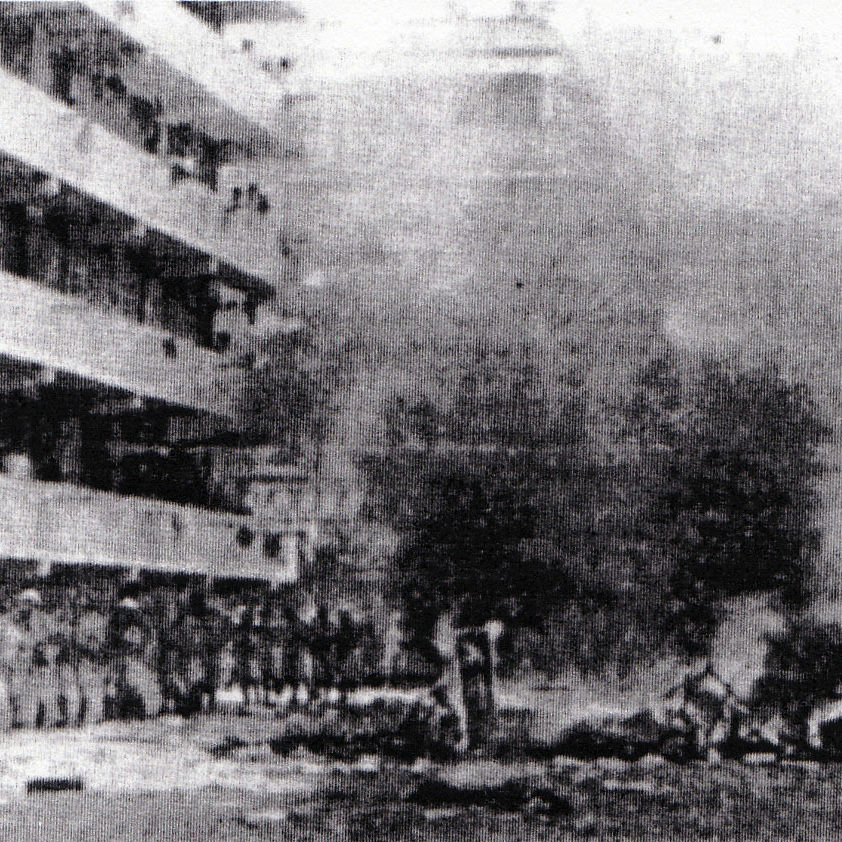
10.10.1956
Double Tenth Riots
Policies and socio-political events
As a result of escalating political tensions in the city, the Double Tenth Riots occurred between 10 and 12 October 1956 in northern Kowloon.
Li, Chu Wai, and 朱維理. “More than a Potential Threat: The PRC’s Intervention During the Double Tenth Incident / 中共在雙十暴動中的介入及對英國治港政策的威脅.” Journal of the Royal Asiatic Society Hong Kong Branch 56 (2016): 9–39.
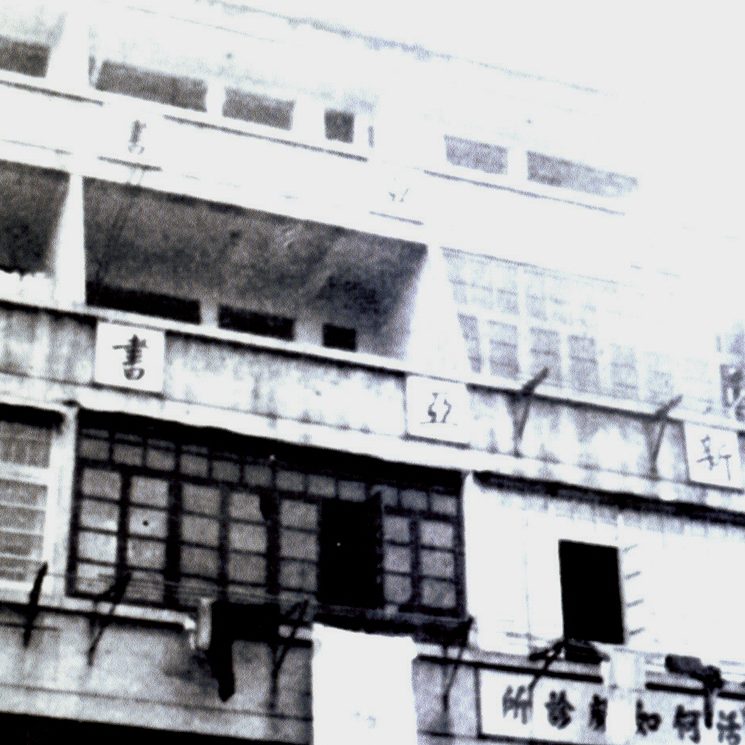
02.1957
New Asia College launches its Fine Arts Specialised Training Programme
Art education
New Asia College chancellor Ch’ien Mu 錢穆, Ding Yanyong 丁衍庸, and Chen Shih Wen 陳士文 launched the two-year Fine Arts Specialised Training Programme on February 1957. The first university-level art training programme in Hong Kong, the programme was structured around art theory, studio art training, and the study of literature, history, and philosophy. Students could choose to focus on either Chinese or Western painting. Professors included Ding, Chen, Zeng Keduan 曾克耑, and CC Wang 王己千. The initial intake was around 20 students. The course became a four-year undergraduate programme in February 1959.
CUHKUPDates. “The Art of Artist Development.” Accessed 31 May 2023.
https://www.iso.cuhk.edu.hk/english/publications/CUHKUPDates/article.aspx?articleid=1910.
朱琦:《 香港美術史》。三聯書店(香港)有限公司,2005年,第130頁。
The Chinese University of Hong Kong Art Museum. “Sincere Brush : Works of Ting Yin-yung Courtesy of His Students and Friends in the Department of Fine Arts, CUHK.” Exhibitions. Accessed 31 May 2023.
http://www.artmuseum.cuhk.edu.hk/en/exhibition/current/detail/38.

21.05.1957
HKU establishes its Department of Extra-Mural Studies
Art education
The University of Hong Kong (HKU) formally instituted its Department of Extra-Mural Studies on 21 May 1957. Among its notable alumni is artist Gaylord Chan 陳餘生. In 1992, the Department was renamed the School of Professional and Continuing Education (HKU SPACE).
HKU SPACE. “Milestones.” About. Accessed 19 November 2023.
https://hkuspace.hku.hk/milestones.
Hong Kong Museum of Art. “In loving memory of the late Mr Gaylord Chan (1925-2020).” Last modified 29 June 2020.
https://hk.art.museum/en/web/ma/news/in-loving-memory-of-the-late-gaylord-chan.html.
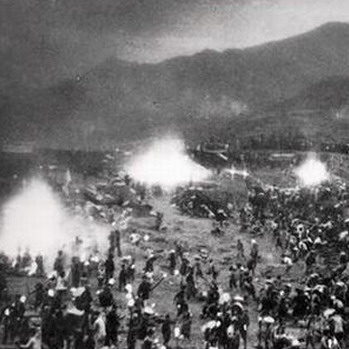
1958
Great Leap Forward (1958–60)
Policies and socio-political events
The Great Leap Forward was a Chinese Communist Party campaign aimed at advancing China’s industrialisation process through increased human labour in large-scale rural communes. Implemented from 1958 to 1960, the campaign disrupted the country’s agricultural output and resulted in the Great Famine (1959–61).
Britannica, T. Editors of Encyclopaedia. “Great Leap Forward.” Encyclopedia Britannica, 26 February 2024. https://www.britannica.com/event/Great-Leap-Forward.

1958
Second wave of mass Chinese migration (1958–76)
Policies and socio-political events
The second wave of post-war mass Chinese migration to Hong Kong took place from 1958 to 1976, in the midst of the Great Leap Forward, Great Famine, and Cultural Revolution in China.
Chen, Laurie, and Yujing Liu. “Explainer: How Hong Kong Has for Decades Been a Migrant Magnet.” South China Morning Post, 23 December 2017.
Skeldon, Ronald. “Emigration from Hong Kong: 1945-1994: The Demographic Lead-up to 1997.” Essay. In Emigration from Hong Kong: Tendencies and Impacts, 54. Hong Kong: The Chinese University Press, 1995.
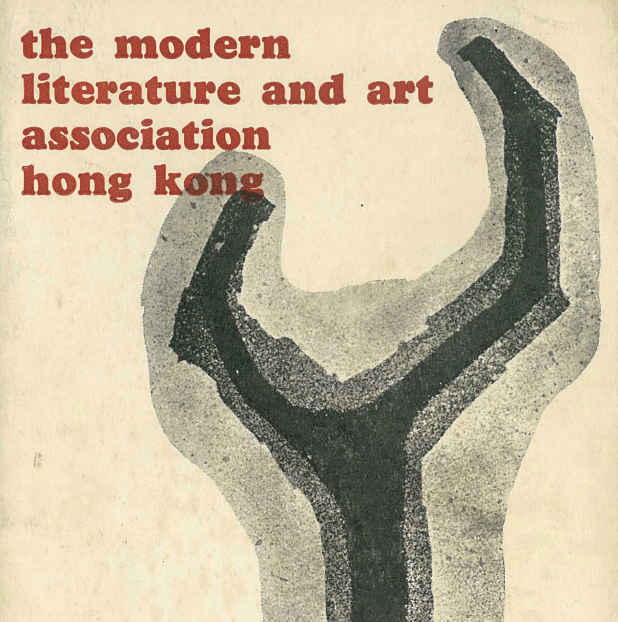
12.1958
The Modern Literature and Art Association is established
Artist and cultural groups
The Modern Literature and Art Association 現代文學美術協會 was established by a group of writers and artists in December 1958. Its founding manifesto laid out its mission to bring together cultural workers and reinvigorate the lapsed cultural development in China. The association organised exhibitions, such as the Hong Kong International Salon of Paintings, and published periodicals, including New Currents (1959–60) and Modern Edition (1963). It has been inactive since 1964.
Members included Eddie Cheung 張樹生, Cheung Yee 張義, Chuang Che 莊喆, Dei Tien 戴天, Hon Chifun 韓志勳, Pat Hui 許雪碧, Binghing Kam 金炳興, King Chia-lun 金嘉倫, Mokit Kei 祁慕潔, Raymond Kong 江從新, Veronica Kong 江靜枝, Kuo Venchi 郭文基, Eunice Lam 林燕妮, David Lam 林鎮輝, Yiukuen Lau 劉耀權, Yingho Lee 李英豪, Liu Guosong 劉國松, Paul Lo 盧因, Lui Shou-kwan 呂壽琨, Pansy Ng 吳璞輝, Pingchuen Ng 吳炳銓, Pan Shichao Gilbert 潘士超, Quanan Shum 岑崑南, James Ting 丁智, Van Lau 文樓, Cheeching Wong 黃志清, Wucius Wong 王無邪, Chiwan Yip 葉子雲, Wailim Yip 葉維廉, and Jackson Yu 尤紹曾.
The Modern Literature and Art Association. Manifesto of The Modern Literature and Art Association Hong Kong. Hong Kong: The Modern Literature and Art Association, 1959.
Man, Eva Kit Wah. Issues of Contemporary Art and Aesthetics in Chinese Context. Berlin: Springer Berlin Heidelberg, 2015. Information about The Modern Literature and Art Association is on page 73.
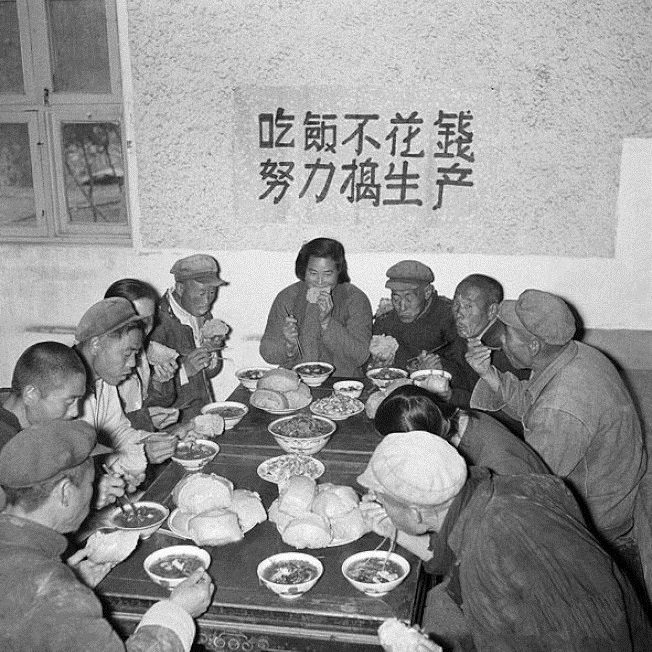
1959
Great Famine (1959–61)
Policies and socio-political events
With China’s agriculture disrupted by the Great Leap Forward industrialisation campaign and further exacerbated by natural calamities, an estimated 16.5 to 45 million people suffered and died of starvation in China between 1959 and 1961.
Meng, Xin, Nancy Qian, and Pierre Yared. “The Institutional Causes of China’s Great Famine, 1959-1961.” The Review of Economic Studies 82, no. 4 (293) (2015): 1568–1611. http://www.jstor.org/stable/43869477.
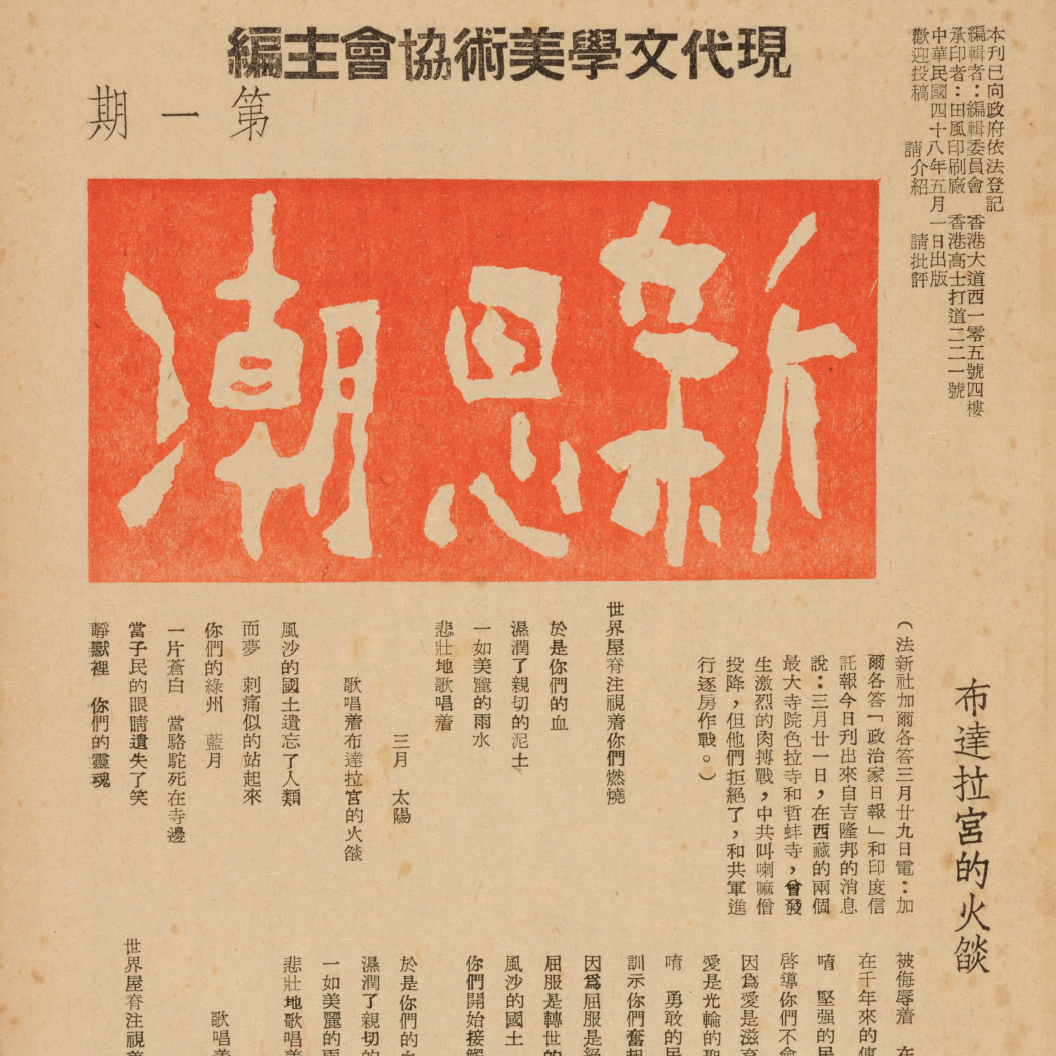
05.1959
New Currents begins publication
Publications
The Modern Literature and Art Association published the Chinese-language journal New Currents 新思潮 from 1959 to 1960.
Wong, Wucius, ed. New Currents (Issue 1). Hong Kong: The Modern Literature and Art Association Hong Kong, 1959.
The issue is also accessible via https://aaa.org.hk/archive/24937.

03.1962
City Hall Museum and Art Gallery opens
Museums
The City Museum and Art Gallery opened on the top three floors of the City Hall’s High Block at Edinburgh Place in Central, Hong Kong Island, in March 1962 as Hong Kong’s first public art museum. It amassed a permanent collection, provided Hong Kong residents with physical access to international art, and gave local artists a space to exhibit their work. In addition to the premises of the City Museum and Art Gallery, the City Hall housed an Exhibition Gallery in its Lower Block, which was available to the public for lease.
Artist Wucius Wong 王無邪 became the assistant curator of the City Museum and Art Gallery in 1966. In 1975, the museum split into the Hong Kong Museum of History and the Hong Kong Museum of Art (HKMoA). The latter of which relocated to Tsim Sha Tsui in 1991 and remains there to this day.
Asia Art Archive. “Hong Kong City Hall / City Museum and Art Gallery.” Ha Bik Chuen Archive. Accessed 31 May 2023.
https://aaa.org.hk/en/archive-collection/13089.
info.gov.hk. “50 stories tell the tale of Hong Kong Museum of Art over the past 50 years (with photos).” Press Releases. Last modified 11 October 2012.
https://www.info.gov.hk/gia/general/201210/11/P201210110304.htm.
HKU Fine Arts and Art History Alumni Association. “HKU Fine Arts in 40 Years.” Accessed 19 May 2023.

03.1962
Hong Kong artists in the First International Exhibition of Fine Arts of Saigon
Festivals and mega-exhibitions
Cheung Yee 張義 and Liu Guosong 劉國松 participated in the First International Exhibition of Fine Arts of Saigon in March 1962. The exhibition’s aim was to “strengthen . . . the friendship of artists of all participating nations in an atmosphere of mutual confidence and respect” and was “open to artists of all ages and of every aesthetic creed.” Entries were chosen through submissions by the participating countries.
International Exhibition of Fine Arts of Saigon. An essay in First International Exhibition of Fine Arts of Saigon, 1962, 167–216. Saigon: International Exhibition of Fine Arts of Saigon, 1962. Catalogue.

11.1962
Chatham Gallery opens
Galleries
Described as Hong Kong’s “first art gallery” by the South China Morning Post on 4 November 1962, Chatham Gallery 雅苑畫廊 opened on Chatham Road in Hung Hom, Kowloon, under the ownership of schoolteacher Dorothy Swan.
McHugh, Fionnuala. “When Hong Kong had no galleries: 1970s art revisited in show.” South China Morning Post, 2 April 2016.
Bailey, Stephanie. “Hong Kong or the history of a global art hub.” Art Basel. Accessed 18 January 2024.
https://www.artbasel.com/news/hong-kong-history-institutions-galleries-artists-art-basel-week?lang=e.
梁, 寶山. ""殖民地的現代藝術(連載)."" 獨立媒體. 5 May 2008.
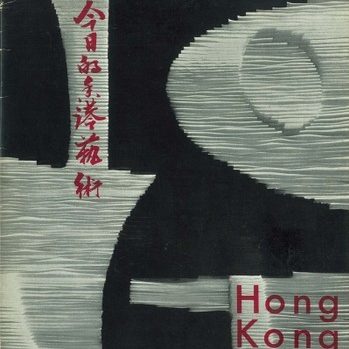
05.1962
“Hong Kong Art Today”
Performances, screenings, exhibitions
“Hong Kong Art Today” was the first major exhibition of the City Hall Museum and Art Gallery after its opening in March 1962. Organised by John Warner, the exhibition opened on 25 May and featured 120 works by 65 artists chosen via invitation and open call. It was the first show dedicated specifically to Hong Kong art, which aligns with the new museum’s mission to acknowledge the city’s artistic landscape as its own entity instead of as a subsection of Chinese or British art.
According to Warner, the artwork selection process showed “a preference for material quality, intelligent experiment and originality rather than outworn cliche, dull technical skill and cheap imitation.” However, while the exhibition produced great interest in the local scene, its selection of works was met with controversy as works by many veteran Hong Kong artists, including Luis Chan, were not accepted.
Hong Kong Art Today. Hong Kong: 1962. Catalogue accessible onsite at Asia Art Archive: https://aaa.org.hk/archive/180995.
Wikipedia. “Hong Kong Art Today.” Accessed 31 May 2023.

1963
Goethe-Institut opens
Diplomatic organisations
In 1963, Goethe-Institut opened at 1 Duddell Street in Central, Hong Kong Island, to foster cultural exchange between Hong Kong and Germany by providing language courses and cultural events. The nonprofit exhibits both German and local artists. It is one of the earliest organisations promoting new media such as video and installation art in Hong Kong.
In 1969, Goethe-Institut relocated to 141 Des Voeux Road in Central before moving to the Hong Kong Arts Centre (HKAC) in Wan Chai. The Goethe Gallery is located on the 14th floor of HKAC and presents eight to ten exhibitions with local and German practitioners every year. In celebration of its 50th anniversary in 2013, the Institut opened a black box space at Goethe-Gallery to cater specifically to sound and new media artworks.
50 Years Goethe-Institut Hong Kong. Hong Kong: Goethe Institut Hong Kong, 2013.

1963
Sally Jackson Art Gallery opens
Galleries
Founded by artist Jackson Yu, Sally Jackson Art Gallery 三集畫廊 opened in the 1963 as one of the first art galleries in Hong Kong.
Lai, Minghoi Victor, and Chipang LAU, eds. In Conversation with Hong Kong Art 1960–1979. Hong Kong: Joint Publishing (Hong Kong) Company Limited, 2014.
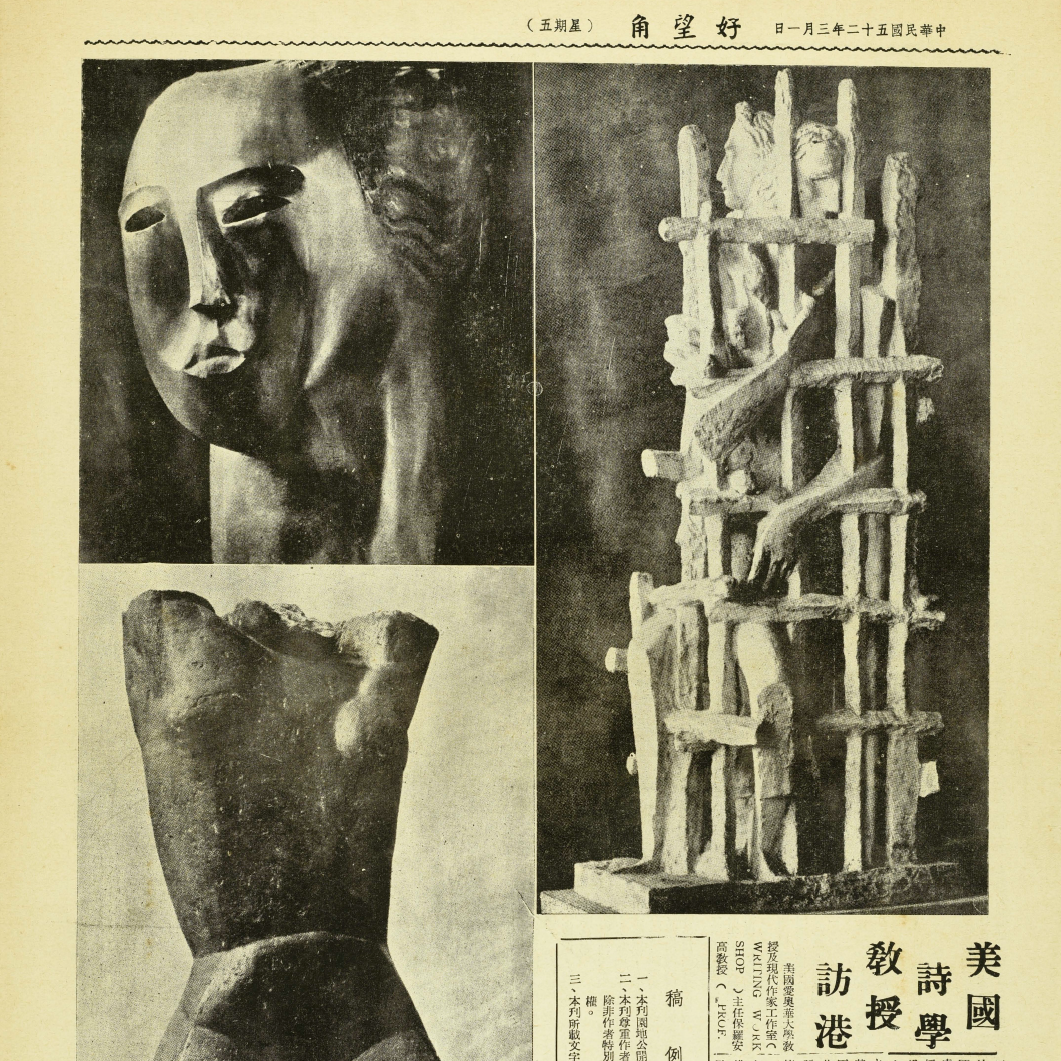
03.1963
Modern Edition is published
Publications
Modern Edition 好望角 is a 13-issue periodical on art published by The Modern Literature and Art Association 現代文學美術協會 in 1963.
The Modern Literature and Art Association was established by a group of writers and artists in December 1958. Its founding manifesto laid out its mission to bring together cultural workers and reinvigorate the lapsed cultural development in China.
Modern Edition (Issue 1, March 1963). Hong Kong: Modern Edition, 1 March 1963. Periodical accessible onsite at Asia Art Archive: https://aaa.org.hk/archive/208341.

04.1963
“Hong Kong 1850–1910”
Performances, screenings, exhibitions
“Hong Kong 1850–1910” was a photography exhibition held at the City Hall Museum in April to June 1963. The show seeks to present a “pictorially unbiased record” of everyday life in Hong Kong during the early decades of the British colonial period. The photos on display, pulled from government and private sources, are categorised into 10 groups: Kowloon and Kowloon City; old Hong Kong buildings; Hong Kong street scenes; panoramas of Hong Kong and Kowloon; views of the Victoria Harbour and the waterfront; sport; typhoon damage; Chinese buildings and festivals; prominent people and groups of people.
Hong Kong 1850–1910. Hong Kong: City Museum and Art Gallery, 1963. The exhibition leaflet is available online at Asia Art Archive: https://aaa.org.hk/archive/206895.
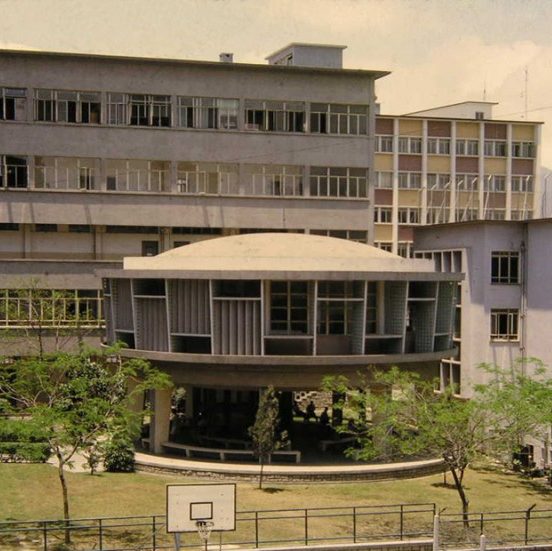
10.1963
CUHK opens with New Asia College’s Department of Fine Arts
Art education
The Chinese University of Hong Kong (CUHK) opened with the New Asia College as one of its constituent colleges in 1963. New Asia College’s Department of Fine Arts was the first to offer a tertiary-level fine arts programme in Hong Kong. The programme is still offered today and consists of studio art practice and art history.
Artist Liu Kuo-Sung 劉國松 was the department’s chair from 1972 to 1976. In 1973, the department relocated to the university’s main campus in Sha Tin, New Territories. A year later, it developed a new programme combining art history and studio practice.
The Department of Fine Arts launched its MPhil in History of Chinese Art in 1981; Ph.D. in History of Chinese Art in 1992; MA in Fine Arts in 1993; and MA in Cultural Management in 2001. It has trained multiple generations of Hong Kong artists, including Ho Siu-kee 何兆基, Anthony Leung Po-Shan 梁寶山, and Phoebe Man 文晶瑩.
Liu Kuo-sung. “Timeline.” About. Accessed 19 November 2023.
https://www.liukuosung.org/timeline.php?lang=en.
New Asia College, The Chinese University of Hong Kong. “History.” About New Asia. Accessed 19 November 2023.
https://www.na.cuhk.edu.hk/about-new-asia/history/.
Department of Fine Arts, The Chinese University of Hong Kong. “History.” About Us. Accessed 19 November 2023.
https://www.arts.cuhk.edu.hk/~fadept/about-us/history/.
Wikipedia. “Department of Fine Arts, Chinese University of Hong Kong.” Accessed 19 November 2023.
https://en.wikipedia.org/wiki/Department_of_Fine_Arts,_Chinese_University_of_Hong_Kong.

1964
“An Exhibition of Contemporary Chinese Painting”
Performances, screenings, exhibitions
Liu Kuo-sung 劉國松 participated in “An Exhibition of Contemporary Chinese Painting,” which was shown in 14 countries in Africa.
“現代水墨 - 劉國松.” Ministry of Culture, the Government of Taiwan. Accessed 28 November 2023.
In particular, it is stated in the chronology on page 157 that: “At the age of 33, he participated in an exhibition titled 當代中國繪畫展 (literal translation: Contemporary Chinese Paintings Exhibition) in 1964, which toured to 14 countries in Africa.”
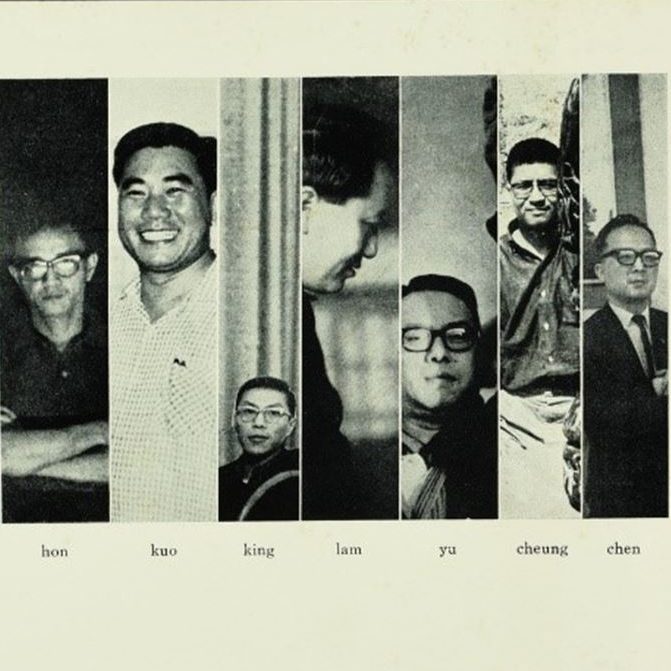
1964
Circle Art Group established (1964–73)
Artist and cultural groups
The Circle Art Group, often considered as Hong Kong’s “avant-garde,” was founded in 1964 and remained active for a decade. It was formed as an ensemble of 11 Hong Kong-based artists—all male— who worked in painting, printmaking, and sculpture. The Circle Art Group held over 40 shows in and outside of Hong Kong, including annual group exhibitions at the City Hall Museum and Art Gallery and overseas shows with the Luz Gallery in Manila between 1966 and 1967. They also participated as individuals in the Hong Kong Pavilion at the 1970 Osaka Expo.
Members included Hon Chi Fun 韓志勳, Wucius Wong 王無邪, Cheung Yee 張義, Van Lau 文樓, King Chia-lun 金嘉倫, David Lam Chun Fai 林鎮輝, Jackson Yu 尤紹曾, Paul Chui Yung Sang 徐榕生, Gilbert Pan Sze Chiu 潘士超, Kuo Ven Chi 郭文基, and Chen Ping Yuon 陳炳元.
Hong Kong Museum Journal. Volume 1. Hong Kong: Leisure and Cultural Services Department, 2017.
Wong, Michelle. “In Focus: Circle Art Group.” Ocula, 23 March 2018.
https://ocula.com/magazine/features/in-focus-circle-art-group/.

1964
Hong Kong Technical College launches certificate courses on design
Art education
The Hong Kong Technical College, the predecessor of the Hong Kong Polytechnic University, began offering part-time evening certificate courses on design in 1964. In 1972, the college became Hong Kong Polytechnic and the Department of Design was formally established to offer higher diploma and higher certificate programmes in design.
School of Design, Hong Kong Polytechnic University. “Our History.” Accessed 28 November 2023.
https://www.polyu.edu.hk/sd/school/our-history/.
Hong Kong Polytechnic University. “History.” Accessed 28 November 2023.
https://www.polyu.edu.hk/en/about-polyu/history/.
University Fellowships, Hong Kong Polytechnic University. “Professor Wucius Wong, BBS.” The Fellows. Accessed 28 November 2023.
https://www.polyu.edu.hk/universityfellowships/fellows_detail.php?lang=en&id=104.
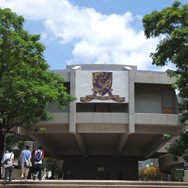
1965
CUHK launches its Department of Extra-Mural Studies
Art education
The Chinese University of Hong Kong’s (CUHK) Department of Extra-Mural Studies was established in 1965, with Wucius Wong 王無邪 as its inaugural faculty member. Wong developed the Certificate Course in Applied Design which was launched in 1966. Three years later, the City Hall Museum and Art Gallery hosted an exhibition of Hong Kong design students titled “Design: The Beginnings” in 1969.
In 1967, King Chia-Lun 金嘉倫 joined the department and later became its Staff Tutor in charge of art courses in 1972. Ding Yanyong 丁衍庸 taught Chinese painting at the department from 1973 to 1978. The Department of Extra-Mural Studies was renamed the School of Continuing and Professional Studies in January 2006.
The Hong Kong Polytechnic University. “2016 University Fellow Professor Wucius Wong.” Accessed 19 November 2023.
https://www.polyu.edu.hk/universityfellowships/fellows_detail.php?lang=en&id=104.
Hong Kong Museum of Art. “Design: The Beginnings (Poster).” Exhibitions, Resources. Accessed May 31 2023.
https://hk.art.museum/en/web/ma/resources/hong-kong-art-research-portal/exhibitions/1962-1973.html.
Kao, Mayching. “Biography of Ding Yanyong.” Hong Kong Museum of Art. Accessed 19 November 2023. https://hk.art.museum/Archive/resources/DYY_biography_eng.pdf.
King, Chia-lun. Born of Fire, 7. Hong Kong: Hong Kong Xinhua Book City Publishing Co Ltd.
School of Continuing and Professional Studies, Chinese University of Hong Kong. Accessed 31 May 2023.
https://www.scs.cuhk.edu.hk/en.
The Hong Kong Polytechnic University. “University Fellowships.” Accessed 31 May 2023.
https://www.polyu.edu.hk/universityfellowships/.

1966
Cultural Revolution (1966–76)
Policies and socio-political events
The Cultural Revolution took place in China from 1966 to 1976.
Lieberthal, K. G.. “Cultural Revolution.” Encyclopedia Britannica, 1 March 2024.
https://www.britannica.com/event/Cultural-Revolution.

04.1966
Star Ferry Riots
Policies and socio-political events
On 4 April 1966, So Sau Chung 蘇守忠 started a hunger strike in protest of the proposed increase in ferry fares by the British colonial government. The Star Ferry Riots 天星小輪加價暴動 ensued on the nights of 6 and 7 April following So’s arrest for “causing an obstruction.”
Scott, Ian. “Bridging the Gap: Hong Kong Senior Civil Servants and the 1966 Riots.” The Journal of Imperial and Commonwealth History 45, no. 1 (2016): 131–48. https://doi.org/10.1080/03086534.2016.1227030.
Hollingsworth, Julia. “Flashback: Hunger Striker Who Sparked 1966 Star Ferry Riots.” South China Morning Post, 20 October 2017.

05.1967
Leftist Riots (1967–68)
Policies and socio-political events
In May 1967, simultaneous to the Chinese Cultural Revolution (1966–76), labour disputes at the Hong Kong Artificial Flower Works evolved into large-scale leftist riots against the colonial government, resulting in 51 fatalities. This subsequently led to the colonial government’s closure of schools and publications that were sympathetic and supportive of the Chinese Communist Party.
Cheung, Gary Ka-wai. “Introduction: The 1967 Riots: A Watershed in the Postwar History of Hong Kong.” In Hong Kong’s Watershed the 1967 Riots, 1–8. Hong Kong: Hong Kong University Press, 2009.

1968
In Tao Art Association established
Artist and cultural groups
In Tao Art Association 元道畫會 was established by students of Lui Shou-kwan 呂壽琨, who spearheaded the New Ink Art movement in Hong Kong. Lui advocated for the combination of traditional Chinese ink art with Euro-American modern art, in particular abstract expressionism. “The First Joint Exhibition of In Tao Art Association” took place at Hong Kong City Hall in November 1968. The Association expanded into One Art Group一畫會 in 1970, with the “One Art Group First Joint Exhibition” held at Hong Kong City Hall in October 1971.
Members included Beatrice Tso 章家慧, Irene Chou 周綠雲, Ho Chungwah 何重華, Lee Weion 李維安, Ng Yiuchung 吳耀忠, Own Tehbay 翁德備, Tam Chishing Laurence 譚志成, Tan Doen 譚曼于, Tang Sekwing 鄧錫榮, and Wong Wangfai 汪弘輝.
Galerie du Monde. “One Art Group – The Pioneers of Ink Art.” Accessed 18 January 2024.
https://galeriedumonde.com/exhibitions/12-one-art-group-the-pioneers-of-ink/overview/.
The First Joint Exhibition of In Tao Art Association — Catalogue. Hong Kong: In Tao Art Association, 1968.
Vigneron, Frank. Art Appreciation and Criticism in Context Series: 4. Understanding Hong Kong Art through Culture. Hong Kong: Government of the Hong Kong Special Administrative Region, 2012.

1969
Orientations begins publication
Publications
Orientations, a bi-monthly magazine printed in Hong Kong, was first published in 1969. Distributed worldwide, its content focuses on Himalayan, Indian, Middle Eastern, and East and Southeast Asian art.
Orientations. Accessed 31 May 2023.

1969
Hon Chi Fun receives the John D. Rockefeller 3rd Foundation Fellowship
Awards, grants, residencies
In 1969, Hon Chi Fun 韓志勳 became the first Hong Kong recipient of a fellowship from the John D. Rockefeller 3rd Award, the predecessor of the Asian Cultural Council. With the fellowship, Hon spent one year in New York.
Asian Cultural Council Hong Kong. “ACC salutes to Hon Chi Fun (1922–2019).” Accessed 31 May 2023.
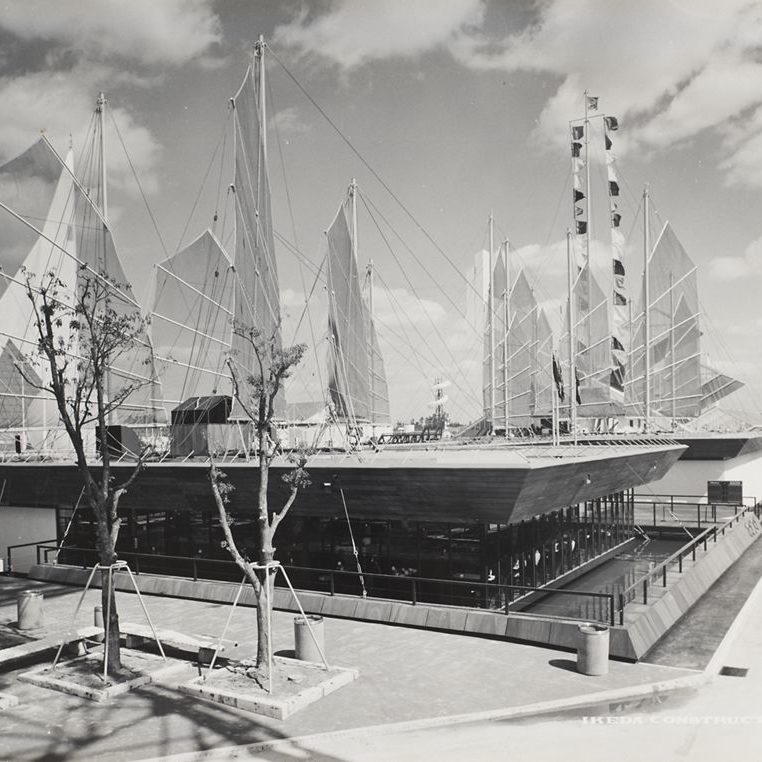
1970
Hong Kong in Expo ’70, Osaka
Festivals and mega-exhibitions
Hong Kong participated in its first world exposition at Expo ’70 in Osaka, the first international exposition held in Asia. Designed by Hong Kong City Hall architect Alan Fitch under the theme “Enjoyment and Enterprise through Harmony,” the Hong Kong Pavilion incorporated 13 orange-red sails and an artificial lake which altogether “give the appearance of a traditional Chinese junk or sampan.” Its interior was divided into three interior sections that showcased the city’s social transformation and robust industrial economy: “Social Progress,” “Industrial Progress,” and “Hong Kong’s Cultural Tourism.”
Works in the Pavilion comprised local crafts, architecture, and artworks “that exemplifies the idea of ‘social progress,’” including those by Kan Taikeung 靳埭強, Van Lau 文樓, and Lui Loping. It also featured Chinese opera and dance performances as well as a Cantonese restaurant.
Press materials advertised the breadth of the Exposition’s participants by adopting the phrase “76 nations and one special administrative zone,” which highlighted Hong Kong’s distinct status and consequently gave it further publicity. The exposition featured more than 100 pavilions and was visited by over 50 million people.
M+. “Archival material, Hong Kong pavilion at Expo ’70 (1968–1970), Osaka, Japan.” Collection Online. Accessed 31 May 2023.
“Hong Kong Pavilion at Osaka Expo Reflects How Industry Improves Lives, Modern Sculpture Is Complete.” Wah Kiu Yat Po. Accessed 31 May 2023 via the Ha Bik Chuen Archive at Asia Art Archive: https://aaa.org.hk/archive/201707.
[Magazine Articles on Hong Kong Pavilion in Osaka Expo 1970]. Accessed 31 May 2023 via the Ha Bik Chuen Archive at Asia Art Archive: https://aaa.org.hk/archive/189625.

1970
First film and video production course in Hong Kong launched
Art education
The Hong Kong Baptist University’s (HKBU) School of Communication was founded in 1968 in Kowloon Tong, Kowloon. In 1970, it launched Hong Kong’s first film and video production course.
Academy of Film, Hong Kong Baptist University. Accessed 31 May 2023.
School of Communication, Hong Kong Baptist University. Accessed 31 May 2023.
https://www.comm.hkbu.edu.hk/comd-www/english/front/index.htm.
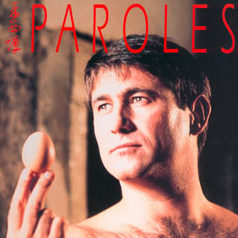
1970
Le Journal de Hong Kong begins publication (1970–82)
Publications
Alliance Française Hong Kong began publishing its art journal, Le Journal de Hong Kong, in 1970. It circulated until it was succeeded by the quarterly French-Chinese magazine Paroles in 1982.
Paroles. Accessed 31 May 2023.

04.1970
First Institute of Arts and Design established
Art education
The First Institute of Arts and Design 大一學院藝術設計中心 was established in 1970. It provided a fine art diploma course that covered drawing, design, painting, printmaking, and three-dimensional media. The institute also hosted numerous exhibitions featuring One Art Group, Jaffa Lam 林嵐, and Belinda Kung Yang.
[Application Form for Fine Art Diploma Course at First Institute of Art and Design]. Hong Kong: First Institute of Art and Design, 1970. Accessed 31 May 2023 via the Ha Bik Chuan Archive at Asia Art Archive: https://aaa.org.hk/archive/189381.

1971
Lion Art Monthly begins publication (1971–96)
Publications
Lion Art Monthly 雄獅美術月刊 was a Taiwanese art journal that was widely circulated in Hong Kong during the time of its publication from 1971 to 1996. The monthly features not only the work of contemporary Taiwanese artists, but also introduces to its readers a wide spectrum of ideas from both the Asian and the Western art worlds. In around 2011, Lion Art launched a digital archive to provide its subscribers with access to the digitalised content of the past issues of Lion Art Monthly. Lion Art also publishes books on Chinese and Western art and culture, as well as offers art classes to members of the public. In August 2023, the group announced the closure of their business citing the challenge of adapting itself to the changing tastes of the readers.
Lion Art Knowledge Archive. “Lion Art Monthly.” Accessed 28 November 2023. http://udp.ksml.edu.tw/lionart/Monthly.aspx?page=1.
“獅吼40:雄獅美術四十週年的回顧與前詹.” Lion Art Knowledge Archive, July 2011. Accessed 28 November 2023.
“雄獅圖書50年走入歷史 創辦人:面對閱讀世代革命 無能對應.” Yahoo! News, 7 August 2023. Accessed 28 November 2023.
https://tw.news.yahoo.com/雄獅圖書50年走入歷史-創辦人:面對閱讀世代革命-無能對應-122657708.html.

1971
CUHK’s Art Museum opens
Museums
CUHK’s Art Museum opened in 1971 on the university’s campus in Ma Liu Shui, New Territories. The university’s vision was to build a museum that would provide a platform for the learning of Chinese civilization through the studying of the country’s artistic legacy and cultural relics.
History, The Chinese University of Hong Kong Art Museum. “About.” Accessed 28 November 2023.
http://www.artmuseum.cuhk.edu.hk/en/about/history/.

1972
Hong Kong Technical College opens Department of Design
Art education
The Department of Design of the Hong Kong Technical College, later the Hong Kong Polytechnic University, was established in 1972. Wucius Wong 王無邪 became a senior lecturer in the department in 1974 and held the position until 1984.
“HKU Fine Arts in 40 Years.” HKU Fine Arts and Art History Alumni Association. Accessed May 31, 2023. https://hkufaaa.hk/.

1972
Nigel Cameron joins South China Morning Post
Publications
Nigel Cameron (1920–2017) joined the South China Morning Post (SCMP) and remained an art critic for the paper until 1994. Cameron moved to Hong Kong in 1962 and was variously employed as a historian, art critic, art dealer, and exhibition organiser. He was the first English-language art critic in Hong Kong. After he joined SCMP, the newspaper began publishing longer articles on arts and culture.
Batten, John. “Obituary: Art Critic Nigel Cameron Championed Hong Kong Artists.” South China Morning Post, 16 February 2017.

01.1973
Hong Kong stock market crashes
Policies and socio-political events
The Hong Kong stock market and stock markets worldwide crashed in January 1973, with the Hang Seng Index plunging from 1,700 points to just 150 points.
SCMP Reporter. “Crash of 1973 worse, says Arculli.” South China Morning Post, 12 October
2008. https://www.scmp.com/article/655972/crash-1973-worse-says-arculli.
Fung, Winnie. “Hong Kong Stocks Sink Anew.” The New York Times, 9 December 1978.

1973
Hong Kong Visual Arts Society established
Artist and cultural groups
The Hong Kong Visual Arts Society (VAS) was established in 1973 by graduates of HKU Space’s Art and Design faculty. VAS seeks to foster local arts development and periodically organises art and art education programmes - such as art fairs and painting forums - in collaboration with schools and other local institutions. The VAS inaugural exhibition was held at Hong Kong City Hall from 2 to 4 October 1974.
Founding members include Gaylord Chan 陳餘生, Frog King 郭孟浩, Eddie Lui 呂豐雅, Tsang Fan Kwong 曾繁光, Danny Lee 李展輝, Eddie Cheung 張德成, Josephine Chow 周淑芬, Stephen Yau 游榮光, Samuel O 柯韶衛, and Li Ki Kwok 李其國.
Hong Kong Visual Arts Society. Accessed 31 May 2023. https://www.hkvas.com/.
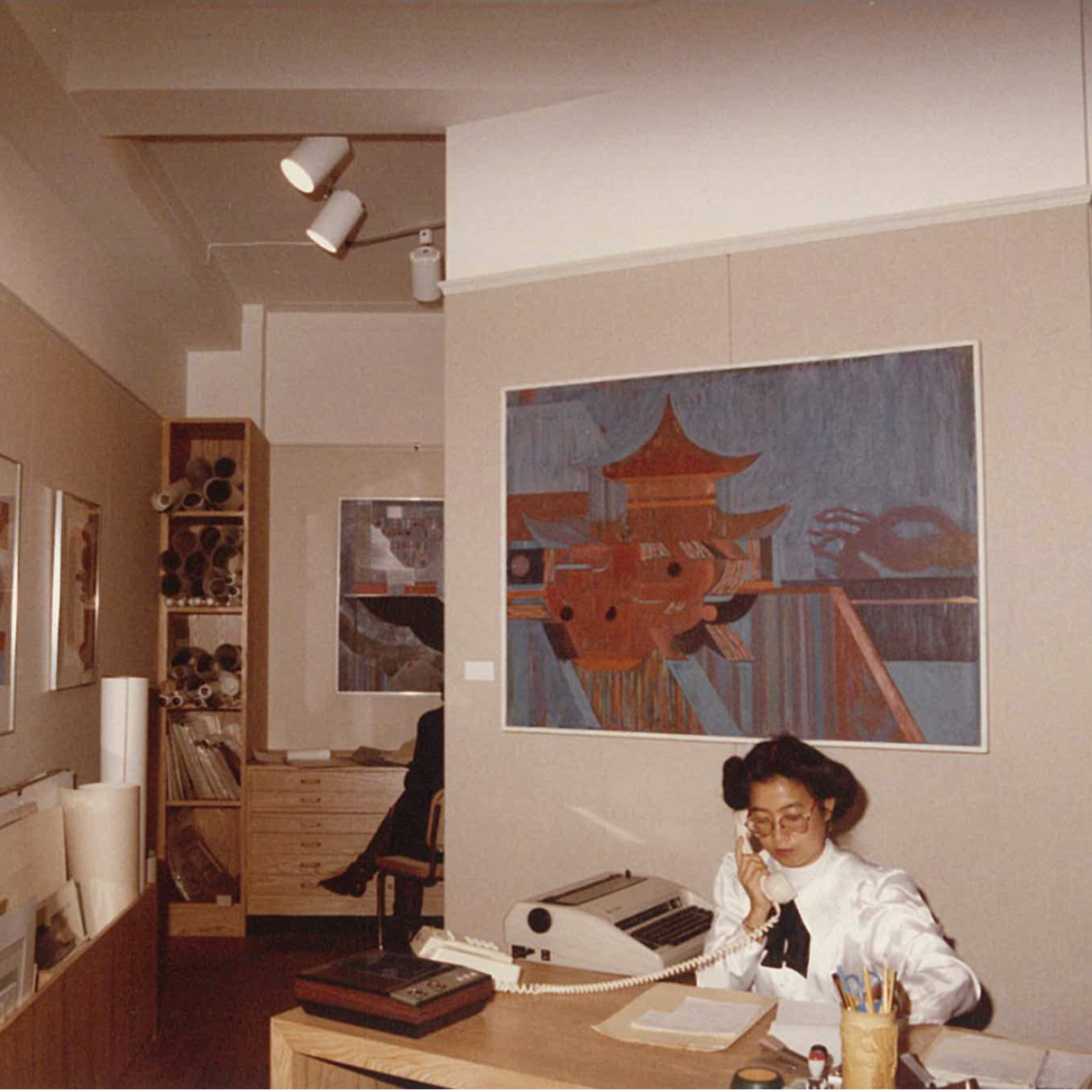
1973
Arts Promotion Office established (1973–84)
Galleries
Arts Promotion Office was a commercial art gallery established by Sandra Walters and Josette Bertrou in 1973. The gallery was incorporated into Alisan Fine Arts gallery in 1984.
Tsui, Enid. “Sandra Walters, pioneering art dealer and agent in Hong Kong who inspired the city’s art scene.” South China Morning Post, 3 February 2021.
Wong, Michelle, ed. “Interview: Sandra Walters — Transcript (English).” Asia Art Archive and Hong Kong Museum of Art, 2013. Accessed 31 May 2023. https://aaa.org.hk/archive/21166.

1974
Touch-Base Policy (1974–80)
Policies and socio-political events
The British colonial government implemented the “touch-base” or “reach-base” policy from 1974 to 1980. Under the policy, immigrants from mainland China were allowed to remain in Hong Kong if they were able to reach urban areas.
Skeldon, Ronald. “Emigration from Hong Kong: 1945-1994: The Demographic Lead-up to 1997.” In Emigration from Hong Kong: Tendencies and Impacts, 54. Hong Kong: The Chinese University Press, 1995.
Laurie Chen and Yujing Liu. “Explainer: how Hong Kong has for decades been a magnet for refugees and migrants.” South China Morning Post, 23 December 2017.

1974
Visual Arts becomes a HKCEE subject
Art education
In 1974, the Hong Kong Examinations and Assessment Authority introduced the Hong Kong Certificate of Education Examination (HKCEE) curriculum, which culminates in a standardised examination taken after the end of students’ five-year secondary school education. Visual Arts was one of the subjects included in the curriculum. HKCEE was replaced by the Hong Kong Diploma of Secondary Education (DSE) in 2012.
Hong Kong Examinations and Assessments Authority. Accessed 31 May 2023.

1974
Phoenix Cine Club established
Artist and cultural groups
Phoenix Cine Club 火鳥電影會 was a private film club ran/organised by artist May Fung 馮美華 that rented rooms in the Chun Wah School in Yau Ma Tei, Kowloon, on weekend nights to show 16 mm films. “The apparatus was a 16 mm projector and a makeshift screen. The seats were the tables and chairs of the Kindergarten.”
In 1985, artist Ellen Pau 鮑藹倫 joined the club. One year later, they launched the Alternative Film & Video Festival. That same year, Pau, Fung, Wong Chi Fai 黃志輝, and Comyn Mo 毛文羽 formed Videotage, the earliest organisation in Hong Kong to focus on video art and new media.
[Search: Phoenix Cine Club 火鳥電影會 at Asia Art Archive].
Lee, Christie. “In Hong Kong, What is Home? Ellen Pau Tackles the Question In Her 30-Year Retrospective.” Zolima City Mag, 1 January 2019.
Asia Art Archive. “Phoenix Cine Club 火鳥電影會.” Ellen Pau Archive. Accessed 31 May 2023. https://aaa.org.hk/en/collections/search/archive/ellen-pau-archive--phoenix-cine-club/sort/title-asc.
Lo, Raymond. “Phoenix Film Club.” Cinema Treasures. Accessed 31 May 2023. http://cinematreasures.org/theaters/30506.

c.1975
Quorum Galleries opens
Galleries
Quorum Galleries 閣林畫廊 opened at 11 Wyndham Street in Central, Hong Kong in 1975 to showcase the works of contemporary Hong Kong artists. The director of the gallery was Kim Schmidt.
[Search: “Quorum Galleries” at Asia Art Archive.]
McHugh, Fionnuala. “When Hong Kong had no galleries: 1970s art revisited in show.” South China Morning Post, 2 April 2016.
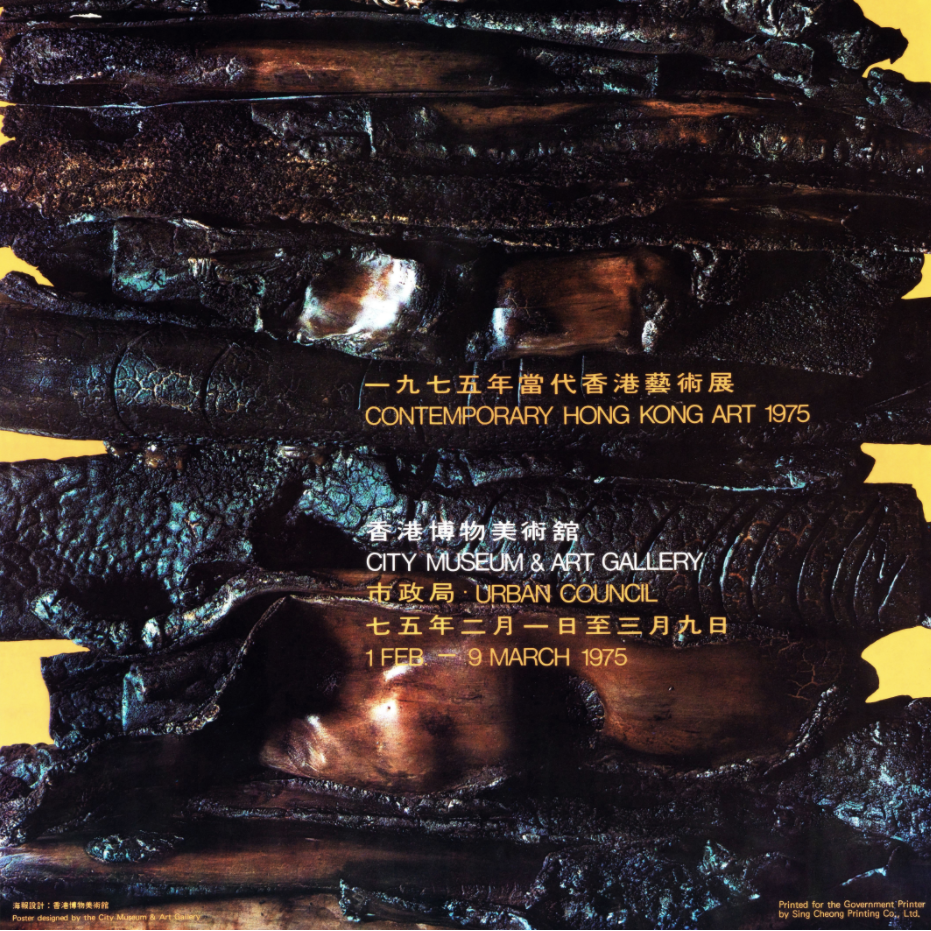
1975
First Contemporary Hong Kong Art Biennial Exhibition
Performances, screenings, exhibitions
Organised by the Hong Kong Museum of Art (HKMoA), the first edition of the Contemporary Hong Kong Art Biennial Exhibition took place in February 1975. It was an open competition with a resulting exhibition. The exhibition aimed to provide a survey of the development of the Hong Kong art scene and to promote local artists to the general public.
The Contemporary Hong Kong Art Biennial Exhibition was renamed Hong Kong Art Biennial Exhibition in 2001, before changing its name again to the Hong Kong Contemporary Art Biennial Awards in 2009 to further distinguish itself from other international biennial and triennial exhibitions.
Hong Kong Museum of Art. “Exhibitions & Events.” Accessed 31 May 2023.
https://hk.art.museum/en/web/ma/exhibitions-and-events.html.
Art in Asia. “The Hong Kong Contemporary Art Biennial Awards.” Accessed 31 May 2023.
http://www.artinasia.com/artSceneDetail.php?catID=0&filSM=VIDE&artSceneID=49.
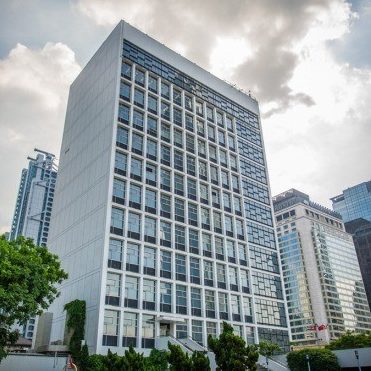
1975
City Museum splits into the Hong Kong Museum of History and the Hong Kong Museum of Art
Museums
City Museum and Art Gallery split into the Hong Kong Museum of History and the Hong Kong Museum of Art (HKMoA) in July 1975. While HKMoA remained in City Hall, the Hong Kong Museum of History moved to Star House in Tsim Sha Tsui, Kowloon.
In 1991, HKMoA relocated from the top floor of City Hall’s High Block on Hong Kong Island to its own premises at 10 Salisbury Road in Tsim Sha Tsui. Later in 1998, the Hong Kong Museum of History relocated to 100 Chatham Road South in Tsim Sha Tsui.
info.gov.hk. “50 stories tell the tale of Hong Kong Museum of Art over the past 50 years (with photos).” Press Releases. Last modified 11 October 2012.
https://www.info.gov.hk/gia/general/201210/11/P201210110304.htm.
Hong Kong Museum of History. Accessed 31 May 2023.
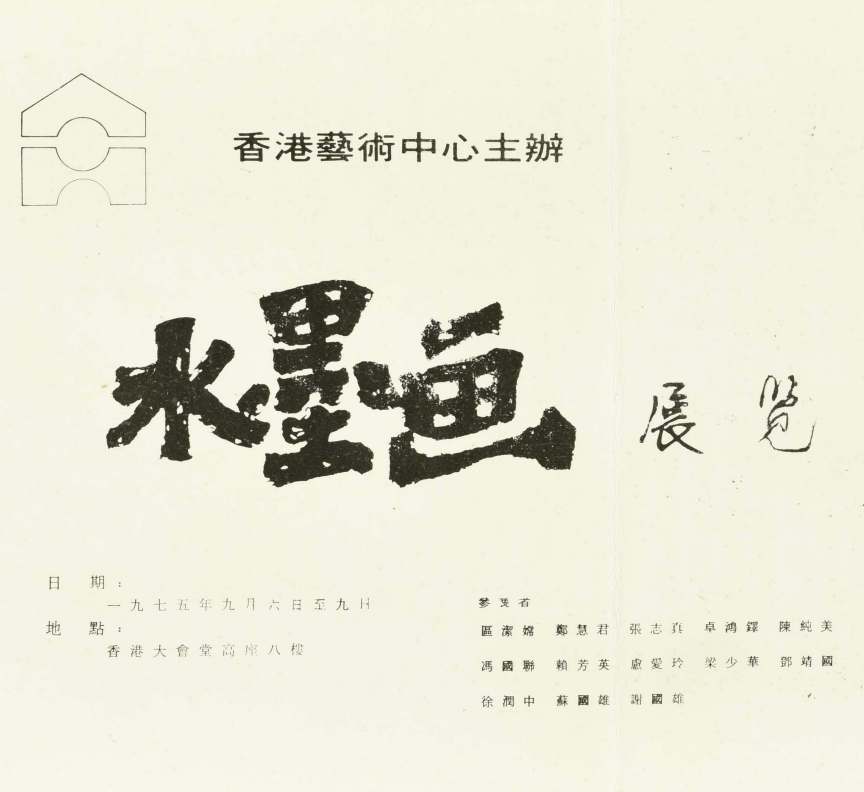
1975
First Modern Chinese Ink Painting Exhibition
Performances, screenings, exhibitions
The first batch of graduates from CUHK’s Modern Ink Painting Diploma course taught by Liu Guosong 劉國松 co-organised the “First Modern Chinese Ink Painting Exhibition 現代水墨畫展” with the Hong Kong Arts Centre (HKAC) at Hong Kong City Hall in 1975.
Participating artists included Au Kit-seung 區潔嫦, Cheung Wai-kwun 鄭慧君, Cheung Chi-chun 張志真, Cheuk Hung-dock 卓鴻鐸, Chan Shun-mei 陳純美, Fung Kwok-leun 馮國聯, Lai Fong-ying 賴芳英, Lo Oi-ling 盧愛玲, Leung Shiu-hua 梁少華, Tang Ching-kwok 鄧靖國, Tsui Yun-chung 徐潤中, So Kwok-hung 蘇國雄, and Tse Kwok-hung 謝國雄.
Hong Kong Modern Ink Painting Society. Accessed 31 May 2023.
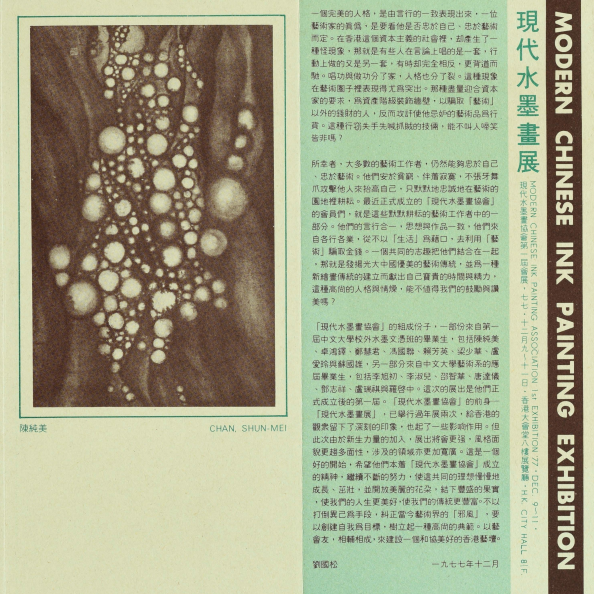
12.1977
The Modern Chinese Ink Painting Association established
Artist and cultural groups
The Modern Chinese Ink Painting Association was established by graduates of CUHK’s Modern Ink Painting Diploma course taught by Liu Kuo-sung 劉國松, after two editions of the Modern Chinese Ink Painting Exhibition in 1975 and 1976. Liu promoted the modernisation of ink art by expanding the visual language of traditional Chinese ink painting and integrating it with Euro-American modern art.
The Modern Chinese Ink Painting Association’s first exhibition was held at Hong Kong City Hall in December 1977. In 1989, the association was renamed the Hong Kong Modern Chinese Ink Painting Association 香港現代水墨畫協會.
Participating artists included Chan Shun-mei 陳純美, Cheung Wai-kwun 鄭慧君, Cheuk Hung-tuo 卓鴻鐸, Fung Kwok-leun 馮國聯, Lai Fong-ying 賴芳英, Law Kai-chung羅啓中, Lee Yuk-chor 李旭初, Leung Siu-wah 梁少華, Li Suk-yee 李淑兒, Lo Oi-ling 盧愛玲, Lo Sui-ki 盧瑞祺, Siu Chi-wah 邵智華, So Kwok-hung 蘇國雄, Tang Chi-cheung 鄧志强, and Tong Tat-yee 唐達儀.
Hong Kong Modern Ink Painting Society. Accessed 31 May 2023.

1977
Hong Kong Arts Centre opens
Non-collecting institutions
The Hong Kong Arts Centre (HKAC) is a nonprofit arts organisation established by Tao Ho 何弢, Bill Bailey, and Lo King-man 盧景文, which opened its building at 2 Harbour Road in Wan Chai, Hong Kong Island, in 1977. Comprised of galleries, auditoriums, a concert hall, a theatre, and rehearsal rooms, HKAC has hosted exhibitions for both international and local artists, rented out spaces to local art groups, promoted new media, and facilitated arts education in Hong Kong.
Tao, Bailey, and Lo announced the establishment of HKAC in 1971. A year later, then Governor of Hong Kong Murray MacLehose granted 10,000 square feet of land to the nonprofit. Unable to acquire government funding, HKAC began the construction of its building after rigorous fundraising in 1975. Its inaugural exhibition, “Exhibition of Graphics by Contemporary Masters,” however, was held earlier in 1972 at a venue lent by the Bank of America.
HKAC has spearheaded new media art in the city. HKAC organised Hong Kong’s first video art exhibition in 1983 and its first installation art exhibition in 1985. Ten years later in 1995, HKAC launched the annual Hong Kong Independent Short Film and Video Awards (ifva), which celebrates short film, animation, and media arts. In 2005, it established Public Art Hong Kong, the first organization dedicated to the promotion of public art in the city, and, in July 2013, inaugurated Comix Home Base, the first arts venue in Hong Kong dedicated to comics and animation, at 7 Mallory Street in Wan Chai.
The nonprofit also launched art-education initiatives, including the Part-time Fine Art Programme partnership with the Royal Melbourne Institute of Technology and Melbourne Technical (RMIT) University in 1998. In January 2000, HKAC established its Education Department as a separate organisation, the Hong Kong Art School (HKAS).
Hong Kong Arts Centre. Accessed 31 May 2023. https://hkac.org.hk/.

1977
First Hong Kong International Film Festival
Festivals and mega-exhibitions
One of Asia’s oldest film festivals, the first Hong Kong International Film Festival (HKIFF) took place in the summer of 1977 with a focus on world cinema. It was opened by Italian director Roberto Rossellini’s biographical film Italy: Year One (Anno uno) (1974) and closed by the 1971 Taiwanese wuxia film A Touch of Zen 俠女 by director King Hu 胡金銓.
In its second year, in 1978, HKIFF presented a cinema retrospective on Cantonese films of the 1950s and began publishing its Chinese and English bilingual catalogues.
The HKIFF was organised by the Hong Kong Urban Council from 1977 to 1999, before it was turned over to various government departments such as the Leisure and Cultural Services Department and the Hong Kong Arts Development Council between 2000 and 2004. The Hong Kong International Film Festival Society Ltd. was officially established as an independent nonprofit organization that would manage the HKIFF in 2004.
Hong Kong International Film Festival. Accessed 31 May 2023. https://www.hkiff.org.hk/.
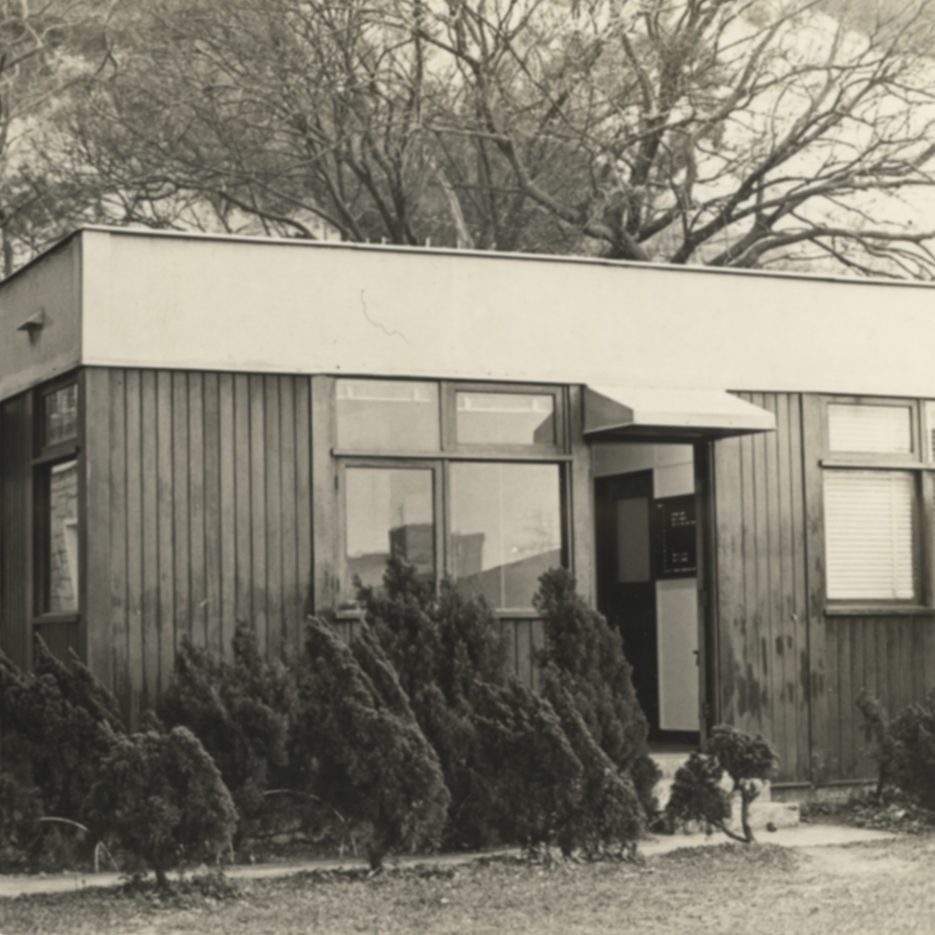
1978
HKU establishes its Department of Fine Arts
Art education
The University of Hong Kong (HKU) established its Department of Fine Arts in 1978 under the leadership of professor Chuang Shen. It was housed in the Fung Ping Shan Building next to the Fung Ping Shan Museum with 11 students enrolled in its inaugural programme in Chinese art. In 1979, its first Western art history programme was introduced and led by Carolyn Muir.
The department relocated to HKU’s Main Building in 1983 and, ultimately, to the university’s Centennial Campus in 2012. In 2020, the department was officially renamed the Department of Art History.
Department of Art History, University of Hong Kong. “Fine Arts at 40.” Timeline. Accessed 31 May 2023.
https://arthistory.hku.hk/artat40/index.php/timeline/.
HKU Fine Arts and Art History Alumni Association. “HKU Fine Arts in 40 Years.” Accessed 31 May 2023.

1978
Bull Jun Arts Association of Hong Kong established
Artist and cultural groups
Bull Jun Arts Association of Hong Kong 牛君畫會 was established by Ding Yanyong’s 丁衍庸 students in commemoration of Ding in 1978.
“牛君畫會「衍藝呈新」” HKTKWW, 26 August 2015.
https://www.tkww.hk/epaper/view/newsDetail/1363746104746840064.html.
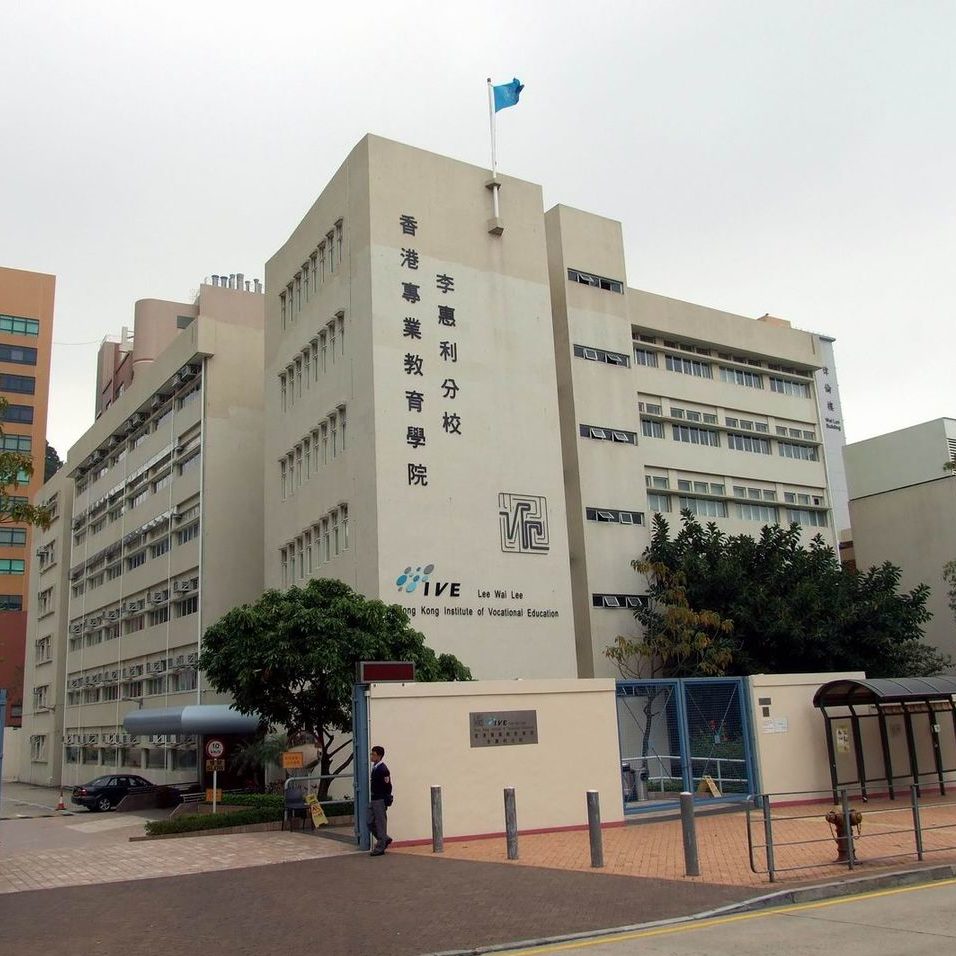
1979
Lee Wai Lee Technical Institute opens
Art education
The Lee Wai Lee Technical Institute opened in Kowloon Tong, Kowloon, in 1979, funded by a donation from industrialist Lee Wai Lee. It included a two-year Design Certificate programme. In 1999, the Lee Wai Lee Technical Institute merged with eight other technical institutes, including two colleges, to form the Hong Kong Institute of Vocational Education (IVE). IVE relocated to a combined campus with the Hong Kong Design Institute (HKDI) in Tiu Keng Leng, Tseung Kwan O New Town, New Territories in 2010.
Hong Kong Design Institute. Accessed 31 May 2023.
IVE. Accessed 31 May 2023.
https://www.ive.edu.hk/ivesite/html/en/index.html.
VTC. “Lee Wai Lee Technical Institute.” Accessed 19 November 2023.
https://vpet.vtc.edu.hk/wiki/index.php?title=Lee_Wai_Lee_Technical_Institute.

1980
Hong Kong Chingying Institute of Visual Arts established
Art education
Hong Kong Chingying Institute of Visual Arts 香港正形設計學校 was a private art school established in 1980. It offered courses in graphic design, fashion design, and photography, among others. It organized exhibitions, including “Crossings in New York: Works by Four Expatriate Chinese Artists” for which it also published a catalogue.
In 1989, sculptor Van Lau 文樓 was the chairman of the school’s board of directors. As of 1995, artists Wucius Wong 王無邪, Kan Tai-Keung 靳埭強, Hon Bing-Wah 韓秉華, Leung Kui-Ting 梁巨廷, and So Man-Yee 蘇敏儀 were part of the board.
The Institute had locations at Thomson Road, Wan Chai, and Hennessy Road, Causeway Bay, Hong Kong Island. It closed in 2010.
“Ching Ying Exhibition of Instructors,” 1995. Accessed 31 May 2023 via Asia Art Archive: https://aaa.org.hk/archive/45725.
Wikipedia. “Hong Kong Chingying Institute of Visual Arts.” Last modified 4 November 2023.
https://zh.wikipedia.org/zh-hk/.
[Hong Kong Chingying Institute of Visual Arts Graduation Show 1989 — Invitation]. The Hong Kong Chingying Institute of Visual Arts, 1989. Accessed 31 May 2023 via the Ha Bik Chuen Archive at Asia Art Archive: https://aaa.org.hk/archive/253669.
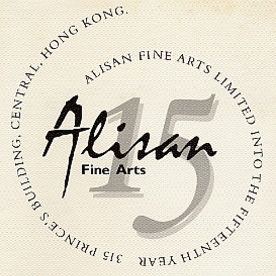
1981
Alisan Fine Arts Gallery opens
Galleries
Alisan Fine Arts was founded in 1981 by Alice King, sister of former Hong Kong Chief Executive Tung Chee-hwa, and American art dealer Sandra Walters. It was among the first commercial art galleries that opened in the city and aimed at advancing the representation of Hong Kong and Chinese contemporary art in Asia and overseas.
Its 1987 exhibition “A State of Transition: Contemporary Paintings from Shanghai” was one of the first to showcase Mainland Chinese artists in Hong Kong, while its 1993 exhibition of Zao Wou-ki 趙無極 was the artist’s first commercial exhibition in the city.
Alisan Fine Arts has organised more than 100 shows in the past four decades. Its premises have expanded from Central to Aberdeen.
Asia Tatler. “Alice King on Up and Coming Chinese Art Forms.” Tatler Asia, 17 Jun 2011.
https://www.tatlerasia.com/the-scene/people-parties/alice-king-on-up-and-coming-chinese-art-forms.
Greenberger, Alex. “Sandra Walters, Trailblazing Art Dealer and Consultant in Hong Kong, has Died at 76.” ARTnews, 3 February 2021.
https://www.artnews.com/art-news/news/sandra-walters-hong-kong-dealer-dead-1234582827/.

01.1982
Paroles begins publication
Publications
Paroles is a quarterly French-Chinese bilingual art magazine published by Alliance Française Hong Kong. It succeeded Le Journal de Hong Kong (1970–82) and includes articles on French culture, local events, and the Hong Kong art scene.
Paroles. Accessed 31 May 2023.

1982
Zuni Icosahedron established
Artist and cultural groups
Experimental theatre company Zuni Icosahedron was founded in 1982 by co-artistic directors Danny Yung and Mathias Woo. It has produced more than 200 original performances and organised innumerable events, including the first “Hong Kong International Video Art Exhibition” in 1983 and one of the earliest screenings of queer films in the city, “Cinema & Homosexuals,” in 1985.
[Hong Kong International Video Art Exhibition — Invitation]. Hong Kong: Hong Kong Arts Centre, 1983. Accessed 31 May 2023 via the Ha Bik Chuen Archive at Asia Art Archive: https://aaa.org.hk/archive/241129.
Zuni Icosahedron. Accessed 31 May 2023.
[Zuni Icosahedron Newsletter] “Cinema & Homosexuals (Jan 1985) | LGBT Hong Kong.” Archived from the original on 28 January 2013. Accessed 18 January 2024.
https://archive.ph/20130128003037/http://www.lgbthongkong.com/?p=4384.

11.1983
Hanart TZ Gallery opens
Galleries
Hanart TZ Gallery was established by independent curator Johnson Chang 張頌仁 in November 1983. From its inaugural location at Basement 28–30, Braga Circuit, Kadoorie Avenue, Kowloon, the gallery relocated to the China Club Hong Kong in the old Bank of China Building in Central, Hong Kong Island, in 1991.
Wanting to introduce Chinese contemporary art to a broader audience in Asia and beyond, the gallery exhibits and represents artists from Mainland China, Hong Kong, Taiwan, and their diasporas. It has organised numerous influential exhibitions, including “The Stars: 10 Years” (1989) and “China’s New Art Post-1989” (1993)—the first major presentation of Chinese experimental art in Hong Kong which also travelled to Australia and the United States.
In 2010, Hanart TZ opened Hanart Square in an industrial building in Kwai Chung, New Territories. Ten years later in 2020, the gallery relocated its entire operations to the Hanart Square space.
Hanart TZ Gallery. “About.” Accessed 18 January 2024.
https://www.hanart.com/about/hanart-tz-gallery/?lang=en.
Doran, Valerie C., ed. China's New Art, Post-1989. Hong Kong: Asia Art Archive, 2001.
Lee, Christie. “Johnson Chang and Hanart Tz: Hunting for a Chinese Perspective on Art.” Zolima City Magazine, 15 February 2020.
https://zolimacitymag.com/johnson-chang-hanart-tz-hunting-chinese-perspective-on-art/.

12.1983
“Hong Kong International Video Art Exhibition”
Festivals and mega-exhibitions
The “Hong Kong International Video Art Exhibition” was Hong Kong’s first exhibition focused on video art. Organised by the Hong Kong Art Centre (HKAC), Goethe-Institut, and Zuni Icosahedron, the show was held at HKAC from 9 to 13 December 1983. The invitation to the exhibition did not list specific artists or artworks but noted that it would feature “examples of video art from Canada, Federal Republic of Germany, Hong Kong, Japan, United Kingdom and United States of America.”
[Hong Kong International Video Art Exhibition — Invitation]. Hong Kong: Hong Kong Arts Centre, 1983. Accessed via the Ha Bik Chuen Archive at Asia Art Archive: https://aaa.org.hk/archive/241129.

1983
Fringe Club opens, hosts first Fringe Festival (1983–97)
Non-collecting institutions
The Fringe Club is a contemporary art space that opened in 1983 in the former Dairy Farm cold storage depot in Central, Hong Kong Island. It organises exhibitions and festivals, produces original performances and site-specific works, and hosts residences, live shows, and community outreach events.
In its first year, the Fringe Club held its first annual Fringe Festival, which featured various local and international acts until it was discontinued in 1997. In 1998, City Festival was launched to succeed the Fringe Festival before it was finally renamed to Festival Without Walls in 2011.
Hong Kong Fringe Club. Accessed 31 May 2023.

1984
Association for the Advancement of Feminism established
Artist and cultural groups
The Association for the Advancement of Feminism 新婦女協進會 is a nonprofit organization established in 1984. Its objectives are “to eliminate discrimination against women,” “to advance women’s rights and welfare,” and “to help bring about equality for all sexes.” It provides free legal advice services and houses a public resource center. The Association is located at Lei Cheng Uk Estate, Kowloon.
Association for the Advancement of Feminism. “Objectives and Services.” Accessed 16 August 2023.
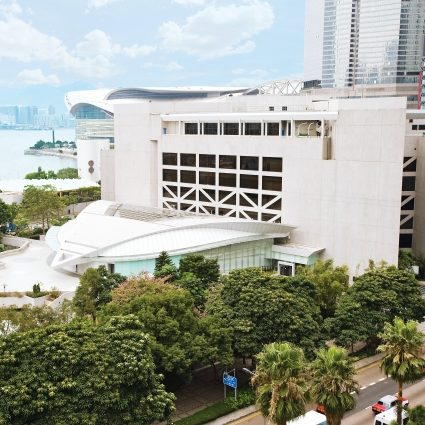
1984
Hong Kong Academy for Performing Arts established
Art education
Established under the 1984 Government Ordinance, the Hong Kong Academy for Performing Arts (HKAPA) opened at 1 Gloucester Road in Wan Chai, Hong Kong Island. It provides undergraduate and postgraduate studies in Chinese Opera, dance, drama, theatre and entertainment arts, film and television, and music.
Since 2006, the Academy has housed training facilities for the School of Film and Television at its Landmark Heritage Campus in Pok Fu Lam, Hong Kong Island.
Hong Kong Academy for Performing Arts. “About HKAPA.” Accessed 12 August 2023.

1985
Hong Kong Act 1985
Policies and socio-political events
In light of the impending Handover, the United Kingdom passes the Hong Kong Act of 1985 and establishes British Nationality (Overseas). This status was only available to Hong Kong British Dependent Territories Citizens through application on or before 30 June 1997. It does not entitle the BNO holders to the right of abode in the UK.
“Hong Kong Act 1985.” The Official Home of UK Legislation. Accessed 28 November 2023.

12.1986
Alternative Film & Video Festival
Festivals and mega-exhibitions
Held in December 1986, the Alternative Film & Video Festival was co-organised by Phoenix Cine Club and the Hong Kong Arts Centre. Its programme included British films (sponsored by the British Council); German modern and classic films; a selection by Hong Kong experimental theatre company Zuni Icosahedron; a section titled “Alternative MTV”; Hong Kong films and contemporary videos; Philippine independent cinema; and animations.
Its Chinese and English bilingual programme catalogue, which was published as a zine, featured essays on video artist Nam June Paik and on the lack of outlets for alternative and independent filmmakers in Hong Kong. For the latter, film producer Roger Garcia critiqued that “The Hong Kong cinema is dominated by commercial, mainstream narrative films and all theatres in Hong Kong are designed, built and equipped on this basis.”
Garcia, Roger, Lo Cheying, Comyn Mo, et. al. Alternative Film & Video Festival 1986. 1986. Accessed via Asia Art Archive: https://aaa.org.hk/archive/205907.

1986
Asian Cultural Council Hong Kong Programme launched
Awards, grants, residencies
The Asian Cultural Council (ACC) was established by John D. Rockefeller III in 1963. The Foundation had awarded fellowships to local artists since the 1970s, including Hon Chi Fun 韓志勳 (1969), Oscar Ho 何慶基 (1992), and Leung Mee Ping 梁美萍 (2002).
In 1986, the ACC launched its Hong Kong programme with help from Kenneth H.C. Fung and J. S. Lee. ACC Hong Kong offers fellowships in the arts and supports cultural exchange within Asia and between Asia and the United States. The Asian Cultural Council Hong Kong Foundation Limited, partner foundation of ACC, was formally registered as a nonprofit in Hong Kong in 2015.
Asian Cultural Council Hong Kong. Accessed 31 May 2023.

1986
Videotage opens
Artist-run spaces
Videotage is the earliest organisation in Hong Kong to focus on video art and new media. It began as an artist collective founded by Comyn Mo 毛文羽, Ellen Pau 鮑藹倫, May Fung 馮美華, and Wong Chi-fai in 1986. They operated from a borrowed space in Zuni Icosahedron’s headquarters in Happy Valley, Hong Kong Island.
In 1987, Videotage co-launched the Super 8 Workshop, Hong Kong’s first video art training programme, alongside Goethe-Institut and, in 1996, it organised the first annual Microwave International New Media Arts Festival as a platform for local artists to connect with an international network. Microwave became an organisation independent from Videotage on its 10th anniversary in 2006.
Videotage opened its own space at Oil Street Artist Village in North Point, Hong Kong Island, in 1998. It has since started many initiatives, including the FUSE Art Residency programme in 2004; the international collective Dorkbot-hk, which hosts annual events globally with a focus on robotics, electronics, technology, and art, in 2009; and Both Sides Now, an annual film and video programme co-organised by Videoclub UK, in 2014. The Videotage Media Art Collection (VMAC), an online video art archive, went live in 2008 and became available for public viewing in 2011.
Today, Videotage continues to collaborate with different organisations to enable local new media artists to gain international exposure.
Asia Art Archive. [Independent Initiative File (Hong Kong): Videotage.] Accessed 31 May 2023.
https://aaa.org.hk/archive/48997.
Ellen Pau Archive. Asia Art Archive. Accessed 31 May 2023.
https://aaa.org.hk/en/collections/search/archive/ellen-pau-archive.
Videotage. Accessed 31 May 2023.
https://www.videotage.org.hk/.

1986
Art Currents begins publication (1986–87)
Publications
Fung Manyee 馮敏兒 began publishing Art Currents 外邊, an art periodical that focused on art critique, in 1986. The ten-issue periodical ran until 1987.
Art Currents (All Holdings). Hong Kong: Fung Man Yee, 1986. Accessed 31 May 2023 via Asia Art Archive: https://aaa.org.hk/archive/69095.
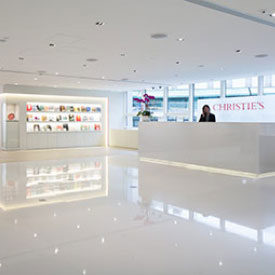
13.01.1986
Christie’s first sale in Hong Kong
Auction houses
Christie’s Hong Kong held its inaugural sale on 13 January 1986 at Mandarin Hotel (now the Mandarin Oriental Hotel) in Central, Hong Kong Island. Titled “Fine Nineteenth and Twentieth Century Chinese Paintings,” the auction featured 19th- and 20th-century Chinese paintings and jadeite jewellery. It presented a total of 230 lots and raked in more than HKD 14 million or USD 1.79 million. Christie’s Hong Kong added Chinese ceramics to its sales calendar the following year.
“Christie’s Hong Kong Celebrates 20 Years of Success.” Christie’s, 3 April 2006. Accessed 23 August 2023.
https://www.christies.com/presscenter/pdf/04252006/125212.pdf.
Fine nineteenth and twentieth century Chinese paintings. Hong Kong: Christie’s Hong Kong, 1986.
Christie’s. Accessed 16 August 2023.
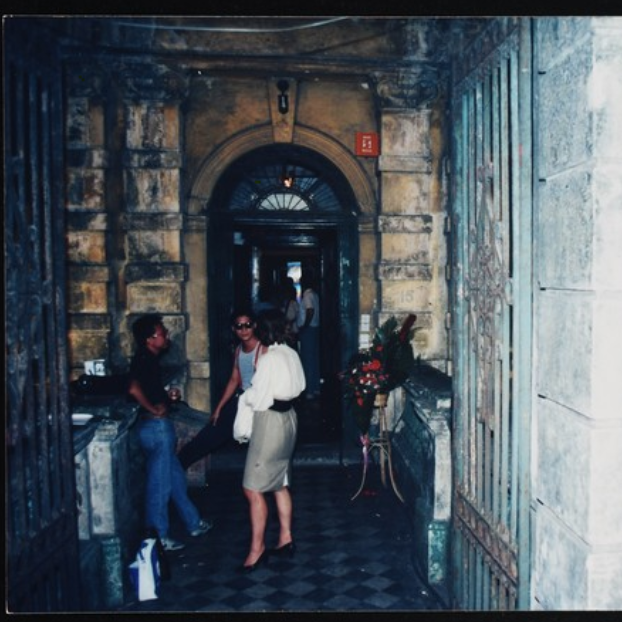
10.1987
“Out of Context 外圍”
Performances, screenings, exhibitions
“Out of Context 外圍” was a self-organised group exhibition by Christine Loh 陸恭蕙 in collaboration with 21 artists and art collectives as a response to the lack of institutional support for art practices in Hong Kong. It was held in a now-demolished building at 15 Kennedy Road in Wan Chai, Hong Kong Island, from 9 to 10 October 1987. The exhibition, groundbreaking for its time, featured performance art, paintings, sculptures, and installations. Following the success of “Out of Context,” a mobile art show was organised with the support of art dealer Sandra Walters among others.
The artists exhibited were Adevor, Antonio Mak 麥顯揚, Choi Ronald Yeekie, Choi Yanchi 蔡仞姿, Epoxy Art Group, Fung Manyee 馮敏兒, Oscar Ho 何慶基, Holly Lee 黃楚喬, Jim Shum 沈聖德, Josh Hon 韓偉康, Larry Deming, Lau Gukzik 劉掬色, Lee Kasing Wingo 李家昇, Ming Fay 費明杰, Robert Fung 馮萬剛, Robert O’Brien 白禮仁, Sunny Pang 彭錦耀, Susi Kramer, Tommy Wong 王志強, Wong Yankwai Yank 黃仁逵, and Yeung Sauchurk Ricky 楊秀卓.
Loh, Christine. Out of Context. Hong Kong: 1987. Accessed via Asia Art Archive: https://aaa.org.hk/archive/211793.

1987
Super 8 Workshop launched
Art education
Super 8 Workshop, the first video art training programme in Hong Kong, was launched by Goethe-Institut and Videotage in 1987.
Lai, Chiu-han Linda. “Attempting a history of (new) media arts for Hong Kong : archaeology, literacy and education for artists.” In the Hong Kong Visual Arts Yearbook 2007, edited by Kurt Chan and Maggie Wan, 97–183. Hong Kong: Department of Fine Arts, The Chinese University of Hong Kong, 2008.
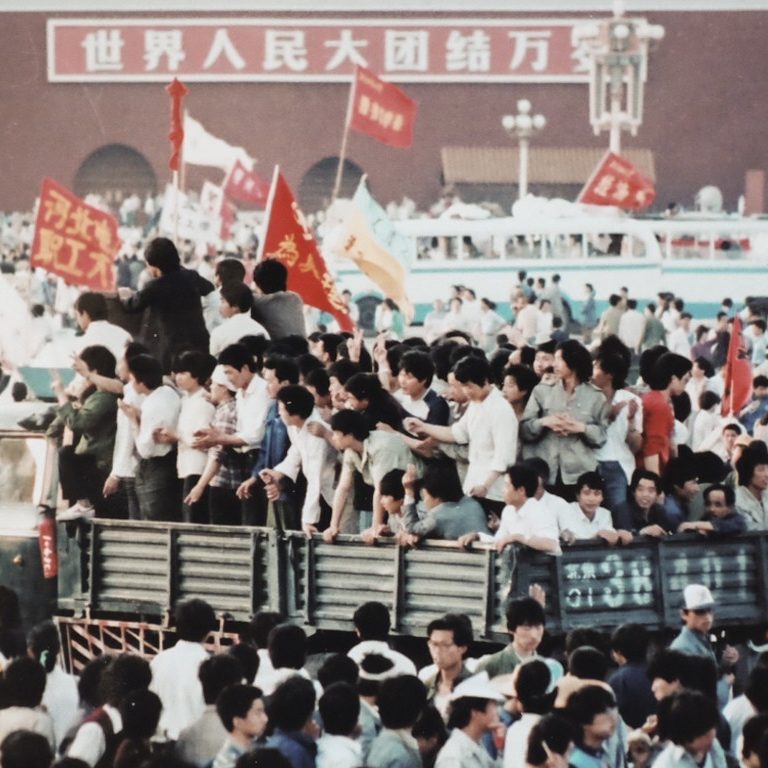
04.06.1989
June Fourth
Policies and socio-political events
In the spring of 1989, the student-led Beijing Democracy Movement ended in a violent crackdown by the Chinese government on 4 June, which resulted in thousands of civilian casualties. In solidarity, Art Support 藝援 and the Hong Kong Alliance in Support of Patriotic Democratic Movements of China 香港市民支援愛國民主運動聯合會 organised Art Fair for Democracy in collaboration with more than 30 local artists and art collectives. It took place on 16 July 1989 in Victoria Park on Hong Kong Island. That same month, the Hong Kong Institution for the Promotion of Chinese Culture (HKIPCC) held Object-act-ivities, a performance in response to June Fourth.
Chan, Alan. “Performance Art History of Hong Kong: Moments Between the 1960s to Today from Asia Art Archive’s Collection.” Asia Art Archive, 19 February 2020.
“Art Fair for Democracy.” Asia Art Archive. Accessed 18 January 2024.
https://aaa.org.hk/en/collections/event-database/art-fair-for-democracy.
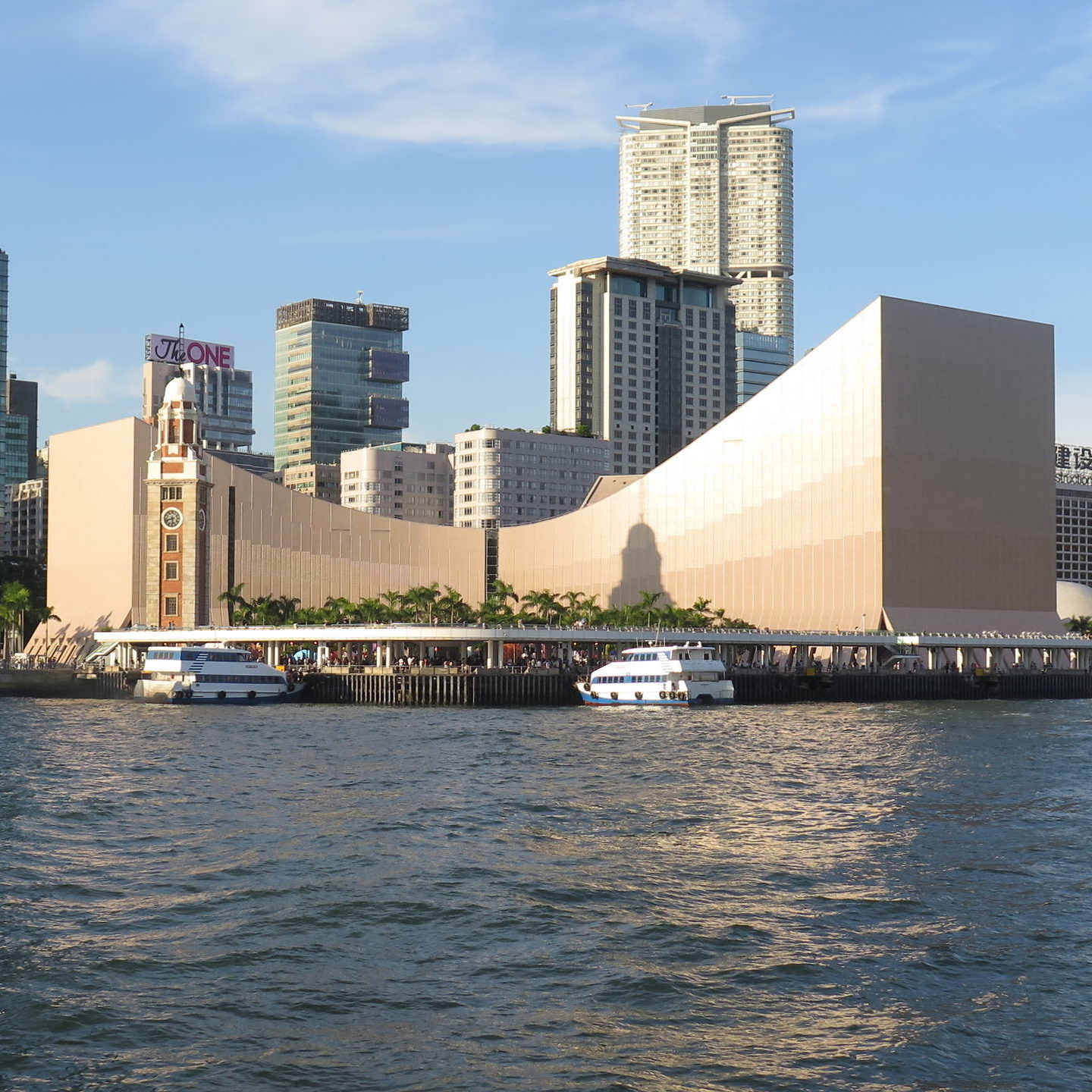
08.11.1989
Hong Kong Cultural Centre opens
Government bodies
The Hong Kong Cultural Centre opened at 10 Salisbury Road in Tsim Sha Tsui, Kowloon, on 8 November 1989. It comprises a grand theatre, a studio theatre, an exhibition gallery, rehearsal rooms, and more. Its roster often includes the Hong Kong Philharmonic and Chinese Orchestras, Opera Hong Kong, and the Hong Kong Dance Company.
Hong Kong Leisure and Cultural Services Department. “HK icon celebrates 25th birthday.” Accessed 15 November 2023.
https://www.lcsd.gov.hk/en/hkcc/25A/hkicon_video.html.
news.gov.hk. “HK icon celebrates 25th birthday.” Last modified 2 November 2014.
https://www.news.gov.hk/en/city_life/html/2014/10/20141031_151228.shtml#content.
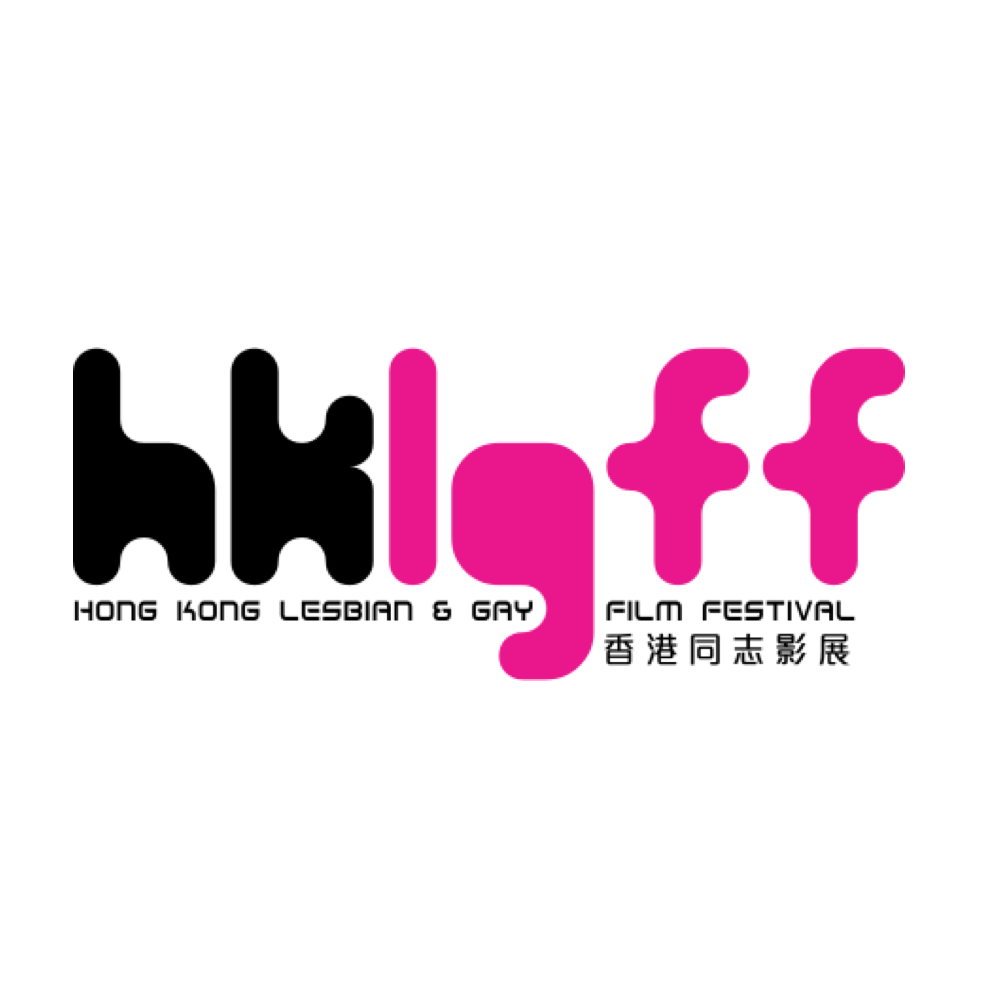
1989
First Hong Kong Lesbian and Gay Film Festival
Festivals and mega-exhibitions
The first and longest-running queer film festival in East Asia, the Hong Kong Lesbian and Gay Film Festival (HKLGFF) was first founded as the Gay and Lesbian Films Season by Hong Kong film director and gay activist Edward Lam in 1989. Between 1989 and 1998, Lam and the Hong Kong Arts Centre (HKAC) co-organised the festival as “an experimental, politically-oriented cultural event.”
In 1999, Lam left the Gay and Lesbian Films Season due to financial factors involving the festival’s unsatisfactory box office results and lack of funding. The festival was not held that year. Film director Raymond Yeung and Fortissimo Films founder Wouter Barendrecht took over the festival in 2000 with a more commercial approach. They renamed it the Hong Kong Lesbian and Gay Film Festival. The role of the HKAC shifted from organiser to venue partner from 2000 to 2002 before ultimately withdrawing from the festival completely.
In 2001, Yeung and Barendrecht founded the Hong Kong Lesbian and Gay Film Festival Society (HKLGFFS), “a nonprofit organisation that aims to promote equal opportunities and eliminate discrimination against sexual minority groups in Hong Kong through screening cinematic works and fostering a regular and stable audience base.” The nonprofit has been HKLGFF’s official organiser since 2002. The HKLGFF has been a self-sustained commercial queer film festival since then. Its films have been shown in cinemas run by Edko Films Ltd.
Criticisms of the festival often address its overrepresentation of White middle-class gay films. In his book, sociologist Travis S.K. Kong notes that “The festival has been caught in the dilemmas of balancing mainstream commercial blockbusters with alternative, independent, experimental films; and of overrepresenting Western middle-class gay films and underrepresenting local, lesbian and transgendered films.” Similarly artist and writer Yau Ching observed that “Hong Kong’s film festivals and their audiences, including the HKLGFF, have been ‘programmed’ to take the white, mainly gay—with a little bit of lesbian recently—culture as ‘natural,’ ‘desirable,’ and ‘progressive,’ contributing to further suppression and marginalization of a localized and regional queer culture.”
Kong, Travis S.K. Chinese Male Homosexualities: Memba, Tongzhi and Golden Boy. Hong Kong: Routledge, 2010. https://doi.org/10.4324/9780203849200.
Qin, Qin. “A Waning Queerscape: The Hong Kong Lesbian and Gay Film Festival.” Journal of Film and Video 71, no. 3 (2019): 35–49.
Xie, Heshen. “Commercialisation as a Tool: The Commercial Transformation of the Hong Kong Lesbian and Gay Film Festival.” Frames Cinema Journal. Accessed 12 August 2023. https://framescinemajournal.com/article/commercialisation-as-a-tool-the-commercial-transformation-of-the-hong-kong-lesbian-and-gay-film-festival/.
Xie, Heshen. “Western-Centrism and the Global Queer Film Festival Circuit: Hong Kong Lesbian and Gay Film Festival As a Case.” Journal of Festive Studies 4, no. 1 (2023):83–100. https://doi.org/10.33823/jfs.2022.4.1.105.
Yau, Ching. “Bridges and Battles.” GLQ: A Journal of Lesbian and Gay Studies 12, no. 4 (2006): 605–607. https://muse.jhu.edu/article/202852.

1990
British Nationality (Hong Kong) Act 1990
Policies and socio-political events
Following the Tiananmen Square protests in China in 1989, the British government passed the British Nationality (Hong Kong) Act 1990 and granted 50,000 families with full British citizenship.
The Official Home of UK Legislation. “British Nationality (Hong Kong) Act 1990 (1991).” Accessed 28 November 2023. https://www.legislation.gov.uk/ukpga/1990/34/contents.

04.04.1990
Hong Kong Basic Law
Policies and socio-political events
The Basic Law was promulgated by the PRC’s National People's Congress on 4 April 1990.
Refer to basiclaw.gov.hk.
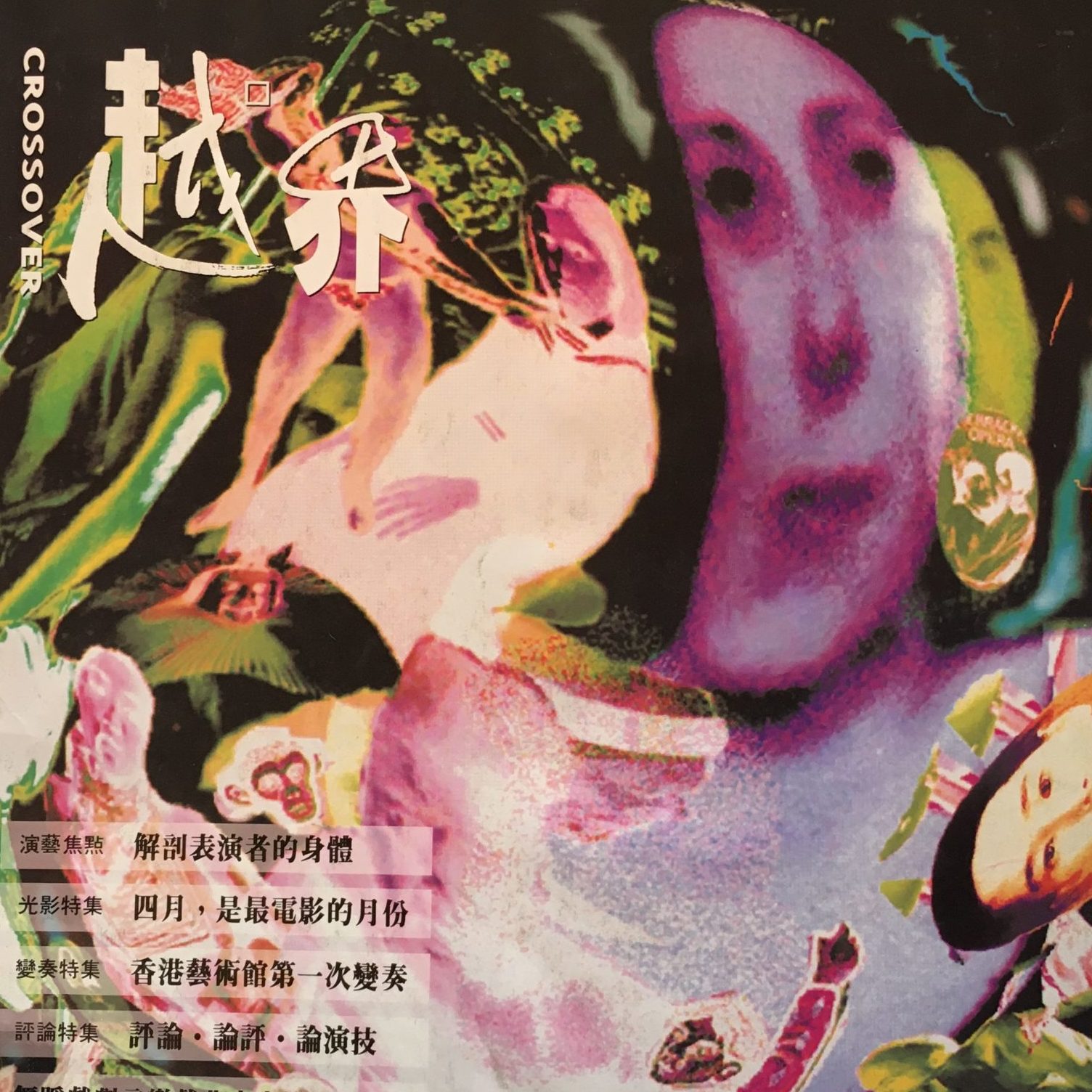
05.10.1990
Crossover begins publication (1990–93)
Publications
Crossover 越界, the first periodical in Hong Kong to dedicate itself to performance art, published its inaugural issue on 5 October 1990. While issues were initially released monthly, the publication made the switch to a weekly release from June 1992 onwards. It featured a wide range of content related to the world of performing arts, including but not limited to debuts, reviews, upcoming events, and international and local happenings. In December 1993, it ceased publication.
Asia Art Archive. “Crossover Magazine (All Holdings), 越界.” Accessed 18 September 2023.
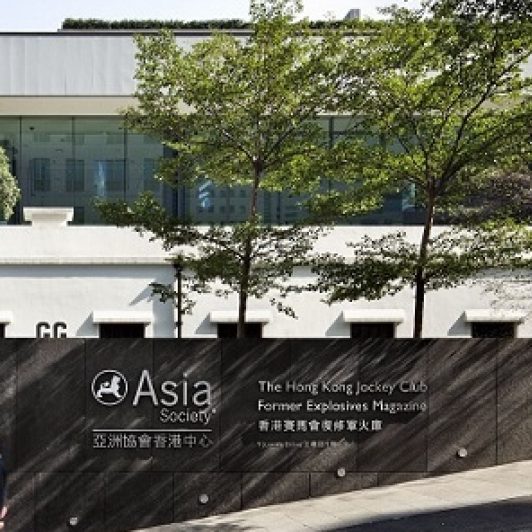
1990
Asia Society Hong Kong Centre established
Non-collecting institutions
American oil tycoon and philanthropist John D. Rockefeller III founded the nonprofit Asia Society in New York in 1956 to “contribute to a broader and deeper understanding between the peoples of the United States and Asia” through “a wide range of cross-disciplinary programming.” It has since opened centres and public buildings worldwide, from New York to Hong Kong, Mumbai to Melbourne.
Asia Society Hong Kong Center was established in 1990 by businessman and former Hang Seng Bank Chairman Lee Quo-wei 利國偉. It organises talks, workshops, and exhibitions. ASHK has been situated at the Former Explosives Magazine of the Victoria Barracks in Admiralty, Hong Kong Island, since 2012.
Asia Society. Accessed 18 September 2023.
“About Us.” Asia Society. Hong Kong. Accessed 18 September 2023.
www.asiasociety.org/hong-kong/about-us.
Britannica, T. Editors of Encyclopaedia. “John D. Rockefeller III.” Encyclopedia Britannica, 28 October 2023.
https://www.britannica.com/biography/John-D-Rockefeller-III.

1990
The Quart Society established (1990)
Artist and cultural groups
The Quart Society was established in 1990 in Central, Hong Kong Island. In the exhibition publication Inside Out: New Chinese Art (1998), it was described as the first “independent, artist-run co-op” in Hong Kong and functioned as a space for exhibitions and dialogue between the various bodies in the local art community. Though it was active for less than a year, the society hosted more than 20 events and additionally exhibited art forms that local museums and galleries rarely showed. In his translated essay about Hong Kong art spaces in the 50th Venice Biennale: Navigating the dot (2003) catalogue, artist Leung Chi Wo 梁志和 described the opening of the Quart Society as “exciting news”: “They had an open and artist-friendly attitude, and exhibited art forms rarely seen in local art museums and commercial galleries. They were a source of vitality, as well as a place where people could meet artists ‘in the flesh.’ It was therefore a pity it survived for less than a year.”
Huang, Renkui, and Yang Donglong. Archival materials from the Quart Society, c. 1990. Hkulebooks_11931. Digital Repository, The University of Hong Kong Library. Accessed 15 January 2024.
https://digitalrepository.lib.hku.hk/catalog/p554f265k#?c=&m=&s=&cv=&xywh=-1845%2C-142%2C5489%2C2836.
Lau, Kin-wah, Chi-wo Leung, Marsha Lui, and Yang Yeung. 50th Venice Biennale: Navigating the dot. Hong Kong: Hong Kong Arts Development Council, 2003.
Bryson, Norman, Johnson Chang, David Clarke, Gao Minglu, Hou Hanru, Lee Oufan, Victoria Lu, and Wu Hung. Inside Out: New Chinese Art. New York, San Francisco, Berkeley: Asia Society Galleries, San Francisco Museum of Modern Art, The University of California Press, 1998.
Cheung, Mei and Crystal La., “The Two Phases of Independent Art Space Development in Hong Kong,” Arts Factory. Accessed 6 January 2024.
https://www.artfactories.net/The-Two-Phases-of-Independent-Art-Space-Development-in-Hong-Kong.html.

11.1991
Hong Kong Museum of Art relocates to Tsim Sha Tsui, inaugural exhibition faces criticism
Museums
In 1991, the Hong Kong Museum of Art relocated from its 11,000-square-meter exhibition space at the top floor of City Hall’s High Block on Hong Kong Island to its own 17,530-square-meter premises in Tsim Sha Tsui, Kowloon, allowing it to house its permanent collections and host special exhibitions.
Its inaugural exhibition of contemporary French art at the new building, “Too French” (1991), was met with criticism for its exclusion of the local avant-garde. This prompted the museum to quickly organise “City Vibrance: Recent Works in Western Media By Hong Kong Artists,” which showed 49 Hong Kong artists working in painting, photography, ceramics, and sculpture to express their ideas on Hong Kong. Though some questioned the necessity of distinguishing the artworks displayed as using “Western Media,” City Vibrance was considered a benchmark exhibition that “still defines the museum’s approach to contemporary art.”
info.gov.hk. “50 stories tell the tale of Hong Kong Museum of Art over the past 50 years (with photos).” Press Releases. Last modified 11 October 2012.
https://www.info.gov.hk/gia/general/201210/11/P201210110304.htm.
ArtAsiaPacific and Asia Art Archive. “A Better Tomorrow for Art Museums in Hong Kong: Looking Back at the 1990s.” ArtAsiaPacific, 20 March 2023.
City Vibrance: Recent Works in Western Media by Hong Kong Artists. Hong Kong: Urban Council, 1992. Catalog accessed via Asia Art Archive: https://aaa.org.hk/archive/45969.

1992
NuNaHeDuo (Dislocation) begins publication (1992–95)
Publications
In 1992, Hong Kong photographer Lee Ka-sing 李家昇 founded NuNaHeDuo (Dislocation) 女那禾多, a monthly experimental periodical on contemporary photography. It was published physically as a supplement to the Photo Pictorial magazine—one of the few publications at the time to circulate in Hong Kong, South East Asia, and Mainland China—but existed independently with its own conceptual and artistic direction. At a time when the city’s media was dominated by documentary and commercial photography, Lee was credited for bringing in conceptual photography and for his insightful writings on photography.
From 1998 to 1999, the publication was funded by the Hong Kong Arts Development Council (HKADC). The periodical ceased publication in 1999, citing HKADC’s change in funding policy as one of the reasons for their decision.
“攝影雜誌訪問關於「女那禾多」” Lee Ka-sing’s Personal Blog. Accessed 29 November 2023.
https://leekasing3blog.wordpress.com/2009/12/31/09-20-攝影雜誌訪問關於「女那禾多」/.
Asia Art Archive. “NuNaHeDuo (Dislocation) (All Holdings).” Accessed 18 September 2023.
https://aaa.org.hk/archive/70648.
Chan, Kwan Yee. “Beyond Photography: The Art of Conceptual Photography Pioneers Lee Ka-sing and Holly Lee.” M+ Magazine, 13 April 2023.
https://www.mplus.org.hk/en/magazine/conceptual-photography-of-lee-ka-sing-and-holly-lee/.
Wong, Michelle. “Art Writing and Its Circulation: Three Moments in Hong Kong.” Asia Art Archive, 1 January 2014.

1992
Hong Kong Society for Education in Art established
Art education
Established in 1992, the nonprofit Hong Kong Society for Education in Art provides training and support to kindergarten, primary, and secondary school art teachers. It also publishes books and periodicals, including the Hong Kong Art Education Journal, which includes news and resources from teachers in Hong Kong and overseas; organises events such as the annual Hong Kong Visual Arts Education Festival, comprised of exhibitions, talks, and workshops; and presents awards like the Grantham Visual Arts Awards and the Creative Students Award.
Hong Kong Society for Education in Art. “About Us.” Accessed 22 September 2023.

1992
Hong Kong Visual Arts Centre opens
Government bodies
Operated by the Leisure and Cultural Services Department, the Hong Kong Visual Arts Centre—also known as vA!—opened at Cassels Block of the former Victoria Barracks at Hong Kong Park in 1992. Equipped with an exhibition hall, a lecture theatre, as well as studios for ceramics, sculpture, and printmaking, vA! hosts screenings, workshops, talks, and exhibitions, among other programmes.
Art Promotion Office. “vA!” Accessed 22 September 2023.

03.1992
“City Vibrance: Recent Works in Western Media by Hong Kong Artists”
Performances, screenings, exhibitions
In 1991, the Hong Kong Museum of Art (HKMoA) relocated from the top floors of City Hall’s High Block on Hong Kong Island to its own premises at 10 Salisbury Road in Tsim Sha Tsui. The museum was quickly met with the disappointment of local artists for its exclusion of the local avant-garde in its opening programme; its inaugural exhibition at its new space was a presentation of French art titled “Too French” (1991), which had no direct ties to the local art scene.
Following this public response, the museum quickly organized “City Vibrance: Recent Works in Western Media By Hong Kong Artists,” an exhibition of 49 Hong Kong-based artists working in painting, photography, ceramics, and sculpture. Opened on 27 March 1992, the exhibition’s thematic tether is the experience of living in a cosmopolitan city such as Hong Kong. Though some questioned the necessity and implication of the distinction “Western Media” in its title, ”City Vibrance” has been considered a benchmark exhibition that “still defines the museum’s approach to contemporary art.”
Participating artists include Antonio Mak 麥顯揚, Chan Yuk-keung Kurt 陳育強, Choi Yan-chi 蔡仞姿, May Fung 馮美華, Gaylord Chan 陳餘生, Oscar Ho 何慶基, Rosamond Brown 白朗露, Van Lau 文樓, Yeung Sau-churk Ricky 楊秀卓, and more.
City Vibrance: Recent Works in Western Media by Hong Kong Artists. Hong Kong: Urban Council, 1992. Catalog accessed via Asia Art Archive: https://aaa.org.hk/archive/45969.

1993
First The French May Arts Festival
Festivals and mega-exhibitions
The Consulate General of France and the Alliance Française de Hong Kong launched the first edition of the French May Arts Festival in 1993. Held annually, the Festival hosts over 100 cultural activities spanning cinema, music, contemporary art, and more across its two-month run.
French May Arts Fest. “About French May Arts Festival.” Accessed 15 January 2024.
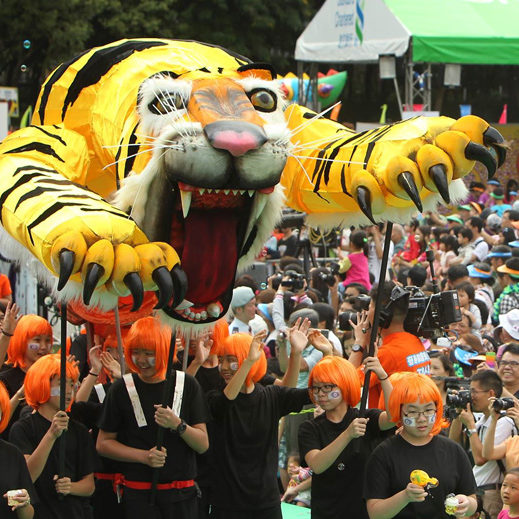
1993
Hong Kong Youth Arts Foundation established
Non-collecting institutions
Established in 1993 by theatre producer Lindsey McAlister, Hong Kong Youth Arts Foundation is a nonprofit that provides people from the ages 5 to 25 with non-competitive, free-of-charge arts experiences.
Hong Kong Youth Arts Foundation. “About HKYAF.” Accessed 15 January 2024.

1993
Arts Policy Review Report published
Policies and socio-political events
The Government published its Arts Policy Review Report, which recommended that the Council for Performing Arts be reorganised into a non-statutory Arts Council with representatives from both the Urban and Regional Councils.
The Report received heavy criticism from Zuni Icosahedron’s Hong Kong Cultural Policy Study Group for neglecting the main concerns of local art practitioners at that time. Following the release of the Report, the Study Group conducted a survey of 1,583 arts educators and carried out group discussions on the status of Hong Kong art and its arts education policy. The Study Group criticised the Arts Policy Review Report for failing to address issues such as the “freedom of artistic expression, funding for artistic exploration and cultural imagination, and the process of decentralisation in cultural (including educational) administration.” The Study Group went on to publish their own report, Vision for an Arts Policy of Hong Kong, in the 1990s. In response, the government claimed that it had no intention of developing a comprehensive cultural policy as most of the resources were controlled by the municipal councils.
Whitbread, Richard Guy. “Cultural and Arts Education Policies in Hong Kong: Two Wings of the Same Bird?” PhD diss., The Education University of Hong Kong, 2016. Information on pages 39–40. Accessible online via https://educoll.lib.eduhk.hk/records/j0awSYyM.

1993
Hong Kong Female Contemporary Art Association established
Artist and cultural groups
Gender-themed exhibitions emerged in Hong Kong in the 1980s before booming in quantity in the 1990s to early 2000s. Established in 1993, the Hong Kong Female Contemporary Art Association, alongside other gender-focused artist groups such as the International Woman Artists (Hong Kong) Association, curated a series of woman-themed exhibitions to critique the invisibility of women artists in the contemporary art world. These associations are contemporaneous with other woman-specific groups that emerged in Southeast Asia, including Womanifesto (Bangkok, 1997) and Nuansa (Indonesia, 1985).
Andrews, Julia F., and Kuiyi Shen. “Traditionalism as a Modern Stance: The Chinese Women’s Calligraphy and Painting Society.” Modern Chinese Literature and Culture 11, no. 1 (1999): 1–29.
http://www.jstor.org/stable/41490789.
Chung, Christina Yuen Zi. “Gendering Her Art: The Category of ‘Woman’ in the Art History of Hong Kong.” Asia Art Archive, 3 May 2018.

1993
International Woman Artists (Hong Kong) Association established
Artist and cultural groups
The International Woman Artists (Hong Kong) Association was established in 1993 alongside other gender-focused artist groups such as the Hong Kong Female Contemporary Art Association. These associations, in collaboration with government-run museums and other art groups, curated a series of woman-themed exhibitions to critique the invisibility of women artists in the contemporary art world.
Gender-themed exhibitions emerged in Hong Kong in the 1980s before booming in quantity in the 1990s to early 2000s. These associations are contemporaneous with other woman-specific groups that emerged in Southeast Asia, including Womanifesto (Thailand, 1997) and Nuansa (Indonesia, 1985).
Chung, Christina Yuen Zi. “Gendering Her Art: The Category of ‘Woman’ in the Art History of Hong Kong.” Asia Art Archive, 3 May 2018.
Asia Art Archive. “Exhibitions of Women Artists.” Themes. Accessed 23 September 2023.
https://aaa.org.hk/en/collections/themes/exhibitions-of-women-artists.

1994
The Original Photograph Club opens
Artist and cultural groups
The Original Photograph Club was established in 1994, based on the foundation of NuNaHeDuo (Dislocation) 女那禾多 magazine two years prior. Its mission statement was to “encourage and to promote the practice of collecting photographs to the general public”, and it did so in part through its OP Editions publication, which ran from 1995–98.
Asia Art Archive. “[Organisation File (Hong Kong): The Original Photograph Club].” Accessed 18 September 2023.
https://aaa.org.hk/archive/83802.
Chan, Winghoi Leo, Tak Wah Almond Chu, Joseph Fung, Mamoru Horiguchi, Holly Lee, Patrick Lee, Mary G. Padua, and Carsten Schael. OP editions 9603. Hong Kong: Original Photograph Club (OP Club), 1996. Accessed through Asia Art Archive: https://aaa.org.hk/archive/67818.
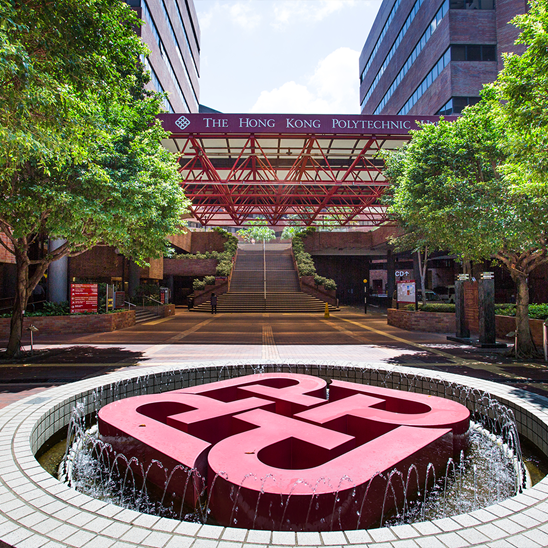
25.11.1994
Hong Kong Polytechnic University acquires university status
Art education
Established as the Government Trade School in 1937, The Hong Kong Polytechnic University began as the first publicly funded, post-secondary technical school in the city. After the Second World War, the school was renamed the Hong Kong Technical College in 1947 and relocated from its original premises in Wan Chai, Hong Kong Island, to its current campus in Hung Hom, Kowloon in 1957. More than 20 years later, in 1972, the school was formally established as the Hong Kong Polytechnic before receiving full university status as The Hong Kong Polytechnic University on 25 November 1994.
The Hong Kong Polytechnic University. “History.” Accessed 23 September 2023.

06.1995
Hong Kong Arts Development Council established
Government bodies
The Hong Kong Arts Development Council (HKADC) was established by the government in 1995 under the Hong Kong Arts Development Council Ordinance as a statutory body aimed at supporting the development of arts in Hong Kong through grant allocation, policy and planning, advocacy, and promotion and development.
Most cultural projects, from one-off exhibitions and performances to permanent art institutions, have since been supported either partially or in full by the HKADC. Such projects include Hong Kong’s pavilion exhibitions at the Venice Biennale.
Hong Kong Arts Development Council. Accessed 31 May 2023.
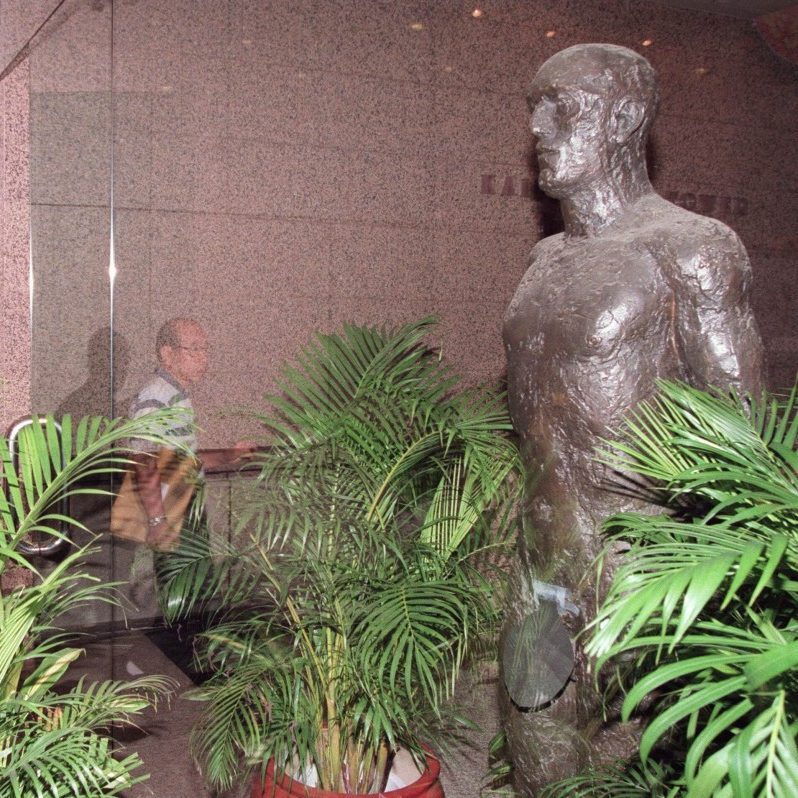
06.06.1995
New Man sculpture ruled as indecent
Policies and socio-political events
On 6 June 1995, the Obscenes Article Tribunal ruled British artist Elisabeth Frink’s bronze sculpture New Man (1984) as an “indecent article.” The life-sized male nude sculpture was originally on display at Kailey Tower in Central, Hong Kong Island. Alerted by an anonymous complaint, the Tribunal—then comprised of an all-male panel—deemed the sculpture inappropriate for children. “A ‘partially erect’ penis was not ‘the kind of thing that should be seen by juveniles’ . . . children had been seen playing with the genitals,” head of the Tribunal Gregory Chan Kok-cheong shared with the South China Morning Post on 7 July 1995. A cardboard leaf was then placed between the sculpture’s legs.
The Hong Kong Arts Development Council and legislator Christine Loh Kung-wai 陸恭蕙 criticised the ruling as censorship of artistic freedom. The sculpture’s owner, entrepreneur and lawyer Woo Po-sing, challenged the tribunal’s decision in the High Court, which ultimately dismissed the “indecent article” verdict. The cardboard leaf was reported to be removed from the sculpture by the Post in August 1995.
In response to the initial ruling, the Hong Kong Young Artists Association organised the “Penis Exhibition” (1995), and the Hong Kong Arts Centre held an exhibition of the sculpture and a forum on the freedom of artistic expression. In its November 1999 Issue, Para Site’s P/S Magazine published five articles “deliberating on the debate generated by Jack Lee . . . concerning [the] exhibition [of the] New Man Incident held [at the] Hong Kong Arts Centre.”
Minglu, Gao, Norman Bryson, Chang Tsong-Zung, David Clarke, Hou Hanru, Leo Ou-Fan Lee, Victoria Y. Lu, and Wu Hung. Inside out: New Chinese Art. Berkeley: University of California Press, 1998.
Hutton, Mercedes. “Elisabeth Frink’s Nude New Man Sculpture Was ‘Too Much to Bare’ – Hong Kong Covered It Up.” South China Morning Post, 19 June 2020.
Para Site. “Art Spaces in Hong Kong | PS (No. 8; Nov 1999).” Accessed 22 September 2023.
https://www.para-site.art/publications/ps-no-8-art-spaces-in-hong-kong/.
United Press International. “Nude male statue gets covered in HK.” Last modified 6 June 1995.
https://www.upi.com/Archives/1995/06/06/Nude-male-statue-gets-covered-in-HK/3614802411200/.
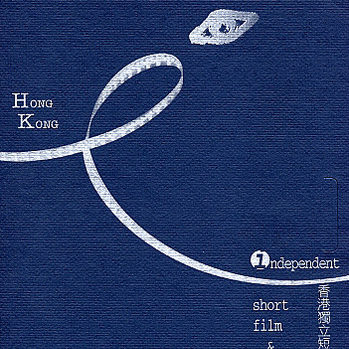
1995
First Hong Kong Independent Short Film and Video (ifva) Awards
Awards, grants, residencies
Founded by the Hong Kong Arts Centre, the first Hong Kong Independent Short Film and Video Awards—now known as ifva—was held in 1995 to recognise independent filmmakers and video artists in the city.
Open to Hong Kong and Asian practitioners, the ifva Awards have since become an annual staple in the Asian film and moving image circuit. Participants can compete under five categories—Open, Youth, Animation, Media Art, and Asian New Force—for the chance to win Gold, Silver, and Special Mention. Cash prizes are given to Gold and Silver award winners. Finalists of the ifva Awards will screen their works at the concurrent ifva Festival.
ifva. Accessed 22 September 2023.
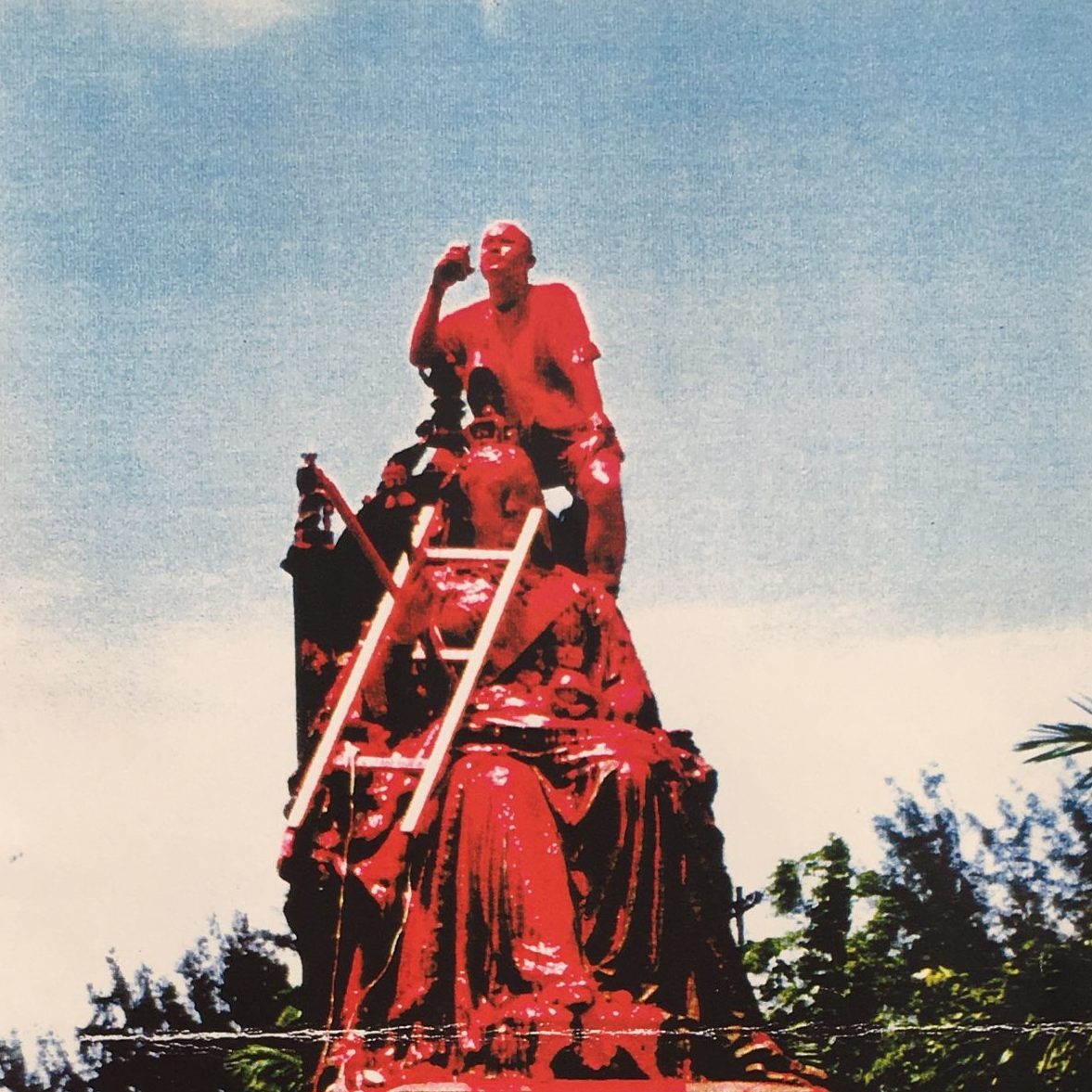
09.1996
The Pan Xinglei Incident in Victoria Park
Performances, screenings, exhibitions
On 16 September 1996, coinciding with the opening of the Contemporary Hong Kong Biennial, artist Pan Xinglei 潘星磊 disfigured the nose on the Statue of Queen Victoria, splashed red paint over the statue, covered himself in the same paint, and waited to be arrested. This occurred in Victoria Park, Causeway Bay, Hong Kong Island. Following the incident, Pan served a one-month jail sentence for criminal vandalism. The controversial incident received wide coverage in the media.
Pan, Xinglei. Pan Xinglei Incident 16 September 1996 Hong Kong. 2007. Accessed at Asia Art Archive: https://aaa.org.hk/archive/62558.
Louie Kam, ed. Hong Kong Culture: Word and Image. Hong Kong University Press, 2010.
http://www.jstor.org/stable/j.ctt1xcrv0.
Information about the Incident is on page 32.
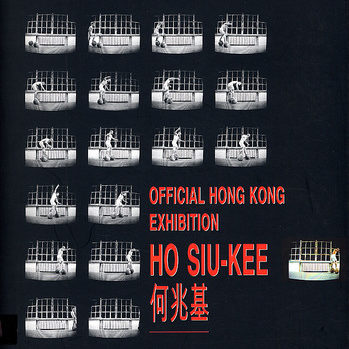
1996
“23rd International Biennial of São Paulo Official Hong Kong Exhibition: Ho Siu Kee”
Festivals and mega-exhibitions
Hong Kong’s first participation in the International Biennial of São Paulo was a solo exhibition of artist-educator Ho Siu Kee 何兆基, curated by HanartTZ Gallery founder Johnson Chang 張頌仁. In a foreword to the exhibition, Chang labels the show “The Inverted Laboratory of Ho Siu-kee,” in reference to the curious “dream machines” devised by the artist. In keeping with the biennial’s theme of “dematerialization of art at the end of the millennium,” Ho’s show played with intangible ideas accessed by impossible contraptions and the artwork shown included mixed media, sculptures, videos, and xerox prints. The 23rd edition of the biennial took place from 5 October to 8 December 1996.
Ho, Siu-kee 何 兆 基. Accessed 15 January 2024.
Balsa, Josette, Caroline Chiu, Benedicte De Roquefeuil, Melanie Pong, and Sumsum Tse, eds. 23rd International Biennial of Sao Paulo Official Hong Kong Exhibition: Ho Siu-kee. Hong Kong: Hanart TZ Gallery, 1996. Accessed through Asia Art Archive: https://aaa.org.hk/archive/45819.
Bryson, Norman, Johnson Chang, David Clarke, Gao Minglu, Hou Hanru, Lee Oufan, Victoria Lu, and Wu Hung. Inside Out: New Chinese Art. New York, San Francisco, Berkeley: Asia Society Galleries, San Francisco Museum of Modern Art, The University of California Press, 1998.
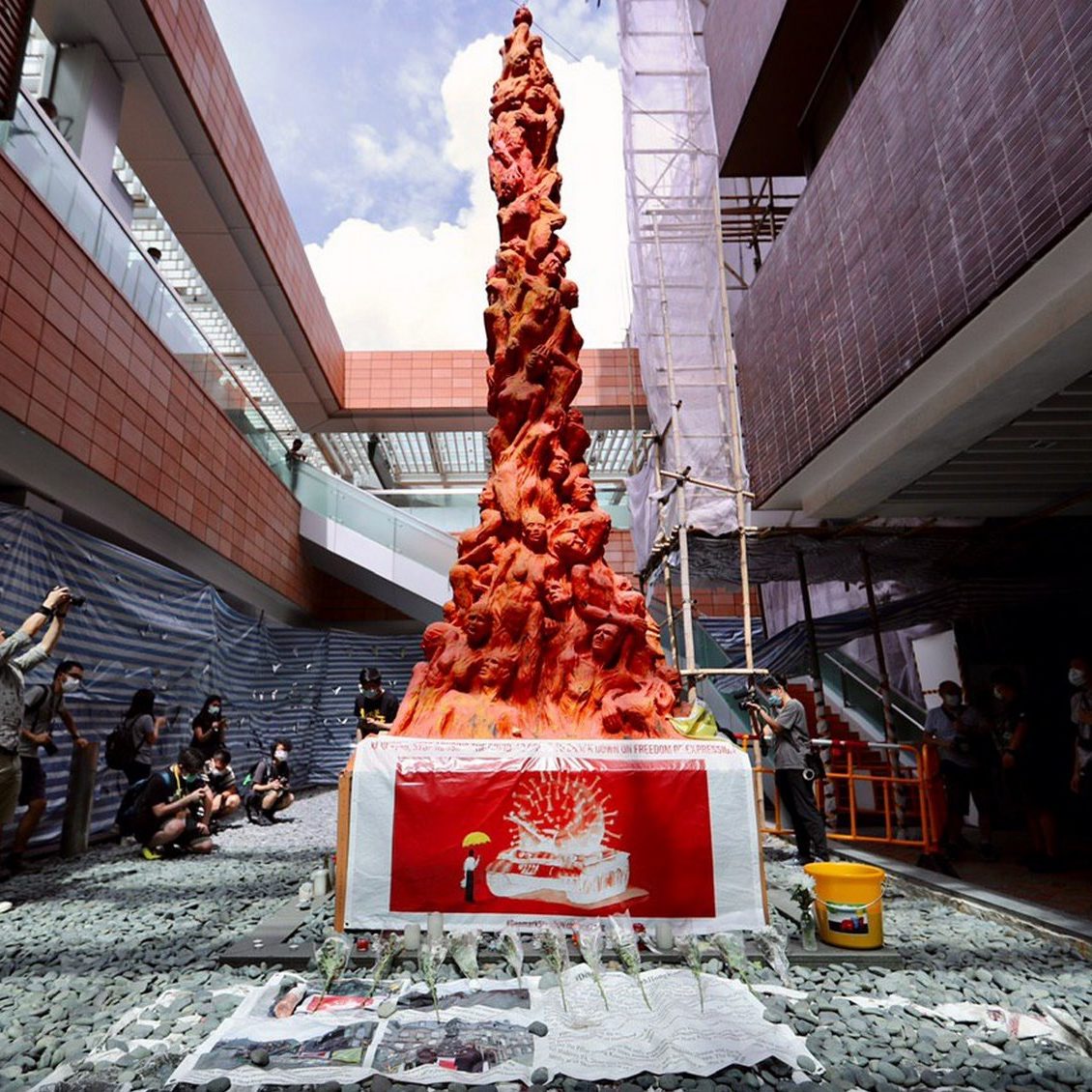
06.1996
Pillar of Shame
Policies and socio-political events
The Pillar of Shame (1996) is a bronze sculpture by Danish artist Jens Galschiøt that was displayed at the annual June Fourth vigil at Victoria Park, Hong Kong Island, in June 1997. The Urban Council denied requests for a longer display period, which led to criticism of political censorship. Students from the University of Hong Kong (HKU) moved the statue to the HKU campus. The Pillar of Shame then toured universities in Hong Kong until 1998. HKU students then moved the work to their campus where it stayed until its forced removal by the government in December 2021.
Cheng, Kris. “The Pillar of Shame: The history of Hong Kong’s harrowing tribute to the Tiananmen massacre victims.” Hong Kong Free Press, 5 May 2018.
Nepomuceno, Nicole M. “University of Hong Kong Removes Tiananmen Monument.” ArtAsiaPacific, 24 December 2021.
https://artasiapacific.com/news/university-of-hong-kong-removes-tiananmen-monument.
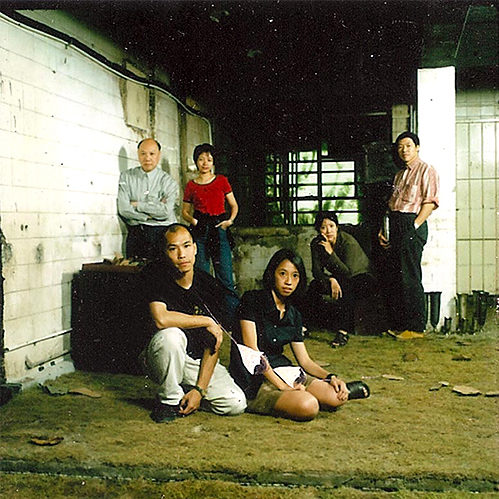
1996
Para Site opens
Artist-run spaces
One of the first exhibition-making institutions and artist-run spaces in Hong Kong, Para Site was founded in 1996 by Patrick Lee 李志芳, Leung Chi-wo 梁志和, Phoebe Man Ching-ying 文晶瑩, Sara Wong Chi-hang 黃志恒, Leung Mee-ping 梁美萍, Tsang Tak-ping 曾德平, and Lisa Cheung 張思敏 with a grant from the Hong Kong Arts Development Council.
Para Site has hosted many important arts and educational programmes since its inception, including the P/S bilingual art magazine (1997–2006), a Curatorial Training Programme (2007–10), and an International Art Residency Programme (2012– ). It represented Hong Kong at the Venice Biennale in 2003 with the exhibition “navigating the dot.”
The nonprofit was located in Sheung Wan in 1997 before moving to a larger venue in Quarry Bay, Hong Kong Island, in 2015.
Para Site. “About.” Accessed 31 May 2023.

1996
The International Association of Art Critics, Hong Kong, established
Artist and cultural groups
Established as the Hong Kong branch of the International Association of Art Critics (AICA) in 1996, AICAHK aims to promote art criticism, protect the freedom of critical expression, and maintain an active international network for its members, among other objectives. The body of the Association is comprised of art critics, professors, curators, and other art professionals. To become a member, candidates are asked to “produce evidence of sustained activity over the previous three years” in media and publishing, teaching, and curation.
International Association of Art Critics Hong Kong. Accessed 23 September 2023.

1996
First Microwave International New Media Arts Festival
Festivals and mega-exhibitions
Video art and new media organisation Videotage launched the first edition of the Microwave International New Media Arts Festival (Microwave). The event was envisioned as a platform for local new media artists to connect with an international network. Though the festival started as a means of showcasing video art by members of Videotage, it eventually expanded to include diverse forms of new media. In 2006, on its tenth anniversary, Microwave became independent from Videotage and rebranded itself with the help of its design partner Milkxhake. As of 2023, Microwave continues to support emerging new media artists in Hong Kong through its annual festival, workshops, seminars, forums, and exhibitions.
Microwave International New Media Arts Festival. “About Microwave.” Accessed 12 September 2023.
http://www.microwavefest.net/festival2019/AboutMicrowave.html.
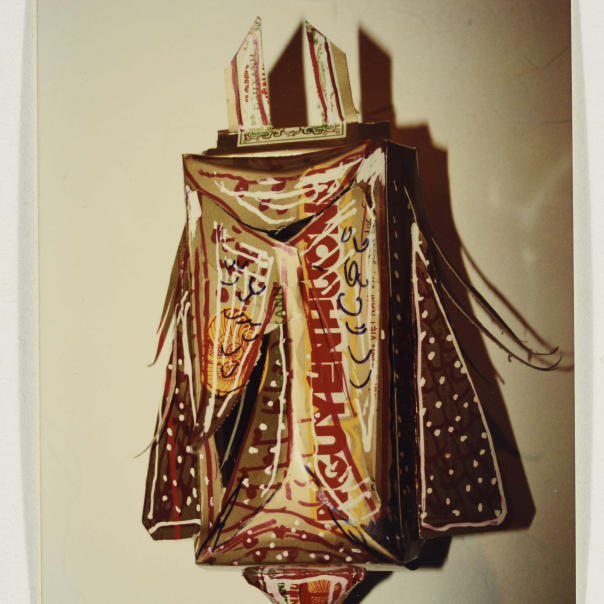
1997
“Being Minorities: Contemporary Asian Art”
Performances, screenings, exhibitions
Curated by Oscar Ho 何慶基, “Being Minorities – Contemporary Asian Art” was the first exhibition that critically reflected on the cultural dislocation of non-Han Chinese people of Hong Kong amidst the rise of Chinese ethno-nationalism surrounding the Handover.
Through the works of nine artists based in Vietnam, Thailand, the Philippines, Pakistan, India, Hong Kong, and Russia, “Being Minorities” aimed “to discuss the issues of minority and cultural dislocation.” In the invitation to the exhibition, Ho wrote: “The idea of minority and dislocation can be interpreted at two levels. On the one hand, it refers to Asian art as a minority culture within the global art world dominated by the Western World. On the other hand, it is specifically about the minorities in Hong Kong, and their cultural dislocation within an increasingly Sino-centric culture.”
Held at the Hong Kong Arts Centre from 26 February to 16 March 1997, “Being Minorities” posed a crucial question: “In our recent patriotic zeal to rebuild our ‘Chineseness,’ have we forgotten the many people of different cultural backgrounds who have helped build Hong Kong?”
Participating artists include Vu Dan Tan, Chatchai Puipia, Sid Gomez Hildawa, Montien Boonma, Robert O’Brien, Talha Rathore, Konstantin Bessmertny, Vivan Sundaram, and Imelda Cajipe-Endaya.
Asia Art Archive. “Being Minorities — Contemporary Asian Art — Invitation, 1997.”
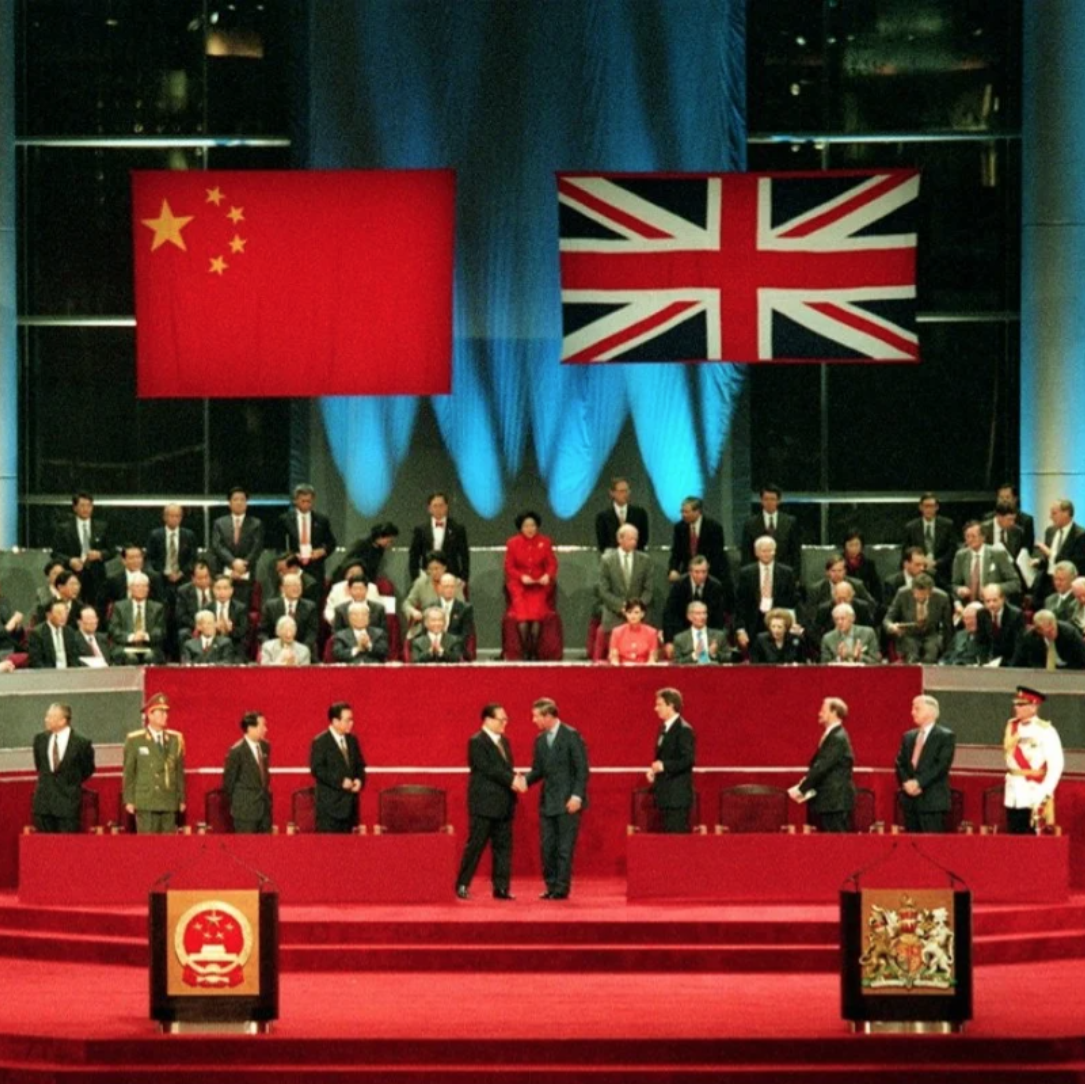
01.07.1997
The Handover
Policies and socio-political events
At midnight on 1 July 1997, China resumed sovereignty over Hong Kong, thereby ending 156 years of British colonial rule. Hong Kong acquired the status of a Special Administrative Region, enabling it to retain its own economic and legislative systems until 2047.
The United Kingdom passed the British Nationality (Hong Kong) Act 1997. Under the policy, eligible Hong Kong residents without Chinese ancestry were entitled to full British citizenship upon application after 1 July 1997.
British Nationality (Hong Kong) Act 1997.
https://www.legislation.gov.uk/ukpga/1997/20/contents.
Britannica, T. Editors of Encyclopaedia. “handover of Hong Kong.” Encyclopedia Britannica, 24 June 2023.
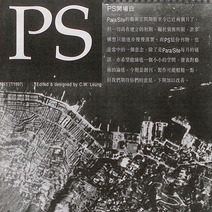
1997
P/S Magazine begins publication (1997–2006)
Publications
P/S Magazine was a bilingual periodical on visual arts published by Para Site, an exhibition-making institution and artist-run space, from 1997 to 2006. It featured exhibition and book reviews, essays, open letters, artist reflections, critiques, and debates on issues such as censorship, public art, and digital art.
Its fourth issue, published in August 1998, was its first Chinese and English bilingual issue.
Para Site. “Publications.” Accessed 21 September 2023.
https://www.para-site.art/publications/categories/ps-magazine/.
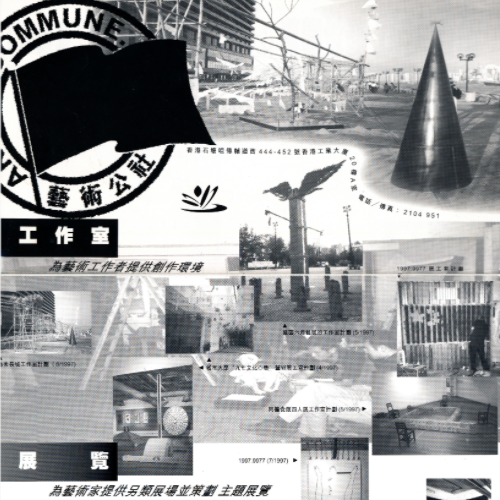
07.1997
Artist Commune established
Artist and cultural groups
Artist Commune was a nonprofit art group established by local artists in July 1997. Their initial premises was at Oil Street, but in the ensuing years they moved to the Cheung Sha Wan Cattle Slaughterhouse, and then to the Cattle Depot Artist Village in To Kwa Wan. It ceased operations in 2012.
As a collective, they had several key projects spanning across a multitude of objectives. The first of these objectives focused on merging traditional ink painting with contemporary ink art, another facilitated socio-politically aware artistic creation. They ran an artist-in-residency programme that aimed to exchange ideas between international and local artists and their audience and additionally co-organized activities with local tertiary education institutions to further the development of art in Hong Kong.
Asia Art Archive. “Post 97 Art: HKSAR/Artist Commune 10th Anniversary.” Event Database. Accessed 21 September 2023.
Lee Chung Fung, ed. “Play Stadium in 2008.” 2008. Leaflet accessed through Asia Art Archive: https://aaa.org.hk/archive/66181.
Chan Kwong Wah, Puileng Chan, Hingshing Chang, et. al. Post 97 Art: HKSAR/Artist Commune 10th Anniversary - Image Edition. Hong Kong: Artist Commune, 2007. Accessed through Asia Art Archive: https://aaa.org.hk/archive/73150.

1997
Asian Financial Crisis
Policies and socio-political events
The Asian Financial Crisis began when the Thai baht was unpegged from the US dollar on 2 July 1997, which destabilized Asian economies and spread to Eastern Europe and Latin America.
According to Michael Carson and John Clark of the Federal Reserve Bank of New York, “Hong Kong faced several large but unsuccessful speculative attacks on its currency peg to the dollar, the first of which triggered short-term stock market sell-offs across the globe.”
Ba, Alice D. “Asian financial crisis.” Britannica Money, 23 February 2024.
https://www.britannica.com/money/Asian-financial-crisis.
Carson, Michael, and John Clark. “Asian Financial Crisis: July 1997–December 1998.” Federal Reserve History. Accessed 21 September 2023.
https://www.federalreservehistory.org/essays/asian_financial_crisis.

1997
Museum of Site opens
Artist-run spaces
With support from the Hong Kong Arts Development Council (HKADC), the Museum of Site (MOST) opened in 1997 at a village house in Kat Hing Wai Village, New Territories. The museum’s primary goal was to act as an educational venue that could cater to the needs of the schools in the northwest of Hong Kong, where art education was underdeveloped.
Beyond that primary motivator, the museum was created with the intention of providing an alternative venue that would foster experimentation and research in local contemporary art and enhance public participation. MOST emphasises on artistic exploration into the culture and heritage of the New Territories.
Lam, Honkin Andrew. Museum of Site (MOST). Museum of Site, 1999. Accessed via Asia Art Archive: https://aaa.org.hk/archive/50129.

1998
Arts and culture development is part of the Chief Executive’s Policy Address
Policies and socio-political events
In his 1998 Policy Address, Hong Kong’s first Chief Executive, Tung Chee Hwa 董建華, introduced the government’s vision “to cultivate Hong Kong’s image as the Asian centre of arts and culture, and of entertainment and sporting events” by building “proper venues for world-class events.”
Tung elaborated that “The Government is committed to providing more support in this area, and as a catalyst for upgrading our image as Asia's entertainment capital we are planning for a new, state-of-the-art performance venue on the West Kowloon reclamation” This reclaimed area at West Kowloon would culminate into the West Kowloon Cultural District (WKCD), comprising venues such as the Xiqu Centre for Chinese opera, the Freespace centre for contemporary performance, M+ Museum of visual culture, and Hong Kong Palace Museum.
While Tung’s 1998 Policy Address introduced the WKCD project to the public, the concept of the cultural district was first brought to the fore in a 1996 survey conducted by the Hong Kong Tourist Association, which resulted in a proposal to build “a new cultural venue” being sent to the Legislative Council.
policyaddress.gov.hk. “The 1998 Policy Address.” Accessed 21 September 2023.
https://www.policyaddress.gov.hk/pa98/english/econ2.htm.
info.gov.hk. “Legislative Council: Statement on West Kowloon Cultural District project.” Press Release, 10 November 2004.
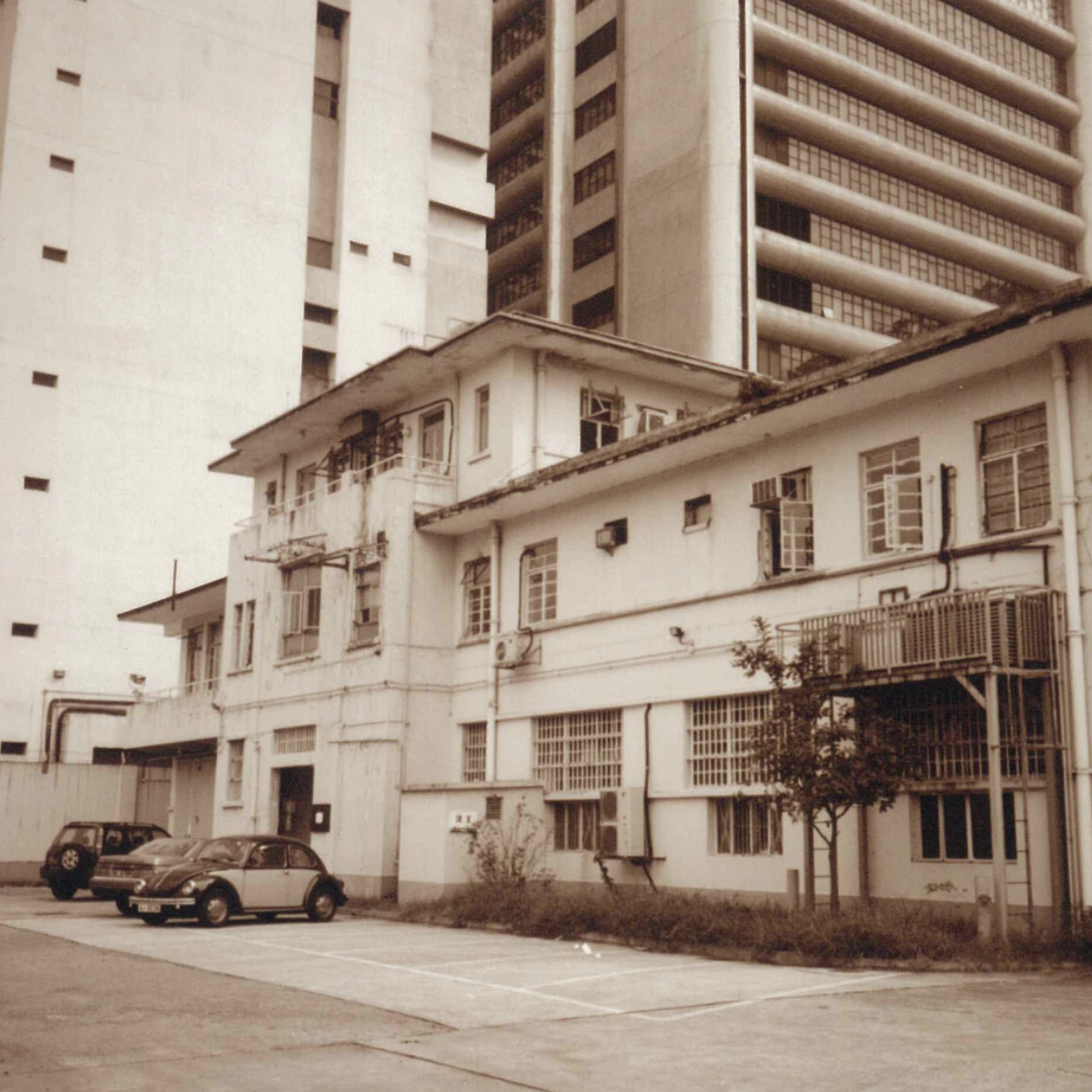
1998
Oil Street Artist Village opens (1998–99)
Artist-run spaces
In 1998, artists began moving into the former Government Supplies Department on Oil Street in North Point, Hong Kong Island. Rented out on a short-term lease at HKD 2.50 per square foot, the cheap rent and large premises attracted many practitioners and soon became Hong Kong’s first artist village. Some of the tenants of the Oil Street complex included Almond Chu 朱德華, Ringo Tang 鄧鉅榮, Artist Commune, Frog King 郭孟浩/ 蛙王, Tsui Puiwan 徐佩環, 1a space, On and On Theatre 前進進戲劇工作坊, and Z+.
However, in October 1999, the government reacquired Oil Street for commercial redevelopment and gave tenants the notice of termination. Thirty artists and art groups in the village initiated the Save Oil Street Campaign, which included the official registration of the Oil Street Artist Village as a nonprofit art organisation. The campaign received widespread media coverage but failed to save the site. Instead, the government agreed to reassign another dedicated space for artists at the renovated Cattle Depot complex in Kowloon. Tenants moved out of Oil Street and temporarily resettled in Kai Tak and Cheung Sha Wan before moving into Cattle Depot between 2001 to 2002. During its 14-month existence, more than 100 public events were held with an attendance record of over 20,000 at Oil Street Artist Village.
On 21 May 2013, the Leisure and Cultural Services Department opened Oi! art space at 12 Oil Street, next to the then-demolished Government Supplies Department Complex, which housed the Oil Street Artist Village.
info.gov.hk. “Oi! opens today to provide new art space for community (with photos).” Press Release, 21 May 2013.
https://www.info.gov.hk/gia/general/201305/21/P201305210472.htm.
Asia Art Archive. “Oil Street Archive.” Collections. Accessed 31 May 2023.
https://aaa.org.hk/en/collections/search/archive/oil-street-archive.
Dewolf, Christopher. “Fuel for Thought in the History of Oil Street, Hong Kong.” South China Morning Post, 1 March 2020.
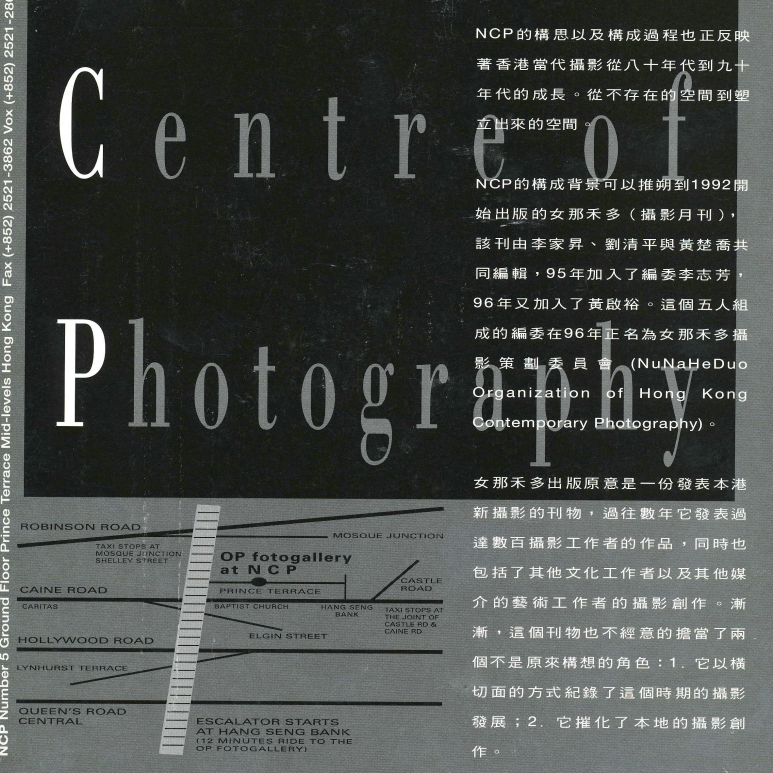
1998
NuNaHeDuo Centre of Photography opens (1997–99)
Artist-run spaces
NuNaHeDuo Centre of Photography was founded in 1997 by Lee Ka-Shing 李嘉誠 and Patrick Lee. In April 1998, it opened its physical premises at Prince's Terrace in Central, Hong Kong Island. The Centre was dedicated to the promotion and development of contemporary photography and closed in 1999.
Asia Art Archive. [Independent Initiative File (Hong Kong): NuNaHeDuo Centre of Photography.] Accessed 18 January 2024.
https://aaa.org.hk/archive/83795.
Lee, Wing Ki. “Locating Photographic Practice in Hong Kong since the 1960s: A Final Report for Asia Art Archive Research Grant 2011.” Asia Art Archive, 2011.

1998
1a space opens
Artist-run spaces
1a space is an experimental art space that welcomes new media, giving artists an alternative to established institutional spaces. This was exemplified by their inaugural exhibition “National Museum or Gallery?,” which invited visitors to question the local art system and its proclivity towards Chinese ink art. As of 2023, 1a space has presented over 170 exhibitions and activities since its opening and continues to organise community art and education programmes, cultural festivals, and international exchanges. The contemporary art organisation’s founding members are Choi Yan Chi 蔡仞姿, Howard Chan 陳沛浩, Hiram To 杜子卿, May Fung馮美華, Kary Kwok郭家賜, Irene Ngan顏淑芬, and Mandy Chow 周喻君. 1a space had its start at Oil Street Artist Village in North Point, Hong Kong Island. In 2002, due to the closure of Oil Street, the organisation moved to Cattle Depot Artist Village in To Kwa Wan, where it has remained since.
1a Space. Accessed 21 September 2023.
https://www.oneaspace.org.hk/.
Lee, Christie. “Local Art: Like its Namesake Bus Line, 1A Space is Quintessentially Hong Kong,” ZolimaCityMag, 28 January 2019.
https://zolimacitymag.com/artist-choi-yan-chi-turned-1a-space-into-quintessential-hong-kong-gallery/.
Asia Art Archive. [Independent Initiative File (Hong Kong): 1a Space.] Accessed 21 September 2023.

1998
City University of Hong Kong’s School of Creative Media established
Art education
City University of Hong Kong’s School of Creative Media was established in 1998 at 18 Tat Tong Avenue in Kowloon Tong, Kowloon, to provide interdisciplinary education to practising and aspiring interdisciplinary artists and creative media professionals. Self-described as the first institution of its kind in the region, the School of Creative Media’s programmes combine computer science, fine arts, visual design, creative writing, cultural studies, and digital technology.
School of Creative Media, City University of Hong Kong. “Milestones.” Accessed 20 September 2023.
https://www.scm.cityu.edu.hk/about-scm/milestones.
School of Creative Media, City University of Hong Kong. Accessed 20 September 2023.

1999
Government launches a comprehensive review of Hong Kong’s education system
Policies and socio-political events
Led by Hong Kong’s first Chief Executive Tung Chee-hwa 董建華, the Hong Kong government launched a comprehensive review of the city’s education system in 1999 to reassess its academic structures post-Handover and to better equip the city in its transition to a knowledge-based economy.
In Tung’s 1999 Policy Address, he stated: “If Hong Kong wishes to become a knowledge-based economy in the information age, we must continue to innovate and change. This is why we must embrace ‘life-long learning.’ School education should aim at fostering in students an interest and an ability in learning so that they are able to acquire knowledge throughout their lives and respond effectively to changing circumstances.” He also noted the introduction of mother-tongue (i.e. Cantonese) teaching in September 1998 has enabled students to achieve “better results in all subjects, including English.”
The review was implemented in three stages between January 1999 to July 2000. It included three rounds of public consultations, which were open to students, teachers, parents, and other members of the community. Among the topics discussed were the implementation of a standardised medium of instruction, the application of Information Technology education, and the examination-based structure of the academic curriculum.
Findings from the second round of public consultations revealed that “Almost all respondents, including employers, teachers, parents, students, political parties express that the present education system is too examination-oriented,” while “Many respondents consider that the banding system should be abolished as soon as possible to avoid labelling effects on low academic achievers.” As of 2023, Hong Kong still categorises its secondary schools in examination results-based bands.
The review ushered in the replacement of two colonial university entrance examinations, the Hong Kong Certificate of Education Examination and the Hong Kong Advanced Level Examination, into the Hong Kong Diploma of Secondary Education (HKDSE).
Education Commission. “Consultation Documents.” Accessed 21 September 2023.
https://www.e-c.edu.hk/en/publications_and_related_documents/consultation_documents.html.
policyaddress.gov.hk. “The 1999 Policy Address.” Accessed 21 September 2023.
https://www.policyaddress.gov.hk/pa99/english/part4-1.htm.
The Education Commission of the Hong Kong Special Administrative Region, The People’s Republic of China. “Review of Education System Reform Proposals: Consultation Document,” May 2000.
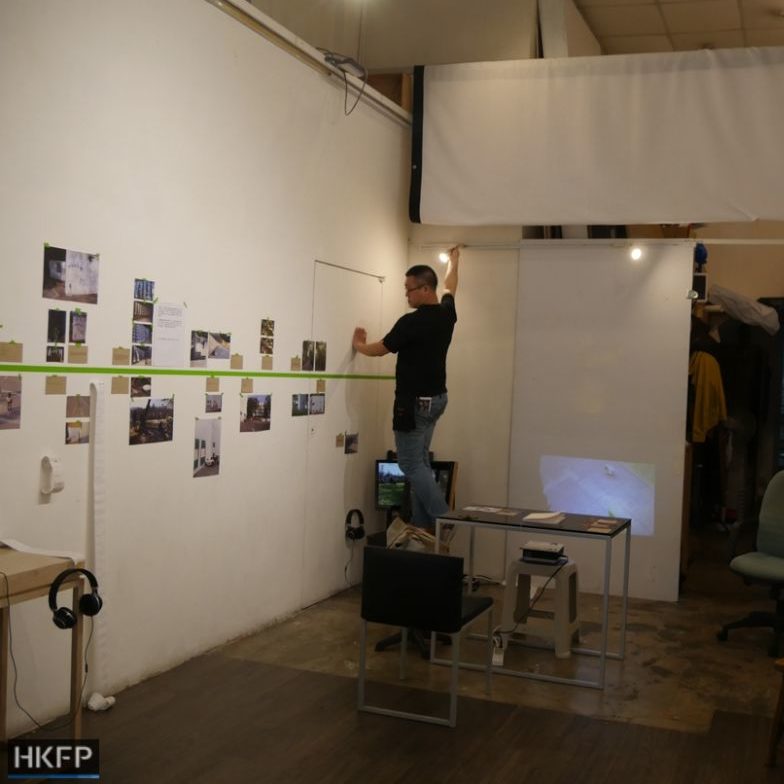
1999
HKADC rents out Shanghai Street Artspace (1999–2019)
Policies and socio-political events
Initiated by the Hong Kong Arts Development Council (HKADC) with the assistance of the Home Affairs Bureau and Lands Department, Shanghai Street Artspace was a for-lease exhibition space with an annual rate of HKD 1.
Located at 404 Shanghai Street in Yau Ma Tei, Kowloon, Shanghai Street Artspace was then rented out to art groups selected via open calls on a two-year lease. Its tenants included the alternative art space Woofer Ten 活化廳 (2009–15) and Centre for Community Cultural Development’s Green Wave Art space (2016–19).
In 2018, the HKADC announced that the Artspace had to close because they were unable to secure a Places of Public Entertainment Licence from the Food and Environmental Hygiene Department through the Lands Department, which owns the premises.
Chan, Holmes. “The final days of Hong Kong’s Green Wave Art space – a community arts hub like no other.” Hong Kong Free Press, 28 April 2019.
Asia Art Archive. [Independent Initiative File (Hong Kong): Shanghai Street Artspace]. Accessed 18 September 2023.
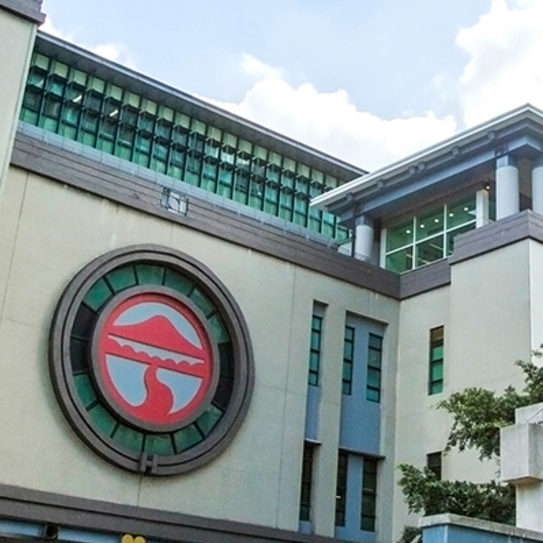
30.07.1999
Lingnan University acquires university status
Art education
Initially established in Guangzhou as Christian College in China in 1889, Lingnan College moved to Hong Kong in 1938 following the fall of Guangzhou during the Second Sino-Japanese War. It returned to mainland China after the Second World War but was ultimately re-established in Hong Kong as Lingnan School in 1967, where it provided preparatory form education and non-degree programmes. Later on, the school began to offer diploma programmes. It changed its name to Lingnan College in 1978.
In 1995, the college moved to Tuen Mun, New Territories, and positioned itself as a Liberal Arts school. It acquired university status from the Hong Kong government four years later in 1998 and changed its name to Lingnan University on 30 July 1999. Lingnan University comprises Faculties of Arts, Business, and Social Sciences, as well as the School of Graduate Studies.
Lingnan University. Accessed 20 September 2023.
Lingnan University. “Milestones.” Accessed 18 January 2024.
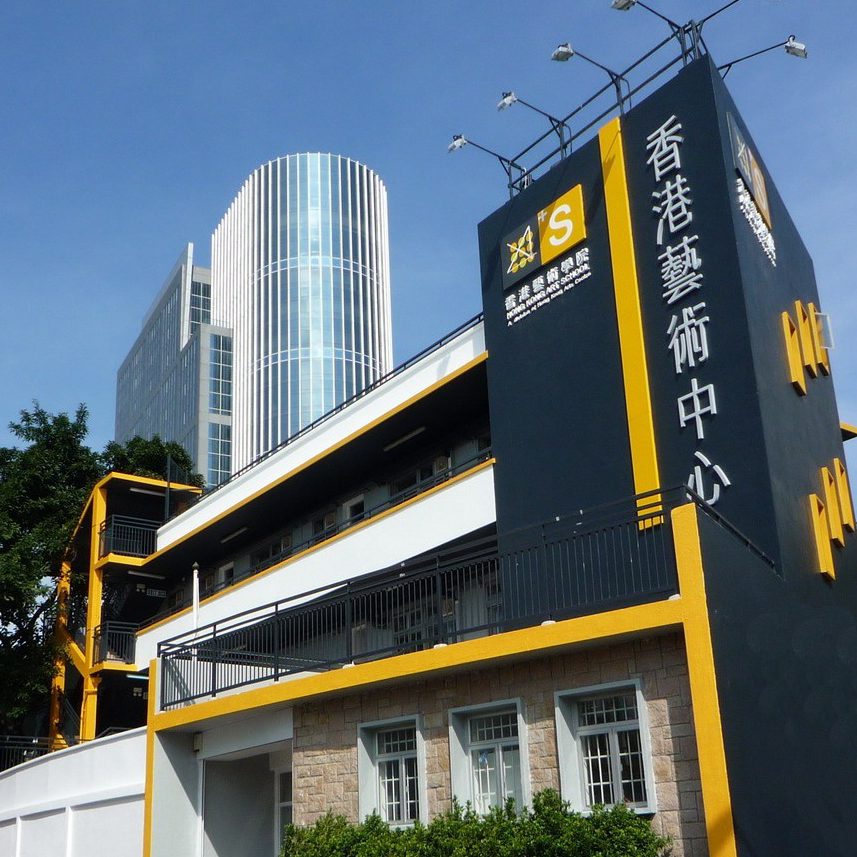
01.2000
Hong Kong Art School established
Art education
The education department of the Hong Kong Arts Centre was established as the Hong Kong Art School in January 2000. It offers self-funded Higher Diplomas and Bachelors of Fine Art (BFA) in Ceramics, Painting, Photography, and Sculptures. The BFA. programme is co-presented by RMIT University.
The Hong Kong Art School’s campus is located at Youth Square in Chai Wan, Hong Kong Island.
Hong Kong Art School. Accessed 23 September 2023.
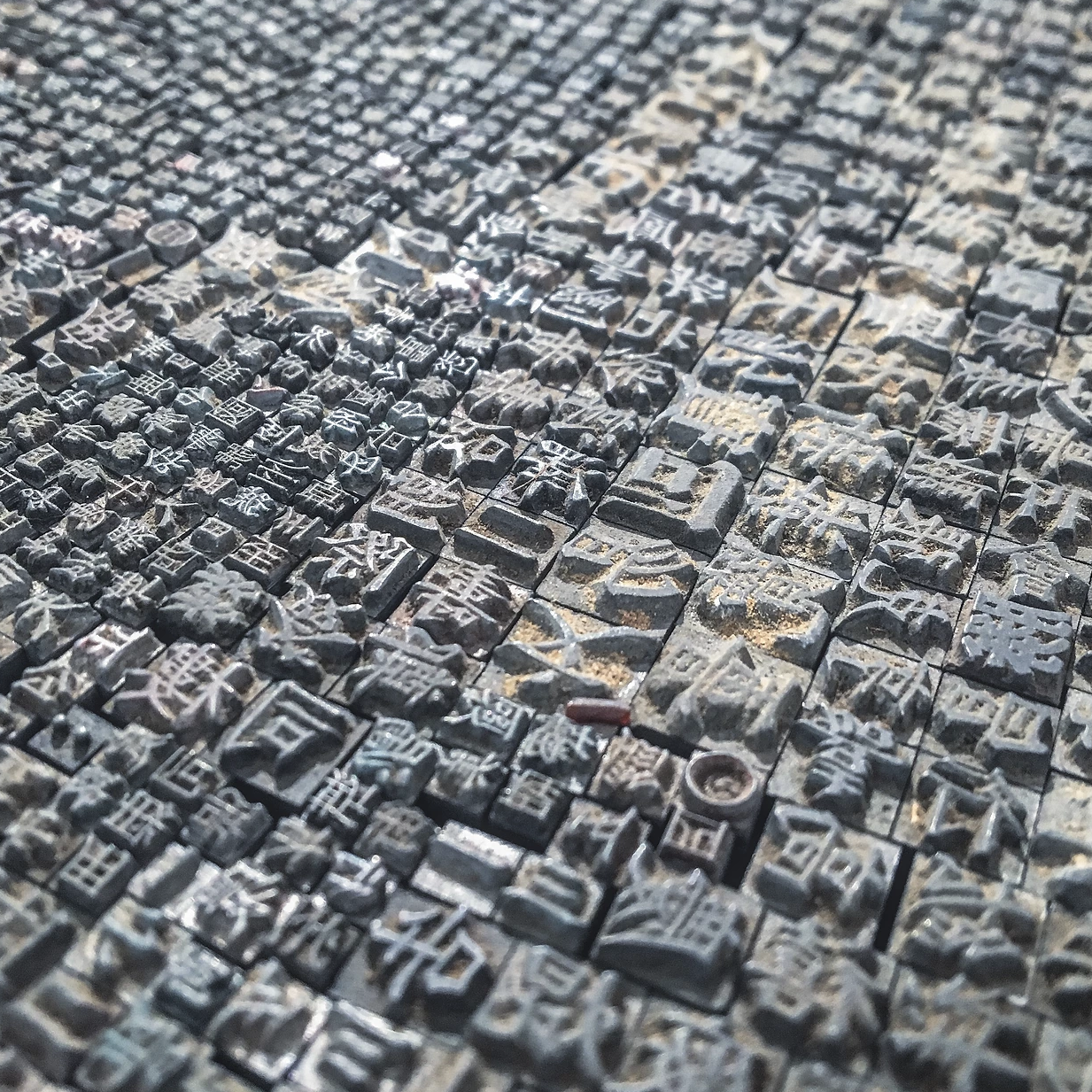
2000
Hong Kong Open Printshop opens
Artist-run spaces
Hong Kong Open Printshop (HKOP) opened as the city’s first nonprofit, artist-run print shop at Shanghai Street in Yau Ma Tei, Kowloon. Founded by print artist Yung Sau-mui and photographer Fung Ho-yin, HKOP was founded with the goal of promoting graphic art, preserving local print culture, and facilitating international exchange. In 2008, it found a permanent space in Jockey Club Creative Arts Centre (JCCAC) in Shek Kip Mei and was registered as a charitable organisation in 2012. HKOP hosted the global printmaking conference IMPACT11 in 2021 and established the Hong Kong Open Press in 2022.
DeWolf, Christopher. “The Revolution Will Be Printed: Hong Kong’s Pop Up Press.” Zolima City Mag, December 9, 2015. https://zolimacitymag.com/the-revolution-will-be-printed-hong-kongs-pop-up-press/
Hong Kong Open Printshop. “Our Story.” Accessed 21 September 2023.
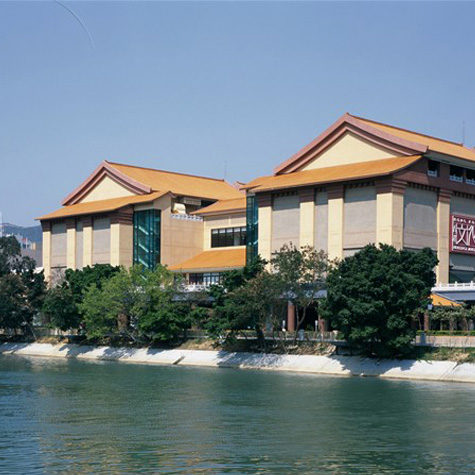
12.2000
Hong Kong Heritage Museum opens
Museums
In December 2000, the Hong Kong Heritage Museum opened at 1 Man Lam Road in Sha Tin, New Territories. Operated by the Leisure and Cultural Services Department, the museum aims to “[preserve] and [interpret] cultural heritage of Hong Kong as well as to [collect] a wide range of artifacts and works of art from the territory and neighbouring regions.” It comprises 7,500 square meters of exhibition space that is divided into five permanent and six thematic galleries. The museum’s collection is divided into the history collection (Local History Relics, Performing Art Relics, Folk Art and Popular Culture artefacts) and the art collection (Contemporary Art, Design and Chinese Fine Art).
The museum also publishes a quarterly newsletter, produces teaching kits and worksheets, as well as organises seminars, school and theatre programmes, and guided tours.
Hong Kong Heritage Museum. “Highlights.” Accessed 23 September 2023.
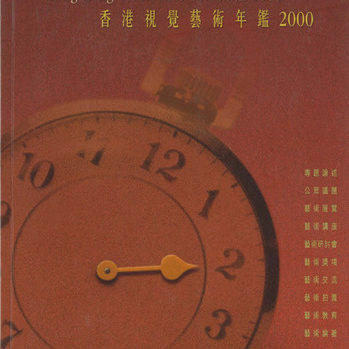
12.2000
Hong Kong Visual Arts Yearbook begins publication
Publications
The Chinese University of Hong Kong’s (CUHK) Department of Fine Arts published the first edition of the Hong Kong Visual Arts Yearbook in December 2000. While it began as a Chinese-language publication, the Yearbook became a Chinese and English bilingual periodical in 2004.
The annual publication is organised into two sections: critical “Essays” by academics that focus on local visual arts events and “Chronicles,” which gather and catalogue all visual arts events of the year, from exhibitions and symposiums to auctions, publications, awards, educational programmes, and public issues; “One is subjective observation and analysis on a broad scope, while the other is a microscopic listing of objective data; both are interdependent on as well as complementary to each other.”
In 2021, CUHK’s Department of Fine Arts authorised the CUHK Library to host the Yearbook in the university’s Digital Repository, which was officially launched in March 2022.
Hong Kong Visual Arts Yearbook. “About the Yearbook.” Accessed 23 September 2023.
2000
Leisure and Cultural Services Department established
Government bodies
The Leisure and Cultural Services Department (LCSD) was established under the Home Affairs Bureau to support the provision of recreational and cultural programmes. LCSD was to take over the roles of the autonomous Urban Council and Regional Council as part of former Chief Executive Tung Chee-hwa’s 董建華 plan to streamline and centralise the delivery of municipal services. The structural changes were opposed by the local Democratic Party.
LCSD oversees all of Hong Kong’s public museums, including the Hong Kong Museum of Art.
info.gov.hk. “1999 Policy Address by Chief Executive.” Press Release. Accessed 31 May 2023.
https://www.info.gov.hk/gia/general/199910/06/address1j.htm.
Hong Kong 2000. “New Framework for Delivery of Municipal Services.” Accessed 31 May 2023.
https://www.yearbook.gov.hk/2000/eng/02/c02-05.htm.
Legislative Council, Hong Kong Special Administrative Region Government. “Report of the Bills Committee on Provision of Municipal Services (Reorganization) Bill.” Accessed 31 May 2023.
https://www.legco.gov.hk/yr98-99/english/bc/bc73/report/b462e.pdf.
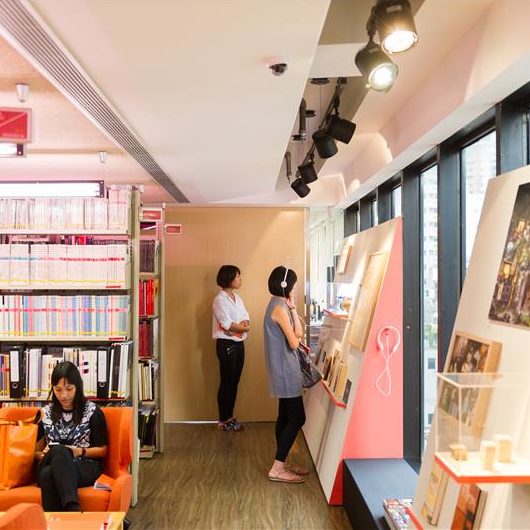
2000
Asia Art Archive opens
Libraries and archives
Asia Art Archive opened at 233 Hollywood Road in Sheung Wan, Hong Kong Island in 2000. The archive was co-founded by Claire Hsu 徐文玠 and Johnson Chang 張頌仁 to document and make accessible the recent history of arts in Asia. The organisation houses a growing collection of materials, has a physical and online library, conducts research, runs residencies, and organises education programmes. The Archive has since expanded with Asia Art Archive in America (New York) and Asia Art Archive in India (New Delhi).
Asia Art Archive. “About.” Accessed 31 May 2023.
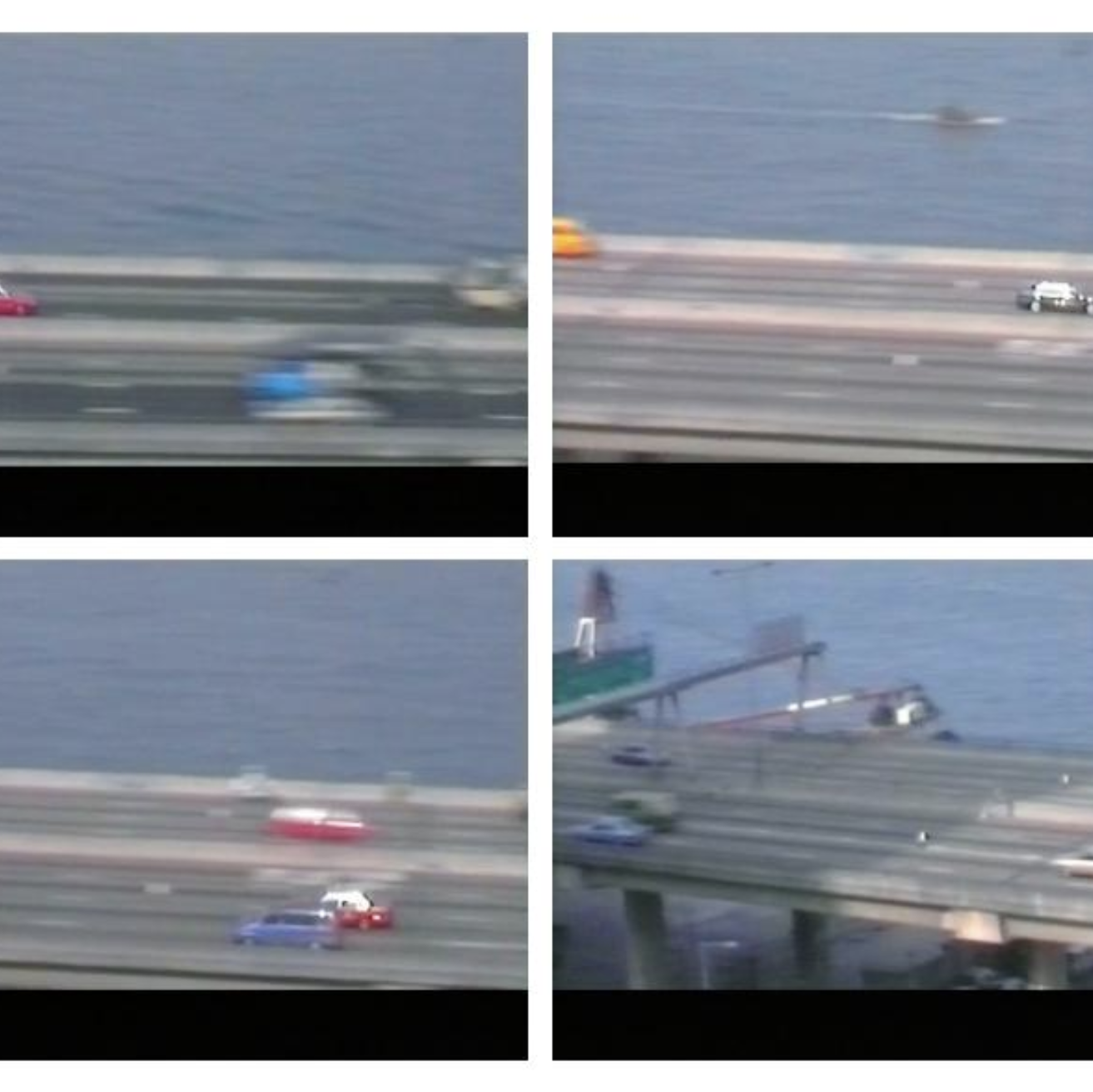
2001
Venice Biennale: “Magic at Street Level”
Festivals and mega-exhibitions
Hong Kong’s first participation in the Venice Biennale was an exhibition titled “China – Hong Kong Exhibition: Magic at Street Level” curated by Asia Art Archive co-founder and HanartTZ Gallery founding director Johnson Chang 張頌仁, with support from curator Oscar Ho 何慶基. Artists Ellen Pau 鮑藹倫, Ho Siukee 何兆基, and Warren Leung 梁志和 were selected to showcase their works under the curatorial framework of transformation and the changing experience of living in the metropolis city. The exhibition was presented by the Hong Kong Arts Development Council and the Leisure and Cultural Services Department. As a Special Administrative Region, Hong Kong’s pavilion was placed in a peripheral venue instead of the main Giardini site of the Biennale, which are allocated to national pavilions.
“The 49th Venice Biennial - Venice-Hong Kong: Magic at Street Level 2001.” Hong Kong, 2001. Accessed at Asia Art Archive: https://aaa.org.hk/archive/44910.

11.2001
Arts Development Fund (Cultural Exchange Project) launched
Awards, grants, residencies
Launched by the Home Affairs Bureau in November 2001, the Arts Development Fund (Cultural Exchange Project) is a government sub-fund under the Sir David Trench Fund for Recreation that aims to support local artists and art groups in outbound cultural exchange. In April 2020, the administration of the fund was taken up by the Hong Kong Arts Development Council (HKADC).
info.gov.hk. “Guidelines of the Arts Development Fund (Cultural Exchange Project) revised.” Press Release, 30 September 2010.
https://www.info.gov.hk/gia/general/201009/30/P201009300316_print.htm.
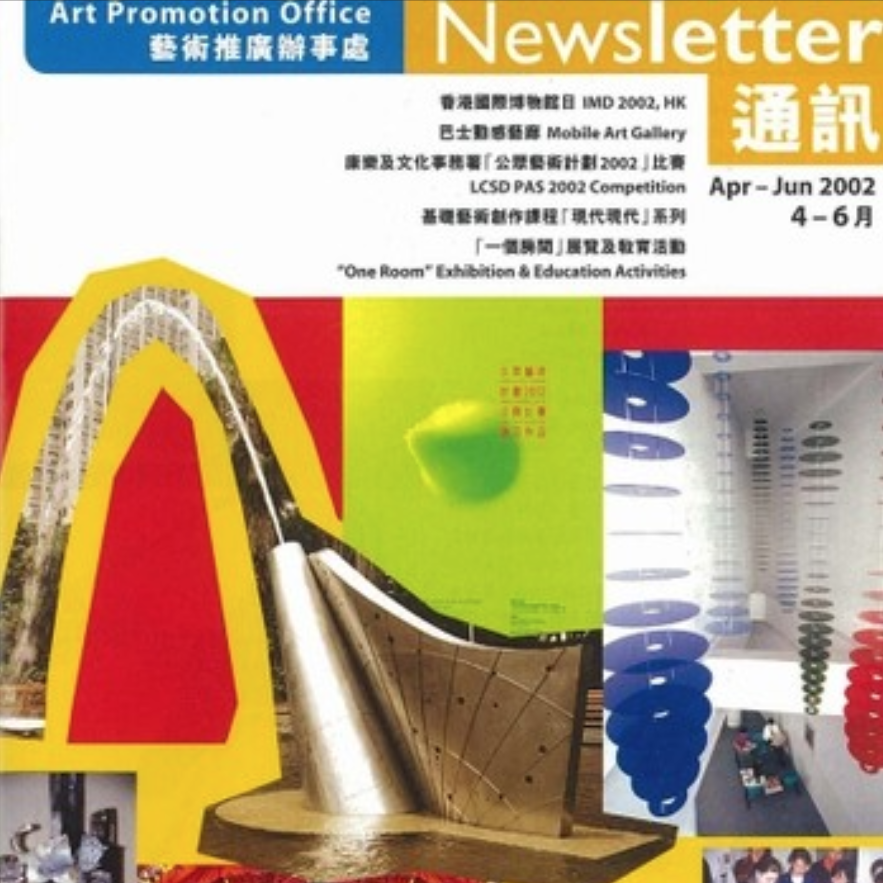
2001
Art Promotion Office opens
Government bodies
Operated under the Leisure and Cultural Services Department, the Art Promotion Office (APO) opened at the Hong Kong Visual Arts Centre in 2001 to provide art activities, services, and training for the public. APO also oversees the operations of vA! at Kennedy Road in Central, Hong Kong Island, and Oi! at the old premises of the Royal Hong Kong Yacht Club, next to the former site of the evicted Oil Street Artist Village in North Point, Hong Kong Island. Both art spaces were established to facilitate art-making, education, and exchange.
APO. Accessed 23 September 2023.
https://www.apo.hk/en/web/apo/home.html.
Chow, Vivienne. “A contemporary art space with attitude and ambition.” South China Morning Post, 10 May 2013.
https://www.scmp.com/news/hong-kong/article/1233970/contemporary-art-space-attitude-and-ambition.
info.gov.hk. “Oi! opens today to provide new art space for community (with photos).” Press Release, 21 May 2013.
https://www.info.gov.hk/gia/general/201305/21/P201305210472.htm.

2001
Ngau Pang Sue Yuen opens (2001–03)
Artist-run spaces
Ngau Pang Sue Yuen 牛棚書院, also known as Cattle Depot College, was an art collective that opened at the Cattle Depot Artist Village in To Kwa Wan, Kowloon, in 2001. It was run by Zuni Icosahedron with the aim of offering an avant-grade education on art and other topics to the wider public. In addition to its courses and talks, it also published the quarterly cultural magazine E+E. It has been inactive since 2003.
Penelope Yau. “Promotion of alternative art.” Culture & Leisure, 2003.
https://varsity.com.cuhk.edu.hk/varsity/0305/culture_leisure_b.htm.
陳嘉儀:〈牛棚不是藝術村! 〉。大學線 月刊。

2001
Studio 318 opens in Fo Tan (Fotanian)
Artist-run spaces
The residential and industrial Fo Tan district in the New Territories developed an artist community among students and graduates of the Chinese University of Hong Kong’s (CUHK) Fine Arts Department when Gordon Lo, Lam Tung-pang, Tony Ma, Tozer Pak, Sam Tang, Castaly Leung, Amy Lee, and Joey Wong held their first open studio exhibitions at Studio 318 in Fo Tan in 2001. This was the precursor to the annual Fotanian Open Studios held in 2003. That same year, the Hong Kong Museum of Art invited artist studios in Fo Tan to participate in the Hong Kong Art Biennial.
Fotanian continued to expand as more graduates from CUHK and the Hong Kong Art School moved in, attracted by cheaper rents and the location’s proximity to CUHK. By 2007, Fotanian comprised over 100 artists and 28 studios. Fotanian became a limited company in 2010.
In 2002, the original eight members of Studio 318 split into two groups: Gordon Lo, Lam Tung-pang, Tony Ma, Tozer Pak, and Sam Tang established their own studio named Mr. 221, and Castaly Leung, Amy Lee, and Joey Wong set up a separate studio in the same building. The first official Fotanian Open Studios took place in 2003.
Lam Tung Pang. “From Fo Tan to Fotanian.” Accessed 30 March 2020.
http://www.lamtungpang.com/writings/files/.
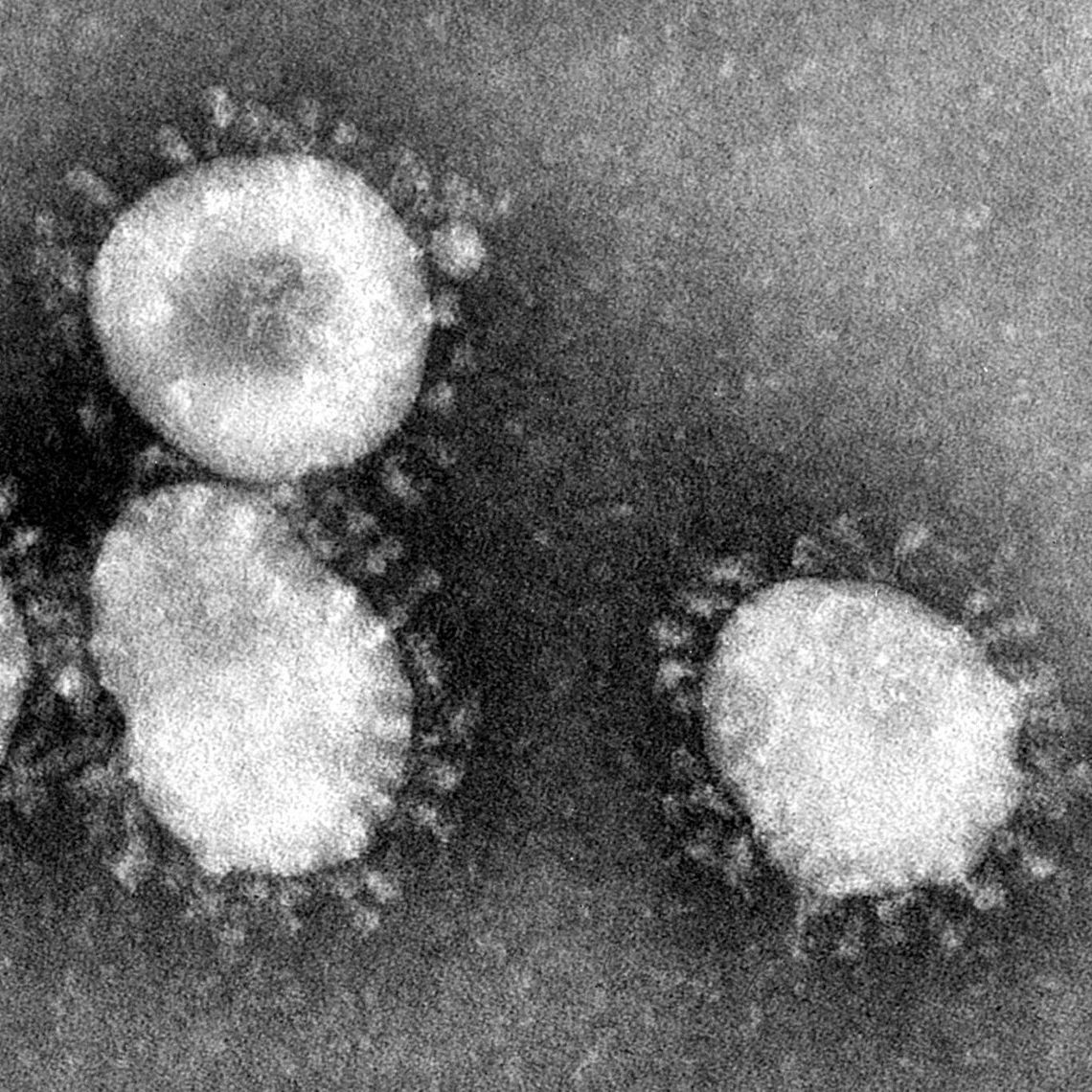
2002
SARS Epidemic (2002–03)
Policies and socio-political events
First identified in Foshan, Guangdong, on 16 November 2002, the severe acute respiratory syndrome (SARS) had its first confirmed case in Hong Kong in March 2003. In Hong Kong, a total of 1,750 people were infected and 286 died from the outbreak, while more than 8,000 people were infected globally. The World Health Organisation declared SARS contained on 5 July 2003.
Lee, Shiu Hung. “The SARS epidemic in Hong Kong: what lessons have we learned?” Journal of the Royal Society of Medicine, 2003.
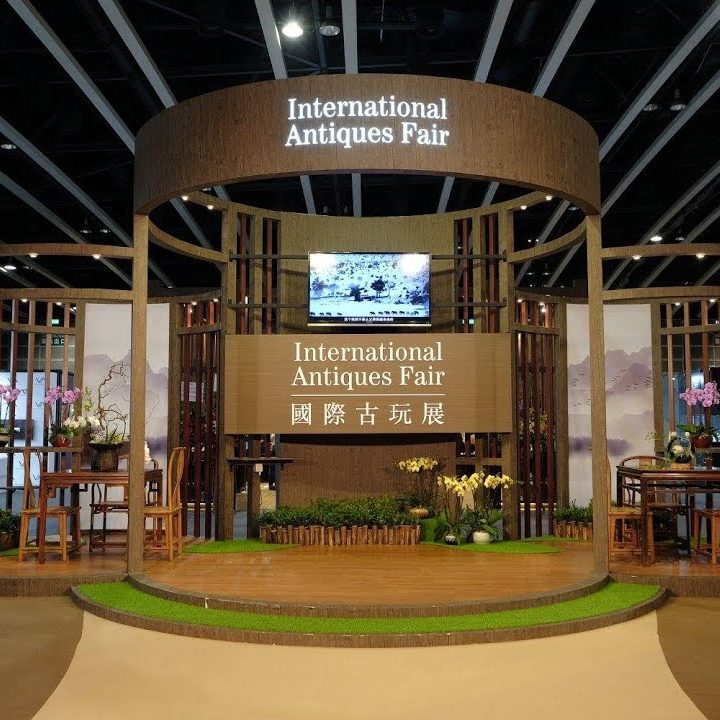
2002
First Hong Kong International Antiques Fair
Art fairs
Founded by antique dealers William and Priscilla Chak, the International Antiques Fair (IAF) was launched in 2002 as an annual event that brought together dealers in Chinese and Asian antiques from all over the world. The fair, which in recent years has started to include western antiques, offers lectures, exhibitions, guided tours, and antique appraisal services to encourage more people to learn about antiques.
International Antiques Fair. “Introduction” and “History.” Accessed 29 November 2023. http://www.iaf.com.hk/eng/p1.asp; http://www.iaf.com.hk/eng/p1_02.asp.

2002
Arts Education Expo 2002
Art education
In 2002, the Arts Education Expo 2002 was organised by the Hong Kong Arts Development Council in association with the Hong Kong Heritage Museum. A total of 41 primary and secondary schools, arts groups and organisations were invited to demonstrate their success in arts education in the form of exhibitions, workshops, games and performances.
Hong Kong Arts Development Council. “Promoting Arts Education.” In the 20th Anniversary Souvenir Book, 42–47. Hong Kong: Hong Kong Arts Development Council, 2016. Accessed via https://www.hkadc.org.hk/en/about-us/hkadc-publications.

01.07.2003
July 1 protest against Article 23
Policies and socio-political events
Held annually since the Handover of Hong Kong on 1 July 1997, the Hong Kong July 1 protest was organised by the Civil Human Rights Front (2002–21) and first gained broader public attention in 2003 when it had an estimated record turnout of more than half a million marchers.
The 2003 protest opposed the legislation of a Hong Kong national security law, Article 23 of the Basic Law:
"The Hong Kong Special Administrative Region shall enact laws on its own to prohibit any act of treason, secession, sedition, subversion against the Central People’s Government, or theft of state secrets, to prohibit foreign political organizations or bodies from conducting political activities in the Region, and to prohibit political organizations or bodies of the Region from establishing ties with foreign political organizations or bodies."
Then-chief executive Tung Chee-hwa 董建華 shelved Article 23 after more than half a million people marched in protest.
On 30 June 2020, the Law of the People’s Republic of China on Safeguarding National Security in the Hong Kong Special Administrative Region was passed by the national legislature of the People’s Republic of China. On 19 March 2024, Article 23 of the Basic Law was passed after a unanimous decision by the Legislative Council.
Read more about the Basic Law at https://www.basiclaw.gov.hk/en/basiclaw/index.html.
Read more about the National Security Law at https://www.elegislation.gov.hk/doc/hk/a406/eng_translation_(a406)_en.pdf.
Kleeman, C. George. “The Proposal to Implement Article 23 of the Basic Law in Hong Kong: A Missed Opportunity for Reconciliation and Reunification Between China and Taiwan.” Georgia Journal of International and Comparative Law 33 (2005): 705–20.
“Huge protest fills HK streets.” CNN, 2 July 2003. https://edition.cnn.com/2003/WORLD/asiapcf/east/07/01/hk.protest/.
“July 1, 2003: 500,000 take to Hong Kong’s streets in protest against proposed national security legislation.” South China Morning Post, 14 June 2022. https://www.scmp.com/news/hong-kong/politics/article/3178339/july-1-2003-500000-take-hong-kongs-streets-protest-against.
Leung, Hillary. “Explainer: What is Article 23? Hong Kong’s homegrown security law finds itself back in the spotlight.” Hong Kong Free Press, 29 July 2023. https://hongkongfp.com/2023/07/29/explainer-two-decades-on-hong-kongs-homegrown-security-law-article-23-is-back-in-the-spotlight/.
“Timeline: Hong Kong’s July 1 carnival of dissent – how 17 years of protest demands fell silent.” Hong Kong Free Press, 2 July 2022. https://hongkongfp.com/2022/07/02/timeline-hong-kongs-july-1-carnival-of-dissent-how-17-years-of-protest-demands-fell-silent/.
“Article 23 then and now: What changed between 2002 and 2024, as Hong Kong’s local security law is resurrected.” Hong Kong Free Press, 4 February 2024. https://hongkongfp.com/2024/02/04/article-23-then-and-now-what-changed-between-2002-and-2024-as-hong-kongs-local-security-law-is-resurrected/.
“Explainer: What is Article 23? Hong Kong’s new security law.” Hong Kong Free Press, 6 February 2024. https://hongkongfp.com/2024/02/06/explainer-two-decades-on-hong-kongs-homegrown-security-law-article-23-is-back-in-the-spotlight/.

12.2003
First Fotan Open Studios
Artist-run spaces
Artist studios in Fo Tan, New Territories opened their doors to the public for the first Fotan Open Studios in 2003. More than 30 artists and 10 workshops were involved in the event. It took place on the 6th, 7th, 13th and 14th of December, spanning the course of two consecutive weekends.
HKU Fine Arts Alumni Association. “HKU Fine Arts in 40 Years.” Accessed 21 September 2023. https://hkufaaa.hk/theme/.
Asia Art Archive. [Independent Initiative File (Hong Kong): Fotanian Open Studios.] Accessed 21 September 2023. https://aaa.org.hk/en/archive-collection/26855.

2003
The Ink Society established
Artist and cultural groups
The Ink Society was established in 2003 by Alisan Fine Arts founder Alice King “to foster a broader understanding and appreciation of modern and contemporary art that is based on or inspired by the ink tradition.” The nonprofit collaborates with other institutions, such as the Fine Art Asia and Ink Asia fairs, to present exhibitions, screenings, and other programmes. It also publishes catalogues for individual artists, including Liu Kuo-sung 劉國松, Lui Shou-Kwan 呂壽琨, Irene Chou 周綠雲, and Luis Chan 陳福善. Since 2019, The Ink Society and the Liu Kuo-sung Archives have been co-presenting the Liu Kuo-sung Ink Art Award, which presents an HKD 100,000 cash prize to one winner each year.
The Ink Society. Accessed 29 May 2023.

2003
Art and Culture Outreach established
Artist-run spaces
Art and Culture Outreach (ACO) was established as a project to turn residential spaces at Foo Tak Building in Wan Chai, Hong Kong Island, into art spaces for the Dawei Charitable Foundation. ACO supports artists by offering them affordable spaces in Foo Tak Building to work and host events. It works to develop the local art and cultural scene with initiatives on art education, sound, green living, reading, and publication.
From 2005 to 2010, ACO ran an artist residency programme, which made a unit on the 14th floor of Foo Tak Building available to overseas practitioners at a low rent. ACO Books, an independent bookstore that hosts art and cultural events, opened in 2008.
Art and Culture Outreach. Accessed 31 May 2023.

2003
First Sovereign Asian Art Prize
Awards, grants, residencies
Co-founded by art collector Howard Bilton and Tiffany Pinkstone, the Sovereign Art Foundation launched the Sovereign Asian Art Prize, in 2003 to “[increase] the international exposure of artists in the region while raising funds for programmes that support disadvantaged children using expressive arts.” All shortlisted artworks, except for the Grand Prize winner, are made available for the charity auction, with the proceeds split equally between the artists and the foundation.
Entry to the Prize is on a nomination-only basis. Artists are nominated by a group of independent art professionals, and nominees are invited to enter up to three artworks for consideration. A cash prize of USD 30,000 is awarded to the Grand Prize winner. Previous winners of the Sovereign Asian Art Prize include Parul Gupta (2023), Azin Zolfaghari (2022), and Li Binyuan 厲檳源 (2021).
Sovereign Art Foundation. Accessed 23 September 2023.

2003
First Hong Kong Arts Development Awards
Awards, grants, residencies
The Hong Kong Arts Development Council (HKADC) hosted the first Hong Kong Arts Development Awards in 2003. The annual flagship award operates on a nomination-based system and aims to give formal recognition to distinguished arts practitioners, groups, and organisations that have made significant contributions to the arts in Hong Kong.
It has a total of seven award categories: Life Achievement Award, Award for Outstanding Contribution in Arts, Artist of the Year, Award for Young Artist, Award for Arts Education in Schools, Award for Arts Promotion and Education, and Award for Arts Sponsorship. The Artist of the Year and Award for Young Artist prizes are both divided into the categories of Arts Criticism, Dance, Drama, Film, Literary Arts, Media Arts, Music, Visual Arts, and Xiqu.
Hong Kong Arts Development Council. “Hong Kong Arts Development Awards.” Accessed 29 May 2023.

2003
Venice Biennale: “Para/Site: navigating the dot”
Festivals and mega-exhibitions
For Hong Kong’s participation at the 2003 Venice Biennale, the Hong Kong Arts Development Council selected Para/Site Art Space (now Para Site) to curate an exhibition and create works. Members of Para/Site then formed an 11-person collective, composed of artists, architects, curators, critics, designers, educators, and researchers, specifically for the Biennale project.
Titled “Navigating the Dot,” the exhibition reflected on Hong Kong’s position on the world map and in the art world: “The size of Hong Kong on a world atlas is no more than a dot, only visible to those who care. On the map of world art, the dot hardly exists. Whenever Hong Kong participates in international arts events, the issues of visibility, orientation and positioning in relation to her counterparts emerge.” Playing the role of a “facilitator,” Para/Site built cylindrical compartments in the space “to interrupt the Venice Biennale sight and site.” The compartments provided resting places for Biennale visitors while transforming the site into a space where each individual could carve their own path and way of navigation.
Participating artists included Chan Kai-yin 陳啟賢, Lau Kin-wah Jaspar 劉建華, Leung Chin-fung Jeff 梁展峯, Leung Wan-yee Janice 梁允怡, Li Man-wai Tim 李民偉, Liang Kan Yee-woo Evelyna 梁以瑚, Man Ching-ying Phoebe 文晶瑩, tamshui 淡水, Tsang Tak-ping 曾德平, Wong Chi Hang Sara 黃志恆, and Yeung Yang 楊陽.
50th Venice Biennale: Navigating the Dot - Artists from Hong Kong, China. Hong Kong: Hong Kong Arts Development Council, 2003. Published following the exhibition “50th Venice Biennale — Navigating the dot” at the 50th Venice Biennale.
Para Site. “50th Venice Biennale — Navigating the dot.” Accessed 19 November 2023.
https://www.para-site.art/exhibitions/50th-venice-biennale-navigating-the-dot/.
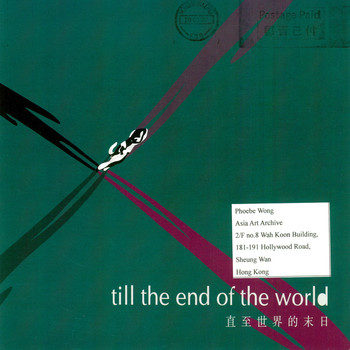
2004
Mere Independent Artist Group established
Artist and cultural groups
Founded in 2004, Mere Independent Artist Group (MIA) is an artist-led nonprofit focused on developing the careers of its members and promoting Hong Kong Contemporary Art. MIA organises exhibitions, talks, education programmes, and projects, such as the Art Container Project (2008–14), which invited Hong Kong artists to paint on shipping containers.
Asia Art Archive. [Independent Initiative File (Hong Kong): Mere Independent Artist.] Accessed 23 September 2023.
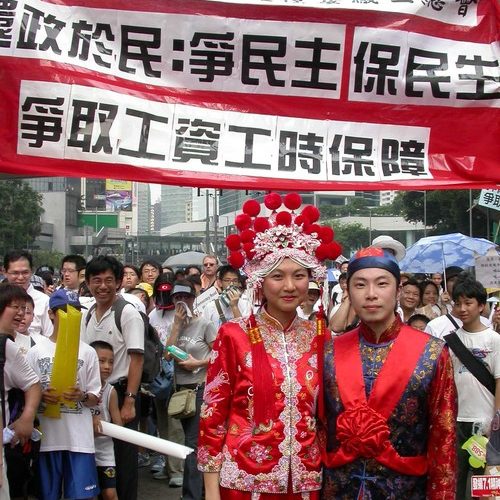
01.07.2004
July 1 Project 226 protest performance
Art events with a social cause
Project 226 artists Clara Cheung and Gum Cheng conducted their performance piece Marching Engagement during an anti-government protest on 1 July 2004. Hong Kong’s 1st of July marches had been an annual event organised by the Civil Human Rights Front since the Handover in 1997, but it was in 2003, when the Government sought to introduce national security legislation under the Basic Law’s Article 23, that the march began attracting greater public interest. For the 2004 rally, the artist-couple donned traditional wedding outfits to mark their engagement as they marched alongside 500,000 others, bringing “joy” and “luck” in their performance to an otherwise downcast economic situation. They later founded C&G Artpartment, a space in Prince Edward, Kowloon, dedicated to art that tackled socio-political issues.
Cheng, Gum. “What is not performance art?” In “The Ten Practices” Documentation of Performance Art Internships and Graduation Ceremony, 3-6. C&G Artpartment: 2011.
www.project226.org/images/226_internship_book.pdf.
Wen, Yau. “Hong Kong Performance Art Research Project.” Asia Art Archive, 2005. Accessed 21 September 2023.
https://aaa.org.hk/en/ideas/ideas/hong-kong-performance-art-research-project.
Cheng, Enoch. “Interview with Cheng Yee-man and Clara Cheung of C&G Artpartment.” Asia Art Archive, 1 April 2010.
Kwong, Kevin. “Political survivors.” South China Morning Post, 14 December 2010. https://www.scmp.com/article/733357/political-survivors.
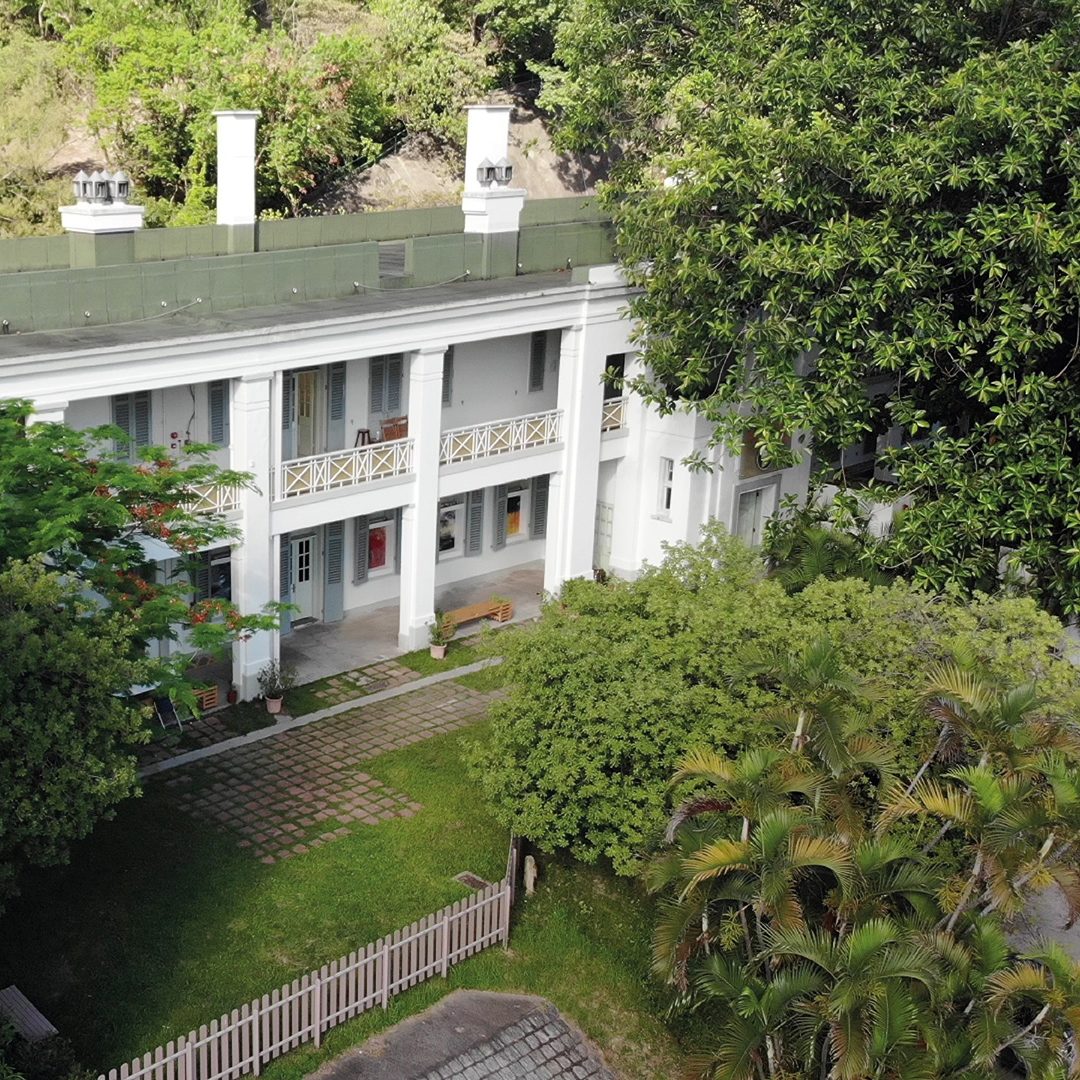
11.2004
HKBU establishes its Academy of Visual Arts
Art education
Hong Kong Baptist University (HKBU) established its Academy of Visual Arts (AVA) in November 2004 to provide visual arts undergraduate, postgraduate, and research degree programmes.
Located in the former Royal Air Force Officers’ Mess at the university’s Kai Tak campus, AVA launched its Bachelor of Arts in Visual Arts programme in September 2005. The programme offers two concentrations: 1) Studio and Media Arts and 2) Craft and Design, with courses on drawing, painting, Chinese arts, media arts, graphic arts, sculpture, glass, ceramics, object design, experience design, art history and theory, and visual and material culture.
In 2011, AVA expanded into the Lee Shau Kee Communication and Visual Arts Building in Kowloon Tong. Shortly after the expansion, in March 2012, news regarding the Kai Tak Campus’ upcoming lease expiration and the government’s decision to hike AVA’s monthly rent from HK$50,000 to HK$300,000 began to circulate. This was followed by HKBU’s announcement that it will cease tenancy in Kai Tak and relocate the entirety of AVA’s operations to the University’s newly opened Lee Shau Kee Communication and Visual Arts Building in Kowloon Tong. In response, AVA students and alumni formed the HKBU AVA Campus Development Concern Group to protest against leaving Kai Tak Campus. On 18 October 2013, South China Morning Post reported that “Baptist University’s visual arts academy will be able to extend the government lease of its heritage campus in Kai Tak for 10 years at a nominal monthly rent of HK$1, down from the HK$50,000 it paid for six years.”
AVA continues to run two campuses. Its Kai Tak campus features studios for painting, drawing, printmaking, sculpture, and ceramics; a metal foundry; and an exhibition space. The Kowloon Tong campus also comprises studios, exhibition spaces, and a darkroom.
Academy of Visual Arts, Hong Kong Baptist University. “AVA.” Accessed 23 September 2023.
Chow, Vivienne. “Visual Arts Academy to Stay at Kai Tak Campus - for HK$1 A Month.” South China Morning Post, October 18, 2013.
Wong Ying-kai Ada. Translated by Roberta Freya. “Visual Arts Education in Face of Hong Kong's Cultural Policy (or its lack of) - A Revelation from the HKBU Kai Tak Campus Incident.” In the Hong Kong Visual Arts Yearbook 2012, edited by Tong Kam-tang, 94–101. Hong Kong: Department of Fine Arts, The Chinese University of Hong Kong, 2012.
http://www.arts.cuhk.edu.hk/~fadept/Yearbook/YearbookEssays/2012/2012adawong_eng.pdf.
李海燕:〈香港浸會大學啟德校園續租事件〉。CUHK
http://hkvisualartsyearbook.org/lib/img/cuhkvayb/pdf/2012_PI_Kaitak_CHI.pdf.

2004
Hong Kong International Film Festival Society Ltd. is established
Festivals and mega-exhibitions
The Hong Kong International Film Festival Society Ltd. was established in 2004 as an independent, charitable organisation responsible for managing the subsequent development of the Hong Kong International Film Festival, which was previously overseen by various government departments.
Hong Kong International Film Festival. “About Us.” Accessed 31 May 2023.

2005
Venice Biennale: “Investigation of a Journey to the West by Micro + Polo”
Festivals and mega-exhibitions
Hong Kong’s participation at the 51st Venice Biennale was titled “Investigation of a Journey to the West by Micro + Polo” and explored the social function of art in an era of rapidly developing technology. Curated by Sabrina Fung 馮美瑩 and presented by the Hong Kong Arts Development Council (HKADC), the exhibition featured two artists, anothermountainman 又一山人 and Kurt Chan Yuk-Leung 陳育強.
Investigation of a Journey to the West by Micro + Polo - Artists from Hong Kong China (at the 51st Venice Biennale). Hong Kong: Hong Kong Arts Development Council, 2005. Accessed through Asia Art Archive: https://aaa.org.hk/archive/56278.
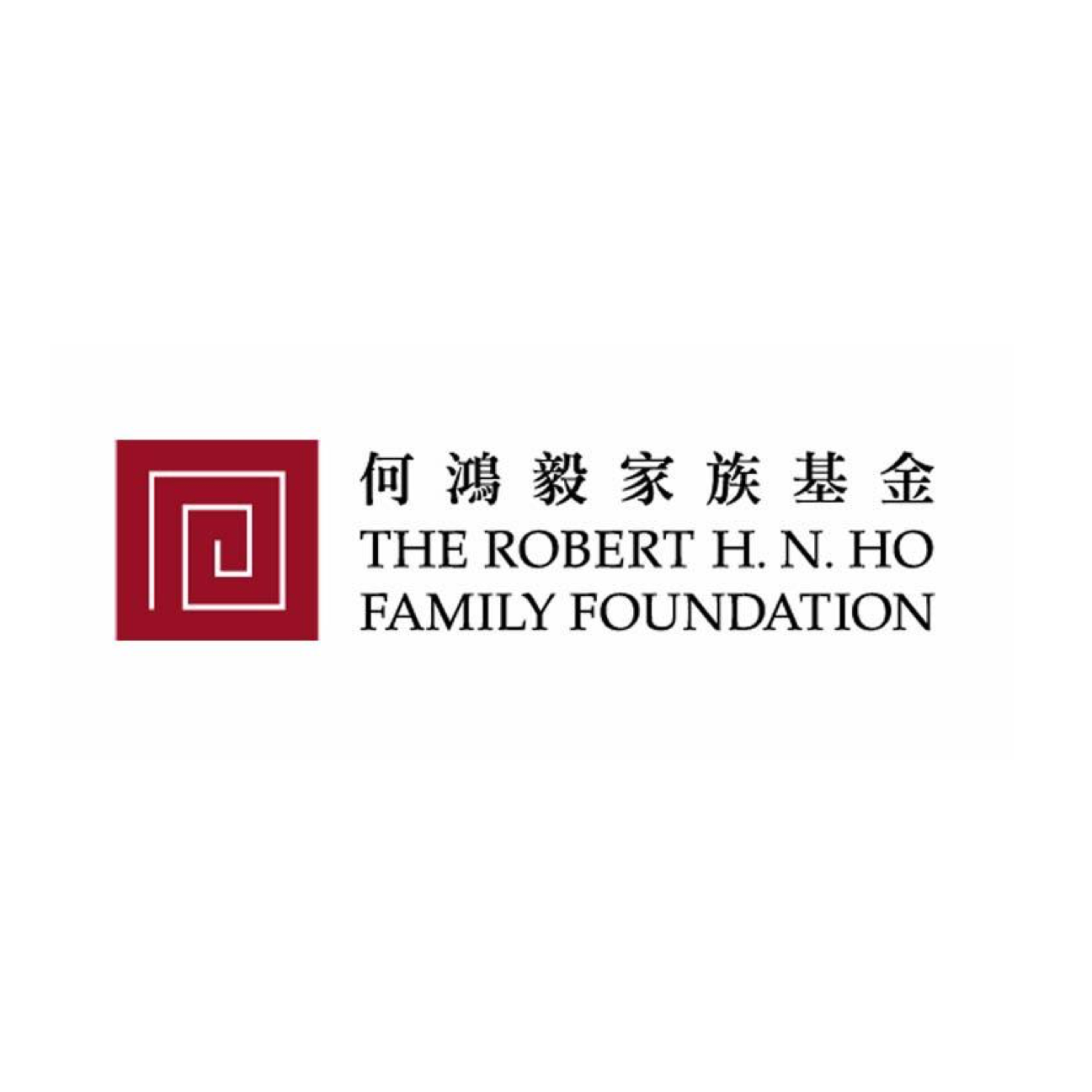
2005
Robert H. N. Ho Family Foundation established
Awards, grants, residencies
Established in 2005 by Robert H. N. Ho, the Robert H. N. Ho Family Foundation focuses on heightening the appreciation of Buddhism and Chinese arts and culture. The Foundation in Hong Kong offers grants to non-governmental organisations under two categories, “Arts and Culture” and “Quality of Life.”
The Robert H. N. Ho Family Foundation Global. Accessed 23 September 2023.
https://www.rhfamilyfoundationglobal.org/.
The Robert H. N. Ho Family Foundation Hong Kong. Accessed 23 September 2023.

2005
Public Art Hong Kong established
Non-collecting institutions
Incorporated in 2005 with the Hong Kong Arts Centre, Public Art Hong Kong is a nonprofit funded by the Y.K.Pao Foundation and connects private and public organizations with artists to create site-specific works.
Public Art Hong Kong. Accessed 23 September 2023.
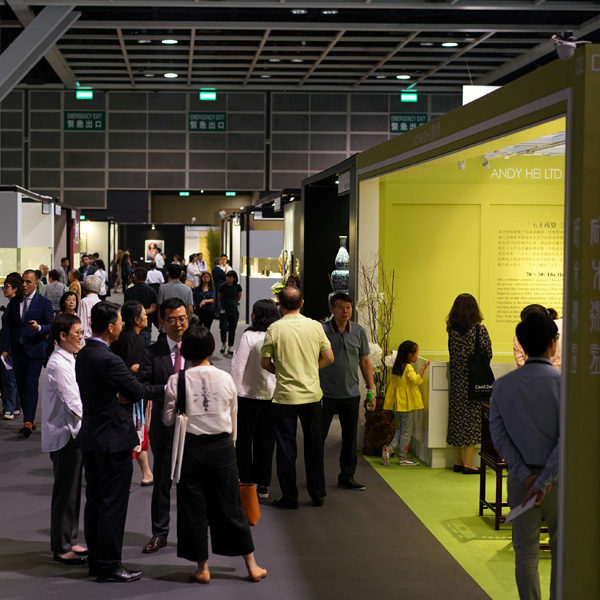
2006
First Fine Art Asia
Art fairs
First held in 2006, Fine Art Asia “is the only fair in Asia to showcase a wide range of collectible fine art from Asia and the West,” including antiques, ink art, and photography. The fair takes place every October.
Fine Art Asia. Accessed 23 September 2023.
Orientations. “Fine Art Asia.” Accessed 19 November 2023.
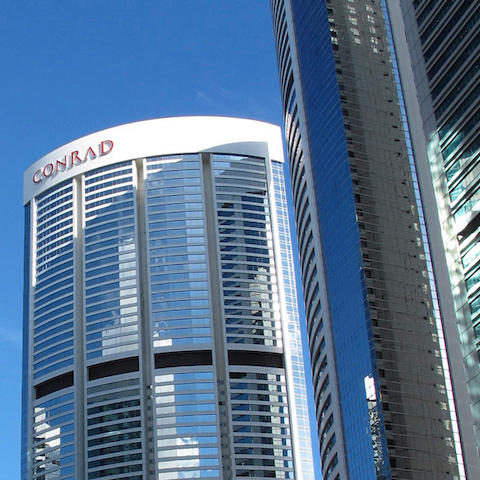
04.2007
Bonhams Hong Kong opens
Auction houses
International auction house Bonhams opened its Hong Kong office in 2007 at Two Pacific Place, 88 Queensway, Central, Hong Kong Island.
In 2014, the auction house opened its Southeast Asian headquarters and salesroom in Hong Kong, which they describe to be “the first dedicated salesroom established by any auction house” in the city.
Bonhams. Accessed 29 May 2023.
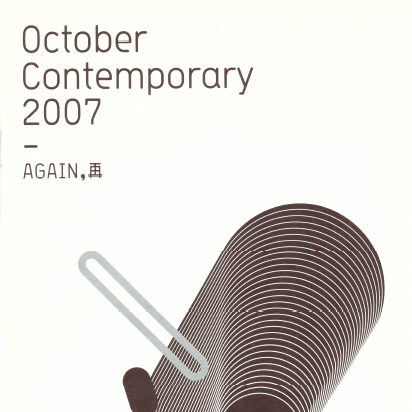
10.2007
First October Contemporary
Performances, screenings, exhibitions
The inaugural October Contemporary was launched by 1a Space, Artist Commune, Asia Art Archive (AAA), Goethe-Institut, the Hong Kong Arts Centre (HKAC), Osage Art Foundation, Para Site, and Videotage in October 2007. It was to be an annual event dedicated to the promotion of contemporary art and artists in Hong Kong and featured a month-long programme of talks, workshops, and exhibitions that would facilitate discourse. The theme for the first year was “AGAIN” and tackled the bridge between the traditional and the modern.
Asia Art Archive. [Event File (Hong Kong): October Contemporary 2007.] Accessed 21 September 2023.
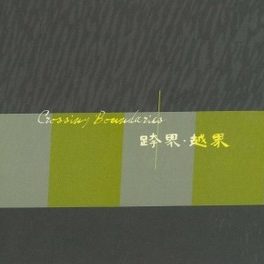
11.2007
First Hong Kong Graphic Art Fiesta
Festivals and mega-exhibitions
Organised by Hong Kong Open Printshop, the Hong Kong Graphic Art Fiesta was intended to be an annual printmaking festival and was first held at Tsuen Wan Town Hall, New Territories, in November of 2007. The festival lasted for two months and invited print-makers from around the world to showcase their work in the exhibition “Crossing Boundaries: An International Print Exchange Exhibition.” A second exhibition, “Hot Off the Press,” was dedicated to emerging print-makers from local universities and colleges. The festival also ran a series of activities and events dedicated to the promotion of print-making. The Fiesta would see a second and third edition in 2010 and 2013 respectively.
news.gov.hk. “Graphic Art Fiesta opens.” Accessed 15 January 2024. https://www.news.gov.hk/isd/ebulletin/en/citylife/071102/html/071102en20004.htm.
Hong Kong Graphic Art Fiesta 2007: Crossing Boundaries : An International Print Exchange Exhibition. Hong Kong: Hong Kong Open Printshop, 2007. Accessed through Asia Art Archive: https://aaa.org.hk/archive/70403.
Aberystwyth University. “Double Impression at Hong Kong Graphic Arts Fiestas.” Accessed 18 October 2023. https://www.aber.ac.uk/en/art/news-events/graphic-arts-fiestas/.
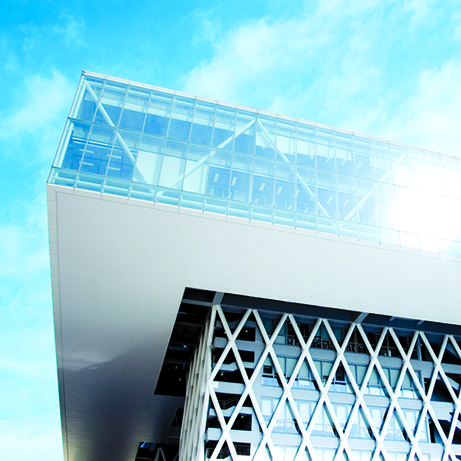
2007
Hong Kong Design Institute established
Art education
The Hong Kong Design Institute (HKDI) was established by the Vocational Training Council (VTC) in 2007 with the aim of centralising the design programmes offered by different Institute of Vocational Education campuses in Hong Kong. It offers over 20 full-time higher diploma and bachelor’s programmes across departments of Architecture, Interior and Product Design; Communication Design; Digital Media; and Fashion and Image Design.
In 2010, HKDI relocated to a combined campus with the Hong Kong Institute of Vocational Education (IVE) in Tiu Keng Leng, Tseung Kwan O New Town, New Territories. The campus features workshops, galleries, and fabrication facilities.
Hong Kong Design Institute. Accessed 23 September 2023.
Hong Kong Design Intitute. Online: Hong Kong Design Institute, 2023.
Vocational Training Centre. “Hong Kong Design Institute.” Accessed 23 September 2023.
https://vpet.vtc.edu.hk/wiki/index.php?title=Hong_Kong_Design_Institute.
SCMP Reporter. “Architects invited to submit designs.” South China Morning Post, 29 April 2006.
https://www.scmp.com/article/546704/architects-invited-submit-designs.

2007
C&G Artpartment opens (2007–21)
Artist-run spaces
C&G Artpartment is an independent art space founded by artist duo Clara Cheung and Gum Cheng in 2007. It opened at 222 Sai Yeung Choi Street South in Prince Edward, Kowloon. The space has hosted more than 100 art exhibition and numerous public programmes as well as producing several publications. According to C&G’s biography page on their website:
“C&G Artpartment has been one of the few artist-run space that proactively critiques social and political issues in Hong Kong and facilitates artists to make critical artworks in response. It believes that a healthy society needs freedom of expression and artistic creativity. The only way to defend such these values is to exercise them with the language of the arts.”
On June 30th, 2020, People’s Republic of China imposed National Security Law onto Hong Kong and, thereafter, started massive political persecution that destroyed the space for freedom of speech in Hong Kong. In August 2021, C&G Artpartment had to end its physical space in Hong Kong, and decided to move to the UK in the end of the year, in order to keep fighting for our artistic freedom and to encourage more to make critical art.”
C&G Artpartment. Accessed 5 January 2024.

2007
Lumenvisum established
Artist-run spaces
Lumenvisum is a nonprofit art organisation created with the aim of promoting photography. It was established by veteran photographers Chan Wai Man, Chan Kwong Yuen, Suen Shu Kwan, and Tse Ming Chong in 2007 and has since collaborated with more than 60 artists on over 50 exhibitions in Hong Kong. In 2008, it opened its permanent physical premises in Jockey Club Creative Arts Centre (JCCAC), Shek Kip Mei, Kowloon.
Lumenvisum. “Introduction.” About Us. Accessed November 22, 2023.
http://www.lumenvisum.org/site/en/.
Asia Art Archive. [Independent Initiative File (Hong Kong): Lumenvisum.] Accessed 19 November 2023.

2007
Muse Magazine begins publication (2007–10)
Publications
Muse Magazine was a monthly periodical on Hong Kong art and culture first published by East Slope Publishing Limited in 2007 and founded by Frank Proctor. The magazine was intended as an English-language publication directed towards both English- and Cantonese-speaking audiences. This resulted in a unique structure that took English as its primary language and supplemented it with quotes and paragraphs in Chinese. It became well-known for its long-form journalism with a niche readership. It ceased publication in 2010.
Chan, Holmes. “‘Muse’ was Hong Kong’s answer to ‘The New Yorker’. Then it died.” Still/Loud, February 9, 2018.
https://still-loud.com/2018/02/09/muse-was-hong-kongs-answer-to-the-new-yorker-then-it-died/.

2007
Venice Biennale: “Star Fairy”
Festivals and mega-exhibitions
The 52nd Venice Biennale saw Hong Kong’s participation with the exhibition “Star Fairy,” which invited artists Amy Cheung 張韻雯, Hiram To 杜子卿, and MAP Office (Laurent Gutierrez and Valérie Portefaix) to explore the surreal and mundane elements of the city. The show was curated by Norman Jackson Ford 傅德明 and presented by the Hong Kong Arts Development Council (HKADC).
Star Fairy: Hong Kong In Venice. Hong Kong: Hong Kong Arts Development Council, 2007. Accessed through Asia Art Archive: https://aaa.org.hk/archive/63441.
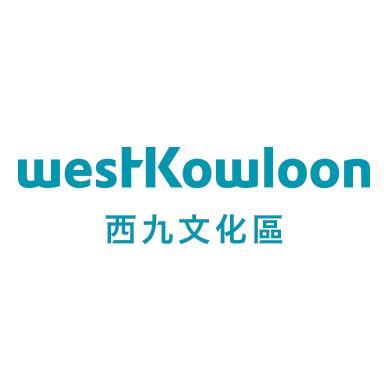
2008
West Kowloon Cultural District Authority established
Government bodies
West Kowloon Cultural District Authority (WKCDA)—the statutory body that oversees the development of the West Kowloon Cultural District (WKCD)—was established in 2008 under the West Kowloon Cultural District Authority Ordinance with a HKD 21.6 billion upfront endowment by the Legislative Council.
First introduced to the public by Chief Executive Tung Chee Hwa 董建華 during his 1998 Policy Address, the WKCD project is the government’s way of “cultivat[ing] Hong Kong’s image as the Asian centre of arts and culture” by building “proper venues for world-class events.” Prior to the establishment of WKCDA, the Consultative Committee on the Core Arts and Cultural Facilities of the District and its three advisory groups were formed in 2006 to consult with the local arts community.
WKCD spans 40 hectares of the southernmost part of the West Kowloon Reclamation Area and is designed to comprise an art park, theatres, and museums, as well as commercial facilities such as restaurants, hotels, and shopping centres. The development of WKCD has been conducted in phases, with the first including the construction of the Xiqu Centre for Chinese opera, the Freespace centre for contemporary performance, the M+ Museum of visual culture, and the Hong Kong Palace Museum.
In 2011, Lars Nittve, founding Director of the Tate Modern in London, became the inaugural Executive Director of M+. Two years later, on 24 September 2013, construction of the WKCD officially began with the groundbreaking for the Xiqu Centre. The M+ Pavilion opened in 2016 as a preliminary space for M+ exhibitions up until the opening of M+ on 12 November 2021.
West Kowloon. “About Us.” Accessed 15 January 2024.
https://www.westkowloon.hk/en/about-us.
Greenberger, Alex. “Lars Nittve Steps Down as Executive Director of M+.” Artnews, 5 October 2015.
https://www.artnews.com/art-news/news/lars-nittve-steps-down-as-executive-director-of-m-5078/.
West Kowloon. “Our Story.” Accessed 18 October 2023.
https://www.westkowloon.hk/en/our-story.
Tong, Valencia. “Doors After Years of Anticipation.” Artnews, 12 November 2021.
https://www.artnews.com/art-news/news/m-plus-museum-opening-hong-kong-2021-report-1234609957/.
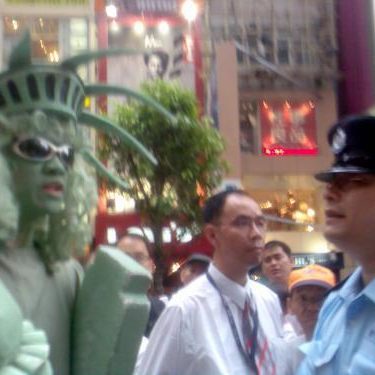
03.2008
Protest performances outside Times Square
Art events with a social cause
A series of performances took place outside Times Square in Causeway Bay, Hong Kong Island, in March 2008 in protest of the privatisation of public space. The series included such performances as Joao Vasco Paiva and Hector Rodriguez’s sound piece State Change, Leung Po Shan Anthony 梁寶山 and Tsang Tak Ping’s 曾德平 Walking Under the Greens, and Paul Ho and friends playing chess in When Time meets Flying Chess, among others.
Leung Po Shan Anthony and Seth Denizen. “Privatizing Public Space: Times Square Incidents in Hong Kong.” Asia Art Archive, 1 April 2015.

2008
First deTour design festival
Festivals and mega-exhibitions
Organised by creative cultural complex PMQ, the annual deTour design festival was first held in 2008. The event provides a platform for emerging and established designers to engage with the latest in innovative design.
deTour. Accessed 18 October 2023.
HK Magazine. “A Tour of Detour.” South China Morning Post, 18 November 2010.
https://www.scmp.com/magazines/hk-magazine/article/2032892/tour-detour.
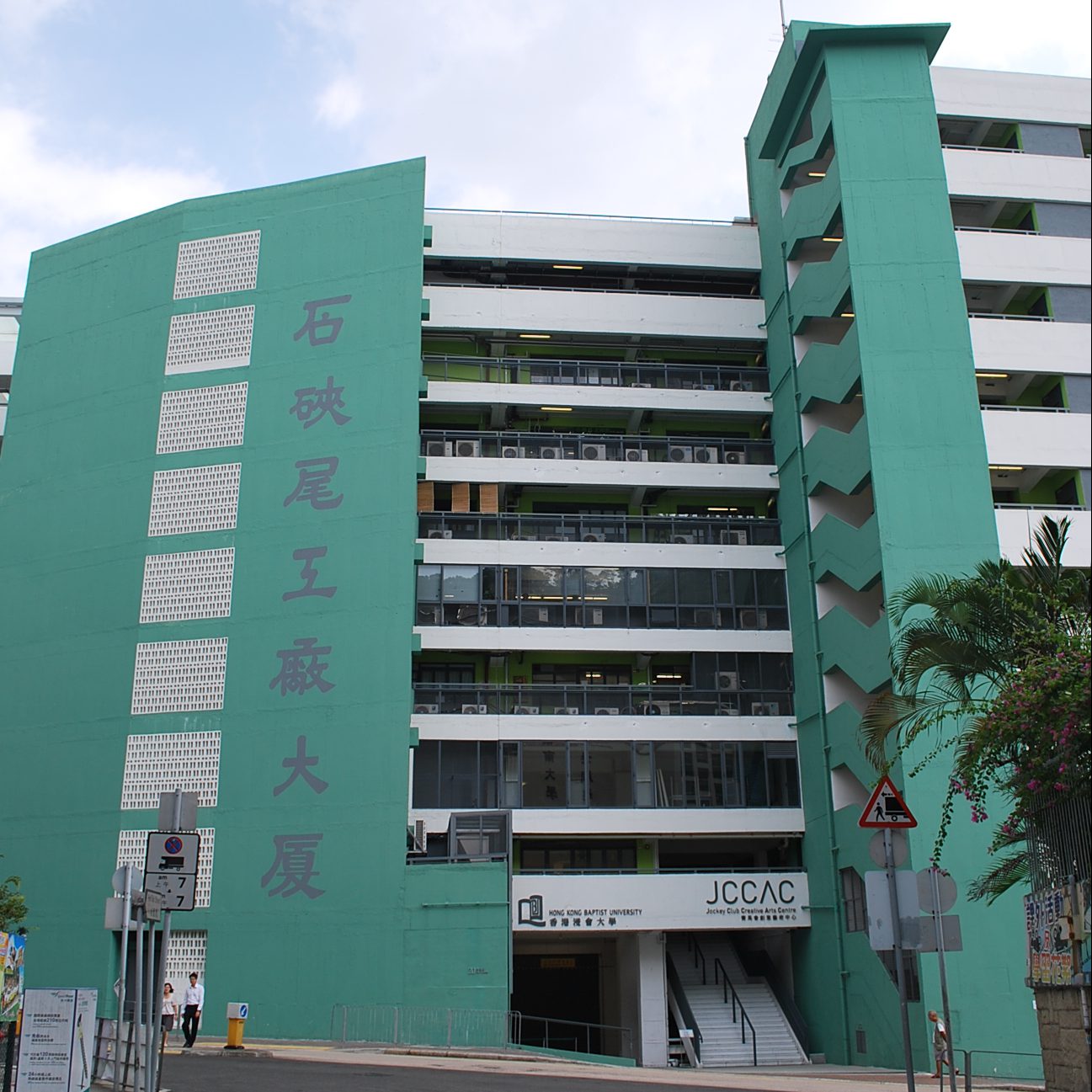
2008
Jockey Club Creative Arts Centre opens
Non-collecting institutions
The Jockey Club Creative Arts Centre (JCCAC) is a nine-storey artist village and arts centre that opened in a former factory in Shek Kip Mei, Kowloon, in 2008. Built through the support of the Government and the Hong Kong Jockey Club Charities Trust, JCCAC was established as a self-financing registered charity and a subsidiary of Hong Kong Baptist University with the aim of meeting the community’s need for affordable studios and exhibition facilities. Their tenants include Lumenvisum, Hong Kong Open Printshop, and Floating Projects. JCCAC also houses the Jockey Club Box Theatre, an exhibition gallery, and craft shops.
Jockey Club Creative Arts Centre. Accessed 31 May 2023.
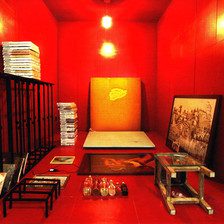
2008
Wrongplace opens
Artist-run spaces
Wrongplace was a nonprofit research collective and experimental art space that opened its physical premises at the Jockey Club Creative Arts Centre (JCCAC), Shek Kip Mei, Kowloon, in 2008. It ran a series of exhibition “experiments” that challenged conventional white-cube conceptions of curation, including the year-long project “Exhibiting Experiments, Experimenting Exhibitions.” It has been inactive since 2014.
Asia Art Archive. [Independent Initiative File (Hong Kong): Wrongplace.] Accessed 21 September 2023.
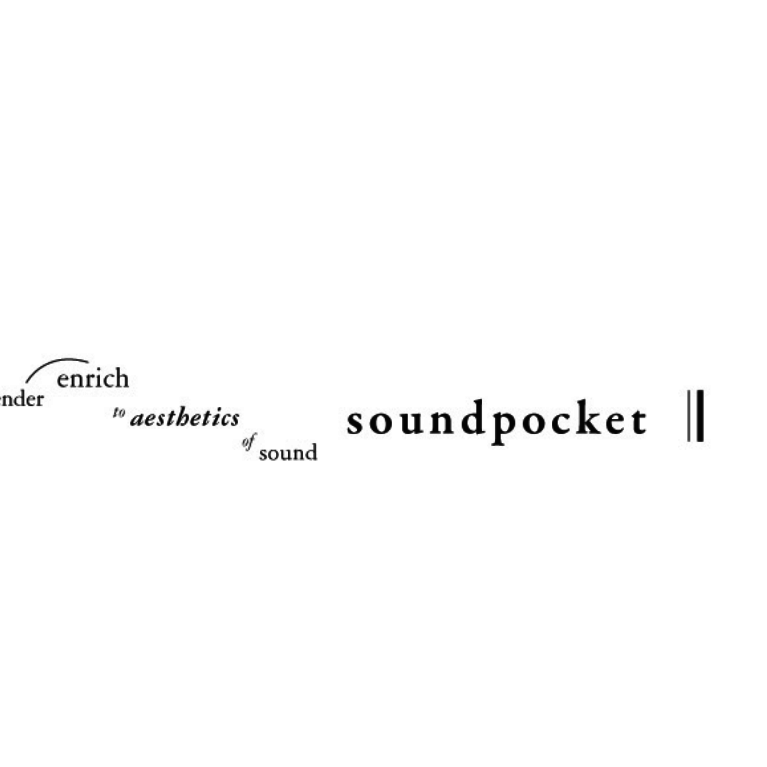
2008
Soundpocket established
Non-collecting institutions
Soundpocket is a nonprofit organisation established in 2008 that focuses on the promotion and research of sound art in Hong Kong. Since 2010, it has facilitated the Artist Support Programme, which “provides direct material, artistic and social support to young artists in Hong Kong who have shown commitment to becoming professional artists working with sound and listening.” Soundpocket also produces publications and runs an online library. The organisation had also hosted five editions of the Around Sound Art Festival from 2009 to 2015.
Asia Art Archive. [Independent Initiative File (Hong Kong): Soundpocket.] Accessed 21 September 2023. https://aaa.org.hk/archive/83719.
Soundpocket. “About us.” Accessed 21 September 2023. http://www.soundpocket.org.hk/v2/category/about-us/.
Soundpocket. “About artist support programme.” Accessed 21 September 2023.
https://www.soundpocket.org.hk/v2/category/support-for-artists/artist-support-programme/.
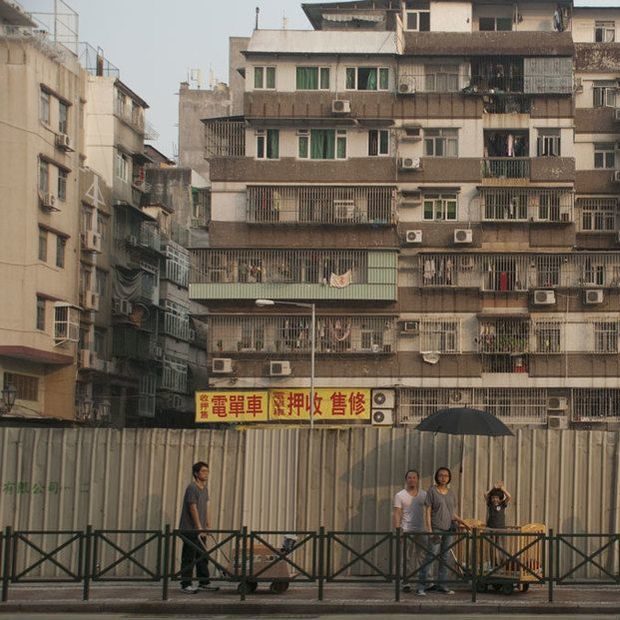
2008
Art Together established
Artist and cultural groups
Established by a group of Hong Kong artists in 2008, Art Together is a nonprofit that “aims to reach more diverse communities in a mobile fashion and facilitate the infusion of art into the community by curating art projects and exhibitions at outdoor areas or public space in Hong Kong.” The organisation is funded by the Hong Kong Arts Development Council (HKADC). Their previous projects range from showcasing mobile art installations to holding discussions and parades.
Art Together. “About Us.” Accessed 18 January 2024.

14.05.2008
First Hong Kong International Art Fair (ART HK)
Art fairs
The first edition of the Hong Kong International Art Fair (ART HK) was held in 2008, organised by Asian Art Fairs Ltd and directed by Magnus Renfrew. Running from 14 to 18 May at the Hong Kong Convention and Exhibition Centre, ART HK 08 showcased over 100 galleries from 19 countries; a series of talks organised by Asia Art Archive; and a feature exhibition of work by emerging local artists titled “Mirage,” curated by Sabrina Fung.
In the fair’s e-flux announcement published on 20 October 2007, it boasted that: “Hong Kong is now the third largest art market in the world by auction sales after New York and London. It is one of the most advantageous destinations in Asia to buy and sell art as there is no tax on the import and export of art. This gives Hong Kong a huge advantage over mainland China which has a punitive import tax of 34% that hits any mainland purchase of imported art.”
On 1 July 2011, Art Basel’s parent company MCH Group announced its purchase of Asian Art Fairs. ART HK was moved from May to February in 2012 to avoid clashing with Art Basel. MCH Group eventually rebranded ART HK as Art Basel Hong Kong in 2013.
ART HK. “Hong Kong Convention and Exhibition Centre.” e-flux, 20 October 2007. https://www.e-flux.com/announcements/39920/hong-kong-convention-and-exhibition-centre.
“ART HK 08 announces its participants.” Flash Art, 17 March 2008. https://flash---art.com/2008/03/hong-kong-art-hk-08-announces-its-participants/.
Cascone, Sarah. “Art Basel Completes Hong Kong Art Fair Buy-Out.” artnet, 27 October 2014. https://news.artnet.com/market/art-basel-completes-hong-kong-art-fair-buy-out-144479#:~:text=At%20long%20last%2C%20Art%20Basel,Fairs%20Limited%20in%20Hong%20Kong.

2009
Venice Biennale: “Making (Perfect) World: Harbour, Hong Kong, Alienated Cities and Dreams”
Festivals and mega-exhibitions
“Making (Perfect) World: Harbour, Hong Kong, Alienated Cities and Dreams” was the title of Hong Kong's solo presentation of artist Tozer Pak Sheung Chuen 白雙全 at the 53rd Venice Biennale. Curated by Tobias Berger of Para Site and presented by the Hong Kong Arts Development Council (HKADC), the show was conceptually divided into four segments—Harbour, Hong Kong, Alienated Cities, and Dreams, showcasing a mixture of sculpture, photography, and documentation of performances and texts.
Artist from Hong Kong: Making (Perfect) World. Hong Kong: Hong Kong Arts Development Council, 2009. Accessed through Asia Art Archive: https://aaa.org.hk/archive/68441.
Para Site. “Making (Perfect) World: Harbour, Hong Kong Alienated Cities and Dreams- A Solo Exhibition by Pak Sheung Chuen.” Accessed 5 January 2024.

05.2009
Breakazine begins publication (2009–25)
Publications
Breakazine 《突破書誌》 was a Hong Kong quarterly social and cultural magazine published by the Christian nonprofit youth organisation Breakthrough 突破. [1] [2] Positioning itself as a publication that operated in-between a book and magazine by combining the depth of book publications and width of magazine coverages, Breakazine aimed to “question underlying norms and values hidden behind social issues and establish an independent value system for each reader through critical thinking and questioning.” [2] Created in response to the introduction of Liberal Studies by the Hong Kong government as a mandatory subject for senior secondary students in 2009, Breakazine engages with students’ needs by discussing one social and/or cultural phenomenon in depth per issue. [1] [3]
Following the release of its pilot issue #000 A Future We Cannot Eat 《吃不到的未來》in March 2009, Breakazine started publishing bimonthly and later transitioned to publishing quarterly in October 2017, with issues coming out in January, April, July, and November. [1] [2] On 11 July 2024, Breakazine announced on social media that they would cease publication in April 2025 due to ”rising print production costs, shifting readership habits, and other external factors.” Titled Asking in Truth, the final issue #079, published in May 2025, features past interns’ collection of honest feedback from the magazine’s collaborators, such as educators, bookstore workers, and readers, as a form of reflection on the magazine’s 16-year publishing history following its mission of “Break, See, Change.” [4]
[1] P-articles. “Breakazine, which was founded 16 years ago, will cease publication in April next year due to business difficulties in recent years.《Breakazine突破書誌》創刊16年 近年經營困難 於明年4月停刊.” 11 July 2024. https://p-articles.com/heteroglossia/4680.html.
[2] Breakazine! Breakazine! #000 A Future We Cannot Eat #0《吃不到的未來》, March 2009, 01.
[3] Chan, Ho-him. “Explainer | What is liberal studies in Hong Kong and why is it controversial?” South China Morning Post, 22 September 2020. https://www.scmp.com/news/hong-kong/education/article/3102439/what-liberal-studies-hong-kong-and-why-it-controversial.
[4] Breakazine (@breakazine). “Breakazine issue 079 ‘Asking in Truth’.” Instagram, 16 April 2025. https://www.instagram.com/p/DJoF2XKtqIU/?igsh=a2xnYWhlOW9yZGd6.
Thumbnail image courtesy Breakazine. Image link: https://www.breakazine.com/.

2009
Wooferten opens (2009–15)
Artist-run spaces
Wooferten 活化廳opened at Shanghai Street Art Space in Yau Ma Tei, Kowloon, in 2009, and was funded by the Hong Kong Arts Development Council (HKADC) from 2009 to 2013. The nonprofit art organisation focused on artistic projects . Over the course of its existence, it ran a project-based programme of exhibitions, artist residencies, community events, and a plethora of other activities aimed at drawing the community closer to contemporary art. In November 2015, Wooferten closed its physical space and was discontinued.
Wang, Dan. “Wooferten.” Institute for Public Art. Accessed 15 January 2024. https://www.instituteforpublicart.org/case-studies/wooferten/.
Wooferten Blogspot. “About Wooferten.” Accessed 5 January 2024.

2009
New Academic Structure and Senior Secondary Curriculum implemented
Policies and socio-political events
Following the government-led comprehensive review of Hong Kong’s education system from January 1999 to July 2000, the city implemented the New Academic Structure (NAS) and Senior Secondary Curriculum in 2009, replacing two colonial university entrance examinations, the Hong Kong Certificate of Education Examination and the Hong Kong Advanced Level Examination, into the Hong Kong Diploma of Secondary Education.
Under NAS, “all students have the opportunity to study up to Secondary 6. They would take up four mandatory core subjects (Chinese Language, English Language, Mathematics, and Liberal Studies) and choose two to three electives from a list of more than 30 subjects, which included Design and Applied Technology, Visual Arts, and Creative Studies.
Liberal Studies was replaced by a subject titled Citizenship and Social Development in 2021. According to South China Morning Post, Liberal Studies “was seen by some as presenting biased views and accused of radicalising young people that participated in the anti-government protests in 2019” and the new subject has “more focus on national security and fostering patriotism.”
Education Bureau HKSAR. “Consultation Documents and Reports.” Senior Secondary Education and Higher Education New Academic Structure Web Bulletin. Accessed 23 September 2023. https://334.edb.hkedcity.net/new/en/consultationreport.php.
Education Bureau HKSAR. “Introduction of the NAS.” Senior Secondary Education and Higher Education New Academic Structure Web Bulletin, 2018. Accessed 23 September 2023. https://334.edb.hkedcity.net/new/en/introduction.php.
Wai, Doris. “DSE 2023: ‘Bittersweet’ farewell to controversial liberal studies subject with generally easier questions.” Young Post, South China Morning Post, 28 April 2023.
Further reading
Cheng, Kai-ming, Liz Jackson, and Wing-on Lee. “Advancing 21st Century Competencies in Hong Kong.” Asia Society Center for Global Education, 2017.
https://asiasociety.org/files/21st-century-competencies-hong-kong.pdf.

2009
Sangwoodgoon established
Artist and cultural groups
Sangwoodgoon 生活館 is an artist-run collective established in 2009 by Chow Sze-chung and Jenny Li Chun-nei as a response to the anti-Hong Kong Express Rail Link movement and Choi Yuen Village Movement. Farming and the creation of new forms of community are key to the collective, which employs permaculture principles to create a system of community-supported agriculture. Regular farming routines allow members to develop their own interests and research fields, ranging from photography to fermentation.
Sangwoodgoon. “About Us.” Accessed 5 January 2024.
https://sangwoodgoon.wordpress.com/about/.
"Sangwoodgoon 2013: Birth Certificate of Dragon Boat Festival Rice." Sangwoodgoon, 2013. Accessed 18 January 2024 via Asia Art Archive: https://aaa.org.hk/archive/192831.
The University of Hong Kong Museum Society. “Visits to Sangwoodgoon (生活館) and Oi Yuen Villa (愛園別墅).” Accessed 5 January 2024.
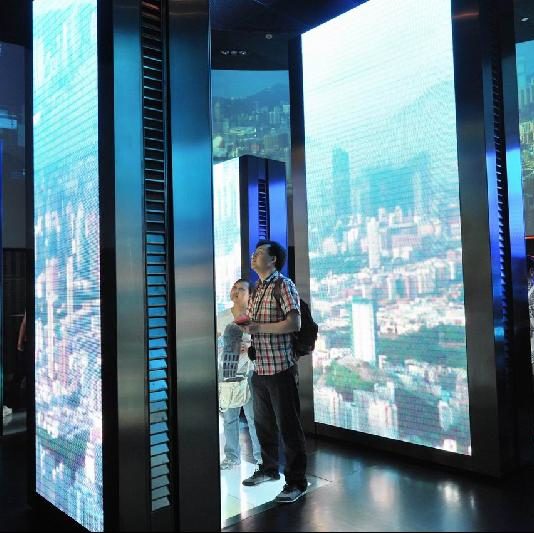
2010
Expo 2010 Shanghai China: “Hong Kong – Potential Unlimited”
Festivals and mega-exhibitions
Themed “Better City – Better Life,” the 2010 Shanghai World Expo was held from 1 May to 31 October 2010 on both banks of Huangpu River. The Hong Kong Pavilion, developed and designed with the theme “Hong Kong – Potential Unlimited,” is a three-storey metal and glass building with a mirror-filled exhibition area. The structure was designed by Hong Kong architects Billy Chan Wai-ching and Ida Sze Ki-shan, whose proposal was picked from a government-initiated competition in 2008.
Exhibitions at the Hong Kong Pavilion included “Hong Kong‧City” by the Hong Kong Institute of Professional Photographers, “Green Living in Hong Kong,” and “One Country, Two Systems,” among many others. Programs by Hong Kong artists were also held, such as Zuni Icosahedron’s “Danny Yung Experimental Theatre – Flee by Night,” a concert by the Hong Kong Philharmonic Orchestra, and various performances by the Hong Kong Ballet, the Hong Kong Academy for Performing Arts, and City Contemporary Dance Company.
info.gov.hk. “Hong Kong exhibitions at Shanghai Expo enjoy enduring popularity.” Press Release, 2 September 2010.
https://www.info.gov.hk/gia/general/201009/02/P201009020189.htm.
Hong Kong Institute of Professional Photographers. ““Hong Kong‧City” Photo Exhibition at Shanghai Expo 2010.” Accessed 12 November 2023.
http://www.hkipp.org/shanghai_expo_2010/en/about.html.
[Hong Kong’s participation in Shanghai Expo 2010–Events and Activities during the Expo period, 2010. – Schedule]. info.gov.hk. Accessed 12 November 2023.
https://gia.info.gov.hk/general/201003/21/P201003200101_0101_63180.pdf.
Leung, Paggie. “Hong Kong pavilion at Shanghai expo gets finishing touches.” South China Morning Post, 5 March 2010.
https://www.scmp.com/article/707658/hong-kong-pavilion-shanghai-expo-gets-finishing-touches.
Hong Kong Yearbook 2010. “World Exposition 2010 Shanghai China.” Photo Gallery. Accessed 12 November 2023.
https://www.yearbook.gov.hk/2010/photogallery/en/exposition.html.

17.09.2010
First Hong Kong International Deaf Film Festival
Festivals and mega-exhibitions
The first annual Hong Kong International Deaf Film Festival 香港國際聾人電影節 (HKIDFF) took place across three days, from 17 to 19 September 2010 at the Hong Kong Art Centre’s agnès b. CINEMA. The inaugural HKIDFF was co-presented by the Hong Kong Association of the Deaf 香港聾人協進會, Asian People’s Theatre Festival Society 亞洲民衆戲劇節協會, Hong Kong Arts Centre 香港藝術中心, and City University of Hong Kong’s School of Creative Media 香港城市大學創意媒體學院 and Department of Applied Social Studies 香港城市大學應用社會科學系, and was supported by the Hong Kong Arts Development Council 香港藝術發展局. It sought “to showcase some of the best Deaf films in the world,” which are films “that have significant involvement of persons who are deaf, as directors, actors, playwrights, etc.” [1]
It comprised six screening programmes curated by theme or place of production; a seminar by Deaffest Festival Director Marcella Stratton, WORLDEAF Cinema Festival Director Jane Norman, and filmmaker Su Qing titled “What is Deaf Film?”; a free-of-charge Pre-festival Film Workshop by British Deaf filmmaker Bim Ajadi; and a short film contest. [1]
The 13th edition of HKIDFF took place at Hong Kong Arts Centre’s Louis Koo Cinema from 24 to 25 May 2025. HKIDFF’s main organiser changed to AccessWus 留映社, a non-profit founded in 2023 by Hong Kong Deaf director Anthony Cheung 張倬豪. [2]
[1] Hong Kong Association of the Deaf et al.The First Hong Kong International Deaf Film Festival. Hong Kong: Hong Kong International Deaf Film Festival, 2010. https://hkidff.hk/wp-content/uploads/2025/02/leaflet01.pdf.
[2] AccessWus Limited. The 13th Hong Kong International Deaf Film Festival. Printed leaflet. Hong Kong: Hong Kong International Deaf Film Festival, 2025.
[3] Hong Kong Arts Centre. “The 13th Hong Kong International Deaf Film Festival.” Accessed 18 July 2025. https://hkac.org.hk/en/calendar_detail/?u=OQrC1jalU5g.
Thumbnail image courtesy the Hong Kong International Deaf Film Festival 香港國際聾人電影節. Image link: https://www.facebook.com/hkidff/?locale=zh_TW.
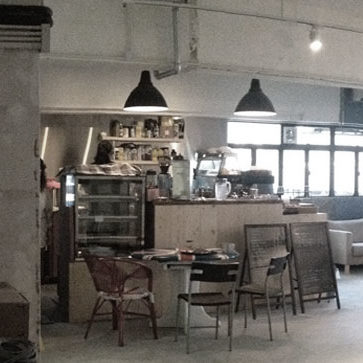
2010
Floating Projects Collective opens
Artist-run spaces
Established in 2010 in an industrial building in Wong Chuk Hang, Hong Kong Island, the Floating Projects Collective was reinvented by artist and professor Linda C.H. Lai 黎肖嫻 alongside “a dozen of emerging artists” in 2015 into “an incubator for interdisciplinary arts.” They sought to explore the question: “What can artists do with an empty unit in an industrial building with institutionally and physically defined constraints, and how do artists survive beyond the commercial gallery system and a public funds-dependent charity model?”
In August 2018, the Floating Projects Collective relocated to a smaller space at the Jockey Club Creative Arts Centre (JCCAC) in Kowloon and began a new phase in their development. The Collective grew from 12 to 17 members and focused more on providing mutual critique and approaching artworks as a constant work-in-progress “with generative potential.”
With the renewal of their lease at JCCAC in late 2021, the Collective started the third phase in their life cycle with four new members joining the 12 recurring participants. This phase puts an emphasis on reflecting on what it means to be a collective, producing more zines, and strengthening their existing programs, which include the D-Normal/V-Essay online video zine platform and the durational performance series Assemblage.
Floating Collective. “FP/ FPC, An Introduction.” Accessed November 24, 2023. https://www.floatingprojectscollective.net/about/introduction.

2010
K11 Art Foundation established
Non-collecting institutions
K11 Art Foundation is a nonprofit organisation founded in 2010 by Adrian Cheng 鄭志剛. It is dedicated to promoting the development of contemporary art in Greater China. It hosts exhibitions, public programmes, and residencies.
K11 Art Foundation. “About Us.” Accessed 12 November 2023.
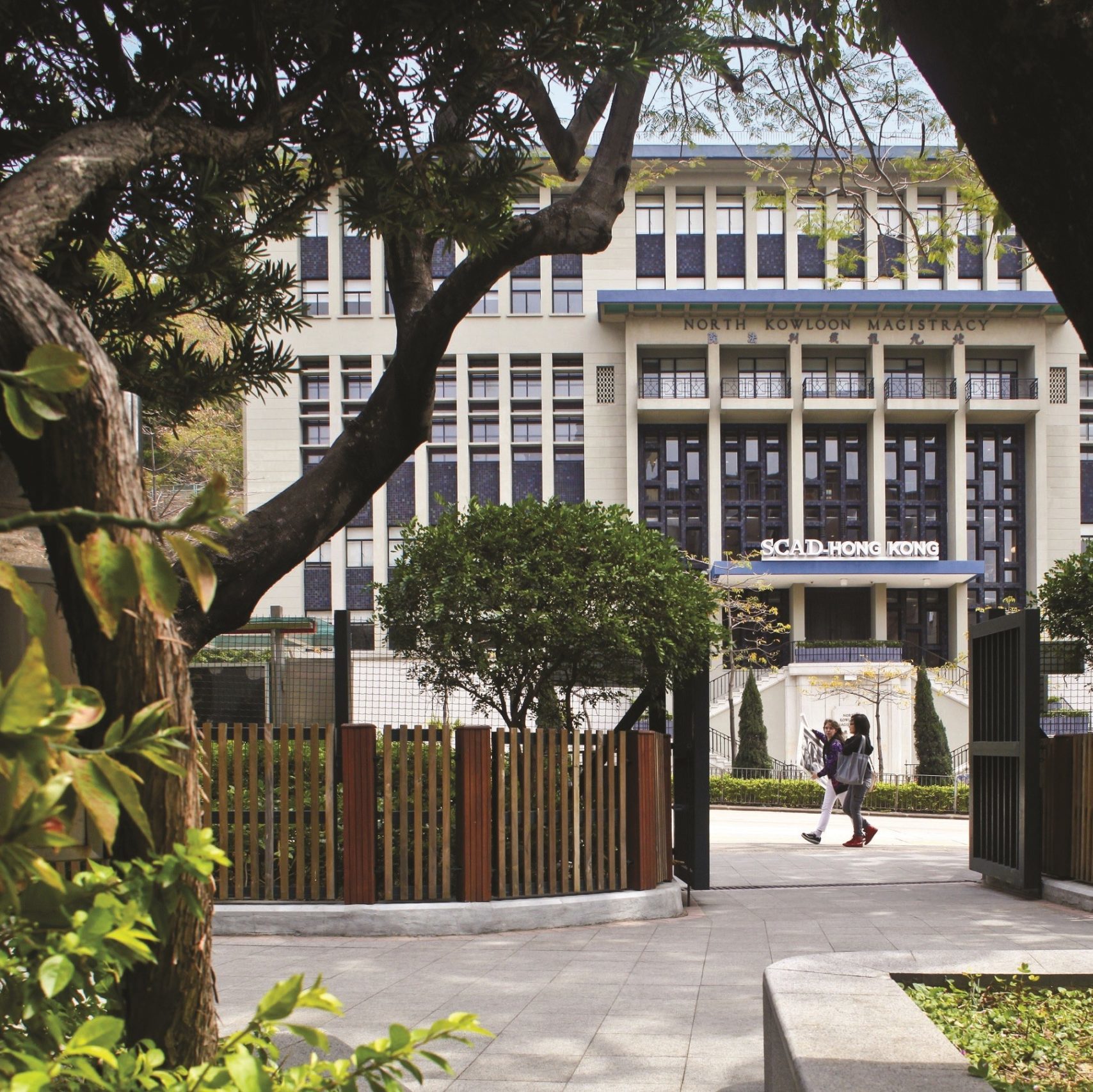
2010
Savannah College of Art and Design Hong Kong opens (2010–20)
Art education
Savannah College of Art and Design (SCAD), an American private art school, began operation of its Hong Kong campus in September 2010. Located in the refurbished former North Kowloon Magistracy building in Sham Shui Po, Kowloon, SCAD Hong Kong taught graphic design, illustration, fashion marketing, photography, animation, and advertising.
SCAD announced the discontinuation of its Hong Kong campus on 13 March 2020, as Hong Kong and the rest of the world were hit by the Covid-19 pandemic. The school was reported to have accumulated a deficit of more than HKD 321 million between 2010 and 2019 despite its annual tuition fee averaging HKD 300,000. Existing students were given the option to transfer to SCAD’s Atlanta or Savannah campuses or to finish their degrees online.
Chan, Samantha. “Students shocked as prestigious art college SCAD closes Hong Kong campus.” Hong Kong Free Press, 28 June 2020.
Harilela, Divia. “Hammer blow for Hong Kong creative arts as SCAD closes city campus; students of fashion, art and design at a loss.” South China Morning Post, 13 March 2020.

2011
Spring Workshop opens (2011–18)
Artist-run spaces
Spring Workshop, founded in 2011 by Mimi Brown 貝明湄, sought to experiment with the way people related to art. Located in Wong Chuk Hang on Hong Kong Island, it hosted international cross-disciplinary art and curatorial programmes, including residencies, as well as facilitated artistic exchange.
In 2016, Spring Workshop received the Prudential Eye Award for Best Asian Contemporary Art Organisation. It ceased activities at Wong Chuk Hang one year later and the final Spring project, Tai Kwun Contemporary’s inaugural exhibition “Dismantling the Scaffold,” was completed in mid-2018. While Spring Workshop has ended all activity, they occassionaly partner with different artists and nonprofit organisations to temporarily use their premises in Wong Chuk Hang.
Spring Workshop. Accessed 31 May 2023. https://www.springworkshop.org/?lang=en.

2011
EmptySCape established
Artist and cultural groups
EmptySCape is an art collective established in 2011 by a group of multidisciplinary artists and professionals, which draws attention to [unused premises/ vacant buildings] through artistic intervention. According to their official website, they “hope to reveal to the public the characters of these typologies of both private and public emptied spaces and what roles do they play within the city and how are these spaces were related to the city and people.”
The first EmptySCape Art Festival was held in 2013.
EmptySCape. “About.” Accessed 19 December 2023.
https://emptyscape.wordpress.com/about/.

04.2011
423 Art Citizens March
Art events with a social cause
423 Art Citizens, comprised of a group of art practitioners, marched in protest of the detainment of Ai Wei Wei 艾未未 by the Chinese Communist Party on 3 April 2011. The march began at Sai Yeung Choi South Street in Mong Kok and ended at the Hong Kong Cultural Centre in Tsim Sha Tsui, Kowloon.
Asia Art Archive. [Independent Initiative File (Hong Kong): Art Citizens.] Accessed 31 May 2023.
https://aaa.org.hk/en/archive-collection/26283.
Wen, Yau. “Artists Taking to the Streets! - 423 Art Citizens March and its Revelations.” International Association of Art Critics Hong Kong, 2012.
http://www.aicahk.org/chi/reviews.asp?id=550&pg=1.

2011
Arts Capacity Development Funding Scheme launched
Awards, grants, residencies
The Art Capacity Development Funding Scheme (ACDFS) was launched by the government in 2011 “to provide funding support for innovative and impactful proposals that contribute to the objectives of capacity development, programme/content development, audience building and arts education.” The applications are assessed by the Advisory Committee on Arts Development alongside expert advisors. Since its 10th round, the ACDFS has introduced the new category of “Arts Technology” to the list of possible genres, which also includes music, theatre, multi-disciplinary arts, arts technology, arts education/appreciation/promotion, media arts, and community arts.
Culture Sports and Tourism Bureau. “Arts Capacity Development Funding Scheme (ACDFS).” Accessed 19 November 2023.
https://www.cstb.gov.hk/en/acdfs.html.
info.gov.hk. “Results of applications for 11th-round funding exercise of Arts Capacity Development Funding Scheme announced.” Press Releases, 19 July 2022.
https://www.info.gov.hk/gia/general/202207/19/P2022071900190.htm.

2011
Venice Biennale: “Kwok Mang-ho: Frogtopia.Hongkornucopia”
Festivals and mega-exhibitions
Hong Kong’s participation at the 2011 Venice Biennale was a solo exhibition of Hong Kong-based artist Kwok Mang-ho 郭孟浩, also known as Frog King 蛙王, titled “Frogtopia.Hongkornucopia.” Curated by Benny Chia 謝俊興, Kith Tsang Tak-ping 曾德平, and Wong Shun-kit 王純杰 in association with the Fringe Club, the exhibition manifested as a spatial take-over by the artist through four sections of maximalist multimedia installations with Kwok’s characteristic bold marks.
Frogtopia Hongkornucopia. Hong Kong: Hong Kong Arts Development Council, 2011.
Hong Kong Pavilion at the Venice Biennale. “Hong Kong at the 54th Venice Biennale.” E-flux, 29 May 2011. https://www.e-flux.com/announcements/35508/hong-kong-at-the-54th-venice-biennale/.

2011
Occupy Central (2011–12)
Policies and socio-political events
Occupy Central was Hong Kong's response to the call for solidarity by the international Occupy movement against social and economic inequality. The movement took up camp beneath the Hong Kong and Shanghai Banking Corporation's (HSBC) headquarters in Central on Hong Kong Island on 15 October 2011 and remained there until 11 September 2012.
Associated Press in Hong Kong. “Occupy Hong Kong camp cleared from HSBC headquarters.” The Guardian, 11 September 2012.
https://www.theguardian.com/world/2012/sep/11/occupy-hong-kong-camp-hsbc.

12.2011
First JCCAC Festival
Festivals and mega-exhibitions
Located in Shek Kip Mei, Kowloon, the Jockey Club Creative Arts Centre (JCCAC) held the first edition of its annual month-long JCCAC Art Festival in December 2011. Typically held at the end of the year, the Festival showcases the creative productions of its tenant artist studios and organisations in the form of exhibitions, workshops, lectures, studio tours, open-air cinemas, and more.
Built through the support of the Government and the Hong Kong Jockey Club Charities Trust, JCCAC was established as a self-financing registered charity and a subsidiary of Hong Kong Baptist University to meet the community’s need for affordable studios and exhibition facilities.
Jockey Club Creative Arts Centre. “JCCAC Art Festival.” Accessed 12 November 2023. https://www.jccac.org.hk/?a=doc&id=7562.

04.2012
Hong Kong Diploma of Secondary Education Examination introduced
Policies and socio-political events
The Hong Kong Diploma of Secondary Education Examination (HKDSE) was introduced in April 2012, replacing the Hong Kong Certification of Education Examination (HKCEE), which had been used since 1978. This change followed the comprehensive review of Hong Kong’s education system launched by the government in 1999 and the implementation of the New Academic Structure and Senior Secondary Curriculum in 2009.
“Seminar on 2012 HKDSE Visual Arts (NEW)—Public Assessment and SBA Mark Submission.” The Hong Kong Examinations and Assessment Authority, 2011. Accessed 19 November 2023.
https://www.hkeaa.edu.hk/DocLibrary/HKDSE/Subject_Information/va/Seminar-VARTS-20111209.pdf.
Hong Kong Examinations and Assessment Authority. “About HKEAA.” Accessed 19 December 2023.
https://www.hkeaa.edu.hk/en/about_hkeaa/milestones/.

01.07.2012
HKBU AVA 1st July protest
Art events with a social cause
Students, alumni, and other members of the Academy of Visual Arts (AVA) at Hong Kong Baptist University (HKBU) joined the 1st of July protest in 2012 with a model of their Kai Tak Campus in Kowloon to protest the campus’ possible closure due to a proposed increase in rent.
In March 2012, news regarding the Kai Tak Campus’s upcoming lease expiration and the government’s decision to increase AVA’s monthly rent from HK$50,000 to HK$300,000 began to circulate. This was followed by HKBU’s announcement that it will cease tenancy in Kai Tak and relocate the entirety of AVA’s operations to the University’s newly opened Lee Shau Kee Communication and Visual Arts Building in Kowloon Tong. In response, AVA students and alumni formed the HKBU AVA Campus Development Concern Group to express their discontent with the government’s approach to cultural policy and protest leaving Kai Tak Campus.
In a text written by Ada Wong Ying-kay, then executive director of the Hong Kong Institute of Contemporary Culture, for the 2012 Hong Kong Visual Arts Yearbook, “They began with designing leaflets that depicted their life at the Kai Tak Campus, collected over one thousand signatures, organised open days, forums and docent tours; during the July 1st protest, they carried a huge model of the Kai Tak Campus and paraded down the road, winning the hearts of the general public.”
On 18 October 2013, South China Morning Post reported that “Baptist University’s visual arts academy will be able to extend the government lease of its heritage campus in Kai Tak for 10 years at a nominal monthly rent of HK$1, down from the HK$50,000 it paid for six years.”
Facebook. “浸大視藝校園發展關注組 HKBU AVA Campus Development Concern Group.” Accessed 19 November 2023.
Chow, Vivienne. “Visual Arts Academy to Stay at Kai Tak Campus - for HK$1 A Month.” South China Morning Post, October 18, 2013.
Wong Ying-kai Ada. Translated by Roberta Freya. “Visual Arts Education in Face of Hong Kong's Cultural Policy (or its lack of) - A Revelation from the HKBU Kai Tak Campus Incident.” In the Hong Kong Visual Arts Yearbook 2012, edited by Tong Kam-tang, 94–101. Hong Kong: Department of Fine Arts, The Chinese University of Hong Kong, 2012.
http://www.arts.cuhk.edu.hk/~fadept/Yearbook/YearbookEssays/2012/2012adawong_eng.pdf.

2012
100ft. PARK opens
Artist-run spaces
Founded by three art practitioners in 2012, 100ft. PARK is a nonprofit art space that opened in a 100-square-feet venue in The Coming Society, a second-hand book shop in Foo Tak Building in Wan Chai, Hong Kong Island.
In 2014, 100ft. PARK relocated to Prince Edward, Kowloon, where creative residence WontonMeen (by design team Yuen Yeung) was situated. The space neighboured Holicycle, a bicycle shop. A year later, the nonprofit moved to Sham Shui Po, Kowloon, next to the architecture firm Daydreamers Design.
100 ft. PARK. “About.” Accessed 19 November 2023.

2012
Hong Kong Art Gallery Association established
Galleries
A member-based nonprofit association of more than 60 established galleries, the Hong Kong Art Gallery Association promotes the local art gallery community through public outreach and events.
Hong Kong Art Gallery Association. Accessed 31 May 2023.

2012
First Affordable Art Fair Hong Kong
Art fairs
Affordable Art Fair Hong Kong was held for the first time at the Hong Kong Exhibition and Convention Centre from 15 to 17 March 2012. The art fair franchise was established by Will Ramsay in London in 1999. Prior to its Hong Kong edition, the art fair had been hosted annually in London, New York, Seattle, Mexico City, Amsterdam, Milan, Hamburg, Stockholm, and Singapore. For the first Affordable Art Fair Hong Kong, artworks were priced at between HK$1,000 and HK$100,000.
Seow, Janice. “Affordable Art Fair Comes to Hong Kong.” Indesignlive Asia, 5 March 2013.
https://www.indesignlive.hk/articles/affordable-art-fair-comes-to-hong-kong.

01.2013
The Salt Yard opens
Artist-run spaces
The Salt Yard is an independent artist-run space dedicated to photography founded in January 2013 by photographers Lit Ma, Gary Ng, and Dustin Shum in Ma and Ng’s commercial studio in Kwun Tong, Kowloon. The Salt Yard’s name is derived from Kwun Tong’s history as a royalty-owned salt pan during the Northern Song dynasty. They held exhibitions of local and international photographers, sold “lesser-known” photography publications, and provided a space for people to gather, read, and look at photographs. According to co-founder Shum: “We wanted to nurture a new audience, we wanted to build a more lively experience to appreciate photography, so we designed a space for reading and opened a independent bookstore.”
The Salt Yard’s physical premises closed in 2015 and has since moved its operations online.
The Salt Yard. Accessed 19 November 2023.
Yiu, Sheung. “The Last Salt Yard.” Urbanautica, 2015. Accessed 31 May 2023. https://www.urbanautica.com/interview/the-last-salt-yard/355.
03.2013
First Art Basel Hong Kong
Art fairs
The first annual Art Basel Hong Kong was held in March 2013 at the Hong Kong Convention and Exhibition Centre, a year after MCH Group, Art Basel’s parent company, bought the local fair Art HK. Art Basel is a Swiss-based, international, modern and contemporary art fair franchise. Art Basel Hong Kong is keen to foreground its promotion of Asian Art, with at least half of its participating galleries hailing from the Asia Pacific region each year. In 2014, MCH Group acquired full ownership of Art Basel Hong Kong. Five years later, in 2019, Art Basel Hong Kong had a record attendance of 88,000.
Bodick, Noelle. “A Brief History of Art Basel, the World's Premier Contemporary Fair.” Artspace, 17 June 2014.
https://www.artspace.com/magazine/art_101/art_market/a-brief-history-of-art-basel-52350.
Cascone, Sarah. “Art Basel Completes Hong Kong Art Fair Buy-Out.” Artnet news, 28 October 2014.
https://news.artnet.com/market/art-basel-completes-hong-kong-art-fair-buy-out-144479.

2013
First EmptySCape Art Festival
Festivals and mega-exhibitions
The independent artist collective EmptySCape held its first Emptyscape Art Festival in May 2013 at the abandoned campus of Ping Yeung Public School in Ping Che, Ta Kwu Ling, New Territories. The first edition of the festival was organised with a strong focus on community engagement with the Ping Che villagers and lasted for four days. It was organised in response to the government’s North East New Territories New Development Areas plan which proposed developing Kwu Tung North, Fanling North, and Ta Kwu Ling into residential and commercial areas.
周文慶:〈「空城藝術節」— 抗爭的另一種方式〉。立場新聞,2016。
https://collection.news/thestandnews/articles/28513.
黃宇軒:〈在亂世中,站穩陣腳(空城藝術節筆記,一)〉。立場新聞,2016。 https://www.thestandnews.com/city/在亂世中-站穩陣腳-空城藝術節筆記-一/。
“Ping Che Village School Art Festival.” Go.Asia, 2013.
https://www.go.asia/ping-che-village-school-art-festival/.

2013
Venice Biennale: “Lee Kit: You (you)”
Festivals and mega-exhibitions
The Hong Kong presentation at the 2013 Venice Biennale was a solo exhibition by Hong Kong-born artist Lee Kit 李傑 titled “You (you).” Curated by M+ executive director Lars Nittve 李立偉 and chief curator Yung Ma 馬容元, this exhibition was the first Hong Kong presentation at Venice Biennale that was co-organised by the Hong Kong Arts Development Council (HKADC) and M+. The exhibition continued Lee’s exploration of the quotidian, or the everyday. The presentation comprised of moving image, performance, ready-made objects, found images, and lighting.
M+, West Kowloon Cultural District. “Lee Kit.” E-flux, 22 May 2013. Accessed 19 November 2023.
https://www.e-flux.com/announcements/32633/lee-kit/.
Ma, Yung, ed. ‘You (you).’ - Lee Kit. 2013.

07.2013
HKAC in the Setouchi Triennale
Festivals and mega-exhibitions
The Hong Kong Arts Centre (HKAC) participated in the Setouchi Triennale in Japan for the first time in July 2013. HKAC was part of the Fukutake House Asia Art Platform, a collaboration between seven organisations that took place at the Fukutake House, a building repurposed from former Shodoshima Fukuda Elementary School. In its inaugural year , the Asian Art Platform responded to the connectivity of Setouchi as a region with links to the East China Sea, Southeast Asia, and Australasia, placing emphasis on trans-Asian exchange. The exhibition’s theme that year was “How do we respond to globalisation?”
Hong Kong Arts Centre. “HONG KONG ARTS CENTRE presents FUKUTAKE HOUSE Asia Art Platform, Setouchi Triennale 2013.” Accessed 19 November 2023.
https://www.hkac.org.hk/press_release_detail/?u=oisT1SEv0DU.
Benesse Art Site Aoshima. “Fukutake House.” Accessed 31 May 2023.

2013
First Colours of Humanity Art Prize
Awards, grants, residencies
The first Colours of Humanity Art Prize (formerly known as Hong Kong Human Rights Arts Prize) was co-presented in 2013 by the Hong Kong Refugee Advice Centre (renamed Justice Centre Hong Kong in 2014), the European Union Office in Hong Kong and Macao, and the Goethe-Institut Hong Kong to encourage the creation of artworks that explore themes of inclusivity and portray refugee experiences in Hong Kong. Each year, the Arts Prize also has a different theme that participants are required to work with.
The Arts Prize offers three awards, each with cash prizes: the flagship award presented to the artwork that captures the annual theme most successfully, Goethe-Institut Hong Kong’s InkluVision Award, and the Justice Centre Choice Award for the work that reflects refugee issues. Shortlisted works will be presented at an exhibition at the Goethe- Gallery and Black Box Studio.
Colours of Humanity Art Prize. Accessed 19 November 2023.
https://www.colours-of-humanity-arts-prize.com/.
The Hong Kong Arts Collective. “Artist Opportunity: Hong Kong Human Rights Art Prize.” Hong Kong Arts Collective, 28 March 2022.
https://www.hongkongartscollective.com/post/artist-opportunity-hong-kong-human-rights-art-prize.
Justice Centre Hong Kong. “Terms-and-Conditions_HKHRAP2021.” Accessed 19 November 2023.
https://www.justicecentre.org.hk/framework/uploads/2021/02/Terms-and-Conditions_HKHRAP2021.pdf.

2013
Comix Home Base opens
Non-collecting institutions
Hong Kong’s first arts venue dedicated to comics and animation, Hong Kong Arts Centre (HKAC)’s Comix Home Base opened on 18 July 2013 at 7 Mallory Street in Wan Chai, Hong Kong Island. Previously pre-war tenement houses, the four-storey building was part of the Urban Renewal Authority’s (URA) revitalisation project and now features artist studios, retail shops, restaurants, a comix salon with a wide selection of Hong Kong and international works, exhibition venues, and work spaces. Curated by HKAC, Comix Home Base hosts and participates in events relating to comics and animation to raise the profile of Hong Kong comics internationally.
Next Stop Hong Kong. “Architecture and Culture of Comix Home Base.”
https://www.nextstophongkong.com/comix-home-base-hong-kong-arts-centre/.
Instagram. “comixhomebase.”
https://www.instagram.com/comixhomebase/.
Hong Kong Arts Centre. “History of the Hong Kong Arts Centre.” Accessed 6 December 2023.
https://hkac.org.hk/about_history/.

05.2013
Oi! Street opens
Government bodies
Managed by the government’s Art Promotion Office (APO) and Leisure and Cultural Services Department (LCSD), Oi! Art space opened on 21 May 2013 at 12 Oil Street, next to the then-demolished Government Supplies Department Complex, which housed the evicted Oil Street Artist Village. Oi! hosts various projects spanning contemporary art, new creative media, and architecture and design. The art space also organises public programmes, conducts artist residencies, and promotes green living. In 2019, Oi! expanded its premises to include more than 3,000 square meters of outdoor space.
info.gov.hk. “Oi! opens today to provide new art space for community (with photos).” Press Releases, 21 May 2013.
https://www.info.gov.hk/gia/general/201305/21/P201305210472.htm.
info.gov.hk “New extension of Oil Street Art Space to be ready for public visits tomorrow (with photos).” Press Releases, 22 May 2022. Accessed 19 December 2023.
https://www.info.gov.hk/gia/general/202205/23/P2022052000649.htm.

01.2014
Art Appraisal Club established
Artist and cultural groups
Initiated by curator Ying Kwok 郭瑛 in January 2014, the Art Appraisal Club sought to develop and support more art criticism and art writing in Hong Kong. In its official statement on its website, the Club remarks that “the lack of art discussions and critical writing in the city do not contribute well to the development of artist and local art ecosystem.” Every month, the Club provides recommended exhibition lists, reviews, and themed articles via a mailing list and their Facebook page.
Art Appraisal Club. “About.” Accessed 19 November 2023.
http://www.artappraisalclub.com/en/about/.

05.2014
PMQ opens
Non-collecting institutions
Following the government’s revitalisation project, the arts and design venue PMQ opened at the former Hollywood Road Police Married Quarters in Central, Hong Kong Island, in May 2014. The venue offers spaces for artist-run start-ups and events, placing an emphasis on design, innovation, and entrepreneurship in the creative industry. It is operated by PMQ Management Co, Ltd., a nonprofit enterprise set up by Musketeers Education and Culture Charitable Foundation Ltd (“Musketeers Foundation”) with the support of Hong Kong Design Centre, the Hong Kong Polytechnic University, and the Hong Kong Design Institute of the Vocational Training Council.
PMQ. “History of PMQ.” Accessed 19 November 2023.
https://www.pmq.org.hk/heritage/history-of-pmq/.
PMQ. “PMQ soft launches in May with showcase of Hong Kong’s young design talents.” Press Release, 11 April 2014.
https://www.pmq.org.hk/media/PressRelease_PMQ_Soft_launch_announcement_FINAL2014.04.11_1.pdf.

2014
The School of Everyday Life opens
Art education
The School of Everyday Life is an educational organisation that opened at 178 Kam Shan Road in Tai Po, New Territories, in 2014. The organisation promotes creative and experiential learning as part of sustainable living, calling for a reevaluation of urban lifestyles detached from nature. It has since moved to a new space at Tuen Fu Road, Tuen Mun.
The School of Everyday Life. “Everyday Life.” Accessed 19 November 2023.
https://everydaylife.org.hk/aboutus/.

2014
Cultural Journalism Campus established
Artist and cultural groups
Founded by journalist Vivienne Chow in 2014, Cultural Journalism Campus (CJC) is a nonprofit educational initiative aimed at developing cultural journalism, art criticism, and art appreciation. CJC organises workshops, forums, and seminars for young cultural journalists and art critics. It has partnered with several institutions, including Goethe-Institut Hong Kong, Arts in Heritage Research, and MILL6 Foundation.
Its annual CJC Fellowship offered hands-on media training at Art Basel Hong Kong where Cultural Express, CJC’s newspaper, was distributed.
CJC has been inactive since 2019.
Instagram. “culturaljournalismcampus.” Accessed 19 November 2023.
https://www.instagram.com/culturaljournalismcampus/?hl=en.
Vivienne Chow. “CULTURAL JOURNALISM CAMPUS.” Accessed 19 November 2023.
https://www.viviennechow.com/p/about-cultural-journalism-campus.html.

2014
Umbrella Movement
Policies and socio-political events
Protests began on 26 September 2014 in response to the Government-proposed reforms to Hong Kong's electoral system. These soon evolved into the Occupy Central with Love and Peace civil disobedience campaign, aggravated by the closure of Civic Square, a public space in the Hong Kong Government Offices that was fenced off during the demonstration. The movement encouraged some artists to stage public performances aimed at expressing and raising awareness surrounding issues of freedom of speech and demonstration, rights to public spaces, and land ownership. The Umbrella Movement ended on 15 December 2014, lasting 79 days.
Kaiman, Jonathan. “Hong Kong’s umbrella revolution - the Guardian briefing.” The Guardian, 30 September 2014.

05.2015
First Art Central Hong Kong
Art fairs
The founders of ART HK (Hong Kong’s first international art fair acquired by Art Basel in 2011), Tim Etchells and Sandy Angus of Montgomery Worldwide launched the first edition of Art Central Hong Kong alongside Will Ramsay of Ramsay Fairs in May 2015. The annual contemporary art fair was first held in a temporary structure by the Central Harbourfront, timed to coincide with Art Basel Hong Kong and Hong Kong Art Week.
Art Central Hong Kong. “About.” Accessed 29 December 2023.
https://artcentralhongkong.com/about/.
Li, Zoe. “New Fair, Art Central, Challenges Art Basel in Hong Kong.” Artnet, 21 January 2015.
https://news.artnet.com/market/new-fair-art-central-challenges-art-basel-in-hong-kong-225779.

05.2015
Sun Museum opens
Museums
The Sun Museum is a nonprofit and non-governmental museum established by the Simon Suen Foundation to promote Chinese art and culture. It opened in May 2015 on the fourth floor of the SML Tower along the Kwun Tong waterfront promenade on 165 Hoi Bun Road in Kwun Tong, Kowloon. The museum does not house a permanent collection and instead hosts thematic exhibitions with objects on loan from collectors, artists, and other cultural bodies.
Sun Museum. “Introduction.” Accessed 19 November 2023.
https://www.en.sunmuseum.org.hk/introduction.

2015
Venice Biennale: “Tsang Kin-Wah: The Infinite Nothing”
Festivals and mega-exhibitions
Hong Kong’s presentation for the 2015 Venice Biennale was a solo exhibition by Hong Kong-based artist Tsang Kin-Wah 曾建華 titled “The Infinite Nothing.” Curated by M+’s chief curator Doryun Chong 鄭道鍊, curator of learning and interpretation Stella Fong 方詠甄, and executive director Lars Nittve 李立偉, the exhibition comprised four new video installations that tackled philosophical inquiries using metaphors, allegories, religious symbolism, and pop culture references. Drawing from Friedrich Nietzsche’s existentialist philosophy, the title comes from the German philosopher’s quote pronouncing the death of god: “Are we not straying as through an infinite nothing? Do we not feel the breath of empty space?”
Chong, Doryun, and Stella Fong, eds. Tsang Kin-Wah: The Infinite Nothing - Hong Kong in Venice. Hong Kong: M+, West Kowloon Cultural District, 2015.
M+, West Kowloon Cultural District / Hong Kong Arts Development Council. “Tsang Kin-Wah Collateral Event of the 56th Venice Biennale.” E-flux, 28 April 2015.

07.2015
A Walk with A3 opens (2015–17)
Artist-run spaces
Initiated as an independent research project by writer, curator, and founder of the nonprofit soundpocket Yeung Yang 楊陽, A Walk with A3 is an experimental art space that explores the streetscapes of Hong Kong and art as an integral part of pedestrian’s experience in the city. It opened in July 2015 as a small stairwell shop at Shop A3 on the ground floor of an old tenement building (or tong lau 唐樓) at 1 Sharp Street West in Wan Chai, Hong Kong Island. Such stairwell shops have been disappearing due to Hong Kong’s urban redevelopment.
Among the initiatives held at the space was Alongside Poetry in an Alley, which consisted of six “chapters” that tackled Hong Kong’s streetscapes and the site-specificity of Shop A3 itself.
A Walk with A3 has been inactive since the end of its two-year lease in 2017.
Institute for Public Art. “Alongside Poetry in an Alley.” Accessed 19 November 2023.
https://www.instituteforpublicart.org/case-studies/alongside-poetry-in-an-alley/.
Facebook. “A Walk with A3.” Accessed 19 November 2023.
https://www.facebook.com/AWalkWithA3/about.

09.2015
Things that can happen opens
Artist-run spaces
Founded by Lee Kit 李傑 and Chantel Wong 黃子欣, Things that can happen is a nonprofit art space that opened in Sham Shui Po, Kowloon, in September 2015. Located on the first floor of a refurbished old tenement building (, or tong lau 唐樓), , the space was conceived as a two-year project for artistic experimentation with local early-career artists. It organised exhibitions and residencies and hosted a library.
呂陽:〈深水埗可以發生的狂野事〉。端傳媒,2015年。
https://theinitium.com/article/20150909-culture-feature-things-that-can-happen.
Asia Art Archive. [Independent Initiative File (Hong Kong): Things That Can Happen]. Accessed 19 November 2023 via Asia Art Archive: https://aaa.org.hk/archive/196495.
Randian. “Things that can happen.” Accessed 31 May 2023.
http://www.randian-online.com/np_space/things-that-can-happen/.

2016
Rooftop Institute opens
Artist-run spaces
Rooftop Institute is an independent nonprofit organisation co-founded by artists Yim Sui Fong 嚴瑞芳 and Law Yuk Mui 羅玉梅 and professor Frank Vigneron 韋一空. It opened at the Foo Tak Building in Wan Chai, Hong Kong Island, in 2016. With a focus on “education through art,” Rooftop Institute organises programmes for artist-led educational research and practice.
Rooftop Institute. “About.” Accessed 19 November 2023.
https://www.rooftopinstitute.org/about/.

03.2016
CCCD Artspace Green Wave Art opens (2016–19)
Non-collecting institutions
The Centre for Community Cultural Development (CCCD) opened its CCCD Artspace Green Wave Art 碧波押 at 404 Shanghai Street, Kowloon in March 2016. It placed a strong emphasis on community involvement and socially-engaged artworks, holding exhibitions, concerts, screenings, poetry readings, performances, talks, and workshops.
The Hong Kong Arts Development Council (HKADC) awarded the ground floor premise—owned by the Lands Department and rented to the HKADC—to CCCD on a two-year contract with an annual budget of HKD 500,000. Augustine Mok Chiu-yu 莫昭如, Chief Executive of CCCD, invited Sammu Chan to curate the art space. Its physical premises closed in 2019 before the lease ended, when the HKADC terminated the programme on the nominal grounds of complaints that the space lacked the appropriate license for being a “place of public entertainment.”
Chan, Holmes. “The final days of Hong Kong’s Green Wave Art space – a community arts hub like no other.” Hong Kong Free Press, 28 April 2019.

2016
First Jockey Club ifva Everywhere Carnival
Festivals and mega-exhibitions
Organised by the Hong Kong Arts Centre (HKAC) and funded by The Hong Kong Jockey Club Charities Trust, the Jockey Club ifva Everywhere Carnival is an outdoor moving image festival that screens movies, short films, animations, and media arts, while holding live music performances and a hosting market.
Founded by the Hong Kong Arts Centre, the first Hong Kong Independent Short Film and Video Awards—now known as ifva—was held in 1995 to recognise independent filmmakers and video artists in the city.
Jockey Club ifva Everywhere. “Programme.” Accessed 19 November 2023.
Jockey Club ifva Everywhere 2016. “Programme.” Accessed 19 November 2023.
https://ifva.com/everywhere/2016/programme/carnival/?lang=en.

2016
M+ Pavilion opens
Museums
The M+ Pavilion opened in 2016 as a preliminary exhibition space for the institution prior to the anticipated completion of M+ Museum in the West Kowloon Cultural District in November 2021.
Laboratory for Explorative Architecture & Design. “M+ Pavilion.” Accessed 19 November 2023.
https://l-e-a-d.pro/portfolio/wkcd-pavilion/.

2017
Thy Lab opens
Artist-run spaces
Founded by researcher Alberto Gerosa*, [1][2] Thy Lab 旲堂 is a “visual research hub” located on 135 Yu Chau Street in Sham Shui Po [1] [3]. Dubbed as the “largest archive of family images” and home to “Sham Shui Po’s only cinema” by the South China Morning Post in 2020 [2] [4], Thy Lab hosts screenings, organises exhibitions as well as performances, with a focus on “ethnography-based film, multimedia and performing art projects.” ethnography and local communities. [5]
* According to their Facebook and Eventbrite page, Thy Lab’s earliest public invitation for a screening traced online comprised films by documentary film director Hu Tai-Li 胡台麗 and took place on 3 May 2017. [6][7]
[1] Knott, Kylie. “Thy Lab: Old Family Photos Tell the Stories of Hong Kong.” PostMag. 26 November 2020. https://www.scmp.com/magazines/post-magazine/short-reads/article/3111453/thy-lab-old-family-photos-tell-stories-hong.
[2] Knott, Kylie. “Where to Go in Hong Kong: Sham Shui Po Art Spaces.” South China Morning Post. 25 October 2020. https://www.scmp.com/lifestyle/travel-leisure/article/3106810/where-go-hong-kong-neighbourhood-sham-shui-po-art-spaces.
[3] Cheung, Catherine. “Thy Lab.” TimeOut Hong Kong. 17 October 17 2024. https://www.timeout.com/hong-kong/art/thy-lab.
[4] Asia Art Archive. "Independent Initiative File: Hong Kong Thy Lab (Thy Lane)." Accessed 30 April 2025. https://aaa.org.hk/en/collections/search/archive/independent-initiative-file-hong-kong-thy-lab-thy-lane.
[5] Think Young Lab. “About.” Accessed 30 April 2025. https://lab.thinkyoung.eu/about.
[6] THY Lab. “[訪問分享及電影觀影會] 台灣著名紀錄片導演胡台麗所執導的 …” Facebook, 21 April 2017.
https://www.facebook.com/share/1C7KPe17ET/.
[7] THY Lab. “Film screening & Masterclass: HU Tai-Li.” Eventbrite, 3 May 2017.
Thumbnail image courtesy THY LAB.

2017
Hidden Space opens
Artist-run spaces
Founded by Hong Kong artists Katie Ho, Kay Mei Ling Beadman, and Isabella Isabella in an industrial building at Wah Shing Street in Kwai Hing, New Territories, in 2017, Hidden Space is an independent nonprofit that showcases experimental installation and performance art.
Hidden Space introduced the Hidden Space Award in 2018 for graduates from the RMIT University and Hong Kong Art School BFA programme, wherein one awardee receives mentorship, curatorial and installation support, and venue access to develop a solo exhibition.
Hidden Space. “About.” Accessed 19 November 2023.
https://www.hiddenspace.land/about.

2017
Hong Kong Visual Art Critic Nurturing Programme launched
Art education
Independent nonprofit 1a space launched the Hong Kong Visual Art Critics Nurturing Programme 香港視覺藝術評論人培育計劃 in 2017 to cultivate art critics and a readership for art writing in Hong Kong. The programme provides guided tours, talks, and writing reviews. It accepts applications from all ages and backgrounds with no prior experience in art or writing necessary. 1a space also collaborated with Stand News to publish selected works by the programme’s participants on their online platform.
For its fifth edition in 2022, the Programme changed its name to the Hong Kong Visual Art Criticism Incubation Programme 香港視覺藝術評論培育計劃.
1a space. “Events.” Accessed 19 November 2019.

2017
Venice Biennale: “Samson Young: Songs for Disaster Relief”
Festivals and mega-exhibitions
The Hong Kong presentation at the 2017 Venice Biennale comprised of a solo exhibition by Hong Kong-born artist and composer Samson Young 楊嘉輝 titled “Songs for Disaster Relief.” Curated by Ying Kwok 郭瑛 with M+ chief curator Doryun Chong 鄭道鍊 serving as consulting curator, the exhibition featured a new body of multimedia work that explores “charity singles,” recordings made for charitable causes by a group of well-known artists that were widespread in the 1980s. According to M+’s E-flux announcement of the show, “The exhibition is conceived as an album unfolding in space to be experienced in person.”
Kwok, Ying, and Sonia So, eds. Songs for Disaster Relief: Hong Kong in Venice - A Mixtape. Hong Kong: M+, West Kowloon Cultural District, 2017.
M+, West Kowloon Cultural District. “Samson Young: Songs for Disaster Relief.” E-flux, 7 May 2017. Accessed 19 November 2023.
https://www.e-flux.com/announcements/123815/samson-youngsongs-for-disaster-relief/.

2017
In-situ artist residency launched
Awards, grants, residencies
Founded by John Lu in 2017, In-situ is a year-round artist residency programme in To Kwa Wan, Kowloon. The programme aims to facilitate international exchange and encourages participating artists to respond to Hong Kong as a place.
As of 2023, the last round of applications was in 2019.
Facebook. “In-situ: Hong Kong Artist Residency.” Accessed 19 November 2023.
https://www.facebook.com/insituresidency.

2017
Form Society opens
Artist-run spaces
Founded by artist Wong Tin Yan 王天仁, Form Society 合舍 is an independent art space that opened at 186 Tai Nan Street in Sham Shui Po, Kowloon, in 2017. The space is divided into different sections to simultaneously hold multiple programmes with the local community as target audience.
【第三空間.深水埗】大南街「合舍」 跟社區街坊共融藝文空間
原文網址: 【第三空間.深水埗】大南街「合舍」 跟社區街坊共融藝文空間 | 香港01
https://www.hk01.com/article/102481?utm_source=01articlecopy&utm_medium=referral.

09.2017
PRÉCÉDÉE opens
Artist-run spaces
PRÉCÉDÉE is an experimental 24-hour art space founded by artist Man Tin 田禮文. It opened in a 2.4-square-meters storefront at 304 Shanghai in Yau Ma Tei, Kowloon, in September 2017.
黎振寧:〈PRÉCÉDÉE:全港最小的藝術空間 突破想象界限〉。好習慣, 2018 。
https://www.betterme-magazine.com/好地方/precedee:全港最小的藝術空間-突破想象界限/。
Facebook. “PRÉCÉDÉE.” Accessed 19 November 2023.

2017
Printhow established
Artist and cultural groups
Inspired by A3BC (Anti-War, Anti-Nuclear and Arts of Block-print Collective) in Tokyo and Print & Carve Dept. 印刻部 in Taipei, the Hong Kong-based woodblock printing collective Printhow 點印社 was established by “friends and printmaking novices” in 2017. In their self-introduction, Printhow shared that “they aim to use this DIY medium to connect with the community, pursuing a better life through D.I.T. (Do It Together).” [1] [2] [3]
The collective has been active in hosting woodblock printing workshops and pop-up printing tables at public demonstrations, parades, festivals, and other social gatherings for a shared cause, including Migrants’ Pride 移工嬌傲日 and One Billion Rising, a solidarity event that calls to end violence against women. [2] [5] [6] Their programmes often make printmaking accessible and collaborative. [7] They also create printed matter in support of social movements; in her 2021 essay about woodcut printmaking in post-2019 Hong Kong, titled “The Wall of Blankness,” writer Koel Chu 朱嘉喬 lists some of Printhow’s initiatives: [2]
“At a march on 1 July 2018, Printhow also worked with migrant women to sell printed products for Bethune House [白恩逢之家], a temporary shelter for distressed domestic workers. [ . . . ] In August 2019, Printhow printed woodcut wristbands in support of the city-wide strike; four months later, they created flyers for the rally against the deportation of Indonesian journalist and migrant domestic helper Yuli Riswati. A year later, they made posters to support the detainees of the Castle Peak Bay Immigration Centre (CIC) during their hunger strike.” [2]
[1] Printhow (@printhow_). “點印社受日本A3BC 版畫合作社及台灣版畫小組的啟發,香港幾個版畫友及新手也聚在一起開始製作版畫,希望藉由這個具D.I.Y精神的媒介走入人群中然後在追求美好生活的路上跟大家D.I.T(do it together)。暫時較多與在港移工團體合作,在未來眾多可能性中也想一起多做些「無聊」的印刷。” Instagram, 24 March 2019. https://www.instagram.com/p/BvYfYIfga24/?img_index=1.
[2] Chu, Koel. “The Wall of Blankness.” Like A Fever, 20 August 2021. https://aaa.org.hk/en/like-a-fever/like-a-fever/the-wall-of-blankness.
[3] A3BC Collective. Accessed 1 May 2025. https://a3bcollective.org/.
[4] Print & Carve Dept. Facebook. Accessed 1 May 2025. https://www.facebook.com/printcarvedept/.
[5] Migrants’ Pride. Accessed 1 May 2025. https://migrantspride.wordpress.com/.
[6] One Billion Rising. “About One Billion Rising.” Accessed 1 May 2025. https://www.onebillionrising.org/one-billion-rising/.
[7] Asia Art Archive. “Do It Together: Linocut Postcard Workshop.” Accessed 29 June 2025. https://aaa.org.hk/en/programmes/programmes/do-it-together-linocut-postcard-workshop.
Thumbnail image courtesy Printhow. Image link: https://www.facebook.com/printhow/.

01.2018
Korean Cultural Center opens
Diplomatic organisations
The Korean Cultural Center (KCC) opened at PMQ in Central, Hong Kong Island, in January 2018. The KCC aims to facilitate cultural exchange between Hong Kong and South Korea and foster the development of an artistic network between the two regions. The KCC holds workshops, performances, exhibitions, film screenings, Korean language classes, and other events introducing Korean culture. The KCC space consists of various function rooms and a library.
Korean Cultural Center. Accessed 31 May 2023.

2018
Tai Kwun opens
Non-collecting institutions
Tai Kwun Centre for Heritage and Arts opened to the public in 2018 in the revitalised Central Police Station Compound at 10 Hollywood Road in Central, Hong Kong Island. The restoration of the Central Police Station Compound, which comprises three declared monuments—the former Central Police Station, Central Magistracy, and Victoria Prison—was announced in 2008 by the government in partnership with The Hong Kong Jockey Club.
The Compound reopened in 2018 as Tai Kwun with two new buildings, JC Contemporary and JC Cube. Tai Kwun provides public tours, exhibitions, and educational programmes about both its heritage and contemporary art. It also hosts performances for theatre, music, dance, and film.
Tai Kwun. “About Us.” Accessed 29 December 2023.
https://www.taikwun.hk/en/taikwun/story.

2018
Arts-in-School Partnership Scheme launched
Art education
Funded by the Home Affairs Bureau, the Arts-in-School Partnership Scheme was launched by the Hong Kong Arts Development Council (HKADC) in 2018 to “bring arts closer to the community” by facilitating 12-month partnerships between schools and local arts organisations and/or artists. As part of the scheme, the partner schools will lease some of their facilities as art spaces during non-school hours and provide storage and operational support for artists, while partner artists are encouraged to organise two arts activities for the partnering school.
Hong Kong Arts Development Council. “Arts-in-School Partnership Scheme.” Accessed 19 November 2023.
https://www.hkadc.org.hk/?p=24797&lang=en.
Arts-in-School Partnership Scheme. Accessed 19 November 2023.

2018
Rooftop Institute Hok Zaap launched
Art education
Hok Zaap 學習 was an alternative teaching module launched by Rooftop Institute in collaboration with artists Zheng Bo 鄭波 and Luke Ching Chin Wai 程展緯 in 2018. It aimed to interact with different Hong Kong communities through art education. It ran until 2019.
In late 2018, Rooftop Institute went on to launch Hok Hok Zaap: 15 Initiatives of Engaged Learning in Art 學學習: 15個以藝術作為參與式學習的倡議, a two-year programme aimed at developing community art education programmes that ran until 2020.
Rooftop Institute is an independent nonprofit co-founded by artists Yim Sui Fong 嚴瑞芳 and Law Yuk Mui 羅玉梅 and professor Frank Vigneron 韋一空. It opened at the Foo Tak Building in Wan Chai, Hong Kong Island, in 2015.
Rooftop Institute. “Hok Zaap.” Accessed 19 November 2023.
https://www.rooftopinstitute.org/?page_id=679.
Rooftop Institute. “Hok Hok Zaap.” Accessed 19 November 2023.
https://www.rooftopinstitute.org/hokhokzaap/landing.html.

2018
First Tai Kwun Summer Institute
Art education
Tai Kwun Summer Institute is a two-week art education programme launched in August 2018. The programme is held annually and directed at students and art professionals from Hong Kong and Asia. The annual education programme consists of seminars, talks, and public lectures by scholars, thinkers, curators, artists, and philosophers in the cultural sector.
Tai Kwun Centre for Heritage and Arts opened to the public in 2018 in the revitalised Central Police Station Compound at 10 Hollywood Road in Central, Hong Kong Island.
Tai Kwun Contemporary. “Summer Institute 2018: Labour and Privilege.” E-flux, 4 July 2018.
https://www.taikwun.hk/en/programme/detail/summer-institute-future-commons/409.

29.07.2018
Hong Kong House at Echigo-Tsumari Art Triennale opens: “Tsunan Museum of the Lost”
Festivals and mega-exhibitions
A collaboration between the Echigo-Tsumari Art Triennale 越後妻有大地藝術祭 outdoor arts festival in Japan and Hong Kong’s Art Promotion Office 藝術推廣辦事處, the Hong Kong House 香港部屋 opened to the public in Tsunan, Japan, on 29 July 2018 as a “gallery space, cultural and artistic hub, and residency and accommodation facility for continuing collaboration.” According to the Echigo-Tsumari Art Field’s website, Hong Kong House’s stated aim is to “to continue collaborations with Hong Kong universities, cultural institutions, municipal organisations and more for an ongoing development of a variety of regional exchange programmes.” [1][2]
Hong Kong House was designed by LAAB architects Yip Chun-hang 葉晉亨, Ng Chun-lun Otto 吳鎮麟, Kor Shong-jing Adam 許崇正, Lau Chun-tat 劉駿達, Lee Lit-kwan 李烈君, Lau Yip-fay 劉業斐, and Yau Chiu-ting 游超婷, who were chosen via open call. The climate, landscape, and vernacular architecture in Tsunan inspired its design, which features locally sourced timber and a pitched roof to hold snow during the 6-month-long winter. Hong Kong House comprises a gallery, communal kitchen, and an artist’s living space. [1][2][3][4][5]
For the inaugural exhibition at Hong Kong House, Hong Kong artists Leung Chi Wo 梁志和 + Sara Wong 黃志恆 showcased their collaborative work titled “Tsunan Museum of the Lost 津南遺失博物館” (29 July–7 October 2018), which sought to “re-establish forgotten people and events” by collecting family albums and facilitating workshops in Tsunan. The exhibition featured photographs of reimagined characters that reference photographs from Tsunan residents, taken between the 1960s and ’70s. [1][6]
Following Leung and Wong’s residency in 2018, artists Wan Lai-kuen Annie 尹麗娟 as well as the artist collective L sub, which comprises artists Yim Sui Fong 嚴瑞芳, Wendy Wo 胡敏儀, Pak Sheung Chuen 白雙全, and Lai Ka Yi 黎家怡, conducted their residencies in 2019 and 2020, respectively. Numerous other Hong Kong arts practitioners activated the space during the Triennial, including the sonic arts institution soundpocket 聲音掏腰包’s So Wai-lam 蘇瑋琳, literary magazine Fleur des Lettres 字花’s writers Chan Lai-kuen 陳麗娟 and Lee Chi-leung 李智良, Art Appraisal Club critics Ying Kwok 郭瑛 and Chan Sai-lok 阿三, and students form The Hong Kong Academy for Performing Arts 香港演藝學院. [1][7][8]
[1] Art Promotion Office. “Hong Kong House at Echigo-Tsumari Art Triennale 2018 — Tsunan Museum of the Lost.” Accessed 1 May 2025. https://www.apo.hk/en/web/apo/hong_kong_house_echigo_tsumari_art_triennale_2018.html.
[2] Echigo-Tsumari Art Field. “Hong Kong House.” Accessed 1 May 2025. https://www.echigo-tsumari.jp/en/art/artwork/hong_kong_house/.
[3] Echigo-Tsumari Art Field. “About Echigo-Tsumari Art Triennale.” Accessed 1 May 2025. https://www.echigo-tsumari.jp/en/about/.
[4] LAAB. “Hong Kong House, Echigo-Tsumari Art Field, Japan, 2018.” Accessed 1 May 2025. https://www.laab.pro/en/work/hong-kong-house/.
[5] LAAB. “Profile.” Accessed 1 May 2025. https://www.laab.pro/en/team/profile/.
[6] Echigo-Tsumari Art Field. “Tsunan Museum of the Lost.” Accessed 9 July 2025. https://www.echigo-tsumari.jp/en/art/artwork/tsunan_museum_of_the_lost/.
[7] Echigo-Tsumari Art Field. “L sub.” Accessed 9 July 2025. https://www.echigo-tsumari.jp/en/art/artist/l-sub/.
[8] Echigo-Tsumari Art Field. “E075: Hong Kong House events and workshops (Oversea Sound Scoop).” Accessed 9 July 2025. https://www.echigo-tsumari.jp/en/art/artwork/e075_oversea_sound_scoop_hong_kong_house_event_workshop/
Thumbnail image is the cover of Tsunan Museum of the Lost (Hong Kong: ArtAsiaPacific, 2019), courtesy the publisher, Leisure and Cultural Services Department, Art Promotion Office, and Echigo-Tsumari Art Triennale. Image link: https://aaa.org.hk/archive/241215.

11.2018
Eaton HK rebrands and opens Tomorrow Maybe
Non-collecting institutions
Eaton Hotel officially rebranded as Eaton HK in September 2018 with the aim of “reimagin[ing] the hotel as a place of art and social change.” [1] [2] [3] Located in Jordan, the rebrand involved a significant renovation of the hotel that introduced facilities for creative practitioners, including an internet radio station, screening room, dance studio, music venue, art gallery, and a co-working space catered towards activists, non-profit organisations, and artists. It also established a dedicated arts and culture programme, led by curator and educator Chantal Wong as the founding Director of Culture from 2017 to 2021, and artist and curator Joseph Kin-yeung Chen since 2021. [1] [2] [3] [4] [5] [6] [7]
The revamp of Eaton HK followed Katherine Lo Bun-lun 羅寶璘’s takeover of the Eaton brand from her father, Lo Ka-shui 羅嘉瑞, founder of the Langham hotel group, in 2014. [1] [2] [4] With two locations in Washington DC and Hong Kong, Katherine Lo founded Eaton Workshop in the same year with a mission of “tranform[ing] hospitality into a force for creativity and environmental impact.” [8] Both Eaton properties operate under the values of art, creativity, community work, social change, and wellness. [2] [8] [9]
Eaton HK’s programmes include exhibitions, artist residencies, festivals, screenings, performance, and talks on topics spanning contemporary art and performance, environmentalism, gender equality, and other social issues. [1] [9] [10] Its in-house gallery, Tomorrow Maybe, was established in late 2018 and regularly hosts exhibitions by Hong Kong and international artists which “offe[r] a lens into the city for first time visitors and at the same time proposes nuanced readings to the familiar for those who have an intimate relationship to Hong Kong.” [11]
[1] DeWolf, Christopher. “Hotel design for millennials: in Hong Kong, common areas reimagined for locals and visitors alike.” South China Morning Post, 24 June 2019. https://www.scmp.com/lifestyle/travel-leisure/article/3015787/hotel-design-millennials-hong-kong-common-areas.
[2] Knott, Kylie. “The ‘anti-Trump hotel’ opening in Hong Kong for guests, artists, activists and non-profits.” South China Morning Post, 31 May 2018. https://www.scmp.com/lifestyle/article/2148601/eaton-workshop-anti-trump-hotel-open-hong-kong-project-billionaire-langham.
[3] Personal correspondence with Joseph Kin-yeung Chen, Director of Culture at Eaton Hong Kong, 18 August 2025.
[4] Moldan, Tessa. “Art Basel in Hong Kong: Exhibitions to See in 2019.” Ocula, 23 March 2019. https://ocula.com/magazine/spotlights/art-basel-in-hong-kong-exhibitions-to-see/.
[5] LinkedIn. “Chantal Wong.” Accessed 10 June 2025. https://www.linkedin.com/in/chantal-wong-b7a84a129.
[6] CiMAM. “Chantal Wong.” Accessed 12 July 2025. https://cimam.org/travel-grant-program/cimam-precedent-grantees/2023-buenos-aires/chantal-wong/.
[7] LinkedIn. “King Yuen Joseph Chen.” Accessed 10 June 2025. https://www.linkedin.com/in/king-yuen-joseph-chen-9b385a18a/.
[8] Eaton Workshop. “Mission & Vision.” Accessed 10 June 2025. https://www.eatonworkshop.com/en-us/.
[9] DeWolf, Christopher. “Eaton HK: The Counterculture Haven that Wants to be More Than Just a Hotel.” Zolima Citymag, 20 June 2019. https://zolimacitymag.com/eaton-hk-the-counterculture-haven-that-wants-to-be-more-than-just-a-hotel/.
[10] Giles, Oliver. “Eaton HK’s Director of Culture Chantal Wong’s Guide To Art Galleries In Kowloon.” Tatler Asia, 31 July 2021. https://www.tatlerasia.com/lifestyle/arts/eaton-hk-chantal-wong-art-galleries-kowloon.
[11] Tomorrow Maybe. “About.” Accessed 10 June 2025. https://tomorrowmaybehk.com/about.
Thumbnail image courtesy Eaton HK. Image link: https://www.instagram.com/eaton.hk/.

2019
MILL6 Centre for Heritage, Arts & Textile opens
Non-collecting institutions
Four years after its establishment in 2015, the Mill6 Foundation (MILL6) opened its Centre for Heritage, Arts and Textile (CHAT) to the public in March 2019. Located in the former cotton-spinning mills of Nan Fung Textiles at 45 Pak Tin Par Street in Tsuen Wan, New Territories, CHAT is a part of The Mills heritage conservation project which aims to preserve Hong Kong’s industrial history as a textile manufacturer in the 1950s and ’60s. It is also dedicated to spearheading research into and the development of Hong Kong and Asia’s new textile arts.
Centre for Heritage, Art & Textile. “CHAT announces vibrant series of Winter Pre-opening Programmes to celebrate The Mills’ grand opening in December 2018.” Press Release, 11 October 2018.
https://www.mill6chat.org/wp-content/uploads/2018/10/CHAT_2018-Winter-programmes_PR_EN.pdf.

2019
Venice Biennale: “Shirley Tse: Stakeholders”
Festivals and mega-exhibitions
Hong Kong’s participation in the 2019 Venice Biennale was a solo exhibition by Hong Kong-born American artist Shirley Tse 謝淑妮, titled “Stakeholders.” Co-curated by independent curator Christina Li 李綺敏 with M+ chief curator Doryun Chong 鄭道鍊, the exhibition featured two sculptural installations by Tse: Negotiated Differences (2019), an installation of carved wooden pieces interlocked by wooden, metallic, and plastic joints, and Playcourt (2019), an assortment of objects in an outdoor area, loosely emulating a badminton game.
According to M+’s announcement of the show on E-flux, “Negotiation is at the heart of Stakeholders; foregrounding affect, empathy, and ethics, the exhibition proposes a space to reflect on coexistence amidst the differences that both reactivate our relationships and renew our individual stakes in society.”
M+, West Kowloon Cultural District. “Shirley Tse: Stakeholders.” E-flux, 3 May 2019. Accessed 19 November 2023.
https://www.e-flux.com/announcements/256646/shirley-tsestakeholders/.
Shirley Tse: Stakeholders, Hong Kong In Venice. Venice: Fondazione La Biennale di Venezia, 2019.

2019
Hong Kong Extradition Bill and Anti-Government Protests
Policies and socio-political events
The Government’s proposed amendments to the Fugitive Offenders Ordinance and the Mutual Legal Assistance in Criminal Matters Ordinance led to the establishment of the 2019 Anti-Extradition Law Amendment Bill (Anti-ELAB) movement and an increasingly tense situation from June 2019 onwards. On 12 June, more than 100 arts organisations in Hong Kong called a one-day strike to protest the extradition bill.
“2019 Hong Kong Protests and Unrest.” Hong Kong Free Press. Accessed 19 November 2023.
https://hongkongfp.com/anti-extradition-movement/.

10.2019
First FLAME HK
Festivals and mega-exhibitions
The first video art fair in Hong Kong, FLAME HK was held in October 2019 at the Ovolo Southside Hotel in Aberdeen, Hong Kong Island. Organised by the Taiwan-based Formosa Art Fair Corporation, the traveling fair is planned to have a different host-country every year with Hong Kong being its first stop. The three-day fair took over more than 30 rooms with galleries and nonprofits across Asia in participation. United Kingdom-based new media agency videoclub was invited to curate a show, which featured five artists, including Patrick Hough, boredomresearch and Sarah Cockings & Harriet Fleuriot.
videoclub. “FLAME HK – Asia’s first video art fair.” Accessed 19 November 2023.
https://videoclub.org.uk/flame-hk-asias-first-video-art-fair/.
Ovolo Hotels. “FLAME HK is the first video art fair in Asia and it’s coming to Ovolo Southside.” Accessed 19 November 2023.

11.01.2019
First BOOKED: Tai Kwun Contemporary’s Hong Kong Art Book Fair
Art fairs
Organised by Tai Kwun Contemporary, BOOKED: Hong Kong Art Book Fair 香港藝術書展 is Hong Kong’s first large-scale art book fair. Its inaugural edition, which took place from 11 to 13 January 2019 at the galleries of JC Contemporary, sought to “provid[e] a platform for local, regional, and international creative practitioners who use books as a medium of artistic expression to share their work,” and “enable [the] public to enjoy and engage with [art books] as an important resource for learning and research.” [1][2]
The inaugural edition comprised four different sections: Exhibitors, Displays & Special Projects, Art Magazine Station, and Talks and Performances. [1][2]
In the “Exhibitors” section, more than 50 individuals, groups, and institutions participated in the fair, including Hong Kong initiatives ACO Books by Art and Culture Outreach, situated at Foo Tak Building; Asia Art Archive; the itinerant Queer Reads Library; and zine collective Zine Coop. Other participants comprised publishers, booksellers, and artists from mainland China, Japan, South Korea, the Philippines, Thailand, and Canada, among others. [1][2]
“Displays” comprised the Academy of Visual Arts of the Hong Kong Baptist University presentation titled “Cover to Cover,” and the group showcase “Heap of Language (in Light): Iftikhar Dadi & Elizabeth Dadi, Ko Sin Tung, João Vasco Paiva, Gabriel Rico,” among others. Meanwhile, “Special Projects” included “say, Listen” by soundpocket and “Under the Bed: The Past Fights” by C&G Artpartment. [1][2]
The “Art Magazine Station” featured periodicals from the United Kingdom, Hong Kong, Mainland China, Germany, the United States, and Taiwan, including ArtAsiaPacific, Artforum/Artforum China, Artomity, Fleurs des Lettres, frieze, Kaleidoscope/Kaleidoscope Asia, Ocula, Ran Dian, Spike, White Fungus, Yishu. [1][2]
The three-day event’s “Talks and Performances” section also presented a series of programmes: music and lecture performances, public talks on self-publishing and art book fairs globally, multiple book launches, and book-binding workshops. A display of projects by Hong Kong artists was concurrently on view for the entire duration of the fair. The collective The Great △, which includes Makoto Oshiro, Takahiro Kawaguchi, Satoshi Yashiro, was invited as the opening performer. [1][2]
Entrance to Booked was ticketed, with HK$20 for adults and HK$10 for “full-time students, senior citizens aged 60 or above and people with disabilities and their minders” for the first edition.
Tai Kwun Contemporary is “the non-profit visual art programme of Tai Kwun” Centre for Heritage and Arts, located in the former Central Police Station Compound at 10 Hollywood Road in Central, Hong Kong Island. It began operations when Tai Kwun opened to the public after revitalisation with two new buildings, JC Contemporary and JC Cube, in 2018. [3]
[1] Tai Kwun. “Booked: Tai Kwun Contemporary’s Hong Kong Art Book Fair.” Accessed 1 May 2025. https://www.taikwun.hk/en/programme/detail/booked-tai-kwun-contemporarys-hong-kong-art-book-fair/290.
[2] Tai Kwun Contemporary. “Booked: Tai Kwun Contemporary's Hong Kong Art Book Fair.” e-flux Agenda, 18 January 2019. Accessed 9 July, 2025. https://www.e-flux.com/announcements/244589/booked-tai-kwun-contemporary-s-hong-kong-art-book-fair.
[3] Tai Kwun. “Tai Kwun Contemporary.” Accessed 1 May 2025. https://www.taikwun.hk/en/taikwun/programmes/contemporary_art.
Thumbnail image courtesy Tai Kwun Contemporary. Image link: https://www.instagram.com/taikwuncontemporary/.

12.03.2019
1983 opens
Artist-run spaces
1983 一九八三 is an independent art space founded by Hong Kong artist Tang Kwok Hin 鄧國騫 in March 2019. Named after the artist’s birth year, it is located on the ground floor of Tang’s three-story ancestral house in Lo Wai, Kam Tin, a village with 800 years of history. A hybrid domestic-studio space, it brings local and international cultural workers together through events that span film screenings, dinners, live streams, seminars, chats, and more. [1] [2] [3] [4]
Its inaugural gathering took place on 12 March 2019, which included a screening of visual anthropologist Itsushi Kawase’s works, a presentation of artist Motoyuki Shitamichi’s “travelling book” 14 years old & the World & Borders, and a dinner party. [5]
1983 emerges from previous projects by Tang that blur the boundaries of socially established borders, most notably his 2018 installation Every Pandiculate 懶腰 at Tai Kwun Contemporary , where the artist invited participants to float from his studio to participants’ homes or studios to film their sleeps and share dinners. [3] After the latter exhibition ended, Tang started 1983 as a continuously developing community-driven space to sustain his vision of collaborative social and cultural communication and exchange. [3] [4] [7]
[1] 1983. “About”. Accessed 12 May 2025. http://www.1983.studio/2020/08/about.html.
[2] Asia Art Archive. “Programmes | Artist-Led Models of Resource Sharing”. Accessed 12 May 2025. https://aaa.org.hk/en/programmes/programmes/artist-led-models-of-resource-sharing.
[3] Yang Yeung. “Kwok-hin Tang: From an Object-based to a Socially Aspired Art Practice.” International Association of Art Critics Hong Kong, 24 February 2020. https://aicahk.org/eng/reviews.asp?id=842&pg=1.
[4] Lai, Snow 賴雪敏. “Notes from Art and Community Conversations ‘“Session 1’” 藝術與社區對談會「第一場」文字紀錄”. Y-Space 多空間. Accessed 12 May 2025. https://www.y-space.org/artist_talk_20211030/.
[5] 1983. “20190312.” Accessed 12 July 2025. http://www.1983.studio/2010/03/20190312-itsushi-kawases-screening.html.
[6] Tang Kwok Hin. “Every Pandiculate.” Accessed 12 July 2025. http://www.tangkwokhin.com/2019/03/every-pandiculate.html.
[7] Coco. “Tang Kwok Hin: Come For a Meal at my Ancestral Home 鄧國騫:來我的祖屋吃頓飯.” Only Live Once, 27 November 2019. https://olo-mag.tumblr.com/post/189330380277/鄧國騫來我的祖屋吃頓飯.
Thumbnail courtesy 1983. Image link: http://www.1983.studio/.

14.12.2019
First Eaton Movement Festival
Performances, screenings, exhibitions
The first edition of Eaton HK’s Movement Festival, “24 Hours in Movement: Pegged, Hooked Hands,” took place on 14 December 2019 and was curated by producer and choreographer Alice Rensy. According to the organisers, it was the first 24 hour movement and dance festival in Hong Kong, and featured over 30 Hong Kong and overseas artists presenting works spanning dance, film, music, literature, and performance art. [1] [2] [3]
“Spread across an entire’s day programme in the hotel’s lobby, restaurants, rooftop swimming pool, ballroom, escalators and even the bathrooms,” [3] the festival took inspiration from Antiono Tabucchi’s Periera Maintains and Herman Melville’s Moby Dick to “acknowledg[e] and hono[ur] the precious fragility of life, failure in creation, and uncertainty in performance.” [1] [3]
Performances on view included Barre at the Bar by the Hong Kong Ballet; The Kingdom of the Future by Trista Ma 馬嘉裕 and Eric Schlaefin, a performance work inspired by the 1911 play The Blue Bird by Maurice Maeterlinck; Confine (research) by Yau Ka Hei 邱加希 and Vivian Luk Wai Shan; breakdancing demonstrations by local dance crew TS crew; apsara dance by Prumsodun Ok and Natyarasa, Cambodia’s first all-male gay troupe; screened pieces by German choreographer Raimund Hoghe; excerpts from Cantonese operas, and more. [1] [3] [4]
Two further editions of the Eaton Movement Festival have been held. “Movement Festival 2022: A Void” (21–25 September 2022) featured over 20 performances from more than 40 artists, exploring the relationship between bodies and fostering fluid relationships between artists, audiences, and the surrounding environment. Inspired by French writer Jean de la Fontaine’s fable “The Man and the Snake”, “Movement Festival 2024: Speaking from Afar” (23–24 November 2024) connected movement with the act of speaking, and featured 30 performances from over 50 artists. [5] [6] [7] [8]
[1] Eaton Workshop. “24 Hours in Movement.” 14 December 2019. https://www.eatonworkshop.com/en-us/archives/hk-24-hours-in-movement/.
[2] Eaton HK. “24 Hours in Movement: Pegged Legs, Hooked Hands.” Facebook. Accessed 6 June 2025. https://www.facebook.com/events/490879901516105/.
[3] James, Lauren. “24-hour Dance Festival to Wow Hong Kong, from Parkour to Ballet.” PostMag, 27 November 2019. https://www.scmp.com/magazines/post-magazine/short-reads/article/3038719/24-hours-dance-performing-arts-event-hong-kong.
[4] Davis, Will. “Visions in the Lunch Hour.” dance journal/hk 舞蹈手札, 22-1 Issue, February 2020. https://www.dancejournalhk.com/single-post/24-hours-in-movement.
[5] Lifestyle Asia. “‘Movement Festival 2022: A Void’ Kicks off at Eaton HK: Here’s the full programme.” 22 September 2022. https://www.lifestyleasia.com/hk/culture/art/eaton-hk-movement-festival-2022-a-void-details-tickets/.
[6] Eaton HK (@eaton.hk). “Eaton HK Presents the Second Edition of ‘Movement Festival 2022: A Void’…” Instagram, 8 September 2022. https://www.instagram.com/p/CiPuYVwPYQP/.
[7] Eaton Workshop. “Movement Festival 2024: Speaking from Afar.” Accessed 6 June 2025. https://www.eatonworkshop.com/en-us/events-calendar/hk-movement-festival-day-2/.
[8] Culture Plus. “Movement Festival.” Accessed 6 June 2025. https://cultureplus.asia/event/movement-festival/.
Thumbnail image courtesy Eaton HK. Image link: https://www.eventbrite.hk/e/24-hours-in-movement-pegged-legs-hooked-hands-tickets-81674609957?aff=ebdssbdestsearch.

20.01.2019
Xiqu Centre opens
Museums
Xiqu Centre 戲曲中心, a performing arts venue “dedicated to the conservation, promotion, and development of xiqu (Chinese traditional theatre)”, opened in the West Kowloon Cultural District on 20 January 2019. It aims to “advance cultural heritage and unleash the artistic potential within Hong Kong’s fresh young talent” and to serve as a “centre for the production, education, and research of [Chinese traditional theatre].” [1] Designed by Bing Thom Architects (now Revery and Ronald Lu & Partners), the eight-storey building houses a Grand Theatre, a Tea House Theatre, a seminar hall, an atrium, studios, as well as retail, dining, and leisure facilities. [2]
To celebrate its opening, the Xiqu Centre hosted a three-month Opening Season. Highlights included: Cantonese opera legend Dr. Park Suet-sin’s 白雪仙 production of The Reincarnation of Red Plum in the Grand Theatre [1] [3]; a Spring Festival Showcase (9 February–1 March 2019) organised by the Hong Kong Cantonese Opera Chamber of Commerce, featuring traditional and contemporary works to promote xiqu during Lunar New Year [1] [3]; 4 performances by The China Theatre Association Plum Blossom Award Art Troupe that highlighted eight xiqu genres—Peking opera, Kunqu, Yueju, Pingju, Ouju, Yuju, Gannan tea-picking opera, and Cantonese opera [1]; Cantonese Opera and Tea, performed by the Tea House Rising Stars Troupe and curated by Law Ka-ying 羅家英 at the Tea House Theatre [3]; and a special screening series showcasing iconic xiqu films over the last 80 years [3].
[1] WestK. “Hong Kong’s World-class Performing Arts Venue, the Xiqu Centre, Opens to the Public.” Press release. 20 January 2019. https://www.westk.hk/en/press-release/hong-kongs-world-class-performing-arts-venue-the-xiqu-centre-opens-to-the-public.
[2] Association of Asia Pacific Performing Arts Centres. “The Xiqu Centre Opens at West Kowloon Cultural District”. Accessed 12 May 2025. https://aappac.com/en/event/19-q1-wkcda/.
[3] West Kowloon Cultural District Authority. Administration's paper on update on the development of Xiqu Centre. LC Paper No. CB(1)115/18-19(05). Hong Kong: 2018. https://www.legco.gov.hk/yr18-19/english/panels/wkcd/papers/wkcd20181106cb1-115-5-e.pdf.
Image citation
Wpcpey. Xiqu Centre. December 2018. Accessed 14 August 2025. https://commons.wikimedia.org/wiki/File:Xiqu_Centre_View_201812.jpg.

02.2020
Hong Kong Photobook Club (Phoboko) launched
Artist and cultural groups
Established in February 2020 by Hong Kong artist Michelle Chan Wan Chee 陳韻芝, Hong Kong Photobook Club (Phoboko 閾限谷) is “a platform that brings people together through photobooks and the topics they contain.” Using photobooks as “‘social objects’ for dialogues and knowledge exchange between participants,” they host monthly gatherings and discussions centred around photobooks by photographers across the Asia-Pacific region. [1] [2] [3] [4]
Phoboko has collaborated with art institutions and happenings in Hong Kong, including WMA Space, BOOKED at Tai Kwun Contemporary, Hong Kong Photobook Fest, Asia Art Archive, and more. [5] [6] [7]
[1] Hong Kong Photobook Festival. “Photobook Dummy Award Award 2025 Judge.” Accessed 12 May 2025. https://hkphotobookfest.org/?p=2550.
[2] littledotrice. “About Michelle Chan (Chan Wan Chee).” Accessed 12 May 2025. https://www.littledotrice.com/about.
[3] littledotrice. “Phoboko 閾限谷.“ Accessed 12 May 2025. https://www.littledotrice.com/phoboko.
[4] Michelle Chan, email message to Hayley Wu, 15 August 2025.
[5] WMA. “Photobook Club | Photobooks of Space, for a Space.” Accessed 12 May 2025. https://wma.hk/events/photobook-club-photobooks-of-spaces-for-a-space/.
[5] Tai Kwun Contemporary. “Phoboko Meeting #19 at BOOKED: What is a Photobook?” Accessed 12 May 2025. https://www.taikwun.hk/booked2021/programme.html.
[6] Phoboko (@phoboko). “#29 Photobooks x Sculpture.” Instagram, 25 January 2024. https://www.instagram.com/phoboko/p/C2g9awJvg3W/?hl=en&img_index=1.
Thumbnail courtesy Phoboko. Image link: https://www.instagram.com/phoboko/?hl=en.

22.01.2020
Covid-19 Pandemic (2020–23)
Policies and socio-political events
First identified in Wuhan in December 2019, the first suspected case of the infectious Coronavirus disease 2019 (Covid-19) in Hong Kong was recorded on 22 January 2020. [1] [2] Three days later, on 25 January, Hong Kong declared the Covid-19 outbreak as an “emergency” and heightened “measures aimed at reducing the risk of further infections spreading.” [3]
From January 2020 until early 2023, Hong Kong followed a “zero-Covid” policy, which focused on the “control and maximum suppression” of the outbreak with the aim to “keep the number of cases close to zero,” and is characterised by mandated restrictions on inbound travel and public gathering, as well as isolated lockdowns, compulsory testing, quarantining, and masking. [4] [5] [6]
Public schools, museums, stadiums, and other places of public gathering were closed indefinitely on 29 January 2020, and would reopen and close intermittently throughout 2020–23 following government instructions. [10] [11] Among the museums in the city, only the privately owned Hong Kong Maritime Museum remained open after the initial January 2020 announcement, though it eventually also closed in response to government restrictions on 28 March 2020. [12] [30]
On 7 February, Art Basel Hong Kong (ABHK) and Art Central officially announced the cancellation of their 2020 iteration, scheduled for 19–21 March and 18–22 March respectively. [13] In response to the cancellation of its Hong Kong fair, ABHK, in partnership with Fine Art Asia, opened “Hong Kong Spotlight by Art Basel 藝薈香港 — 由巴塞爾藝術展呈獻,” a showcase of 22 Hong Kong galleries that ran from 27 to 30 November 2020 at the Hong Kong Convention and Exhibition Centre (HKCEC). The presentation positioned itself as “a united response to support and bring together the city’s arts community during these challenging times.” [14] The event was significant to not just ABHK but also to Art Basel, considering it was their first physical presentation in 2020 across the globe. [15]
In late March 2020, the government introduced the Prevention and Control of Disease Ordinance (Cap. 599) “to prohibit any group gathering of more than four persons in any public place during a specified period”; banned “entry of non-locals travelling from outside mainland China, Taiwan and Macau and suspended layovers at the airport”; and implemented “compulsory quarantine orders on all persons arriving from all places outside China.” [7] [8] Through the pandemic years, the government implemented various quarantine policies and other restrictions for inbound travellers—including the mandatory use of mobile phone apps to monitor the movement of the population, an indictment on aircrafts and airlines entering Hong Kong, compulsory medical surveillance at home, and varying days of either home or hotel quarantine.
The Hong Kong Art Gallery Association (HKAGA) also responded to ABHK’s cancellation by organising UNSCHEDULED, “a showcase of 12 Hong Kong galleries” that sought “to re-energise Hong Kong's art scene,” which took place on 17–27 June 2020 at Tai Kwun. [16] To support young Hong Kong artists during this time, Para Site, a nonprofit contemporary art space, launched PS Paid Studio Visits in May 2020; this series of virtual studio visits, which are accessible for free on Para Site’s online platforms, paid over 60 participating artists a studio visit fee alongside health insurance for one month. [17] Its annual Workshop for Emerging Art Professionals programme, which came to its sixth edition in 2020, was conducted online for the first time due to Covid-19 and its later editions suspended until returning in 2024. [31]
From December 2020 to August 2021, Hong Kong required a mandatory 21-day hotel quarantine for inbound travelers. [9]
ABHK and Art Central returned to the city in May 2021 on a smaller scale. [18] ABHK debuted “Art Basel Live: Hong Kong 巴塞爾藝術展:香港現場,” a “new digital initiative [that] includes an Online Viewing Room, live broadcasts, and virtual walkthroughs for VIPs from the HKCEC and throughout the city.” Apart from “in-person” booths, ABHK also launched “satellite” booths for galleries unable to travel to Hong Kong due to restrictions. The satellite booths were “staffed by a local representative appointed by Art Basel.” [19] Both events sold out tickets. [18] This smaller, hybrid art fair format was reprised in ABHK’s 2022 edition, which also took place in May instead of the usual March schedule. [20] The postponement of the 2022 edition was announced by ABHK in a press release on 28 January 2022, following the government's changing guidelines due to the onset of the Covid-19 Omicron variant. [21]
The Covid-19 Omicron variant caused Hong Kong’s most fatal Covid-19 outbreak, between January and April 2022. [25] [27] [28] As Yang et. al. summarised in their 2023 article: “Strict travel-related, case-based, and community-based measures were increasingly tightened in Hong Kong over the first two years of the pandemic. However, even very stringent measures were unable to contain the spread of Omicron BA.2 in Hong Kong. Despite high overall vaccination uptake (>70% with at least two doses), high mortality was observed during the Omicron BA.2 wave due to lower vaccine coverage (42%) among adults ≥65 years of age.” [26] Gathering restrictions and surveillance tightened during the Omicron outbreak, before the quarantine measures eventually eased to three days of medical surveillance at home without any need for hotel quarantine (“0+3”) on 26 September 2022. All quarantine requirements came to an end on 14 December 2022. [9]
Auction houses with regional headquarters in Hong Kong, such as Bonhams, Christie’s, Sotheby’s, and Phillips, closed salesrooms, postponed sales, and explored “closed door” and online sales formats in 2020. [32] They circumvented Hong Kong’s stringent restrictions on travel and in-person gathering by utilising online auctions and enabling transactions with remote buyers, which contributed to record-breaking auction sales in 2021 and 2022. [33] [34]
The 59th Venice Biennale was postponed, from 2021 to 2022, “to make way for the 17th Venice Architecture Biennale which had been delayed to 2021.” The Biennale, which included Hong Kong’s presentation by artist Angela Su 徐世琪, opened on 23 April 2022. [22] [23]
On 12 November 2021, M+ Museum officially opened to the public in the West Kowloon Cultural District. Two months later, in January 2022, the museum—alongside many places of public gathering—was temporarily closed due to the outbreak of the Covid-19 Omicron variant in Hong Kong. [24] [25] On 21 March 2022, then-chief executive Carrie Lam Cheng Yuet Ngor 林鄭月娥 (2017–22) announced on a press conference that the government would “relax most of the social distancing measures from April 21 in three phases if the Covid-19 epidemic situation in Hong Kong shows no signs of a rebound and the downward trend of positive cases continues.” [35] Following the announcement, M+ reopened on 21 April 2022. The Hong Kong Palace Museum was opened to the public on 3 July 2022, after reports of delay in preparation work amid Covid- 19. [36]
In December 2022, Hong Kong removed its mandatory quarantine and public gathering limits. [9] [7] The Covid-19 mask mandate was officially removed on 1 March 2023, ending all Covid-19 restrictions in Hong Kong. [29]
From the first recorded Covid-19 case on 22 January 2020 to 29 May 2023, the last day that daily case numbers were available, there were 13,825 Covid-19-related deaths in Hong Kong. Of that, more than 9,000 were recorded in early 2022, during the Omicron epidemic. [27] [28]
https://www.coronavirus.gov.hk/eng/index.html
[1] Page, Jeremy. “In Hunt for Covid-19 Origin, Patient Zero Points to Second Wuhan Market.” The Wall Street Journal, 26 February 2021. https://www.wsj.com/world/china/in-hunt-for-covid-19-origin-patient-zero-points-to-second-wuhan-market-11614335404.
[2] Leung, Hillary. “1,000 days of Covid-19 in Hong Kong – in data.” Hong Kong Free Press, 18 October 2022. https://hongkongfp.com/2022/10/18/1000-days-of-covid-19-in-hong-kong-in-data/.
[3] Agence France-Press. “Hong Kong declares Wuhan virus outbreak ’emergency’ – the highest warning tier.” Hong Kong Free Press, 25 January 2020. https://hongkongfp.com/2020/01/25/breaking-hong-kong-declares-wuhan-virus-outbreak-emergency-highest-warning-tier/.
[4] Llupià Anna, Israel Rodríguez-Giralt, Anna Fité, et al. “What Is a ZeroCOVID Strategy and How Can It Help Us Minimise the Impact of the Pandemic?” ISGlobal Barcelona Institute for Global Health, 27 November 2020. https://www.isglobal.org/documents/10179/7943094/26_ISGlobal+COVID19+y+COVIDCero+o+Maxima+Supresion+EN/0a4e83bb-6257-4f5d-8960-16c323b464b2.
[5] Mok, Wing-hung, Franky Ka-hin Choi, Gabriel Hoi-huen Chan, and Chi-leung Liu. “Understanding Hong Kong’s Failure in Zero-COVID strategy: What Hong Kong Can Learn from Singapore and Macao.” East Asian Policy 15, no. 2 (2023): 89–103. https://doi.org/10.1142/S1793930523000144.
[6] Sun, Yuying et al. “Impact of mandatory masking amid the COVID-19 pandemic on outdoor smoking: an interrupted time-series analysis of a 33-month unobtrusive observational study.” Frontiers in Public Health vol. 11 (2023). doi:10.3389/fpubh.2023.1136621.
[7] Prevention and Control of Disease (Prohibition on Gathering) (Amendment) (No. 4) Regulation, The Government of the Hong Kong Special Administrative Region, 2022. See: https://www.legco.gov.hk/yr2022/english/brief/hb202210_20221019-e.pdf.
[8] “Compulsory Quarantine of Persons Arriving at Hong Kong from Foreign Places Regulation gazetted.” The Government of the Hong Kong Special Administrative Region Press Releases, 18 March 2020. https://www.info.gov.hk/gia/general/202003/18/P2020031800758.htm.
[9] Ng, Kang-chung and Ezra Cheung. “Explainer | Hong Kong’s Covid-19 curbs were among the world’s toughest. What were their long-term effects on the city?.” South China Morning Post, 6 January 2023. https://www.scmp.com/news/hong-kong/health-environment/article/3205783/hong-kongs-covid-19-curbs-were-among-worlds-toughest-what-were-their-long-term-effects-city.
[10] Dafoe, Taylor. “Hong Kong Quickly Shutters Its Museums and Public Spaces to Stop the Spread of the Deadly Coronavirus.” Artnet, 28 January 2020. https://news.artnet.com/art-world/hong-kong-coronavirus-museum-closures-1763958.
[11] Lum, Alvin and Sum Lok-kei. “China coronavirus: Hong Kong leader hits back at delay criticism as she suspends school classes, cancels marathon and declares city at highest level of emergency.” South China Morning Post, 25 January 2020. https://www.scmp.com/news/hong-kong/health-environment/article/3047645/china-coronavirus-hong-kong-students-get-two-more.
[12] Cheung, Gary. “Only major Hong Kong museum defying coronavirus by staying open suffers collapse in visitor numbers.” South China Morning Post, 1 March 2020. https://www.scmp.com/news/hong-kong/health-environment/article/3053076/only-major-hong-kong-museum-defying-coronavirus.
[13] Masters, HG. “Reactions to the Cancellation of Art Basel Hong Kong 2020.” ArtAsiaPacific, 8 February 2020. https://www.artasiapacific.com/news/reactions-to-the-cancellation-of-art-basel-hong-kong-2020/#:~:text=Though%20a%20decision%20by%20Art,of%20the%20cancellation%20set%20in.
[14] Art Basel. “Hong Kong Spotlight by Art Basel.” Accessed 9 July 2025. https://www.artbasel.com/hkspotlight/overview.
[15] Art Basel. “Art Basel’s 2021 Hong Kong edition postponed.” Accessed 9 July 2025. https://www.artbasel.com/news/art-basel-2021-hong-kong-edition-postponed?lang=en.
[16] Tai Kwun. “Unscheduled.” Accessed 1 May 2025. https://www.taikwun.hk/en/programme/detail/unscheduled/604#:~:text=The%20Hong%20Kong%20Art%20Gallery%20Association%20(HKAGA),strives%20to%20re%2Denergise%20Hong%20Kong's%20art%20scene.
[17] Para Site. “PS Paid Studio Visits.” Accessed 1 May 2025. https://www.para-site.art/2020/05/06/ps-paid-studio-visits/.
[18] Wrong, Hong. “Event: Art Basel and Art Central return to Hong Kong, showcasing over 100 galleries.” Hong Kong Free Press, 22 May 2021. https://hongkongfp.com/2021/05/22/event-art-basel-and-art-central-return-to-hong-kong-showcasing-over-100-galleries/.
[19] Art Basel. “Art Basel presents its Hong Kong show in hybrid format with 104 leading galleries.” Accessed 1 May 2025. https://www.artbasel.com/stories/hong-kong-show-in-hybrid-format-over-100-galleries?lang=en.
[20] Editors. “Highlights at Art Basel Hong Kong 2022.” ArtAsiaPacific, 27 May 2022. https://www.artasiapacific.com/market/highlights-at-art-basel-hong-kong-2022/.
[21] Art Basel. “Art Basel shifts Hong Kong show dates from March to May 2022.” Press release. 28 January 2022. https://d2u3kfwd92fzu7.cloudfront.net/ABHK%20I%20Press%20Release%20I%20January%2028%20I%20EN%20(1)-1.pdf.
[22] La Biennale di Venezia. “59th International Art Exhibition: Biennale Arte 2022: The Milk of Dreams.” Accessed 1 May 2025. https://www.labiennale.org/en/art/2022/59th-exhibition.
[23] Kong, Charmaine. “59th Venice Biennale Delayed to 2022.” ArtAsiaPacific, 19 May 2020. https://artasiapacific.com/news/59th-venice-biennale-delayed-to-2022.
[24] M+. “M+ welcomes its one millionth visitor.” Published 8 July 2022. https://www.mplus.org.hk/en/press/m-plus-one-millionth-visitors-220708/.
[25] Choy, Gigi, Kathleen Magramo, Nadia Lam, and Sammy Heung. “Omicron: bars, gyms, nightclubs to close, 6pm restaurant curfew as Hong Kong ramps up battle against Covid-19 fifth wave.” South China Morning Post, 5 January 2022. https://www.scmp.com/news/hong-kong/health-environment/article/3162190/coronavirus-hong-kongs-fifth-wave-has-already.
[26] Yang, Bingyi et al. “Comparison of control and transmission of COVID-19 across epidemic waves in Hong Kong: an observational study.” The Lancet Regional Health Western Pacific vol. 43, (2023). doi:10.1016/j.lanwpc.2023.100969.
[27] HKUMed. “Real-time dashboard.” Accessed 1 May 2025. https://covid19.sph.hku.hk/dashboard.
[28] Centre for Health Protection, Department of Health, The Government of the Hong Kong Special Administrative Region. “Situation of COVID-19 (23 January 2020 to 29 January 2023).” Last updated 27 July 2023. https://www.chp.gov.hk/files/pdf/local_situation_covid19_en.pdf.
[29] Grundy, Tom. “Hong Kong to axe Covid-19 mask mandate from Wed after over 2.5 years.” Hong Kong Free Press, 28 February 2023. https://hongkongfp.com/2023/02/28/breaking-hong-kong-axes-covid-19-mask-mandate-after-over-2-5-years/.
[30] Asian Journey. “Hong Kong Maritime Museum to Close Public Galleries and Adopt Virtual Mode.” Published 26 March 2020.
[31] Para Site. “Workshops for Emerging Arts Professionals 2020.” Accessed 11 August 2025. http://www.para-site.art/workshops/workshops-for-emerging-professionals-2020/.
[32] Long, Lauren. “Auctions Set Sights on May, June, and Beyond.” ArtAsiaPacific, 23 March 2020. https://www.artasiapacific.com/news/auctions-set-sights-on-may-june-and-beyond/.
[33] Devi, Reena. “As Art Capitals Rise Elsewhere in Asia, Hong Kong’s Art Scene Focuses on All Things Local.” ARTnews, 12 September 2022. https://www.artnews.com/art-news/market/hong-kong-art-capital-local-focus-1234637976/#:~:text=With%20the%20recent%20openings%20of%20museums%20like,connecting%20with%20diverse%2C%20local%20artists%20and%20audiences.
[34] Devi, Reena. “Auction Houses Are Doubling Down on Asia by Opening New Headquarters and Expanding Their Teams.” ARTnews, 16 December 2022. https://www.artnews.com/art-news/market/auction-houses-growth-asia-sothebys-hong-kong-headquarters-1234650602/.
[35] “Social Distancing Set to be Eased.” The Government of the Hong Kong Special Administrative Region Press Releases, 21 March 2020. https://news.gov.hk/eng/2022/03/20220321/20220321_124329_218.html.
[36] The Standard. “HK Palace Museum Hit by Covid Delays, Maintains Goal to Open This July.”
Published 23 March 2022. https://www.thestandard.com.hk/breaking-news/article/188447/. https://www.thestandard.com.hk/breaking-news/article/188447/HK-Palace-Museum-hit-by-Covid-delays-maintains-goal-to-open-this-July.
Thumbnail image via Wikimedia Commons. Image link: https://commons.wikimedia.org/wiki/File:SARS-CoV-2_(CDC-23312).png.

18.05.2020
THE SHOPHOUSE opens
Galleries
Founded in May 2020 by Alex Chan 陳朗明, THE SHOPHOUSE is a commercial gallery and lifestyle store housed in a 1930s heritage building on 4 Second Lane, Tai Hang, Hong Kong Island. [1] [2] Occupying the entirety of the five-storey building, which was restored by creative agency UNVEIL LIMITED, the gallery aims to “[explore the] boundaries between art, design, and everyday living.” [1] [3] [5].
THE SHOPHOUSE officially opened on 18 May 2020 with three presentations: “Taste of Cup” by ceramist Steve Harrison in collaboration with Postcard Teas, London; an archival display of pieces by fashion designer Kiko Kostadinov; and “HAPPINESS™” by contemporary artist Ben Edmunds. [4] [5] [11]
Chan has founded two additional spaces in Tai Hang: SIDE SPACE, a micro-gallery that “pays homage to Hong Kong’s unique vernacular spaces” [6] [7], and otherthings by THE SHOPHOUSE, an atelier “guided by the enduring influence and collaborative spirit of its network of friends, designers, artists, and artisans.” [8][10]
In 2024, Chan also co-founded Supper Club, an alternative art fair concurrently held with Art Basel Hong Kong, with PHD Group founders Ysabelle Cheung and Willem Molesworth. [9][10]
[1] Bacallan, Aimee Lara. “Elevating the Everyday with Alex Chan of THE SHOPHOUSE.” Objects & Sounds, 9 April 2021. https://objectsandsounds.com/elevating-the-everyday-with-alex-chan-of-the-shophouse/.
[2] Li, Joyce. “Interview: THE SHOPHOUSE × YOSHIROTTEN × Wing Shya.” Digital Art Fair, 20 December 2022. https://www.digitalartfair.io/post/interview-the-shophouse-yoshirotten-wing-shya.
[3] THE SHOPHOUSE. “About.” Accessed 5 May 2025. https://www.theshophouse.hk/about.
[4] Leung, Ambrose. “THE SHOPHOUSE Hong Kong Turns Pre-WWII Building Into 4,000 Sq-Ft of Gallery Space.” Hypebeast, 25 May 2020. https://hypebeast.com/2020/5/the-shophouse-hong-kong-unveil-ltd-tai-hang-opening.
[5] “THE SHOPHOUSE by UNVEIL LIMITED in Tai Hang, Hong Kong.” StreetArtNews, 2 June 2020. https://streetartnews.net/2020/06/the-shophouse-by-unveil-limited-in-tai-hang-hong-kong.html.
[6] TimeOut Hong Kong. “Side Space.” 10 September 2022. https://www.timeout.com/hong-kong/art/side-space.
[7] SIDE SPACE (@sidespacehongkong). “Paying homage to the unwritten dictates…” Instagram, 9 July 2022. https://www.instagram.com/p/Cfx-zkgPgKK.
[8] Leung, Zoe. “Kansai Noguchi Inaugurates THE SHOPHOUSE’s otherthings SPACE with ‘EX TERRA’.” Hypebeast, 8 July 2024. https://hypebeast.com/2024/7/kansai-noguchi-ex-terra-otherthings-the-shophouse-art-exhibition-hong-kong.
[9] Supper Club Hong Kong. “About Supper Club 2025.” Accessed 29 June 2025. https://supperclubhongkong.com/supper-club-2025.
[10] Febles, Sarah Quattrocchi. “Meet 10 Young Hong Kong Collectors Making Waves.” Artsy, 21 March 2025. https://www.artsy.net/article/artsy-editorial-meet-10-young-hong-kong-art-collectors-making-waves.
[11] Khurram, Zeerak. “New Tai Hang gallery The Shophouse introduces unconventional art within historic walls.” Lifestyle Asia, 20 July, 2020. https://www.lifestyleasia.com/hk/culture/art/new-tai-hang-gallery-the-shophouse-introduces-unconventional-art-within-historic-walls/.
Thumbnail image courtesy THE SHOPHOUSE. Image link: https://www.theshophouse.hk/.

30.05.2020
“Up Close - Hollywood Road”
Performances, screenings, exhibitions
“Up Close - Hollywood Road” 《走近 – 荷李活道》was a pop-up exhibition that took place across four antique galleries in Hollywood Road, Sheung Wan—GALLERY149, Bonnie Lai Antiquities, Hon Ming Gallery, and Wing Hong Co—from 30 May to 18 July 2020. Curated by MUSTHAVEKEYS, a curatorial duo comprising Hilda Chan 陳芍君 and Iven Cheng 張耀輝, the exhibition featured works by five Hong Kong artists which “intervene[d] in the everyday environment of antique shows.” [1]
“Restructuring, interpreting and liberating age-old objects from their original status,” the artists created new, site-specific works inspired by the history and collection of each gallery. Works on view included sculptures by Leelee Chan 陳麗同 made from fragments of ceramic wares and pottery figures; Oscar Chan Yik Long’s 陳翊朗 video work, Octopoda (2020), an autofictional work examining the artist’s relationships with his partner and mother; The Tale of Red Whisk 《紅拂記》(2020), a site-specific installation by Lam Tung Pang 林東鵬 which reimagines the book pages of the eponymous Ming-dynasty book; Lau Hok Shing’s 劉學成 scholar-rock inspired wooden sculptures; and Bing Lee’s 李秉罡 Museum of Obscure Objects《怪物博物館》(2020), a series of works assembling everyday objects into curiosities reminiscent of early modern European curiosity cabinets or Ming and Qing dynasty scholarly collections. [1] [2]
In collaboration with Nan Fung Group, a second iteration of the exhibition (“Up Close Hollywood Road II”) was held from 11 to 14 November 2021. [3] [4] [5]
[1] Chan, Hilda and Cheung, Ivan. Up Close - Hollywood Road 《走近 – 荷李活道》. , 2020. Published following the exhibition “Up Close - Hollywood Road” at GALLERY149, Bonnie Lai Antiquities, Hon Ming Gallery, and Wing Hong Co from 30 May to 18 July 2020. https://static1.squarespace.com/static/5eb8a82e037e1462982c7182/t/5f72abc21a997804d00396e1/1646190419381/upclosehollywoodroad_2020_booklet.pdf.
[2] Lai, Ophelia. “Objects of Affection in ‘Up Close - Hollywood Road’.” ArtAsiaPacific, 7 July 2020. https://artasiapacific.com/shows/objects-of-affection-in-up-close-hollywood-road.
[3] In Time Of 世界之約. “Up Close – Hollywood Road II.” Accessed 12 May 2025. https://www.intimeof.com/en/campaigns/up-close-hollywood-road-ii
[4] Up Close Hollywood Road II. “Up Close Hollywood Road II.” Accessed 12 May 2025. https://www.upclosehollywoodroad.org/
[5] Culture Plus. “Up Close - Hollywood Road.” Accessed 12 May 2025. https://cultureplus.asia/event/up-close-hollywood-road-ii/
Thumbnail courtesy “Up Close – Hollywood Road” and Musthavekeys. Image link: https://www.facebook.com/musthavekeys/photos/pb.100063948259252.-2207520000/109980934070742/?type=3.

04.07.2020
First #SouthSideSaturday
Performances, screenings, exhibitions
Organised by the Hong Kong Art Gallery Association (HKAGA), #SouthSideSaturday is an initiative launched on 4 July 2020 that brings together art galleries located in south Hong Kong Island, encompassing the neighbourhoods of Wong Chuk Hang, Tin Wan, and Repulse Bay, to create a roster of events that takes place on one Saturday of every month. The event schedule and a map of HKAGA member galleries situated in south Hong Kong Island are available on the #SouthSideSaturday website. Scheduled events often include exhibition openings, guided tours, talks, and screenings. [1] [2]
[1] #SouthSideSaturday. “About.” Accessed 8 May 2025. https://www.southsidesaturday.com/.
[2] artnet. “SouthSide Saturday: Poetry and Paintings By Walasse Ting Press release.” Accessed 8 May 2025. https://www.artnet.com/galleries/alisan-fine-arts/southside-saturday-poetry-and-paintings-by-walasse-ting.
Thumbnail image courtesy Hong Kong Art Gallery Association. Image link: https://www.instagram.com/hkaga.official/.

11.07.2020
Last Wang Chau Jackfruit Festival
Art events with a social cause
The last Wang Chau Jackfruit Festival, “4th Annual Wang Chau Jackfruit Festival 2020” 《第四屆再見橫洲大樹菠蘿節2020》, took place on 11 July 2020 in Long Ping, Yuen Long. Held annually by the Wang Chau Green Belt Development Concern Group 橫洲綠化帶發展關注組, since 2017, the fourth edition coincided with the news that the government would officially start demolition of three villages in Wang Chau on 15 July 2020, to make way for a planned public housing estate. [1] [2] [3] Ryan Lai from the Hong Kong Free Press writes, “As well as celebrating the less-controversial cousin of the durian, the festival also sought to draw attention to the plight of villagers trying to defend themselves against forced demolition.” [1]
Activities at the festival included jackfruit tasting, stalls selling locally-made products and second-hand goods, a jackfruit mask-making workshop, guided tours of Wang Chau, and a nature photography exhibition by Colin Ho 何柏基. The festival also hosted a seminar on Hong Kong land and agricultural development with Camille Lam 林芷筠, Liber Research Community 本土研究社 members Chan Kim Ching 陳劍青 and Brian Wong 黃肇鴻, Land Justice League 土地正義聯盟 executive committee member Lau Hoi Long, 劉海龍, and villagers from the three villages of Wang Chau, along with musical performances by Wong Hin Yan 黃衍仁, Wilson Tang, Boyz Reborn and Teenage Riot. [1] [2] [4] [5] [6]
The Wang Chau Green Belt Development Concern Group was founded in October 2015 in response to a government development plan that planned to evict three villages in Wang Chau: Wing Ning Village 永寧村, Fung Chi Village 鳳池村, and Yeung Uk San Village 楊屋山村. [7] [8] Started by local villagers, “the media reported the incident and gradually gained public attention, [leading to] various supporters joined the concern group, including many artists. They intervened through different strategies to respond to development and deliberately emphasized the Wang Chau Green Belt’s ecology through art festivals, publications, etc.” [7] The Wang Chau Jackfruit Festival was first conceived in 2017 through conversations with villages about the jackfruit trees in the villages as, according to artist Michael Leung, “an event that differed from the strategies employed by the villagers in the [first] year and a half [of the concern group]—something welcoming, celebrating and rich with stories—contributing to a creative resistance.” [7] [8]
[1] Lai, Ryan. “HKFP Lens: Wang Chau Hosts Hong Kong’s Last Jackfruit Festival as Villagers Face Imminent Eviction. Hong Kong Free Press, 14 July 2020. https://hongkongfp.com/2020/07/14/hkfp-lens-wang-chau-hosts-hong-kongs-last-jackfruit-festival-as-villagers-face-imminent-eviction/.
[2] Wang Chau Green Belt Development Concern Group 橫洲綠化帶發展關注組. “4th Annual Wang Chau Jackfruit Festival 2020 第四屆再見橫洲大樹菠蘿節2020.” Facebook. Accessed 10 June 2025. https://www.facebook.com/events/1643224739176691/.
[3] Tseng Lin 曾蓮. “Land Acquisition Imminent in the Three Wang Chau Villages; Last Jackfruit Festival Looks Back at Village Protection Efforts 橫洲三村收地在即 最後一屆大樹菠蘿節回顧護村路.” Epoch Times 大紀元, 15 July 2020. https://hk.epochtimes.com/news/2020-07-15/14071141#google_vignette.
[4] Grass Media Action 草根媒體. “4th Annual Wang Chau Jackfruit Festival Music Performance 第四屆再見橫洲大樹菠蘿節 音樂會.” 4 July 2020. https://grassmediaction.wordpress.com/2020/07/04/【第四屆再見橫洲大樹菠蘿節-音樂會】/.
[5] Grass Media Action 草根媒體. “4th Annual Wang Chau Jackfruit Festival Conference 第四屆再見橫洲大樹菠蘿節 土地研討會.” 7 July 2020. https://grassmediaction.wordpress.com/2020/07/07/【第四屆再見橫洲大樹菠蘿節-土地研討會】/.
[6] Tsai, Nathan. “Photography by Colin Ho - The Disappearance of Precious Ecosystems Amidst Rural Development 攝記何柏基 - 鄉郊發展中消失的珍貴生態.” 11 July 2020. https://www.nathantsui.net/words/hopakkei.
[7] ECOARTASIA. “Wang Chau Green Belt Development Concern Group.” Accessed 10 June 2025. https://ecoartasia.net/WCG/WCG_eng.html.
[8] Leung, Michael. “The Emergence of the Jackfruit Woman 橫空出世的大樹菠蘿女人.” Hong Kong: 2019. https://studioleung.com/zines/The_Emergence_of_the_Jackfruit_Woman-Spreads.pdf
[9] Wang Chau Green Belt Development Concern Group 橫洲綠化帶發展關注組. “Intro.” Facebook. Accessed 10 June 2025. https://www.facebook.com/wangchaugreen/.
Further reading:
Leung, Michael. “Wang Chau Village: (Non-)Indigenous Wisdom, Amidst Eviction.” Hong Kong: 2020. https://issuu.com/paulmelloncentre/docs/wang_chau_village-__non-_indigenous_wisdom__amidst
Leung, Michael. “To Be Rooted: Pluriversity in Wang Chau’s Struggle 扎根:橫洲抗爭中的多元世界.” PhD diss., City University of Hong Kong, 2023. https://lbms03.cityu.edu.hk/theses/c_ftt/phd-scm-160167779.pdf
Thumbnail image courtesy the Wang Chau Green Belt Development Concern Group 橫洲綠化帶發展關注組. Image link: https://www.facebook.com/photo/?fbid=2809638489265587&set=gm.1660088090823689.

19.10.2020
Renovation of Hong Kong Museum of History’s Permanent Exhibition begins
Museums
“Hong Kong Story 香港故事,” Hong Kong Museum of History’s 香港歷史博物館 (HKMH) permanent exhibition that was officially opened to the public on 30 August 2001, was available for public view for the last time on 18 October 2020 before closing for renovation. [1] [2] The exhibition was a mostly chronological narration of Hong Kong history, from the prehistoric era to 1997, which included eight galleries divided into themes of “The Natural Environment 自然生態環境,”“Prehistoric Hong Kong 史前時期的香港,” “The Dynasties: From the Han to the Qing 歷代發展:從漢至清朝,” “Folk Culture in Hong Kong 香港的民俗,” “The Opium War and the Cession of Hong Kong 鴉片戰爭及香港的割讓,” “Birth and Early Growth of the City 香港開埠及早年發展,” “The Japanese Occupation 日佔時期,” and “Modern Metropolis and the Return to China 現代都市及香港回歸.” [2][3] According to the exhibition preface, “Hong Kong Story” took six years of planning and HK$190 million to complete, and occupied 7,000 square metres of gallery space. [3]
The government announced its plan to update the permanent exhibition in 2015 as it began a series of public consultations. [2][4] New research for the exhibition that have been announced on HKMH’s website include 12 different projects, such as “Studies on the districts of Tsim Sha Tsui and Yau Ma Tei 舊社區、新事物:中西兼容、華洋雜處的尖沙咀與油麻地,” “Research on the History of Hong Kong Football after WWII 戰後香港足球歷史研究,” and “Hong Kong Portuguese Soldiers and Civilians in the Second World War 香港葡裔軍民在第二次世界大戰情況,” and more. [5] According to the Hong Kong Free Press, the new permanent show will comprise two sections: a chronological exhibition spanning the prehistoric era to the 21st century and a series of changing thematic exhibitions exploring histories of Chinese migration and ethnic minorities in Hong Kong, among others. [1] As of May 2025, following the Covid-19 pandemic, updates on the exhibition’s renovation published on the museum’s website confirmed that the 2003 SARS outbreak and the 1894 bubonic plague will be part of the new permanent show. [6] [7]
According to the museum, “Hong Kong Story” had over 10 million visitors in its more than two-decade run. [4] Its closure garnered great interest among the Hong Kong public, “with concerns over potential political censorship,” and many lining up to see the show in its last weekend. [2]
[1] “Hong Kong Museum of History’s Permanent Exhibition ‘Hong Kong Story’ Officially Unveiled Today 歷史博物館常設展「香港故事」今日揭幕.” The Government of the Hong Kong Special Administrative Region Press Releases, 29 August 2001.
https://www.info.gov.hk/gia/general/200108/29/0829127.htm.
[2] Wong, Rachel. “In Pictures: Visitors flock to History Museum amid fears ‘Hong Kong Story’ exhibit may be censored in revamp.” Hong Kong Free Press, 19 October 2020. https://hongkongfp.com/2020/10/19/in-pictures-visitors-flock-to-history-museum-amid-fears-hong-kong-story-exhibit-may-be-censored-in-revamp/.
[3] Hong Kong Free Press. “HKFP Visual Archive: The History Museum’s ‘Hong Kong Story’.” Accessed 1 May 2025. https://hongkongfp.com/hkfp-visual-archive-the-history-museums-hong-kong-story/.
[4] Hong Kong Museum of History. “Renovation of the Permanent Exhibition.” Accessed 1 May 2025. https://hk.history.museum/en/web/mh/exhibition/hksrenovation.html#:~:text=Renovation%20of%20the%20Permanent%20Exhibition,-Renovation%20of%20the&text=As%20our%20museum%20collections%20continue,is%20now%20in%20full%20swing.
[5] Hong Kong Museum of History. “Renovation of the Permanent Exhibition: Research Highlights.” Accessed 1 May 2025. https://hk.history.museum/en/web/mh/exhibition/hksrenovation/research.html.
[6] Hong Kong Museum of History. “Renovation of the Permanent Exhibition: Exhibition Update.” Accessed 1 May 2025. https://hk.history.museum/en/web/mh/exhibition/hksrenovation/update.html.
[7] Hong Kong Museum of History. “Selfless Dedication in the Time of Plague.” Accessed 1 May 2025.https://hk.history.museum/documents/Exhibitions/Exhibition-Updates/newsletter_Plague_EN.pdf.
Thumbnail image courtesy Hong Kong Museum of History. Image link: https://www.youtube.com/channel/UCa-xWIpS4wSPDIaamOC-o9w.

22.10.2020
RNH Space opens (2020–22)
Artist-run spaces
Founded on 22 October 2020 by curator Yang Jiang, RNH Space started as an exhibition space in Yang’s living room in Tai Kok Tsui. [1][2][3] Its programming primarily consists of solo exhibitions of emerging artists in Hong Kong, with a focus on love and intimacy [2][3]. Its inaugural exhibition, Luv for Sale 《愛·待售》 , featured works by Wu Jiaru 吳佳儒 and ran from 22 October to 28 November 2020. [4] [6] Other featured artists include Chan Ka Kiu 陳嘉翹, cucurrucucu, Starry Kong, Amy Tong 唐嘉欣, Yan Wai Yin 忻慧妍, Liao Jiaming 廖家明, and Tsui Hou Lam 徐皓霖. [1]
In 2021, Jiang moved RNH Space out of her apartment and re-opened the space in “an old shopping centre in Sham Shui Po” [6]. Citing financial constraints, she closed down the space in 2022 [3] [6] RNH Space’s final exhibition, titled “Liquid Homes” 《水漾之家》, was a research and design inquiry into the culture of Tanka people supported by the Design Trust, which ran from 1 July to 6 August 2022. [1] [7]
[1] RNH Space. “Exhibitions.” Accessed 30 April 2025. https://rnhspace.com.
[2] RNH Space. “About.” Accessed 30 April 2025. https://rnhspace.com/About.
[3] Bhargava, Aaina. “Independent Art Finds Room to Flourish in Hong Kong as Young Artists and Creatives Grab Retail Spaces Left Empty by the Pandemic.” South China Morning Post, 20 February 2021. https://www.scmp.com/culture/article/3122236/independent-art-finds-room-flourish-hong-kong-young-artists-and-creatives.
[5] RNH Space. “Luv for Sale.” Accessed 26 June 2025. https://rnhspace.com/WuJiaru-LuvForSale.
[4] RNH Space (@rnhspace). “DEBUT EXHIBITION Wu Jiaru x RNH Space: Luv for Sale…” Instagram, 13 October 2020. . https://www.instagram.com/p/CGRK7tAjBmq.
[6] Tsui, Enid. “The Artists Opening New Independent Art Spaces in Hong Kong, Going Against the Flow as Many Others Leave the City.” South China Morning Post, 7 April 2022. https://www.scmp.com/lifestyle/arts-culture/article/3173452/artists-opening-new-independent-art-spaces-hong-kong-going.
[7] RNH Space. “Liquid Homes.” Accessed 26 June 2025. https://rnhspace.com/LiquidHomes.
Thumbnail image courtesy RNH Space. Image link: https://www.facebook.com/rnhspace/?locale=zh_HK.

19.11.2020
First A’fair
Performances, screenings, exhibitions
“A’fair” 《阿輝》 is a collaborative project founded by Hong Kong-based curator Tiffany Leung 梁瑋珵, artist Lau Hiu Tung 劉曉彤, and architect Norine Chu 朱賢樂 in 2020. [1] An itinerant exhibition showcase, it invites “local artists, many of whom [are the founders’] close friends, to respond to and reflect on vacant spaces in residential buildings.” [1] [2] According to Leung, the name not only recalls the common Cantonese name Afai 阿輝, but also refers to an art fair that never happened, and reflects on Hong Kong and the world in flux. [1]
The first edition of “A’fair” was held at a vacant shop space at 65 Hennessy Road in Wanchai and ran from 19 to 22 November 2022. As Leung writes, “much like the rise and fall of independent art spaces in the city, A’fair is posed as a short-lived phantasm, a momentarily togetherness bound by a shared interest in alternative spaces and a more fluid way of working.” It featured works and interventions by ten Hong Kong artists and architects: Andrew Luk 陸浩明, Carolyn Wong 黃凱瑶, Doreen Chan 陳泳因, Lau Hiu Tung, Ko Sin Tung 高倩彤, Mak Ying-tung 2 麥影彤二, Norine Chu, Ocean Leung 梁御東, Tiger Wong 黃浩麟, and Tiffany Leung. [2] [3]
Its second edition, titled “A’fair: This Can’t Go On”《阿輝,算啦!》, was curated by Tiffany Leung and Aaditya Sathish. Featuring nine Hong Kong artists, it was held at 9A Sharp Street in Causeway Bay from 3 to 5 December 2021. [4] [5]
[1] Asia Art Archive. “Independent Initiative File (Hong Kong): A’fair 阿輝.” Accessed 23 May 2025. https://aaa.org.hk/en/archive-collection/26189.
[2] Asia Art Archive. “A’fair, 阿輝.” 2020. Accessed 23 May 2025. https://aaa.org.hk/en/collections/search/library/independent-initiative-file-hong-kong-a-fair----2020/object/afair-325749.
[3] Tsui, Enid. “Artists respond to Hong Kong’s ‘new normal’ in a flurry of shows.” South China Morning Post, 20 November 2020. https://www.scmp.com/lifestyle/arts-culture/article/3110697/artists-respond-hong-kongs-new-normal-flurry-shows.
[4] Asia Art Archive. “A’fair - this can’t go on, 阿輝,算啦!” 2021. Accessed 23 May 2025. https://aaa.org.hk/archive/325753.
[5] Lai, Ophelia. “Aftereffects: A’fair 2021.” ArtAsiaPacific, 27 December 2021. https://artasiapacific.com/shows/aftereffects-a-fair-2021.
Thumbnail image courtesy A’fair and Asia Art Archive. Image link: https://aaa.org.hk/archive/325749.

12.2020
Current Plans opens
Artist-run spaces
Current Plans is an independent art space established by curator Eunice Tsang 曾智愛怡 in late 2020. [1][2][3] Known as “Present Projects” until December 2021 [4][2], the space aims to support creative experiments across disciplines—including and stretching beyond the medium of contemporary art. Its programming includes exhibitions, concerts, workshops, and screenings.
Current Plans’ first iteration was housed on the second floor of Tak On House 德安樓 in Sham Shui Po. Its inaugural exhibition, “Surviving Natality” 《生之難》, was a collaborative exhibition between painter Chan Bee 陳芘 and writer Chan Ho Lok 陳可樂 in anticipation of their co-published book, and ran from 20 January to 19 February 2021. [5] [6] At the end of 2023, Current Plans was forced out of its original location due to rising rents in the neighbourhood. [7][3] Hosted by Spring Workshop in its former premises, Tsang reopened the space in January 2024 on the third floor of Wong Chuk Hang’s Remex Factory Building. [2] [8]
[1] PRESENT PROJECTS (@presentprojectspresents). “If it's in print, then it's real, right?” Instagram, 7 December 2020. Accessed 20 August 2025. https://www.instagram.com/p/CIftymzADvd/?hl=en.
[2] Current Plans. “About.” Accessed 30 April 2025. https://www.current-plans.com/contact-5.
[3] Jiang, Chuqin. “Hong Kong Art Space Current Plans Goes into ‘Hibernation’, but First, an Overnight Farewell Performance and Podcast in Its Sham Shui Po Home.” South China Morning Post, 23 November 2023. https://www.scmp.com/lifestyle/arts-culture/article/3242565/hong-kong-art-space-current-plans-goes-hibernation-first-overnight-farewell-performance-and-podcast.
[4] PRESENT PROJECTS (@presentprojectspresents). “Thank you everyone for your support in 2021…” Instagram, 31 December 2021. Accessed 30 April 2025. https://www.instagram.com/p/CYJzPnkvtkJ/?hl=en.
[5] Current Plans. “Surviving Natality.” Accessed 30 April 2025. https://www.current-plans.com/exhibitions/surviving-natality.
[6] Asia Art Archive. “Independent Initiative File (Hong Kong): Current Plans (Present Projects).” Accessed 26 June 2025. https://aaa.org.hk/archive/330165.
[7] Lui, Mabel. “Independent Art Galleries Defiant in Face of Rent Rises in Hong Kong's Sham Shui Po Neighbourhood That Threaten Their Survival.” South China Morning Post, 30 July 2023. https://www.scmp.com/lifestyle/arts-culture/article/3228740/independent-art-galleries-defiant-rent-rises-hong-kongs-sham-shui-po-neighbourhood-threaten-their.
[8] Current Plans (@currentplans). “WE ARE MOVING!” Instagram, 24 December 2023. https://www.instagram.com/p/C1OaELEvXYx.
Thumbnail image courtesy Current Plans. Image link: https://www.facebook.com/currentplansart/.

10.12.2020
Young Soy Gallery founded
Galleries
Young Soy Gallery, co-founded by Shivang Jhunjhnuwala and Alexander Glavatsky-Yeadon in 2020, is a contemporary art gallery whose name playfully subverts the Cantonese slang for “ugly” 樣衰 (joeng2 seoi1). According to Jhunjhnuwala, “Young Soy takes a playful stance within the Hong Kong art scene [...allowing it] to hold up a mirror to the art world so it can engage in satirical reflection.” [1] With a mission “to cultivate and celebrate a diverse range of radical cultural influences,” the gallery initially focused on supporting local artists during the COVID-19 pandemic, and has since expanded its scope to include international artists. [2] [3] [4]
Young Soy Gallery was initially conceived as a spoof deck and promotional video for “F.Art Basil”, after the annual Art Basel Hong Kong was canceled due to the COVID-19 pandemic in 2020. [1] [2] Following several online exhibitions and promotional events, their first in-person exhibition “The Bridge To Triumph” was held in collaboration with lifestyle brand Goods of Desire, from 10 to 20 December 2020 at PMQ. The exhibition featured works by Hong Kong-based artists Ross Turpin, Tyler Jackson Pritchard, and Gedvile Bunikyte. [2] [5] [6]
Young Soy Gallery is located in 40A Upper Lascar Row in Sheung Wan, and frequently hosts exhibitions in off-site locations which span tattoo studios, speakeasies, barber shops, offices and more. [4] In 2023, the founders launched Vain Projects–an offshoot of Young Soy Gallery which aims to “represent and provide a platform for more established artists.” [1]
[1] Pleasant, Ella. “The Third Culture Kids Shaking Up Hong Kong’s Art Scene.” Cathay Pacific, 8 June 2023. https://www.cathaypacific.com/cx/en_HK/inspiration/hong-kong/young-soy-vain-projects-art-gallery-hong-kong.html.
[2] Sobti, Tara. “Shivang Jhunjhnuwala Shakes Up the Art Scene in Hong Kong With His Unconventional Gallery, Young Soy.” Tatler Asia, 7 March 2022. https://www.tatlerasia.com/lifestyle/arts/shivang-jhunjhnuwala-young-soy-interview.
[3] InvestHK. “Young Soy Gallery.” Accessed 26 May 2025. https://www.investhk.gov.hk/en/client-profiles/young-soy-gallery/.
[4] Young Soy Gallery. “About Young Soy Gallery.” Accessed 26 May 2025. https://youngsoy.com/manifesto/.
[5] Localiiz. “G.O.D x Young Soy Gallery Presents: “The Bridge to Triumph”.” 8 December 2020. https://www.localiiz.com/event/culture-goods-of-desire-young-soy-gallery-bridge-to-triumph.
[6] Young Soy Gallery. “The Bridge to Triumph.” Accessed 26 May 2025. https://youngsoy.com/the-bridge-to-triumph.
Thumbnail image courtesy Young Soy Gallery. Image link: https://www.instagram.com/youngsoygallery/?hl=en.

21.08.2020
First Landescape1823 happening
Performances, screenings, exhibitions
Landescape1823 is a site-specific art initiative founded and curated by Hong Kong artist Yue Yuen Yu Jennifer 余沅榆. [1] Launched in August 2020, the project focuses on “land art/ site-specific art in Hong Kong” and is directly inspired by Skulptur Projkte Münster, a city-wide exhibition of artworks placed in public across Münster, Germany held every 10 years. In each iteration of Landscape1823, artists gather in abandoned locations across Hong Kong and use materials gathered onsite to collaboratively create works which are “closely connected to [the] land while addressing socio-historical issues.” [2] [3]
On 21 August 2020, “Landescape1823 / 0.1” took place in Old Lei Yue Mun Quarry, Kwun Tong. Selected as a prominent site of the once thriving stone carving industry in Hong Kong before the 1980s, artists spent the day exploring and creating work together in the abandoned quarry. Participating artists included Yue Yuen Yu Jennifer 余沅榆, Vunkwan Tam 譚煥坤, iv tsz man chan 陳子雯, Wing Sze Ng 吳咏詩, Adrian Hon 韓己仁, Natalie Chu 朱樂庭, Natalie Fung 馮詩詠, and Michelle Tam Man Ching 譚敏晴. [4] [5]
Three further iterations of Landescape1823’s outdoor interventions include “Landescape1823 / 0.2 Round 1” and “Landescape1823 / 0.2 Round 2” at Ma Wan Abandoned Village in late 2020, and “Landescape1823 / 0.3” at Tai She Wan in 2021. [1]
Landescape1823 has also held two gallery exhibitions in brick and mortar spaces. “A Clockwork Lai Chi” 《發條麗姿》ran from 28 May to 17 June 2021 at museum of site (MOST) in the Jockey Club Creative Arts Centre. [6] [7] “Make out like It Never Happened and We were Nothing” 《你恢復得像我們之間從來沒有發生過一樣》, a joint exhibition featuring Mui Hoi Ying 梅愷盈, Wong Hong Tik 黃康迪, and Yeung Lok Yiu 楊樂瑤, who are of the artist commune @Gabby.n.Darren @雞髀打人 and participating artists of Landescape1823, was held at Mist Gallery from 23 January to 13 February 2022. [8] [9]
[1] Landescape1823. “About Landescape 1823.” Accessed 23 May 2025. https://www.landescape1823.com/.
[2] Hatch, Martha Mai 王昊絢. “Urban Hijack: The Reproduction of Urban Space from the Lens of the Hong Kong Art Scene.” International Association of Art Critics Hong Kong, 21 December 2020. https://www.aicahk.org/chi/reviews.asp?id=936.
[3] stepbackforward.art. “Landescape1823.” Accessed 23 May 2025. https://stepbackforward.art/artists/landescape1823/.
[4] Landescape1823. “Landescape1823 / 0.1.” Accessed 23 May 2025. https://www.landescape1823.com/landescape1823-0-1.
[5] Landescape1823 (@landescape1823). “Landescape1823 0.1.” Instagram, 2 August 2020. https://www.instagram.com/p/CEKCCjAJQzG/?igsh=YXZ5cDEweWl1bDJ3.
[6] Landescape1823. “Exhibition Details.” Accessed 23 May 2025. https://www.landescape1823.com/exhibitiondetails.
[7] JCCAC. “A Clockwork Lai Chi.” Accessed 23 May 2025. https://www.jccachappenings.com/en/event/a-clockwork-lai-chi/.
[8] Landescape1823. “Make our like It Never Happened and We Were Nothing 你恢復得像我們之間從來沒有發生過一樣.” Accessed 23 May 2025. https://www.landescape1823.com/my-project-1.
[9] Li, Anqi 李安琪. “Practicing emo 練習emo.” Daoju 島聚, 17 February 2022. https://www.daoju.art/posts/practice-emo.
Thumbnail image courtesy Landescape1823. Image link: https://www.instagram.com/landescape1823/?hl=en.

30.06.2020
National Security Law passed
Policies and socio-political events
On 30 June 2020, the Law of the People’s Republic of China on Safeguarding National Security in the Hong Kong Special Administrative Region 中華人民共和國香港特別行政區維護國家安全法, also known as the Hong Kong National Security Law 香港國家安全法 (NSL), was passed “to prevent, curb and punish crimes, namely acts of secession, subversion of state power, terrorist activities, and collusion with foreign or external forces to endanger national security; maintain prosperity and stability of the HKSAR; and protect the lawful rights and interests of HKSAR residents.” [1] Passed by the Standing Committee of the National People’s Congress 中华人民共和国全国人民代表大会常务委员会 in Beijing, the law was added into Annex III of the Hong Kong Basic Law, and signed into effect by then-chief executive Carrie Lam Cheng Yuet Ngor 林鄭月娥 (2017–22), “bypassing the local legislature—following a year of pro-democracy protests and unrest” in 2019. [1] [2] [3]
On 23 March 2024, the Safeguarding National Security Ordinance 維護國家安全條例, also known as Article 23, was passed into effect, following approval from the “opposition-free legislature,” by chief executive John Lee Ka-chiu 李家超. [4] In 2003, more than 20 years earlier, Article 23 was shelved by then-chief executive Tung Chee-hwa 董建華 (1997–2005) after more than half a million people marched in protest. [5]
Organised by the Committee for Safeguarding National Security of the Hong Kong Special Administrative Region 香港特別行政區維護國家安全委員會 and supported by the Liaison Office of the Central People's Government in the Hong Kong Special Administrative Region 中央人民政府
駐香港特別行政區聯絡辦公室 and the Office for Safeguarding National Security of the Central People's Government in the Hong Kong Special Administrative Region 中華人民共和國中央人民政府駐香港特別行政區維護國家安全公署, the National Security Exhibition Gallery 國家安全展覽廳 opened in the Hong Kong Museum of History on 6 August 2024. It is “the first thematic gallery in the Hong Kong Special Administrative Region dedicated to systematic promotion of national security education,” and “displays many unique, authoritative and officially approved exhibits.” Displays included “the national flag flying in Tiananmen Square on June 30, 2020, the day the Hong Kong National Security Law was promulgated and took effect.” [6]
“The 5th Anniversary of the Promulgation and Implementation of the Hong Kong National Security Law thematic exhibition” opened in the Hong Kong Museum of History on 12 June 2025. [7] [8]
Read more about the Basic Law at https://www.basiclaw.gov.hk/en/basiclaw/index.html.
Read more about the National Security Law at https://www.elegislation.gov.hk/doc/hk/a406/eng_translation_(a406)_en.pdf.
Read more about Article 23 at https://www.sb.gov.hk/eng/bl23/consultation.html; https://www.elegislation.gov.hk/hk/A305.
[1] “The Law of the People's Republic of China on Safeguarding National Security in the Hong Kong Special Administrative Region gazetted and takes immediate effect (with photos).” The Government of the Hong Kong Special Administrative Region Press Releases, 30 June 2020. https://www.info.gov.hk/gia/general/202006/30/P2020063001015.htm.
[2] Hong Kong Free Press. “Hong Kong security law revealed – violators may face life imprisonment.” Hong Kong Free Press, 30 June 2020. https://hongkongfp.com/2020/06/30/breaking-hong-kong-security-law-revealed-violators-may-face-life-imprisonment/.
[3] Hong Kong Free Press. “National Security Hong Kong.” Accessed 14 June 2025. https://hongkongfp.com/hong-kong-national-security-law/.
[4] Grundy, Tom. “Hong Kong’s new, homegrown security law comes into effect.” Hong Kong Free Press, 23 March 2024. https://hongkongfp.com/2024/03/23/breaking-hong-kongs-new-homegrown-security-law-comes-into-effect/.
[5] Hong Kong Free Press. “Article 23 then and now: What changed between 2002 and 2024, as Hong Kong’s local security law is resurrected.” Hong Kong Free Press, 4 February 2024. https://hongkongfp.com/2024/02/04/article-23-then-and-now-what-changed-between-2002-and-2024-as-hong-kongs-local-security-law-is-resurrected/.
[6] “National Security Exhibition Gallery opens (with photos/videos).” The Government of the Hong Kong Special Administrative Region Press Releases, 6 August 2024. https://www.info.gov.hk/gia/general/202408/06/P2024080600691.htm.
[7] Hong Kong History Museum. “Exhibitions.” Accessed 14 June 2025. https://hk.history.museum/en/web/mh/exhibition/5th-anniversary-national-security-law.html.
[8] “Committee for Safeguarding National Security of HKSAR launches 5th Anniversary of Promulgation and Implementation of Hong Kong National Security Law Thematic Exhibition (with photos).” The Government of the Hong Kong Special Administrative Region Press Releases, 12 June 2025. https://www.info.gov.hk/gia/general/202506/12/P2025061200806p.htm#:~:text=On%20June%2030%2C%202020%2C%20the,back%20on%20the%20right%20track.
Thumbnail image from the National Security Education Booklet.

26.03.2021
First Inter-Island Festival
Festivals and mega-exhibitions
The Inter-Island Festival 船到橋頭生活節 is “an art and life event” created around the inter-island ferry route that connects three of Hong Kong’s outlying islands: Peng Chau 長洲, Cheung Chau 坪洲, and Lantau Island 大嶼山 through its piers at Mui Wo 梅窩 and Chi Ma Wan 芝麻灣. [1] With the ferry route as its logistical and conceptual anchor, the Festival “celebrate[s] and build[s] upon the rich and varied cultures of living by the inter-island sea.” [1]
Three Peng Chau-based creative practitioners—urbanist Myriem Alnet, store owner and zine-maker Chan Chun-kit 陳俊傑, and artist-curator Yip Kai-chun 葉啟俊—organised the first Inter-Island Festival from 26 to 28 March 2021, which focused “on the art, tradition, nature and urban and rural environment of Cheung Chau, Chi Ma Wan, Mui Wo and Peng Chau.” [1] [2]
More than 40 installations, walking tours, exhibitions, performances, film screenings, and workshops by over 50 collaborators—all islanders—comprised the Festival, including artists Jess Lau Ching-wa 劉清華 and Lam Kin-choi’s 林建才 interactive intervention in underused telephone booths and mailboxes at the piers in Peng Chau, Mui Wo, and Cheung Chau, titled Write me, Call me 寫比我,打比我 (2021); a walking tour titled “A Walk in Chi Ma Wan 芝麻灣你知道嗎?” led by Miko Yeung 楊婷婷; a workshop on the “Story of Mui Wo Tofu Skins 梅窩豆腐皮的前世今生” by Lantau Society 大嶼學堂; “The Poet’s Pavilion at Twilight 長州山頂黃昏涼亭音樂會” music event with Evan Binkley 冰藝雲, Tomii Chan, Nick Florent, Roy Stark, Hoy Tunes, and Mary Jane and the Gang in Cheung Chau; and a film screening of Woomin Hyun’s 玄宇民 Totoki 逃島記 (2018–21) in Peng Chau. [1] [3] [4] The organisers intended for its visitors to participate in the festival in the form of events and workshops that required registration or in promenade style. [2]
According to the organisers, the three-day inaugural Inter-Island Festival was supported by “the Hong Kong Arts Development Council 香港藝術發展局, Design Trust 信言設計大使, C.C. Wu Cultural & Education Foundation Fund 伍集成文化教育基金會資助 and other enthusiastic organisations and individuals on the islands,” and had more than 10,000 attendees.
The second Inter-Island Festival happened in 2023, from 4 to 26 November, and was centred on the “inter-island sea 離島海” that surrounds the islands. [1]
[1] Inter-Island Festival 2023. “About.” Accessed 1 May 2025. https://www.interislandfestival2023.live/about.
[2] Inter-Island Festival. “Home.” Accessed 1 May 2025. https://interislandfestivals.cargo.site/Home.
[3] Inter-Island Festival. “Schedule.” Accessed 1 May 2025. https://interislandfestivals.cargo.site/Schedule.
[4] Woomin Hyun. “Works.” Accessed 1 May 2025. https://woominhyun.com/works.
Thumbnail image courtesy the Inter-Island Festival 船到橋頭生活節. Image link: https://www.facebook.com/interislandfestival/.

16.04.2021
Square Street Gallery opens
Galleries
Founded in April 2021 by Leon Jago in Sheung Wan, Square Street Gallery is an independent contemporary art gallery. [1] Operating as “an incubator that supports emerging artists, curators, and other art[s] workers,” the gallery emphasises experimental programming that “challenge[s] social, political, and cultural [norms through] exhibition-making, artwork development, and publishing.” [2] [3]
Its inaugural exhibition, “Modern Cave” (16 April–2 May 2021), featured Hong Kong artist Wong Sze Chit 黃思哲, who transformed the gallery into a cave that embodied his creative headspace. [4] [5]
[1] Chak, Ashlyn. “3 cool Hong Kong art spaces to check out.” #legend. 6 July 2021.
https://www.hashtaglegend.com/3-cool-hong-kong-art-spaces-young-soy-square-street-gallery.
[2] Square Street Gallery. “Info.” Accessed 1 May 2025. https://squarestreetgallery.com/Info-1.
[3] Chow, Cheryl. “The Eaton List: 16 Alternative Art Galleries to Visit in Hong Kong.” Eaton Workshop. 8 March 2024. https://www.eatonworkshop.com/en-us/archives/hk-16-alternative-art-galleries-to-visit-in-hong-kong/.
[4] Square Street Gallery. “Modern Cave.” Accessed 1 May 2025.
https://drive.google.com/file/d/1OChbQBWm5lczNKuDJvuWAm33UxzgKZSd/view.
[5] galleries gal. “Wong Sze Chit: Modern Cave at Square Street Gallery.” Accessed 18 July 2025. https://www.galleriesgal.com/calendar/wong-sze-chit-modern-cave-at-square-street-gallery.
Thumbnail image courtesy Square Street Gallery.

05.06.2021
EJAR RAGORA opens to the public
Artist-run spaces
EASTERN JADE Art Renaissance (EJAR) 東玉藝興 is an artist collective comprising several members, including Julvian Ho 何晉暐, Dino Rib 王樂軒, Shek Po Kwan 石寶鈞, and Gavin Yip 葉進杰. [1][2] With a practice that spans across “visual arts, contemporary sound and music, curation, and arts education,” [1][3] EJAR opened EJAR RAGORA, an exhibition space which also hosts residencies on 4/F, 18 A Kung Ngam Village Road in Shau Kei Wan, eastern Hong Kong Island, in 2021. [4][8]
Their inaugural exhibition, “The Expanse of Water” 《淼》 , ran from 5 to 14 June 2021 and showcased works by students from the Hong Kong Design Institute. [5] [6] EJAR RAGORA has hosted satellite exhibitions for the 2023 Hong Kong International Photo Festival [7], as well as exhibited members’ works at the Goethe Institut Hong Kong in 2025. [1]
[1] Goethe-Institut Hong Kong. “ZEITGEIST Hong Kong Series: EJAR.” Accessed 1 June 2025. https://www.goethe.de/ins/hon/en/ver.cfm?event_id=26598735.
[2] EJAR RAGORA (@ejar.ragora). Instagram profile. Accessed 1 June 2025. https://www.instagram.com/ejar.ragora/.
[3] Galleries Gal. “ZEITGEIST Hong Kong Series: EJAR at Goethe-Institut.” Accessed 1 June 2025. https://www.galleriesgal.com/calendar/zeitgeist-hong-kong-series-ejar-at-goethe-institut.
[4] EJAR RAGORA (@ejar.ragora). “Emerging Artists Group Exhibition “The Expanse of Water.” Instagram, 12 June 2021. https://www.instagram.com/p/CQGaX8EtNOZ/.
[5] EJAR RAGORA (@ejar.ragora) EJAR RAGORA. "About us: “Expanse of Water” is a spread out..." Instagram, 14 June 2021. https://www.instagram.com/p/CQGabx4NYvm/.
[6] “The Expanse of Water.” Miu5. Accessed 29 June 2025. https://miu52021jun.wixsite.com/.
[7] Hong Kong International Photo Festival. “Satellite Exhibitions: First International Exchange Edition Showcasing Emerging Image Makers from Hong Kong and the Asia Pacific.” Press release. 1 September 2023. https://hkipf.org.hk/wp-content/uploads/2024/07/HKIPF-PR-2023-EN.pdf.
[8] Galleries Gal. “Lousy: Lousy People by Square Street Gallery at EJAR • RAGORA.” Accessed 21 August 2025. https://www.galleriesgal.com/calendar/lousy-lousy-people-by-square-street-gallery-at-ejar-ragora.
Thumbnail image courtesy EJAR RAGORA.

13.06.2021
WURE AREA opens
Artist-run spaces
WURE AREA is an independent artist-run space founded by Hong Kong artist Jeremy Ip 葉偉靖 in 2021, with its inaugural exhibition dating 13 June 2021. Located in the industrial neighborhood of Kowloon Bay, the space comprises an exhibition space and a shop within which it hosts and organises exhibitions, public programmes, and residencies. [1][2][3][4][5][6]
WURE AREA’s inaugural exhibition “The Nest 溫床” ran from 13 June to 18 July 2021 and included works by 19 Hong Kong artists, including Chan Cheuk Yan 陳卓甄, Chan Man Chun 陳文俊, Chow Yui Wang 周睿宏, Chong Sin Yung 莊倩溶, Fung Yee Sing 馮以誠, Ho Oi Ying 何藹盈, Hui Chun Kit 許俊傑, Kwong Man Chun 鄺萬春, Lee Sum Yi 李心怡, Lee Wing Yee 李穎儀, Li Tak Yung 李德蓉, Manfred Xiao 蕭 文衍, Ming Li 李泗銘, Poon Mei Yee 潘美義, Shum Kwan Yi 沈君怡, Tse Chun Sing 謝俊昇, Wong Hiu Fung 黃曉楓, Wong Mei Yin 黃美諺, Yip Chun Kit 葉進杰. [6]
[1] WURE AREA (@wurearea). Instagram. Accessed 1 May 2025. https://www.instagram.com/wurearea/?hl=en.
[2] Art-Mate. “”WURE AREA.” Accessed 1 May 2025. https://www.art-mate.net/doc/59904.
[3] Asia Art Archive. Independent Initiative File (Hong Kong): Wure Area. Accessed 1 May 2025. https://aaa.org.hk/en/archive-collection/28133.
[4] 3182 Gallery. “Jeremy Ip 葉偉靖.” Accessed 1 May 2025. https://www.3812gallery.com/artists/331-jeremy-ip/.
[5] Tsui, Enid. “The artists opening new independent art spaces in Hong Kong, going against the flow as many others leave the city.” South China Morning Post, 7 April 2022. https://www.scmp.com/lifestyle/arts-culture/article/3173452/artists-opening-new-independent-art-spaces-hong-kong-going.
[6] WURE AREA. The Nest 溫床 Exhibition Archive. Independent Initiative File (Hong Kong): Wure Area. Asia Art Archive, Hong Kong. https://aaa.org.hk/archive/342433.
Thumbnail image courtesy WURE AREA. Image link: https://www.facebook.com/wurearea/?locale=nb_NO.

07.2021
Black Window’s Sham Shui Po space opens
Artist-run spaces
Black Window 黑窗里 opened its Sham Shui Po space in July 2021 as a multi-functional venue “hosting a vegan kitchen on the ground floor and a collective infoshop/library/theatre/woodblock printing and porcelain studio on the second floor.” [1] Over its four-year run, the space held exhibitions, reading groups, screenings, workshops, and musical performances.
Started by a collective of friends who first connected during the 2011 HSBC bank occupation, [4] [5] Black Window operated as a cooperative employing alternative economic practices such as a non-hierarchical, collective decision-making model among members, and a pay-what-you-want option for its customers. [1] [2] [3] Drawing on the Situationists’ notion of freedom as the “power to produce ourselves and our own capacities”, it aimed to provide “actual sites and places to meet and conspire, territories that we can claim and consolidate as our own, where we can speak, think, and live among friends, where those in need can find shelter, refuge, care, and substantive sustenance, physical and spiritual.” [4] [5]
Black Window was the direct successor of So Boring 蘇波榮, a “ramshackle hole in the wall vegan ‘restaurant’” which operated on the streets of Yau Ma Tei from 2013 until its 2021 closure following years of government raids and rising rent. Operating formally under a food and beverage license, Black Window was opened with the help of existing funds from So Boring, savings from members of the collective, and a public crowdfunding campaign. [3] [4] [5] [6]
On 13 December 2024, Black Window announced on Instagram that it would close operations at the end of the year. [7] [8] The collective stated: “Over the course of the last three years, the experiment that we have conducted in this space has exacted an exorbitant cost on the mental and physical well-being of every one of us […] we are proud of how far we have made it through this tunnel, but there is no shame in retreating and finding another way, coming together to remember what we have seen, what we have seen, what we have suffered and the happiness that we have shared, in order to invent a different style of walking together.” [8] Black Window’s last day of operations as a restaurant was 24 January 2025 [9]; it continued to run programmes until 29 March 2025. [10]
[1] AFIELD. “Nin Wong-Chan.” Accessed 19 June 2025. https://afield.org/person/nin-wong-chan/.
[2] AndThen.hk. “Black Window | Continuing to Be a Cornerstone of the Community; Sham Shui Po Free-Pricing Vegetarian Cooperative 黑窗里|延續社區落腳點 深水埗自由定價素食合作社.” 3 August 2021. https://www.andthen.hk/eat/38618_深水埗-黑窗里-素食合作社/.
[3] Zeng, Hong and Wing, Kimburley Yee Choi. “Commoning Art for Sustainable Engagement with Hong Kong’s Existential Crises; A Case Study of Tak Cheong Lane Vegetarian Cooperative.” Cultural Studies 39 (3) (2024): 383–403. https://doi.org/10.1080/09502386.2024.2442447.
[4] Black Window. “At Midday, A Window Opens Into The Night.” Indiegogo. Accessed 19 June 2025. https://www.indiegogo.com/projects/at-midday-a-window-opens-into-the-night#/.
[5] Black Window and Lausan Collective. “A Midday, A Window Opens Into the Night.” Lausan Collective, 24 June 2021. https://lausancollective.com/2021/at-midday-a-window-opens-into-the-night/.
[6] Ho Gwai Sim 何桂嬋. ““So Boring” 2.0 Black Window Crowdfunds to Reopen; Building a Place for Collective Living 「蘇波榮」2.0 黑窗里眾籌重開 建立共同生活的陣地.” Mingpao Weekly 明周, 26 May 2021. https://www.mpweekly.com/culture/藝文/黑窗里-蘇波榮-素食-180967.
[7] Black Window 黑窗里 (@blackwindow___). “[Black Window Post-Service Report: Taking a Break for a While / Closing Up Shop in Stages【黑窗里飯後報告:暫別小休/階段性收皮】.” Instagram, 13 December 2024. https://www.instagram.com/p/DDgxXHGSItG/.
[8] Tse, Hans. “Between Food, Culture, and Friendship: Hong Kong Collective Black Window Reflects on its Unorthodox Veggie Eatery.” Hong Kong Free Press, 21 April 2025. https://hongkongfp.com/2025/04/21/between-food-culture-and-friendship-hong-kong-collective-black-window-reflects-on-its-unorthodox-veggie-eatery/.
[9] Black Window 黑窗里 (@blackwindow___). “Although Today’s the Last Day the Kitchen is Operating… 雖然廚房今日最後…” Instagram, 24 January 2025. https://www.instagram.com/p/DFMQaseSj3n/.
[10] Black Window 黑窗里 (@blackwindow___) “(Sold Out! Thank You all for Your Care.) (已沽清!多謝有心人。)” Instagram, 28 March 2025. https://www.instagram.com/p/DHwChg2ysKc/.
Thumbnail image courtesy Black Window. Image link: https://www.instagram.com/blackwindow___/?hl=en.

22.07.2021
Hong Kong House at Echigo-Tsumari Art Triennale: “Half-step House”
Festivals and mega-exhibitions
The second iteration of the Hong Kong House 香港部屋 at Echigo-Tsumari Art Triennale 越後妻有大地藝術祭 featured “Half-step House 半步屋” (22 July–31 October 2021), a project by artist Lam Tung-pang 林東鵬, which “follows [his] imaginative journey to the Hong Kong House” as “someone who could not travel there in person.” Selected from an open call that received more than 90 proposals, Lam’s project evolved during the Covid-19 pandemic and its consequent travel restrictions, resulting in the artist carrying out his research and production entirely “long-distance” from Hong Kong. [1][2][3][4]
Drawing from his virtual Google map visits to the neighborhood, literary research, and personal interviews about Tsunan and Hong Kong House, Lam’s “Half-step House” comprised a multimedia installation of texts, paintings, moving images, and sound positioned on one side of the House’s gallery space, while the other side is left empty—“an intentional void” that Lam created to encourage visitors to “complete the picture.” [1][2][4]
Public programmes during the Triennial included an online cooking demonstration by The Hong Kong Federation of Youth Groups Jockey Club Media 21 香港青年協會賽馬會Media 21媒體空間 (M21) and a music performance by Haw Par Music 虎豹樂圃 and the Hong Kong Chinese Orchestra 香港中樂團. [1]
The exhibition was a result of a collaboration between the Echigo-Tsumari Art Triennale Executive Committee 越後妻有大地藝術祭實行委員會 (collaborator), Art Promotion Office 藝術推廣辦事處 (organiser), Leisure and Cultural Services Department 康樂及文化事務署 (presenter). [1]
[1] Art Promotion Office. “Hong Kong House at Echigo-Tsumari Art Field 2021 —
Half-step House.” Accessed 1 May 2025. https://www.apo.hk/en/web/apo/hong_kong_house_echigo_tsumari_art_triennale_2021.html.
[2] Art Promotion Office. “Half an artistic step connects people miles apart.” South China Morning Post, 23 August 2021. https://www.scmp.com/presented/news/asia/topics/art-show-connects-hk-and-japan/article/3145605/half-artistic-step.
[3] Art Promotion Office. “越後妻有大地藝術祭2021—香港部屋《半步屋》Hong Kong House at Echigo-Tsumari Art Field – Half-step House.” Promotional Video. Posted 19 July 2021, by Art Promotion Office. YouTube, 00:00:52. https://youtu.be/B1oSEGnuaVc?feature=shared.
[4] Lam Tung Pang. “Half-step House, 2021.” Accessed 1 May 2025. http://www.lamtungpang.com/page-11/page-24/index.html.
Thumbnail image courtesy the Leisure and Cultural Services Department, Art Promotion Office, and Echigo-Tsumari Art Triennale. Image link: https://www.apo.hk/en/web/apo/hong_kong_house_echigo_tsumari_art_triennale_2021.html.

30.09.2021
First Digital Art Fair
Art fairs
Founded by art consultant Gillian Howard and James Neary in 2021, Digital Art Fair claims itself as “the first international art fair focusing on immersive art experience, digital art, and NFT art.” [1] Its inaugural edition took place from 30 September to 17 October 2021 at the Asia Standard Tower in Central. Created in response to the growing demand for digital and NFT art, the fair aims “to advance art and culture through [...] cutting-edge technology, namely Virtual Reality, Augmented Reality, Blockchain, and Artificial Intelligence.” [1] [2] [3]
Over 40 artists participated in the inaugural edition of the fair. Works on view included large-scale, immersive installations by Refik Anadol and Krista Kim, new media and NFT works from artists and estates such as Henry Chu, King of Kowloon 曾灶財, Jacky Tsai 蔡贇驊, and Andy Warhol, as well as selections from the dslcollection’s VR museum, which was established in 2005 by Paris-based collectors Sylvian and Dominique Lévy. It was accompanied by a series of public programmes, including seminars, screenings, talks, and workshops. [1] [3] [4] [5] [6]
According to the organisers, the 2021 edition of Digital Art Fair was supported by Genesis Block, Fire Rock, and other sponsors, welcoming 25,700 visitors and generating over HK$54.5 million in sales. [1]
Subsequent editions of Digital Art Fair were held in 2022 and 2023. The scheduled 2025 edition (26–30 March) was cancelled after being denied funding from the Hong Kong’s government Mega Arts and Cultural Events Fund. In a press release on 24 February 2025, the Culture, Sports and Tourism Bureau stated that the fair was not offered funding because it “failed to provide adequate information […] for assessment of its artistic merits, attractiveness to tourists, and economic benefits, etc.” [7] [8] [9]
[1] Digital Art Fair. “Digital Art Fair | Asia Edition 2021 - Post Fair Report.” Press Release. 19 November 2021. https://www.digitalartfair.io/post/press-release-show-report.
[2] Tatler Asia. “Gillian Howard.” Accessed 19 May 2025. https://www.tatlerasia.com/people/gillian-howard.
[3] El Jaouhari, Emilie. “Digital Art Fair Asia: Back to the Future of Art?” Culture Plus, 16 September 2021. https://cultureplus.asia/features/digital-art-fair-asia-back-to-the-future-of-art/.
[4] Leung, Jenny. “Digital Art Fair Asia 2021.” Time Out, 1 September 2021. https://www.timeout.com/hong-kong/art/digital-art-fair-asia-2021.
[5] Masters, HG. “Roundup from Digital Art Fair Asia 2021.” ArtAsiaPacific, 8 October 2021. https://artasiapacific.com/market/roundup-from-digital-art-fair-asia-2021.
[6] Yu, Helen. “Digital Art Fair Asia Edition 2021 Launches in Hong Kong.” Tatler Asia, 26 August 2021. https://www.tatlerasia.com/lifestyle/arts/digital-art-fair-asia-2021-hong-kong.
[7] Digital Art Fair. “Cancellation of Our 2025 Fair.” Press release. 23 February 2025. Accessed 23 June 2025. https://www.digitalartfair.io.
[8] Solomon, Tessa. “Hong Kong’s Canceled Digital Art Fair Failed to Secure Funding, Authorities Say.” ARTnews, 25 February 2025. https://www.artnews.com/art-news/news/digital-art-fair-hong-kong-canceled-tourism-board-statement-1234733454/.
[9] Culture, Sports, and Tourism Bureau. “CSTB responds to media enquiries on art fair cancellation announcement.” Press release. 24 February 2025. https://www.info.gov.hk/gia/general/202502/24/P2025022400686.htm.
Thumbnail image courtesy Digital Art Fair. Image link: https://www.instagram.com/digitalartfairasia/?hl=en.

21.11.2021
M+ opens
Museums
On 12 November 2021, M+ opened its doors to the public on 38 Museum Drive, West Kowloon, under the leadership of Suhanya Raffel and administered by the West Kowloon Cultural District Authority. [1] [2] [3] The museum dubs itself as “Asia’s first global museum of contemporary visual culture […] dedicated to collecting, exhibiting, and interpreting visual art, design and architecture, moving image, and Hong Kong visual culture of the twentieth and twenty-first centuries.” [1] Comprising 183,000 square feet (65,000 square meters) of exhibition space and 33 gallery spaces [1] [2], it is housed in an upside-down T-shaped building designed by Herzog & de Meuron, in partnership with TFP Farrells and Arup. [1] [3]
M+’s inaugural exhibitions featured approximately 1500 works from the M+ Collection which spans “visual art, design and architecture, and moving image from Hong Kong, Greater China, Asia, and beyond”. It opened with six exhibitions—“Hong Kong: Here and Beyond”; “M+ Sigg Collection: From Revolution to Globalisation”; “Things, Spaces, Interactions”; “Individuals, Networks, Expressions”; “Antony Gormley: Asian Field”; and “The Dream of the Museum”—as well as new commissions from artists and designers, among them Tong Yang-Tze 董陽孜, Nakamura Yugo, Chen Zhen , Danh Võ, and Haegue Yang. [1]
Of particular note to M+’s opening was the debut of the Sigg Collection, “one of the largest and most comprehensive collections of contemporary Chinese art in the world.” [4] Comprising 1,510 works that “chronicl[e] the development of Chinese art over four decades, from 1972 to 2012,” [4] M+ acquired the collection in 2012 from former Swiss diplomat and collector Uli Sigg. [5] [6]
Several works from the Sigg Collection have been excluded from public and online display. These include Ai Weiwei’s Study of Perspective: Tian’anmen (1997) from his Study of Perspective series (1995–2017), which faced criticism from several legislators and news publications in March 2021 for potentially breaching the National Security Law. [5][6][7] For M+'s reopening on 21 April 2022, following the Covid-19 Omicron wave in Hong Kong, several works were removed and rotated at the museum, including four works from “M+ Sigg Collection: From Revolution to Globalisation." As ArtAsiaPacific notes, three of the four paintings removed from display were more political in nature and were replaced with less overtly political works by the same artists. The three paintings that were removed from display are as follows: New Beijing (2001) by Wang Xingwei; Press Conference III (1996) by Zhou Tiehai; and Mao Zedong: Red Grid No.2 (1989) by Wang Guangyi. In response to queries about the removal of these three artworks, the West Kowloon Cultural District Authority stated that “it has always been M+’s plan to rotate over 200 artworks in the first year after its opening,” and that “nine out of over 200 [artworks] have been rotated before reopening, in particular those which are in greater need for conservation.” [8] [9]
[1] M+. “M+ Celebrates Opening with Special Events Before Museum Launch.” Press release. 11 November 2021. https://www.mplus.org.hk/en/press/celebrates-opening-before-launch-20211111/.
[2] Tsui, Enid. “Hong Kong’s M+ Museum of Visual Culture Finally Gets an Opening Date, Though Final Cost of the Project Remains Unknown.” South China Morning Post, 8 September 2021. https://www.scmp.com/lifestyle/arts-culture/article/3148041/hong-kongs-m-museum-visual-culture-finally-gets-opening-date.
[3] M+. “The Building.” Accessed 20 August 2025. https://www.mplus.org.hk/en/the-building/.
[4] M+. “M+ Sigg Collection.” Accessed 9 July 2025. https://www.mplus.org.hk/en/about-the-collection/m-sigg-collection/.
[5] Masters, HG. “Sigg Collection Takes Center Stage at M+ Opening.” ArtAsiaPacific, 12 November 2021. https://www.artasiapacific.com/news/sigg-collection-takes-center-stage-at-m-opening/.
[6] Chow, Vivienne. “Uli Sigg’s Formidable Collection at M+ Is a Beacon of Hope in a Changing China—Even If a Particular Ai Weiwei Work is Notably Absent.” Artnet News, 11 November 2021. https://news.artnet.com/art-world/ai-weiweis-hong-kong-m-plus-museum-opens-2033529.
[7] Weiwei, Ai. Study of Perspective: Tian’anmen, 1997. Gelatin silver print, 49.9 × 60 cm. M+ Sigg Collection, Hong Kong. Accessed 20 August 2025. https://www.mplus.org.hk/en/collection/objects/study-of-perspective-tiananmen-201254/.
[8] Masters, HG. “M+ Removes Controversial Paintings about Chinese History.” ArtAsiaPacific, 26 April 2022. https://www.artasiapacific.com/news/m-removes-controversial-paintings-about-chinese-history/.
[9] ArtForum. “M+ Museum Removes Three Artworks, Raising Censorship Fears.” 21 April 2022. https://www.artforum.com/news/m-museum-removes-three-artworks-raising-censorship-fears-251757/.
Thumbnail image courtesy M+. Image link: https://www.mplus.org.hk/tc/.

11.12.2021
“Lamma Mia”
Performances, screenings, exhibitions
Focusing on a pier of one of Hong Kong’s outlying islands–Lamma Island’s 南丫島 Sok Kwu Wan 索罟灣, the “Lamma Mia 南丫説:” Public Art Project invited 15 artists and artist groups to spend time in and develop new work about the history, culture, ecology, and communities of the pier,as well as the greaterIsland, under the theme “island shore 海岸.” Initiated by artist Anthony Leung Po-shan 梁寶山, and co-curated alongside Peggy Chan 陳佩玲 and Gum Cheng 鄭怡敏, the project sought to “enhance the cross-cultural links among its residents and introduce an underappreciated aspect of the island to the general public”, exploring how Lamma Island’s heritage “[has] been shaped by the interplay between land and sea.” [1][10] It was presented by the Leisure and Cultural Services Department 康樂及文化事務署 and organised by the Art Promotion Office 藝術推廣辦事處,
Four of the invited artists—Brandon Chan 陳百堅, Peggy Chan 陳佩玲, Ho Yuen-leung 何遠良, and Humchuk 含蓄—became artists-in-residence and “[held] interactive creative sessions with residents” of the island, while other artists—Martin Cheung 張震揚, Lam Duen Shan Ming 林斷山明, Kinchoi Lam 林建才 and Jess Lau 劉清華, Ma Chi-Hang 馬智恆, Cheuk Cheung 卓翔, Pauline Lam 林玉蓮, Shum Kwan-yi 沈君怡, Sharu B. Sikdar, Siu Wai-hang 蕭偉恒, So Wing-po 蘇詠寶 and Zhang Zhe 張哲—were similarly working in close proximity with the island and its inhabitants during the development of the works. [1][10]
The “Lamma Mia” Public Art Project culminated in exhibitions of new works and public programmes around Sok Kwu Wan from 11 December 2021 to 13 March 2022. Examples of works on view included Ho Yuen-leung’s Sok Kwu Community Farm 索罟社區菜園 (2021), an exploration of self-sustenance on Lamma Island; Sharu B. Sikdar’s site-specific, banana-leaf pinwheel installation, Turning Leaf 葉慢漫 (2021–22), a “gesture of goodwill to the island, its residents, and visitors”; The Ray of Sight 洞外有光 (2021), a large-scale camera obscura/light box that juxtaposes the island’s scenery with the inside of a Kamikaze Cave used in World War II by Siu Wai-hang 蕭偉恒; and filmmaker Cheuk Cheung’s 卓翔 short film I Wish 風調雨順 (2021) about Tin Hau temples, of which Lamma Island has three. [1] [2] [3] [4] [5] [6] [7][10]
Public programmes, organised by cultural nonprofits Art Together 藝術到家—a Hong Kong-based organisation “focused on mobile community art projects and exhibitions” [8]—and the Hong Kong Community Heritage Foundation 香港民間古蹟保育基金—an organisation “that advocates for more proactive preservation and sustainable adaptive reuse of heritage architecture in Hong Kong”[9]—comprised both on-site and online events; on-site guided tours, workshops, artist sharing, and screenings were available to the public alongside online screenings, talks, workshops, soundwalks, and VR experiences. [1] [2] [8] [9] [10]
In her article for South China Morning Post, writer Enid Tsui critically praised the project’s curators for the collaborative process with which the works were produced and for highlighting the complex questions that accompany island life and “local identity.” [11]
[1] apohere. “Lamma Mia.” Accessed 1 May 2025. https://www.apo.hk/en/web/apo/lamma_mia.html.
[2] “Lamma Mia” Public Art Exhibition (@lamma.mia). Instagram. “Instagram Profile.” Accessed 1 May 2025. https://www.instagram.com/lamma.mia/.
[3] Meta Objects. “Sok Kwu Community Farm.” Accessed 1 May 2025. https://metaobjects.org/tour/lammamia/1/.
[4] Sharu Sikdar. “Lamma Mia.” Accessed 1 May 2025. https://www.sharusikdar.com/lamma-mia.
[5] IMDb. “I Wish.” Accessed 1 May 2025. https://www.imdb.com/title/tt23338790/plotsummary/?ref_=ext_shr_lnk.
[6] “Lamma Mia” Public Art Exhibition (@lamma.mia). “【About the artworks】Siu Wai-hang “The Ray of Sight”.” Instagram, 10 February 2022. https://www.instagram.com/p/CZyIOndPIe-/?img_index=3.
[7] WMA. “Documenting Islands — Screening and Sharing of Chuen Kee Ferry and I Wish.” Accessed 1 May 2025. https://wma.hk/events/documenting-islands-screening-and-sharing-of-chuen-kee-ferry-and-i-wish/.
[8] Asia Art Archive. Independent Initiative File (Hong Kong): Art Together 藝術到家. Accessed 1 May 2025. https://aaa.org.hk/en/archive-collection/26293.
[9] Hong Kong Community Heritage Foundation. “Preserving Our Built Heritage.” Accessed 1 May 2025. https://hkchf.wordpress.com/.
[10] ““Lamma Mia” Public Art Project Shows Aspects of Sok Kwu Wan on Lamma Island (With Photos).” The Government of the Hong Kong Special Administrative Region Press Releases, 11 December 2021. https://www.info.gov.hk/gia/general/202112/11/P2021121000537.htm.
[11] Tsui, Enid. “Art Project Aims to Change the Conversation About Tourist-trap Village Sok Kwu Wan on Hong Kong’s Lamma Island.” South China Morning Post. 17 December 2021. https://www.scmp.com/lifestyle/arts-culture/article/3160142/art-project-aims-change-conversation-about-tourist-trap.
Thumbnail image courtesy Lamma Mia and the Art Promotion Office. Image link: https://www.facebook.com/apo.lammamia/.

2021
Per.Platform established
Artist and cultural groups
Per.Platform is a live art festival and platform founded in 2021 by former 1a space gallery manager Juliana Chan 陳茱莉 and performance artist Florence Lam. [1][2] It was conceived as a platform to host site-specific live art by means of invitation and collaboration with artists from different disciplines [3][4]
Per.Platform’s inaugural event, “#1 Entropy: Arrow of Time~” 《#1 熵:時間之箭 ~》, a live art festival that took place across four locations from 2 to 5 September 2021, including independent spaces 135YCS, Thy Lab, Present Projects (renamed to Current Plans), as well as “UNSCHEDULED,” an art fair organised by the Hong Kong Art Gallery Association at Tai Kwun. It featured 9 newly commissioned performances by 7 Hong Kong-based artists: Monique Yim 嚴穎嘉, Sanmu Chen 陳式森 (三木), Jing Pang 彭靖, Milo Tse 謝曉陽, Yeung Siu Fong 楊⼩芳, Ashley Leung 梁晞堯, and Lam. [2] The platform has since presented its live art festival at Eaton HK (2022) and at Tai Kwun Contemporary (2024). [1] [3] [5] [6]
[1] Barcela, Julianna. “Performance Art Festival in Hong Kong Aims to Expose a Wider Audience to a Unique and Powerful Art Form.” South China Morning Post, 21 July 2022. https://www.scmp.com/magazines/post-magazine/arts-music/article/3185752/performance-art-festival-hong-kong-aims-expose.
[2] Asia Art Archive. “Independent Initiative File (Hong Kong): Per.Platform.” Accessed 6 May 2025. https://aaa.org.hk/en/archive-collection/27699.
[3] Tai Kwun Contemporary. “HICCUP: A Festival of Body and Sound.” Accessed 6 May 2025. https://www.taikwun.hk/en/programme/detail/hiccup/1452.
[4] Peer to Peer: UK/HK. “Per.Platform.” Accessed 6 May 2025. https://peertopeerexchange.org/partners/per-platform.
[5] Eaton Workshop. “Fluidity and Impermanence: Performance Art Series.” Accessed 6 May 2025. https://www.eatonworkshop.com/en-us/events-calendar/hk-fluidity-and-impermanence/.
[6] WHITE SPACE. “HICCUP: A Festival of Body and Sound.” Press release. Accessed 6 May 2025. https://whitespace.cn/news/hiccup/.
Thumbnail image courtesy Per.Platform. Image link: https://www.instagram.com/per.platform/.

2021
PHD Group opens
Galleries
Property Holdings Development Group (PHD Group) is a contemporary art gallery founded by writer Ysabelle Cheung 張伊婷 and gallerist Willem Molesworth 慕佩霖 in 2021. Focused on “critical engagement, research, and collaborative practice,” and showcasing emerging to mid-career artists in the region, the gallery is located in a former rooftop clubhouse near Goose Neck Bridge in Wan Chai, Hong Kong Island. It is accessible via appointment only. Their space was designed by Beau Architects. [1] [2]
Their inaugural exhibition titled “Rendering” opened on 22 January 2022 and featured works by 11 artists including Michele Chu 朱凱婷, Dylan DeRose, Christopher K. Ho 何恩懷, Lee Eunsae, Xin Liu 劉昕, Luo Jr-Shin 羅智信, Zheng Mahler 鄭馬樂, Yuko Mohri 毛利悠子, Sasaoka Yuriko 笹岡由梨子, Virtue Village 真善美村, and Wong Kit Yi 黃潔宜. [3]
In 2024, Cheung and Molesworth also co-founded Supper Club, an alternative art fair concurrently held with Art Basel Hong Kong, with THE SHOPHOUSE founder Alex Chan 陳朗明.[4]
[1] PHD Group. “About.” Accessed 1 May 2025. https://www.phdgroup.art/about.
[2] Ysabelle Cheung. “About.” Accessed 1 May 2025. https://www.ysabellecheung.com/.
[3] PHD Group. “Rendering.” Accessed 28 June 2025. https://www.phdgroup.art/exhibitions/rendering.
[4] Supper Club Hong Kong. “About Supper Club 2024.” Accessed 1 May 2025. https://supperclubhongkong.com/supper-club-2024.
Thumbnail image courtesy PHD Group. Image link: https://www.instagram.com/phdgroup.art/.

01.2022
Daoju 島聚 begins publication
Publications
Founded in January 2022 by writer and curator Chris Wan 萬豐, Daoju 島聚 is a Chinese-language independent online publication which commissions 1000 to 1500-word pieces from writers to critically reflect on contemporary art in Hong Kong. A changing roster of local writers, and curators, and artists nominate exhibitions that take place in museums, galleries, and independent art spaces to be covered, which results in a “most anticipated exhibition of the month”. Daoju then seeks out writers—either by invitation or open call—to cover the exhibition. Daoju is present in the form of a website and an Instagram page. [1][2][3]
[1] Daoju. “About.” Accessed 2 June 2025. https://www.daoju.art/about.
[2] gdm. “Michael Müller Exhibition Review by Chris Wan on daoju.art.” 8 April 2022. https://galeriedumonde.com/news/233-michael-muller-exhibition-review-by-chris-wan-on-daoju.art/.
[3] Found Work. “Chris Wan Feng.” Accessed 2 June 2025. https://foundwork.art/guest-curators/chris-wan-feng.
Thumbnail image courtesy Daoju. Image link: https://www.facebook.com/daoju.art/.

03.2022
Kong Temporary Archive opens
Libraries and archives
Kong Temporary Archive 臨時庫存 is an archive of Hong Kong community-based publications founded by creator, editor, and cultural producer Choy Po-yin Bobo 蔡寶賢 in March 2022. [1] [2] For Choy, “the term ‘community’ is not only limited to a geographically defined neighbourhood, but also to groups with shared backgrounds and aspirations.” [3] As of June 2025, the archive has collected more than 900 community-based publications, including magazines, booklets, and newsletters sourced from exhibitions, second-hand bookstores, and donations in and from Hong Kong and catalogued based on content and circulation area. Its scope spans publications that do not have International Standard Book Numbers (ISBN) and are not accepted by Hong Kong public libraries. Previously located on the 12th floor of Foo Tak Building 富德樓 in Wan Chai from 2013 to 2025 and now based in San Po Kong, the archive opens from Thursday to Sunday for visitors to browse resources and contribute their own materials. [1] [7]
Choy first took notice of community-based publications in 2008, when she observed that the rise of these publications parallels vital moments of social and political happenings in Hong Kong. [1] It first occurred when the Hong Kong government launched the North East New Territories New Development Areas Planning (NENTNDAP) 新界東北發展計劃, a large-scale urban development project targeting Kwu Tong North (KTN), Fanling North (FLN), and Ping Che/Ta Kwu Ling (PC/TKL) to address increasing housing and employment demands. [1] [4] As people were concerned about how the plans would affect communities living there, especially forcing residents to leave and abandon farming, she witnessed growing bottom-up interest in preserving the uniqueness and memories of communities through publications and artistic initiatives. [1] [5] After the Umbrella Movement 雨傘運動 in 2014, many residents living in different districts self-published community newspapers which were distributed for free. [2] In 2020, Choy worked on a six-edition community magazine North Point Community Zine 《北角有誌》as part of the Via North Point 路過北角 project, a series of programmes to connect new and old parts of the neighbourhood. [1]
Resonating with how community-based publications often cease operations due to lack of funding and staff, Choy decided to collect all of the publications that she could find and open the archive access to the public. Kong Temporary Archive’s name refers to the uncertainty of how long it will be able to maintain itself, but also to the temporary licences that many of Hong Kong’s traditional hawkers operate under for a long time. Its name reflects Choy’s hope to continue documenting the fleeting memories of changing communities and desire to highlight unique local narratives that are overlooked in mainstream media. [1]
On 10 January 2025, Kong Temporary Archive announced on Instagram that they would close their space in Foo Tak Building, and were seeking a new space and mode of operation. [6] In June 2025, the archive opened its 2.0 version to the public in San Po Kong, Kowloon. [7]
[1] Ng, Sue. “Kong Temporary Archive’s Collection of Community-based Publications Tells Hong Kong’s Lesser-known Stories.” Young Post, 18 December 2023. https://www.scmp.com/yp/discover/lifestyle/features/article/3245245/kong-temporary-archives-collection-community-based-publications-tells-hong-kongs-lesser-known.
[2] Wong, Hon Loeng 王瀚樑. “Preserving Authenticity Amidst Flux: Community-based archive ‘Kong Temporary Archive’ 在變幻之中保存真實——地區出版圖書館「臨時庫存」.” P-articles, 1 June 2023. https://p-articles.com/heteroglossia/3813.html.
[3] Leung, Yi Ki 梁伊琪. “Our Community Publications (Part 1): Grassroots Library Preserves Over 400 Local Zines — Librarian: 'The Longer You Live Here, the More Stories You Have to Tell'【我們的社區出版(上)】民間圖書館藏存逾400本地區社羣小誌 館長:只要在這生活久了,就有很多故事可以說.” Ming Pao Weekly, 14 September 2023. https://www.mpweekly.com/culture/社會/【我們的社區出版(上)】民間圖書館藏存逾400本.
[4] North East New Territories New Development Areas Planning and Engineering Study - Investigation. “The Study.” Accessed 30 June 2025. https://www.nentnda.gov.hk/eng/study.html.
[5] Events in Focus. “What Happened in the Anti-North East New Territories Development Protest? Hong Kong’s North East New Territories New Development Planning Caused Disputes 反新界東北發生什麼事?香港新界東北開發爭議.” Accessed 30 June 2025. https://www.eventsinfocus.org/issues/1942.
[6] Kong Temporary Archive (@kongtemp_archive). “Is it Possible for Temporary Archive to be Temporarily Closed?” Instagram, 10 January 2025.
https://www.instagram.com/p/DEpBlbIP00s/.
[7] Kong Temporary Archive (@kongtemp_archive). “Kong Temporary Archive 2.0 Preparing.” Instagram, 19 March 2025.
https://www.instagram.com/p/DJ1U9mfv6tj/.
Thumbnail image courtesy Kong Temporary Archive 臨時庫存. Image link: https://www.facebook.com/photo/?fbid=113897465108491&set=a.113897495108488.

03.10.2022
Art Intelligence Global established
Galleries
Art Intelligence Global (AIG) is an international art advisory firm founded by former Sotheby’s employees Amy Cappellazzo, Yuki Terase, and Adam Chinn in November 2021. [1] [2] With offices in New York and Hong Kong, AIG was founded, in Terase’s words, with an aim “to bring top-tier Western art and exhibitions to Asia and vice versa, with the ultimate goal of ushering the market in Asia to its full potential.” [1][3] [4]
AIG opened its Hong Kong exhibition space at TS Tower on 43 Heung Yip Road, Wong Chuk Hang, in 2022. [4] [5] The exhibition space was designed by the Hong Kong architecture office COLLECTIVE. [4] [5] Its inaugural show, “Shatter: Color Field and the Women of Abstract Expressionism” ran from 3 October to 2 December 2022 and featured 25 works by artists Lee Krasner, Helen Frankenthaler, Lynne Drexler, Alma Thomas, and Yvonne Thomas. [6] [7]
[1] Rea, Naomi. “Art-Market Dynamos Amy Cappellazzo, Yuki Terase, and Adam Chinn Are Betting on Asia With a New Advisory Venture” Artnet News, 14 October 2021. https://news.artnet.com/market/art-intelligence-global-2020377.
[2] Pogrebin, Robin. “Powerful Auction Veterans Aim New Company at Asian Market.” The New York Times, 13 October 2021. https://www.nytimes.com/2021/10/13/arts/design/art-collectors-asian-market.html.
[3] Villa, Angelica. “Former Auction House Power Players Launch New Firm with a Focus on Asia’s Growing Market.” ARTnews, 14 October 2021. https://www.artnews.com/art-news/market/art-intelligence-global-amy-cappellazzo-yuki-terase-adam-chinn-1234607127/.
[4] Wong, Joey. “First Look: Yuki Terase Walks Us Through Art Intelligence Global’s Hong Kong HQ.” Prestige Hong Kong, 10 August 2022. https://www.prestigeonline.com/hk/lifestyle/art-plus-design/yuki-terase-art-intelligence-global-hong-kong-headquarters-first-look/.
[5] Stathaki, Ellie. “Collective, Hong Kong and Spain: Wallpaper* Architects Directory 2023.” Wallpaper, 6 September 2023. https://www.wallpaper.com/architecture/collective-architecture-profile-hong-kong-spain.
[6] Art Intelligence Global. “Shatter: Color Field and the Women of Abstract Expressionism.” Accessed 1 May 2025. https://www.artintelligenceglobal.com/exhibition/shatter%3A-color-field-and-the-women-of-abstract-expressionism.
[7] Kazakina, Katya. “A New Exhibition in Hong Kong Aims to Boost the Market for Female Abstract Expressionists—the Ones You Know and the Ones You Don’t.” Artnet News, 31 August 2022 https://news.artnet.com/market/hong-kong-abstract-expressionist-aig-2167777.
Thumbnail image courtesy Art Intelligence Global. Image link: https://www.facebook.com/artintelligenceglobal/.

26.03.2022
SC Gallery opens
Galleries
Established by journalist Sharon Cheung Po-Wah 張寶華 in 2022, SC Gallery is a contemporary art gallery that opened in Room 1902, Sungib Industrial Centre, 53 Wong Chuk Hang Road, Wong Chuk Hang, South Hong Kong Island. The gallery is “dedicated to providing an experimental platform for local artists.” [1]
SC Gallery’s inaugurated their space on 26 March 2022 with a two person exhibition titled “Abnormal State 不正常狀態” featuring works by artists Fung Mang Chung, Jeremy 馮孟忠 and Tang Kwong San 鄧廣燊. [2]
[1] SC Gallery. “About.” Accessed 1 May 2025. https://scgallery.art/about/.
[2] SC Gallery. “Duo Exhibition: Abnormal State.” Accessed 28 June 2025. https://scgallery.art/exhibition-list/duo-exhibition-abnormal-state/.
Thumbnail image courtesy SC Gallery. Image link: https://www.instagram.com/sc_gallery_hk/.

04.2022
c.95d8 is established
Artist-run spaces
c.95d8 久梧搭捌村 is an art and co-living space based in Sai Kung, with its name deriving from the Cantonese slang “九唔搭八” (gau2 m4 daap3 baat3), meaning irrelevant, random nonsense. c.95d8 was founded in April 2022 by three artists of different backgrounds: installation and performance artist Yeung Siu Fong 楊小芳, filmmaker and video artist Thisby Cheng 鄭文越, and architectural researcher Bomb Lam 林入. [1]
Initiated with the idea of creating a space for people to make art freely and share knowledge, skills, and resources, [2] [3] c.95d8 started hosting public events, such as film screenings, book clubs, live performances, and sharings. [4] In September 2023, it launched its inaugural artist residency, “Self-fatten 自肥,” where the founders created site-specific works inspired by their lived experiences at c.95d8, culminating in the space’s first dedicated exhibition of the same name. [5] This was followed by the “Artist Helps Artist 互肥” artist residency open call in October of the same year, inviting five artists from Hong Kong, Taiwan, and South Korea to connect and exchange ideas and practices. [6]
Due to an ableist job interview experience in September 2023, in which Yeung was discriminated by the interviewer for not having hands, c.95d8 shifted their focus to art making based on Crip experiences and reflections. [1] [7] In an Instagram post sharing why their project uses the term Crip, c.95d8 drew from Robert McRuer and Emma Cassabaum’s entry for Crip Theory in the Oxford Bibliographies, which states that “the multivalent word crip, [is] a reclamation and reinvention of the derogatory English-language word cripple. Cripple has historically been used to arouse pity or disdain for a disabled figure (initially largely disabled figures with mobility impairments). It is a word that draws attention to atypical embodiment in order to demean, diminish, or pity it. Reversing cripple’s negativity, crip as a reclaimed term has been used as a marker of proud and at times defiant identification, resisting attempts to diminish or devalue disability or disabled people.” [8] [9] This shift led to Hong Kong’s first Crip Artist Residency in February 2024, which “invit[es] Crip and non-Crip artists to co-live and create art together to reclaim Crip as a unique and powerful identity, break the barrier between ‘disabled’ and ‘non-disabled,’ and foster a truly inclusive art ecosystem.” [10] [11]
[1] Whitehead, Kate. “‘Crip art’: disabled artists get new Hong Kong platform, sparked by shocking job interview”. South China Morning Post, 25 June 2024. https://www.scmp.com/lifestyle/arts-culture/article/3267822/crip-art-disabled-artists-get-new-hong-kong-platform-sparked-shocking-job-interview.
[2] c.95d8 (@c.95d8). “What kind of art is c.95d8 making?” Instagram, 8 April 2022. https://www.instagram.com/tv/CcF9jaPgAoq/.
[3] c.95d8 (@c.95d8). “c.95d8–Sharing is Caring.” Instagram, 10 April 2024. https://www.instagram.com/tv/CcLDThnJtEv/.
[4] c.95d8 (@c.95d8). “Lay Flat Screening.” Instagram, 19 April 2024. https://www.instagram.com/p/CciF-HRJEaD/.
[5] c.95d8 (@c.95d8). “Self-fatten Artist Residency.” Instagram, 7 September 2023. https://www.instagram.com/p/Cw480BQvTWk/.
[6] c.95d8 (@c.95d8). “Artist Helps Artist Residency Open Call.” Instagram, 24 October 2023. https://www.instagram.com/p/CyyBJ7bP6us/.
[7] c.95d8 (@c.95d8). “Reflection on 30 December 2023 Book Club.” Instagram, 8 February 2024. https://www.instagram.com/p/C2OyibkPM1P/.
[8] c.95d8 (@c.95d8). “Why Use ‘Crip’.” Instagram, 12 February 2024. https://www.instagram.com/p/C3Pm3qwtOPH/.
[9] McRuer, Robert and Emma CassaBaum. “Crip Theory.” Oxford Bibliographies. May 26, 2021. https://www.oxfordbibliographies.com/display/document/obo-9780190221911/obo-9780190221911-0109.xml.
[10] c.95d8 (@c.95d8). “Crip Art Residency.” Instagram, 18 January 2024. https://www.instagram.com/p/C3FaxSrrF8O/=.
[11] Yahoo News. “Crip Art Residency Exhibition: Humanoid Installation Depicts Catheter Routine; Unreadable ‘Diary’ Voices the Anguish of Deafness 殘疾藝術駐留計劃展覽 人型裝置呈現插尿喉日常 難讀的《日記》訴失聰之苦.” Last modified 13 July 2024. https://hk.news.yahoo.com/殘疾藝術駐留計劃展覽-人型裝置呈現插尿喉日常-難讀的《日記》訴失聰之苦|yahoo-085522541.html .
Thumbnail image courtesy c.95d8久梧搭捌村. Image link: https://www.facebook.com/c.95d8/.

23.04.2022
Venice Biennale: “Angela Su: Arise”
Festivals and mega-exhibitions
The 59th Venice Biennale, originally scheduled to open in May 2021, was postponed to 2022 to accommodate the delay of the 17th Venice Architecture Biennale caused by the Covid-19 pandemic. [1][2]
Hong Kong’s presentation at the Biennale, “Angela Su: Arise, Hong Kong in Venice 徐世琪:懸浮,香港在威尼斯,” was a solo exhibition by Hong Kong-born artist Angela Su centred on fiction and “the act of levitation.” [1] [2] Hong Based curator and writer Freya Chou 周安曼 was the guest curator of the exhibition while Ying Kwok 郭瑛, senior curator at Tai Kwun, was the consulting curator. [3] [4] [5] It was on view at Campo della Tana, Venice, from 23 April to 27 November 2022.
Composed of drawings, embroideries, installations, and moving image works, “Arise” invited viewers into Su’s fictional, multi-perspective, speculative narrative about Lauren O, a “character who believes she can levitate, and her involvement with Laden Raven, a [fictional] activist group catalysed by the US anti-war movement of the 1960s.” The centrepiece of the show is a 15-minute pseudo-documentary The Magnificent Levitation Act of Lauren O (2022), which combined found video footage of tightrope performers, gravity-defying stunts, and air travel—among others—with the artist’s performance of being suspended in the air, situated the exhibition in its liminal position between fact and fiction. [3][4]
Su’s “Arise” is the 5th collaboration between M+ and the Hong Kong Arts Development Council 香港藝術發展局 for Hong Kong’s presentation at the Venice Biennale. As it has been in the previous edition, the work was presented at M+ as a “return exhibition” titled “Angela Su proudly presents: Lauren O—The Greatest Levitator in the Polyhedric Cosmos of Time 徐世琪隆重呈獻:宇宙最強之懸浮者──Lauren O” the following year, from 9 June to 8 October 2023. [4]
[1] Alemani, Cecilia. “Statement by Cecilia Alemani, Curator of the 59th International Art Exhibition.” Biennale di Venezia, accessed 1 May 2025. https://www.labiennale.org/en/art/2022/statement-cecilia-alemani.
[2] Kong, Charmaine. “59th Venice Biennale Delayed to 2022.” ArtAsiaPacific, 19 May 2020. https://artasiapacific.com/news/59th-venice-biennale-delayed-to-2022.
[3] “Angela Su: Arise, Hong Kong in Venice.” Exhibition brochure. Hong Kong: M+ and the Hong Kong Arts Development Council, 2022. https://webmedia.mplus.org.hk/documents/angela-su-exhibition-brochure.pdf.
[4] M+, West Kowloon Cultural District. “Angela Su: Arise, Hong Kong in Venice.” e-flux Agenda, 20 April 2022. https://www.e-flux.com/announcements/455066/angela-suarise-hong-kong-in-venice/.
[5] Blindspot Gallery. “Angela Su.” Accessed 1 May 2025. https://blindspotgallery.com/artist/angela-su/.
Thumbnail image from the “Angela Su: Arise, Hong Kong in Venice” promotional materials, courtesy M+ and the Hong Kong Arts Development Council. Image link: https://www.linkedin.com/posts/mplusmuseum_angela-su-arise-hong-kong-in-venice-activity-6909088338008305664-bZN9?utm_source=li_share&utm_content=feedcontent&utm_medium=g_dt_web&utm_campaign=copy.

06.2022
HASS Lab established
Artist and cultural groups
HASS Lab is a cross-disciplinary art collective established by artist Tozer Pak Sheung Chuen 白雙全 and cultural producer Cherry Chan 陳卓卓 in June 2022. [1] [2] Operating under Rooftop Institute, a nonprofit organisation centered around education through art, its core team spans scholar Yim Sui Fong 嚴瑞芳, art practitioner Joey Chung 鍾晧怡, writer and editor Bobo Choy 蔡寶賢, and artists Miki Ho 何燕兒 and Kevin Ling 凌中雲. Its name synthesises “HA” as a question that inquires, “How Art?”, and “SS” as “two curves that form a river, which can be filled in with anything,” symbolising HASS Lab’s flexible and versatile approach using art to instigate changes in society. In collaboration with educators and other community workers, HASS Lab is committed to developing programmes that “present an alternative perspective on abilities and success of socially marginalised communities.” [1]
HASS Lab’s inaugural programme was a continuation of Pak’s three-year project “Arts Make SENse 藝術有SENse” (2019–22), which invited artists and social workers to design art workshops for neurodiverse children with special educational needs (SEN). Supported by the Hong Kong Jockey Club, its aim is to “enhance the children’s emotional and social skills, while building a platform to connect with the public and build understanding, appreciation, and respect for people with SEN”. [2] [3]
Through conducting school workshops, curating exhibitions, and other public programmes, HASS Lab members realised that “the so-called ‘disadvantaged’ ideology overshadowed and limited the development of people of all abilities” and “that the ‘disadvantaged’ is not just a categorisation, but a condition that everyone may encounter.” They identified this universal predicament as ‘boredom’: “a condition where one feels difficult to be at ease and comfortable.” Initiating the “Boredom is a Door to the Heart”「開悶見心」試驗計劃 action-experiments with local schools, HASS Lab adopted the method of “observe-record-transform” to observe students distracting behaviours in class as “antidotes to boredom,” understand their underlying needs, and to transform these observations and reflections into creative learning exercises. [4]
From 28 March to 14 April 2024, HASS Lab organised their first art festival in the Quarryside community space in Quarry Bay, titled “Boredism 悶能教?”. They presented preliminary results of the “Boredom is a Door to the Heart” experimental project and invited the general public to try the learning exercises, re-experience boredom, and reconsider the binary between “distraction and focus” in learning. [4] [5]
HASS Lab joined Art Basel Hong Kong for the first time as a cultural partner in March 2025, where they presented the XO Prize 異彩藝術家獎, “a newly established bi-annual art prize and development programme for neurodivergent artists.” [6] [7]
[1] Hass Lab. “About.” Accessed 10 May 2025. https://hasslab.hk/en/.
[2] Whitehead, Kate. “How to tap special educational needs students’ creativity? Hong Kong SEN teens team up with artists for unique perspectives.” South China Morning Post, 15 May 2023.
[3] Tam Shui. “Book Design for The Jockey Club ‘Art Make SENse Programme’.” Accessed 10 May 2025. http://www.tamshui.com/design/arts-make-sense-the-book/.
[4] HASS lab. Boredism. Self-published, HASS lab, 2024.
https://hasslab.hk/wp-content/uploads/2024/10/HASS_Fest_2024_Boredism.pdf.
[5] Quarryside. “HASS Fest 2024: Boredism? Roundtable.” Accessed 20 July 2025. https://quarryside.hk/2024/04/03/hass-fest-2024-boredism-roundtable/.
[6] Rooftop Institute (@rooftopinstitute). “HASS Lab joins Art Basel Hong Kong.” Instagram, 26 March 2025. https://www.instagram.com/rooftopinstitute/reel/DHpMgFmTx5F/.
[7] Hass Lab. “XO Prize 2025.” Accessed 10 May 2025. https://hasslab.hk/en/xo-prize-2025/.
Thumbnail image courtesy HASS Lab. Image link: https://hasslab.hk/en/.

03.07.2022
Hong Kong Palace Museum opens
Museums
Located on the Victoria Harbour front of the West Kowloon Cultural District, the Hong Kong Palace Museum 香港故宮文化博物館 (HKPM) is an institution dedicated to Chinese art, culture, and history. [1] Covering a 13,000-square-metre site and a total floor space of approximately 30,000 square meters across its seven-story building, the museum comprises nine galleries. It displays over 900 artifacts loaned from the Palace Museum at the Forbidden City in Beijing, which spans 25 categories, including painting, calligraphy, bronze, ceramic, jade, jewelry, and costume. [1] [2] [3] Construction of HKPM began in April 2019 with a HK$3.5 billion donation from The Hong Kong Jockey Club Charities Trust to support its construction, as well exhibition and educational programming for the first nine years of operations. [4] [5] The museum officially opened on 3 July 2022—delayed by one day due to Typhoon Chaba hitting Hong Kong on 2 July—in commemoration of the 25th anniversary of Hong Kong’s Handover. [1] [2] [6]
HKPM is a collaboration between the West Kowloon Cultural District Authority (WKCDA) and the Palace Museum in Beijing. [1] [2] [6] [7] It operates independently under the WKCDA, with the Palace Museum providing “design and curatorial advice without participating in its daily operations.” [7] In an interview with The Art Newspaper published in 2021, museum director Louis Ng stated that HKPM aims to connect with the international young audiences via technology and new curatorial approaches, while initiating a conversation between Chinese art and culture and world civilisations. [6]
Hong Kong architect Rocco Yim Sen-kee 嚴迅奇 was appointed by Carrie Lam Cheng Yuet-ngor 林鄭月娥, then-Chief Secretary and later Hong Kong’s Chief Executive (2017-2022), without tender to design the museum. [8] The architecture of the museum combines elements of traditional Chinese architecture with contemporary aesthetics, including an undulating bronze ceiling and a “vertical central axis,” which were inspired by the Forbidden City’s golden roof tiles and horizontal central axis respectively. [1] [3] [9] [10]
Controversies around the museum emerged due to its unexpected announcement on 23 December 2016, when Lam signed a cooperation agreement with Beijing’s Palace Museum. [7] [11] The decision bypassed both the WKCDA consultation panel—established to ensure a transparent consultation and gathering of public views on matters related to WKCDA—and legislative review, as funding came from The Hong Kong Jockey Club, the city’s biggest non-governmental charity and funder for the arts. [2] [12] Following public backlash, a six-week public consultation was launched on 10 January 2017, which focused on the design, operation, and curatorial direction of the museum. [13]
[1] Hong Kong Palace Museum. “Hong Kong Palace Museum Celebrates Official Opening.” Press release. 22 June 2022. https://www.hkpm.org.hk/en/about/press-release/hong-kong-palace-museum-celebrates-official-opening.
[2] Chow, Vivienne. “After Early Controversies and a Typhoon Delay, the $450 Million Hong Kong Palace Museum Opens to an Enthusiastic Local Crowd.” artnet, 6 July 2022. https://news.artnet.com/art-world/hong-kong-palace-museum-opens-2142262.
[3] Leung, Hillary. “Controversial Hong Kong Palace Museum to Open July 2, With Tickets Costing From HK$50 to HK$120.” Hong Kong Free Press, 8 June 2022. https://hongkongfp.com/2022/06/08/controversial-hong-kong-palace-museum-to-open-july-2-with-tickets-costing-from-hk50-to-hk120/.
[4] Hong Kong Palace Museum. “Hong Kong Palace Museum takes a major step forward as main construction works commence.” Press release. 27 March 2019. https://www.westk.hk/en/press-release/hong-kong-palace-museum-takes-a-major-step-forward-as-main-construction-works-commence.
[5] China Daily. “Modern variant of Forbidden City: Story behind construction of HK Palace Museum.” 28 October 2021. https://www.chinadailyhk.com/hk/article/245025.
[6] Chow, Vivienne. “Exhibitions at New $450m Hong Kong Palace Museum Will Offer ‘a fresh, contemporary interpretation of Chinese culture’.” The Art Newspaper, 4 February 2021. https://www.theartnewspaper.com/2021/02/04/exhibitions-at-new-dollar450m-hong-kong-palace-museum-will-offer-a-fresh-contemporary-interpretation-of-chinese-culture.
[7] Chu, Koel. “New HK$3.5bn Palace Museum to be Constructed at West Kowloon Arts Hub.” Hong Kong Free Press, 23 December 2016. https://hongkongfp.com/2016/12/23/new-palace-museum-constructed-west-kowloon-arts-hub/.
[8] FACTWIRE. “Architect at Preservation Site where Wall Collapsed Enlisted Without tender to Design Controversial Palace Museum.” Hong Kong Free Press, 11 Janurary 2017. https://hongkongfp.com/2017/01/11/architect-preservation-site-wall-collapsed-enlisted-without-tender-design-controversial-palace-museum/.
[9] Hong Kong Tourism Board. “Hong Kong Palace Museum: A World-class Cultural Landmark.” Accessed 23 May 2025. https://www.discoverhongkong.com/eng/explore/arts/hong-kong-palace-museum-showcasing-priceless-treasures.html.
[10] Barandy, Kat. “Hong Kong Palace Museum Creates Modern New Home for Chinese Antiquities.” designboom, 12 December 2022. https://www.designboom.com/architecture/hong-kong-palace-museum-rocco-design-architects-associates-12-12-2022/.
[11] Cheng, Kris. “No-one Can Reject Charm of Former Imperial Palace, Says Chief Sec. During Second China Visit in a Week.” Hong Kong Free Press, 29 December 2016. https://hongkongfp.com/2016/12/29/no-one-can-reject-charm-former-imperial-palace-says-chief-sec-second-china-visit-week/.
[12] Ng, Ellie. “Decision to Build HK$3.5bn Palace Museum Made Without Consultation, Adviser Reveals.” Hong Kong Free Press, 28 December 2016. https://hongkongfp.com/2016/12/28/decision-build-hk3-5bn-palace-museum-made-without-consultation-adviser-reveals/.
[13] Seno, Alexandra. “Hong Kong Branch of Palace Museum Touches a Political Nerve.” The Art Newspaper, 1 February 2017. https://www.theartnewspaper.com/2017/02/01/hong-kong-branch-of-palace-museum-touches-a-political-nerve.
Thumbnail image courtesy Hong Kong Palace Museum. Image link: https://www.facebook.com/photo/?fbid=185277817559710&set=a.185277804226378.

15.11.2022
First Sai Kung Hoi Arts Festival
Festivals and mega-exhibitions
Organised by the Hong Kong Tourism Commission, the Sai Kung Hoi Arts Festival 西貢海藝術節 (SHKAF) was an arts and culture festival held on the peninsulas and surrounding islands of Sai Kung District. Running for three consecutive years (2022–24), it featured commissioned art installations and public programmes. The first edition of SHKAF was held from 15 November 2022 to 15 January 2023. [1] [2]
SHKAF’s predecessor was a pilot project (2019–21) named the Yim Tin Tsai Arts Festival 鹽田梓藝術節 (YTTAF), a Hong Kong government initiated “art cum cultural, historical, and green tourism project”. [1] [2] [3] With a history of over three centuries, the offshore island of Yim Tin Tsai, with its name meaning “little salt pan” in Cantonese, had been the site of co-existence between a Hakka community and Catholicism. In 1670, a Hakka couple, Chan Mang-Tak and his wife, moved from Shenzhen and established the Yim Tin Tsai village on the island, making a living by harvesting salt, fishing, and raising livestock. [4] [5] [6] When two Catholic missionaries from Europe, S. Volonteri and G. Origo, visited the island in 1864, the Chan-descendant Hakka villagers embraced the religion and were baptised by 1875, with St Joseph’s Chapel being built in 1890. [4] [5] [7] Due to fierce competition in salt production from mainland China and Vietnam, and the repercussions of urbanisation on rural settlements, the salt pans were abandoned in 1920, and villagers gradually moved to the city or overseas, making the island officially uninhabited in 1998. [4] [5] In the beginning of 2000, descendants of the previous villagers started a movement to revitalise the island. [5] The Salt & Light Preservation Centre 鹽田梓鹽光保育中心 was established to revitalise, conserve, and promote the culture and ecology of Yim Tin Tsai in 2011. [5] [8] The century-old St Joseph’s Chapel and the revitalisation of the salt pans won the Award of Merit (2005) and the Award of Distinction (2015) of the UNESCO Asia-Pacific Awards for Cultural Heritage Conservation respectively. [9] [10] Organised by the Tourism Commission and curated by Hulu Culture 文化葫蘆, a Hong Kong-based nonprofit dedicated to cultural and heritage preservation, YTTAF transformed the island into an open air museum through collaborations with local and non-local artists, youths, and villagers, creating temporary experiences that combined elements of arts, religion, culture, heritage, and ecology. [11]
Upon the completion of YTTAF, the Tourism Commission initiated the SKHAF. [1] While Yim Tin Tsai remained as its base, SKHAF now spans multiple islands: Sharp Island 橋咀洲 (added in 2022), Kai Sai Chau 滘西洲, and High Island 糧船灣 (added in 2023). [1] Under One Bite Design Studio’s 一口設計工作室 curation, SKHAF’s annual themes were “Joy Again, Isle 再島序 (2022),” “Joy Again, Stories 再島敘 (2023),” and “Joy Again, Gather 再島聚 (2024).” [12] Besides art installations retained from the previous YTTAF and new commissioned works weaving stories of local history, culture, and ecology, the SKHAF offered numerous public programmes, including guided tours, workshops, performances, and talks, where visitors and Sai Kung residents are able to “island hop” following designated boat routes. [1]
[1] Sai Kung Hoi Arts Festival. “About the Festival.” Accessed 26 April 2025. https://skhartsfestival.hk/en/about/.
[2] Tourism Commission. “Sai Kung Hoi Arts Festival.” Accessed 26 April 2025. https://www.tourism.gov.hk/en/tourism-projects.php?project=sai_kung_hoi_arts_festival.
[3] The Government of the Hong Kong Special Administrative Region. “Hong Kong Fact Sheets: Tourism.” Factsheets. August 2023. https://www.gov.hk/en/about/abouthk/factsheets/docs/tourism.pdf.
[4] Sai Kung Hoi Arts Festival. “Yim Tin Tsai.” Accessed 13 August 2025. https://skhartsfestival.hk/en/island/yim-tin-tsai/.
[5] Whitehead, Kate. “Yim Tin Tsai: Hong Kong’s little salt pan.” Hong Kong Tourism Board. Accessed 26 April 2025. https://www.discoverhongkong.com/eng/explore/great-outdoor/hong-kong-little-salt-pan-yim-tin-tsai.html.
[6] The Salt & Light Preservation Centre, Yim Tin Tsai. “About Us: History of Yim Tin Tsai.” Accessed 14 August 2025. https://yimtintsai.com/history-of-yim-tin-tsai/.
[7] The Salt & Light Preservation Centre, Yim Tin Tsai. “About Us: Catholicism in Yim Tin Tsai.” Accessed 14 August April 2025. https://yimtintsai.com/catholicism/.
[8] The Salt & Light Preservation Centre, Yim Tin Tsai. “About Us: Catholicism in Yim Tin Tsai.” Accessed 14 August April 2025. https://yimtintsai.com/about-us-2/.
[9] UNESCO. “Houkeng Timber-Arched Corridor Bridge (China) and Dr. Bhau Daji Lad Museum (India) Win Awards of Excellence in the UNESCO 2005 Asia-Pacific Heritage Awards. Meridian Gate Exhibition Hall of the Palace Museum (China) and Yuhu Primary School and Community Center (China) Win the Inaugural Heritage Awards Jury Commendation for Innovation.” Press Release. 1 September 2005. https://articles.unesco.org/sites/default/files/medias/fichiers/2023/06/2005-winners.pdf.
[10] UNESCO. “Project Profiles for 2015 UNESCO Heritage Award Winners.” Project Profiles, UNESCO, 2023. https://articles.unesco.org/sites/default/files/medias/fichiers/2023/06/2015-winners.pdf.
[11] Yim Tin Tsai Arts Festival. “Yim Tin Tsai Arts Festival.” Accessed 26 April 2025. https://www.yimtintsaiartsfestival.hk/festival-intro-msg.php?lang=en.
[12] Sai Kung Hoi Arts Festival. “Sai Kung Hoi Arts Festival.” Press release. 25 October 2022. https://skhartsfestival.hk/media/2022/11/SKHAF-Press-Release-EN.pdf.
Thumbnail image courtesy Sai Kung Hoi Arts Festival 西貢海藝術節. Image link: https://www.facebook.com/skhartsfestival/.

03.12.2022
New Park opens
Artist-run spaces
New Park 新公園 is an independent art space founded in 2022 by artists South Ho Siu Nam 何兆南, Billy HC Kwok 郭浩忠, and researcher Michelle W T Wong 黃湲婷 [1]. Located at the Jockey Club Creative Arts Centre in Shek Kip Mei [2], it launched an exhibition series called “One Hit Wonder” 「一招得志」 [3]—“which invites one artist to make one move in showing their work” [4]—and organises screenings of moving image works.
New Park’s inaugural event, 《暖場Warm Up》 took place on 3 and 4 December 2022. Its inaugural exhibition, “Almost As If” 《如有雷同》, featured Hong Kong artist Elvis Yip Kin Bon 葉建邦. [3]. It was the first show in the “One Hit Wonder” Series, and ran from 27 December 2022 to 12 February 2023. [3]
[1] Michelle Wong, Whatsapp message to author, May 2, 2025.
[2] NewPark 新公園 (@newparknp). “「掂!COME HANG OUT !�」.” Instagram, 2 December 2022. https://www.instagram.com/p/ClpuyR4PICW/.
[3] NewPark 新公園 (@newparknp). “《如有雷同》- 葉建邦 Almost As If - Elvis Yip Kin Bon.” Instagram, 21 December 2022. https://www.instagram.com/p/Cmaxq4zvX4D/.
[4] NewPark 新公園 (@newparknp). “Happy New Year 2023!” Instagram, 13 January 2023. https://www.instagram.com/p/CnWULrjv4gL.
Thumbnail image courtesy New Park. Image link: https://www.instagram.com/newparknp/.

24.12.2022
“Myth Makers — Spectrosynthesis III”
Performances, screenings, exhibitions
Organised by Tai Kwun Contemporary and co-presented with Sunpride Foundation 驕陽基金會, “Myth Makers — Spectrosynthesis III” 《神話製造者——光.合作用 III》was dubbed as “the first major survey exhibition on LGBTQ+ perspectives in Hong Kong.” Featuring over 60 artists from Asia and its diasporas, it was curated by Inti Guerrero and Chantal Wong 黃子欣 and took place on the first and third floor in Tai Kwun Contemporary from 24 December 2022 to 10 March 2023. [1] [2] [3]
Centring the notion of ‘queer mythologies’, “Myth Makers — Spectrosynthesis III” explored “same-sex desire or gender fluidity as found in ancient belief traditions in Asia [...] ‘new traditions’ of our times [...] along with non-normative bodily practices and histories.” [1] Unfolding over three sections—“Queer Mythologies: On and Off the Stage,” “Body Politics, Criminalisation, Control, and Counter Narratives,” and “Queer Futurities: Dematerialisation, Transformation, and New Vocabularies”—the exhibition featured artworks partly from Sunpride Foundation’s collection, loans from various collections, historical works from the 1940s–1990s, as well as new commissions. The exhibition’s historical scope ranged from the 1940s to 2022. [3] [4] [5] [6]
Accompanying programmes included guided tours, conversations with curators, performances, educational workshops, as well as a publication released with Queer Reads Library 流動閱酷 (QRL). QRL also had a pop-up exhibition on Tai Kwun’s second-floor library space, featuring zines and other printed matter by Queer Asian practitioners. [1] [7]
Sunpride Foundation was founded in 2014 by Hong Kong collector and patron Patrick Sun 孫啟越 to “foster a stronger, healthier and more equitable world for LGBTQ people” through art. [3] “Myth Makers — Spectrosynthesis III” is the third iteration of the “Spectrosynthesis” series, which surveys queer art in Asia as part of the Foundation’s “mission to embrace and promote the rich, creative history of the LGTBQ+ community”. Previous editions of “Spectrosynthesis” were held at the Museum of Contemporary Art, Taipei in 2017, and the Bangkok Art And Culture Centre in 2019. [1] [3] [8] [9]
[1] Tai Kwun Contemporary. “Myth Makers — Spectrosynthesis III.” Accessed 12 May 2025. https://www.taikwun.hk/en/programme/detail/myth-makers-spectrosynthesis-iii/1103.
[2] Ng, Brady. “Myth Makers — Spectrosynthesis III.” Artomity, 17 February 2023. https://artomity.art/2023/02/17/myth-makers-spectrosynthesis-iii/.
[3] Tai Kwun Contemporary. “Tai Kwun Contemporary Launches Myth Makers—Spectrosynthesis III (24 Dec 2022 to 10 Apr 2023).” Press release. 23 December 2022. https://sunpride.hk/wp-content/uploads/2022/12/Press-release-with-exhibition-intro-Myth-Makers-%E2%80%93-English.pdf.
[4] Mousse Magazine. ““Myth Makers—Spectrosynthesis III” at Tai Kwun Contemporary, Hong Kong.” 20 March 2023. https://www.moussemagazine.it/magazine/myth-makers-spectrosynthesis-iii-tai-kwun-contemporary-hong-kong-2022/.
[5] Lai, Ophelia. “The Difficulties of Creating Queer Mythologies.” ArtReview Asia, 15 March 2023. https://artreview.com/the-difficulties-of-creating-queer-mythologies-myth-makers-spectrosynthesis-iii-tai-kwun-contemporary-hong-kong-review/.
[6] Li, Issac Jinghui. “Reflections on Asian LGBTQ+ Art and Issues at “Myth Makers”.” ArtAsiaPacific, 14 March 2023. https://artasiapacific.com/shows/reflections-on-asian-lgbtq-art-and-issues-at-myth-makers.
[7] Nepomuceno, Nicole M. “A Visit to the Queer Reads Library.” ArtAsiaPacific, 23 February 2023.
[8] Kiang Malingue. “Spectrosynthesis II: Exposure of Tolerance: LGBTQ in Southeast Asia | Samson Young.” Accessed 19 May 2025. https://kiangmalingue.com/samson-young-49/.
[9] Sunpride Foundation. “Talks, Tours and Public Events at “Spectrosynthesis.” Press Release. 18 August 2017. https://sunpride.hk/wp-content/uploads/2017/10/Spectrosynthesis-Talks-Tours-and-Public-Events_EN.pdf.
Thumbnail image courtesy Tai Kwun. Image link: https://www.taikwun.hk/en/programme/detail/myth-makers-spectrosynthesis-iii/1103.

25.11.2022
Island Studies Network (HK) established
Artist and cultural groups
Island Studies Network (HK) was established on 25 November 2022 as a “platform for members and the public to exchange knowledge and practices related to islands” in response to growing interest on the subject in Hong Kong. [1] According to its founding statement, the Network aims to “cater to the further development of the field, assist with access to information and respond to the curiosity of the general public” through “curatorial and place-making experimentation or purely academic research.” [2] Founding members include Anthony Leung Po-shan 梁寶山, Joseph Li Cho-kiu 李祖喬, Myriem Alnet, Miriam Lee Man-ting 李敏婷, Zai Zau 祭酒, and Haynie Sze Wing-yee 史穎怡. [3]
Through publications, exhibitions, talks, walking tours, and workshops, the Network conducts artistic and academic research on Hong Kong’s islands. Representative projects include “Reading and Eating the Ocean”「食咗個海」讀書兼試食會, a themed reading session held on 20 May 2023 [4]; “Monstrous Chimeras and Other Creatures: Lo Ting Drawing Workshop”, co-presented with Asia Art Archive on on 26 August 2023 [5]; A Tango with Kaito – a Love Triangle between Kaito, Island and Humans 《前渡 —— 船、島、人的三角關係》an exhibition and publication exploring kaitos in Peng Chau for the Inter-island Festival 2023 which ran from 4 to 23 November 2023. [6][7]
In 2023, Island Studies Network was awarded funding by the Lord Wilson Heritage Trust to conduct a 26-month (September 2023 - October 2025) research project titled “A study of a coastal community in Hong Kong – Ma Wan 香港沿海社區研究——以馬灣為例.” [8][9] In 2024, it also received funding from The Delta on the Move Foundation for a community history and cultural project on the coastal community of Tsing Yi Kaito Ferry 青衣街渡 and Tam Kon Shan Shipyard Cluster 擔杆山路船廠區. [10] [11]
[1] Asia Art Archive. “They Come In Droves: In Search of Lo Ting With the 20/F.” Accessed 12 June 2025. https://aaa.org.hk/en/programmes/programmes/they-come-in-droves-in-search-of-lo-ting-with-the-20f.
[2] Leung, Anthony Po-shan. “Founding Statement.” Island Studies Network (HK), 25 November 2022. https://isnhk.org/2022/11/25/founding-statement/.
[3] Island Studies Network (HK). “About ISNHK.” Accessed 12 June 2025. https://isnhk.org/關於我們-about-the-network/.
[4] Wong, Chun Ying 黃珍盈. “[Research on Island Studies] Finding Inspiration from Baby Fish and Oysters: “Reading and Eating the Ocean” Themed Reading Session【投稿島研】幼雜魚與蠔的啟示:「食咗個海」讀書兼試食會有感.” Island Studies Network (HK), 19 June 2023. https://isnhk.org/2023/06/19/writetoisnhk520-reading-session.
[5] Asia Art Archive. “Monstrous Chimeras and Other Creatures: Lo Ting Drawing Workshop.” Accessed 12 June 2025. https://aaa.org.hk/en/programmes/programmes/monstrous-chimeras-and-other-creatures-lo-ting-drawing-workshop.
[6] Island Studies Network (HK). “Inter-island Festival 2023: A Tango with Kaito – a Love Triangle between Kaito, Island and Humans.” 28 October 2023. https://isnhk.org/event/iif2023-a-tango-with-kaito/.
[7] Inter-Island Festival 2023. “A Tango with Kaito - a love triangle between kaito, island and humans.” Accessed 12 June 2025. https://www.interislandfestival2023.live/event-details-registration/a-tango-with-kaito-a-love-triangle-between-kaito-island-and-humans.
[8] The Lord Wilson Heritage Trust. “A Study of a Coastal Community in Hong Kong - Ma Wan.” Accessed 12 June 2025. https://www.lordwilson-heritagetrust.org.hk/en/projects/project_listing/project_details/27-9-182.html.
[9] Island Studies Network (HK). “ [Island Studies News] Launch of the “A Study of a Coastal Community in Hong Kong - Ma Wan” Project (Supported by The Lord Wilson Heritage Trust)【島研動向】開展「香港沿海社區研究——以馬灣為例」計劃(獲衛奕信勳文物信託資助).” 3 September 2023. https://isnhk.org/2023/09/03/isnhknews-mawanproject2023/.
[10] Island Studies Network (HK). “[Island Studies News] Launch of the “A study of a coastal community in Hong Kong - Tsing Yi Kaito Ferry and Tam Kon Shan Shipyard Cluster” Project (Support by The Delta on the Move Foundation) 島研動向】開展「香港沿岸社區研究──青衣街渡與擔杆山路船廠區」計劃(The Delta on the Move Foundation資助)”. 25 September 2024. https://isnhk.org/2024/09/25/isnhknews-tsingyiproject2024/.
[11] Delta on the Move Foundation. “Results of the Small Grants Scheme (2024).” Accessed 12 June 2025. https://deltamove.org/results-of-small-grants-scheme-2024/.
Thumbnail image courtesy Island Studies Network (HK). Image link: https://isnhk.org/%e9%97%9c%e6%96%bc%e6%88%91%e5%80%91-about-the-network/.

03.2023
Art-is-Land (2023–24) launched
Art education
Art-is-Land—Young Teaching Artist Training Program 見㠀——年青教學藝術家培訓計劃 was a two-year (March 2023–August 2024) training program designed by young Hong Kong art practitioners and workers. Focusing on “teaching artists”, Art-is-Land defines them as “practicing, professional artists with educational instruction, working across community spaces such as schools, healthcare facilities, and cultural centers.” The programme aims to “cultivate action-oriented young teaching artists by offering specialised training, and creating a collaborative platform for youth who are passionate about driving social engagement through art. Through empowering participants to apply their skills within Hong Kong’s diverse communities, the programme seeks to spark meaningful dialogue and foster positive social change.” [1]
Art-is-Land was structured in three phases. The first phase (March–Aug 2023) featured 30 sessions which spanned classes, field visits, and international exchanges. Sixteen speakers contributed their expertise, among them artist Luke Ching 程展緯 on community; director Wong Siu-pong 黃肇邦 on film; contemporary dance company Unlocking Dance Plaza 不加鎖舞踊館 on body; and co-founder of One Bite Design 一口設計工作室 Sarah Mui 梅詩華 on architecture. Field visits brought participants to local organisations, such as Kong Temporary Archive 臨時庫存, ACO 艺鵠, Viva Blue House We 嘩藍屋, Gift From Land 大地予我, Sang Woo Kids Club 生活 Kids Club, School of Everyday Life 生活書院, and more. Participants also exchanged insights with local artists and international artists from Taiwan, Malaysia, South Korea, Japan, and the UK, exploring the dynamics of different communities and how artistic practices can be adapted to diverse sociocultural contexts. [2]
The second phase (September 2023–February 2024) shifted its focus to practical learning, during which participants undertook a six-week residency at 6 partner social or cultural organisations: Heritage Cultures Limited 維城文化, Nose in the Books 打書釘, Viva Blue House, School of Everyday Life, Islanders 島民, and Gabriela. Through the residency, participants were able “to immerse in local communities and apply methods of community engagement, while learning directly from Hong Kong practitioners located in various districts.” [2]
In its final phase (January–August 2024), Art-is-Land launched an open call for young art practitioners born after the 1990s to independently or collaboratively propose community-driven art projects. Ten selected initiatives each received HK$60,000 funding and mentorship to support them in realising their projects. [2] Supported initiatives included art and co-living space c.95d8’s Crip Residency in February 2024; [3] The Invisible Cities《看不見的城市》workshop series and exhibition, which adopted various artistic medium to collaborate with participants in rethinking their relationship with Hong Kong through bodily senses-based methods and creative expressions; [4] and a series of workshop by artist collective Zaat Hap Laa 紮合啦 which engaged the public to explore the medium of bamboo crafting, among others. [5]
Art-is-Land was presented by the hill workshop 在山工作室 and co-organised with douchaiarts 島仔藝術社. It was funded by the Culture, Sports and Tourism Bureau’s Arts Capacity Development Funding Scheme 藝能發展資助計劃. [6]
[1] Artisland. “Program Intro.” Accessed 23 May 2025. https://stage.artislandhk.com/project-details/.
[2] Artisland. “Program Structure.” Accessed 23 May 2025. https://stage.artislandhk.com/project-intro/.
[3] c.95d8 (@c.95d8). “Crip Art Residency.” Instagram, 18 January 2024. https://www.instagram.com/p/C3FaxSrrF8O/?igsh=MTJydWgzNHdpeG5taA==.
[4] Floating Projects (@floatingprojects). “INVISIBLE CITIES... A Transmedia Workshop Series Leading to a Group Exhibition.” Instagram, 5 April 2024. https://www.instagram.com/p/C5YOzwdoIN8/.
[5] 紮合啦 Zaat Hap Laa (@zaat+hap_laa). “Zaat Hap Lau aims to reconnect cityfolk with nature…「紮合啦 Zaat Hap Laa」旨在讓都市人重新與大自然連結.” Instagram, 28 February 2024. https://www.instagram.com/p/C34BTL0v7ZW/.
[6] The Government of the Hong Kong Special Administrative Region. “Announcement of the application result for the 11th-round funding exercise of the Arts Capacity Development Funding Scheme (ACDFS).” Accessed 23 May 2025. https://www.info.gov.hk/gia/general/202207/19/P2022071900189.htm.
Thumbnail image courtesy Art-is-Land. Image link: https://www.art-mate.net/doc/66961?name=%E3%80%8C%E8%A6%8B%E3%A0%80%E2%80%94%E5%B9%B4%E9%9D%92%E6%95%99%E5%AD%B8%E8%97%9D%E8%A1%93%E5%AE%B6%E5%9F%B9%E8%A8%93%E8%A8%88%E5%8A%83%E3%80%8D%E5%9C%8B%E9%9A%9B%E4%BA%A4%E6%B5%81.

23.03.2023
PODIUM Gallery opens
Galleries
Founded by Charlotte Lin 林怡君 and Cusson Cheng 鄭家醇 in March 2023, PODIUM is a contemporary art gallery located in Wong Chuk Hang. [1] [2] The gallery seeks to be a “platform for underrepresented emerging and mid-career artists whose creative practices reflect idiosyncratic aesthetics and resonate with current social discourses.” In an interview with Observer magazine in 2025, the co-founders specified their focus on being a platform for LGBTQ+ and women. [1] [3]
PODIUM launched its programming with the exhibition “Weirding Words” 《漪界》(23 March–4 May 2024), featuring Shuyi Cao 曹舒怡, Anastasia Komar, and So Young Park—three artists who reimagine feminist scholar Donna Haraway’s concept of the Chthulucene, in which she rejects the human-centered, apocalyptic narratives of the Anthropocene and proposes a radical ethic of multispecies collaboration, resilience, and entanglement. [4] [5]
[1] PODIUM. “About.” Accessed 3 May 2025. https://podiumgallery.com/about.
[2] Lo, Zabrina. “These Two Hong Kong-based Gallerists Have Created an Inclusive Space for Underrepresented, Emerging and Mid-career artists.” Tatler Asia. 18 August 2024. https://www.tatlerasia.com/lifestyle/arts/podium-gallery-founders-charlotte-lin-cusson-cheng.
[3] Carollo, Elisa. “PODIUM Co-Founder Cusson Cheng On Growing Locally and Thinking Globally in Hong Kong.” Observer. 24 March 2025. https://observer.com/2025/03/arts-interviews-gallerist-cusson-cheng-podium-cofounder/.
[4] PODIUM. “Weirding Worlds.” Accessed 3 May 2025. https://podiumgallery.com/weirding-worlds.
[5] Lentchner, Anna. “Podium Gallery Opens with ‘Weirding Worlds’.” ArtAsiaPacific. 8 May 2024. https://artasiapacific.com/shows/podium-gallery-opens-with-weirding-worlds.
Thumbnail image courtesy PODIUM Gallery.

2023
Writing as Method established
Artist and cultural groups
Writing as Method 書寫作為方法 is an artist collective founded by 10 multidisciplinary artists, Aaron Lam Kwok Yam 林國鑫, Brian Chu 朱彥龢, Hou Lam Tsui 徐皓霖, Jiaming Liao 廖家明, Melody Qingmei Li 李清美, S. Yi Yao Chao 周亦瑤, Sin Wong 汪倩, Tsz Wai Pun 潘子懷, Yasmine Anlan Huang 黃安瀾, and Yan Yi Cheung 張欣怡 in 2023. [1] [4]
Their self-introduction shares that, “Through adopting writing as the point of departure, we explore how it ignites our art practices and beyond (could be a possibility). We celebrate intimate, personal words, embracing fragments and chaos. In the world of contemporary art, text is often reduced to a transitory or bardo state, but we hope to discover more possibilities of creating something out of nothing.” [2] [4]
“Writing as Method,” the collective’s eponymous inaugural exhibition, was held at HART Haus, Hong Kong Island, from 28 November 2024 to 12 January 2025. It presented a series of artworks developed through and alongside the collective’s “writing-based creative activities,” namely the “Response Game,” referencing the creative experiments of the Ouvroir de Littérature Potentielle (Workshop for Potential Literature, often shortened as Oulipo) literary movement in 1960s France. Through the Response Game, members exchanged “private notes, sketches, and thoughts reflecting on individual practices and works-in-progress.” These exchanges were shown alongside the members’ new artworks, which encompassed sculpture, installation, moving image, textile, and photography. The exhibition was supported by HART Collective Limited and the BURGER Collection. [1] [3] [4]
[1] Writing as Method (@writing_as_method). “Writing as Method.” Instagram, 19 November 2024. https://www.instagram.com/p/DCjlqD0Pid1/.
[2] Writing as Method (@writing_as_method). “About Writing as Method.” Instagram, 18 September 2023. https://www.instagram.com/p/CxVZfvZLPZn/.
[3] Dziak, Mark. “Oulipo (Group of authors).” EBSCO, 2024. https://www.ebsco.com/research-starters/literature-and-writing/oulipo-group-authors#:~:text=Oulipo%2C%20short%20for%20Ouvroir%20de,Queneau%20and%20Fran%C3%A7ois%20Le%20Lionnais.
[4] HART Haus. “Writing as Method | 書寫作為方法.” Accessed 28 June 2025. https://thehart.com.hk/events/2024-writingasamethod.
Thumbnail image courtesy Writing as Method. Image link: https://www.instagram.com/writing_as_method/.

18.01.2023
Try Try Zine Residency launched
Awards, grants, residencies
Asia Art Archive (AAA) launched an open call for its inaugural Try Try Zine Residency 試下Zine:小誌駐場計劃 on 18 January 2023. The annual initiative supports two artists/zinesters in creating a new zine and corresponding public programme that further develop zine-making activities in AAA and engage with and activate AAA Collections. [1] [2] Recognising zine-making as an important medium for artists and as an alternative art and publishing practice, AAA has not only been growing its zine collection for research and education since 2019, but also launched this residency to further zines as a “compelling field of inquiry connecting archives, printed matter, libraries, and art making.” To apply, applicants are required to submit an application form, a portfolio, a production outline, and a budget proposal. Selected residents receive a HK$5,000 production budget, a HK$3,000 honorarium, access to AAA library and office facilities, and on-site staff support. [1]
The first Try Try Zine Residency took place from 17 February to 30 April 2023, with community art worker, researcher, and curator Liu Nanxi 劉南茜 and artist Jay Lau Ka Chun 劉家俊 as its inaugural residents. [3] Liu addressed the lack of materials on “disability arts, accessibility, and justice” in AAA Collections by co-creating Crip Zine Issue 01: How may I address you? 殘誌 01: 我可以如何稱呼你?with members of Hong Kong’s Disability communities, while Lau recontextualised post-war Chinese propaganda materials into a woodblock print zine, Intriguing 耐人尋味, into a film-still comic sequence. [4] [5] During the final sharing session on 7 May 2023, the two shared the how they created their zines, what AAA Collection materials they engaged with, and insights on their publishing philosophies.[5]
In its following iterations, other Try Try Zine Residents include writer Nicole M. Nepomuceno (Ning-Ning) and artist duo Alice Tsang Hiu Tung 曾曉童 and Keung Hoi Ling 姜凱翎 (2024), and interdisciplinary artists Chen Mo 陳默 and Jane Cheung Yan Yi 張欣怡 (2025). [6] [7]
[1] Asia Art Archive. “Open Call | Try Try Zine: Residency.” Accessed 7 May 2025. https://aaa.org.hk/en/programmes/programmes/open-call-try-try-zine-residency.
[2] Asia Art Archive (@asiaartarchive). “Open Call | Try Try Zine: Residency.” Instagram, 18 January 2023. https://www.instagram.com/asiaartarchive/p/CnjI4FELBuK/.
[3] Asia Art Archive. “Try Try Zine Residency | Liu Nanxi & Jay Lau Ka Chun.” Accessed 7 May 2025. https://aaa.org.hk/en/programmes/programmes/try-try-zine-residency-liu-nanxi-jay-lau-ka-chun.
[4] Asia Art Archive (@asiaartarchive). “Zines x Disability Justice.” Instagram, 25 July 2023. https://www.instagram.com/asiaartarchive/reel/CvHCCtOt4ec/?locale=ko.
[5] Asia Art Archive. “Try Try Zine Residency Sharing.” Accessed 7 May 2025.
https://aaa.org.hk/en/programmes/programmes/try-try-zine-residency-sharing.
[6] Asia Art Archive. “Try Try Zine Residency 2024 | Nicole M. Nepomuceno (Ning-Ning) & Alice Tsang Hiu Tung and Keung Hoi Ling.” Accessed 7 May 2025. https://aaa.org.hk/en/programmes/programmes/try-try-zine-residency-2024-nicole-m-nepomuceno-ning-ning-alice-tsang-hiu-tung-and-keung-hoi-ling.
[8] Asia Art Archive. “Try Try Zine 2025 Residents: Chen Mo and Jane Cheung Yan Yi.” Accessed 7 May 2025. https://aaa.org.hk/en/programmes/programmes/try-try-zine-2025-residents-chen-mo-and-jane-cheung-yan-yi.
Thumbnail image by Sam Chao, courtesy Asia Art Archive. Image link: https://www.instagram.com/p/CnjI4FELBuK/.

19.04.2023
The Mega Arts and Cultural Events (ACE) Fund launched
Awards, grants, residencies
The Mega Arts and Cultural Events (ACE) Fund was officially launched on 19 April 2023 by the Culture, Sports and Tourism Bureau (CTSB). Targeting ‘mega events’ in the arts and cultural sector—defined as those generating “significant and immediate economic, social and/or cultural benefits to Hong Kong”—it aims to promote “Hong Kong into an arts and cultural metropolis, providing opportunities for the arts and cultural sector to flourish, as well as fostering Hong Kong's development as an East-meets-West centre for international cultural exchange.” [1] [2]
A Pilot Scheme for the Mega ACE Fund was established in late 2022, with the plan to allocate $60 million HKD a year from the Arts and Sports Development Fund to support four events: Art Basel Hong Kong 2023, Art Central 2023, Madame Song: Pioneering Art and Fashion in China" at M+, and "Botticelli to Van Gogh: Masterpieces from the National Gallery, London" at the Hong Kong Palace Museum. Officially established on 1 February 2023, the Mega ACE committee appointed Adrian Cheng Chi-kong 鄭志剛, executive vice-chairman of New World Development and founder of K11, as chairman. [3] [4] [5] [6]
Anya Hindmarch’s “Chubby Hearts Hong Kong” (14–24 February 2024), a city-wide heart balloon installation pop-up funded by Mega ACE fund, drew scrutiny over use of funding and “allegations for a potential conflict of funding.” [7] [8] Following an access to information request by the Hong Kong Free Press, “Chubby Hearts Hong Kong” was revealed to have been allocated $7.8 million HKD. Corporate governance campaigner David Webb also highlighted a conflict of interest due to Anya Hindmarch’s status as a tenant of K11–chaired by Mega ACE Fund Committee Chairman Cheng [7] [8]. In response, the CTSB released a statement that stated “all Members (including the Chairman and the Vice Chairman) are required to, and have strictly observed the requirement on declaration of interests when handling all applications.” [9] [10]
On 30 November 2024, the CTSB announced enhancements to the Mega ACE Fund “with a view to better and more effectively promot[e] the developments of arts and culture, as well as boos[t] tourism and the economy.” [11] [12] Changes to the Mega ACE Fund included (i) “emphas[ing] the requirement for the funded events to cover elements that promote tourism and bring economic benefits;” (ii) “adopting a fixed application cycle (i.e. 3 rounds of application a year) and setting a ceiling on the number of events to be supported per round;” (iii) “introducing matching grant to encourage the event organisers to solicit commercial sponsorship to follow the over-arching principle of industry building;” and “adding KPIs in respect of the integrated development of mega arts and cultural events and tourism to better monitor […] the impact of the Mega ACE Fund.” These changes were implemented from 1 January 2025 and applied to events organised on or after 1 July 2025. [11] [12] [13]
[1] Culture, Sports and Tourism Bureau. “Mega Arts and Cultural Events Fund Guide To Application.” November 2024. Accessed 15 June 2025. https://www.cstb.gov.hk/file_manager/en/documents/councils-boards-and-committees/guide_to_application_2024.pdf
[2] Culture, Sports and Tourism Bureau. “Mega Arts and Cultural Events Fund open for applications.” Press release. April 19 2023. https://www.info.gov.hk/gia/general/202304/19/P2023041900744.htm
[3] Culture, Sports and Tourism Bureau. “Mega Arts and Cultural Events Committee Convenes First Meeting.” Press release. February 21 2023. https://www.info.gov.hk/gia/general/202302/21/P2023022100515.htm.
[4] Sito, Peggy. “New World Boss Adrian Cheng Appointed Chairman of New Hong Kong Cultural Committee Seeking to Bring Big Events Back to the City.” South China Morning Post, 17 January 2023. https://www.scmp.com/business/companies/article/3207045/new-world-boss-adrian-cheng-appointed-chairman-new-hong-kong-cultural-committee-seeking-bring-big.
[5] ArtReview. “Hong Kong Pours Millions Into Recovering Cultural Crown.” 17 January 2023. https://artreview.com/hong-kong-pours-millions-into-recovering-cultural-crown/.
[6] Culture, Sports and Tourism Bureau. 2022 Policy Address: Culture, Sports and Tourism Bureau Policy Initiatives on Culture, Creative Industries and Sports. LC Paper No. CB(2)882/2022(04). Hong Kong: 2022. https://www.legco.gov.hk/yr2022/english/panels/ha/papers/ha20221114cb2-882-4-e.pdf.
[7] Cheung, Ezra. “‘Chubby Hearts Hong Kong’ Art Installation’s HK$7.8 Million Government Handout Sparks Calls for More Transparency on how Public Cash is Spent.” South China Morning Post, 17 February 2024. https://www.scmp.com/news/hong-kong/society/article/3252249/chubby-hearts-hong-kong-art-installations-hk78-million-government-handout-sparks-calls-more.
[8] Chan, Irene. “Hong Kong Gov’t Reveals it Gave HK$7.8 Million for ‘Chubby Hearts’ After Earlier Declining to Disclose Amount.” Hong Kong Free Press, 16 February 2024. https://hongkongfp.com/2024/02/16/hong-kong-govt-reveals-it-gave-hk7-8-million-for-chubby-hearts-after-earlier-declining-to-disclose-amount/.
[9] Culture, Sports and Tourism Bureau. “CSTB Responds to Media Enquiries on Declaration of Interests of Mega ACE Committee.” Press release. 9 July 2024. https://www.info.gov.hk/gia/general/202407/09/P2024070900675.htm.
[10] RTHK. “‘Fund Committee for Mega Events Always Open and Fair’.” 16 February 2024. https://news/.rthk.hk/rthk/en/component/k2/1740667-20240216.htm.
[11] Culture, Sports and Tourism Bureau. “ Enhancement of Cooperation of Mega ACE Fund and its Application Arrangements.” Press release. 30 November 2024. https://www.info.gov.hk/gia/general/202411/30/P2024112900453.htm.
[12] Yau, Cannix. “Hong Kong Tightens Criteria for Mega-events Fund to Boost Tourism, Stimulate Growth.” South China Morning Post, 30 November 2024. https://www.scmp.com/news/hong-kong/hong-kong-economy/article/3288813/hong-kong-tightens-criteria-mega-events-fund-boost-tourism-stimulate-growth.
[13] Culture, Sports and Tourism Bureau. The Chief Executive’s 2024 Policy Address: Culture, Sports and Tourism Bureau Policy Initiatives on Culture and Creative Industries. LC Paper No. CB(2)1396/2024(04). Hong Kong: 2024. https://www.legco.gov.hk/yr2024/english/panels/itb/papers/itb20241111cb2-1396-4-e.pdf.
Thumbnail Image courtesy The Mega Arts and Cultural Events (ACE) Fund. Image link: https://www.westk.hk/en/season2324/support-us.

02.2024
Crip Artist Residency launched
Awards, grants, residencies
In February 2024, Hong Kong art and co-living space c.95d8 launched Crip Artist Residency 殘疾藝術駐留計劃, the first of its kind in Hong Kong. [1] [2]
The turning point of c.95d8’s focus toward art making based on Crip experiences and reflections was a result of an ableist job interview experience that happened in September 2023. [3] The three founders of c.95d8, Yeung Siu Fong 楊小芳, Thisby Cheng 鄭文越, and Bomb Lam 林入, applied for an entry-level concierge position together at a security agency. As shared on a post on c.95d8’s Instagram dated 18 January 2024, “而95d8的我們仨曾去同一間公司面試同一份工作,人事部門見到沒雙手的小芳,黑面說「我們唔請D甘既人」並即時剝奪小芳面試機會,但讓我們倆位健全人士如約面試。[The three of us all applied for the same job at the same company. When the HR department saw Siu-fong, who has no hands, they were visibly displeased and said, ‘We don’t hire people like that,’ instantly denying her the interview opportunity. However, they proceeded with interviews for the two of us able-bodied candidates as scheduled.]” [3] [4]
Enraged by the blatant discrimination, the three artists came up with a proposal to Crip contemporary art: “invit[ing] Crip and non-Crip artists to co-live and create art together to reclaim Crip as a unique and powerful identity, break[ing] the barrier between ‘disabled’ and ‘non-disabled,’ and foster[ing] a truly inclusive art ecosystem.” [1] [3]
To render Crip, a term drawn from Robert McRuer and Emma Cassabaum’s entry for Crip Theory in the Oxford Bibliographies, which reclaims it “as a marker of proud and at times defiant identification, resisting attempts to diminish or devalue disability or disabled people.” [5] [6] In the Hong Kong context, c.95d8 translated it as “夬” (gwaai3). Although the character bears the meaning of being damaged, 夬, added with different Chinese radicals becomes new characters, “generating diverse understandings and infinite potentials amongst imperfections.” [7] It is also the 43rd hexagram of I-Ching《易經》, an ancient Chinese divination text, in which it means “breakthrough.” [7]
Funded by Art-is-Land—Young Teaching Artist Training Program 見㠀—年青教學藝術家培訓計劃, a training program for young teaching artists, the first Crip Artist Residency invited both Crip and non-Crip artists to co-live and create art. Inaugural residents included sand artist Chiu Wai-chi 趙惠芝, who was diagnosed with Type 1 diabetes when she was nine, which affected her nervous system; cartoonist Fong Tse-ying 方芷盈, who lost her hearing after contracting German measles at birth; and performance artist Chan Mei-tung 陳美彤, who has experience teaching dance to children with severe mental disabilities. [3] The residency concluded with the artists in residence, together with observing artist Yip Pui Pui 葉珮珮, exhibiting artworks made during the residency in “Crip: An Exhibition” 《夬兒》 (4–16 July 2024) at Tomorrow Maybe, Eaton Hotel, as part of Eaton’s “Eclipsed Bodies, Embraced Pride” 《擁抱圓缺》 (31 May–12 August 2024) queer arts and cultural festival. [3] [7]
Crip Art Residency concluded its second iteration in January 2025. [8] Exploring the theme of “crip time,” the second residency hosted Sandra Wong 黃淑貞, Daphanie Wong 黃詩洛, and Jade Hui 許正宜 as artists in residence, with AKA Chow and Doris Ng 吳玳誼 as observing artists. [8] Following the second residency’s concluding exhibition, “Crip Time” 《間》, c.95d8 organised “Crip Fest!”, a series of workshops aimed at creating a platform to reflect and discuss through the lens of Crip. [9]
[1] c.95d8 (@c.95d8). “Crip Art Residency.” Instagram, 18 January 2024. https://www.instagram.com/p/C3FaxSrrF8O/.
[2] Yahoo News. “Crip Art Residency Exhibition: Humanoid Installation Depicts Catheter Routine; Unreadable ‘Diary’ Voices the Anguish of Deafness 殘疾藝術駐留計劃展覽 人型裝置呈現插尿喉日常 難讀的《日記》訴失聰之苦.” Last modified 13 July 2024. https://hk.news.yahoo.com/殘疾藝術駐留計劃展覽-人型裝置呈現插尿喉日常-難讀的《日記》訴失聰之苦|yahoo-085522541.html.
[3] Whitehead, Kate. “‘Crip art’: disabled artists get new Hong Kong platform, sparked by shocking job interview”. South China Morning Post, 25 June 2024. https://www.scmp.com/lifestyle/arts-culture/article/3267822/crip-art-disabled-artists-get-new-hong-kong-platform-sparked-shocking-job-interview.
[4] c.95d8 (@c.95d8). “Reflection on 30 December 2023 Book Club.” Instagram, 8 February 2024. https://www.instagram.com/p/C2OyibkPM1P/.
[5] c.95d8 (@c.95d8). “Why Use ‘Crip’.” Instagram, 12 February 2024. https://www.instagram.com/p/C3Pm3qwtOPH/.
[6] McRuer, Robert and Emma CassaBaum. “Crip Theory.” Oxford Bibliographies. May 26, 2021. https://www.oxfordbibliographies.com/display/document/obo-9780190221911/obo-9780190221911-0109.xml.
[7] Crip Art Residency (@crip.art.residency.hk). “Crip: An Exhibition.” Instagram, 20 June 2024. https://www.instagram.com/p/C8b9MEmvEGU/.
[8] Crip Art Residency (@crip.art.residency.hk). “Crip Time.” Instagram, 28 December 2024. https://www.instagram.com/p/DEHwqSHPx0M/.
[9] Crip Art Residency (@crip.art.residency.hk). “Crip Fest!” Instagram, 1 Jan 2025. https://www.instagram.com/p/DESEEewvbLT/.
Thumbnail image courtesy c.95d8久梧搭捌村. Image link: https://www.instagram.com/p/C3hvpU0valD/.

25.03.2024
First Supper Club
Art fairs
Supper Club was a hybrid-format annual art event that took place in late March during the Hong Kong Art Week which sought to blur the boundaries between an art fair, a pop-up exhibition, and a social space. [1] Initiated by gallerists Willem Molesworth 慕佩霖 and Ysabelle Cheung 張伊婷 of PHD Group along with Alex Chan 陳朗明 of THE SHOPHOUSE in 2024, it aims to counter the norms of traditional art fairs and offer a new platform for emerging artists, galleries, and the wider public to engage with contemporary art. [2] [3] [4] Running from afternoon to late night everyday between 25 to 30 March 2024 (5pm to 1am on the 25th, 4pm to 1am on the 26th, and from 2pm to 11pm for the rest of the week) at the Hong Kong Fringe Club 藝穗會 in Central, the inaugural edition was curated by Anqi Li 李安琪 and featured experimental works from 22 Hong Kong and international galleries, including 47 Canal (New York), Tabula Rasa Gallery (Beijing/London), CYLINDER (Seoul), ANOMALY (Tokyo), and Nova Contemporary (Bangkok), along with live performances and panel discussions. [3] [4]
Co-organised with H Queen and HART Haus, Supper Club held its second edition from 24 to 30 March 2025. [2] [5] On 11 June 2025, Supper Club’s official Instagram account announced that the event would be brought to an end, discontinuing its current format yet anticipating future experimental projects. [6]
[1] Supper Club. “About Supper Club 2024.” Accessed 12 March 2025.
https://supperclubhongkong.com/supper-club-2024.
[2] Supper Club. “About Supper Club 2025.” Accessed 12 March 2025.
https://supperclubhongkong.com/supper-club-2025.
[3] The Editors. “Weekly News Roundup: February 9, 2024.” ArtAsiaPacific, 9 February 2024. https://artasiapacific.com/news/weekly-news-roundup-february-9-2024.
[4] Muliani, Johanna. “Enjoy a night of art with Supper Club at the Fringe Club.” Lifestyle Asia, 14 February 2024. https://www.lifestyleasia.com/hk/culture/supper-club-fringe-club-art-week-march-central-info/.
[5] HART HAUS. “Supper Club.” Accessed 18 July 2025. https://thehart.com.hk/events/supperclub2025.
[6] Supper Club (@supperclubhk). “A Fond Farewell to Supper Club.” Instagram, 11 June 2025. https://www.instagram.com/p/DKvjNVVsSpq/.
Thumbnail image courtesy Supper Club. Image link: https://www.facebook.com/share/p/19tPrbzuuF/.

20.04.2024
Venice Biennale: “Trevor Yeung: Courtyard of Attachments”
Festivals and mega-exhibitions
Hong Kong’s Collateral Event at the 60th Venice Biennale in 2024, “Trevor Yeung: Courtyard of Attachments, Hong Kong in Venice 楊沛鏗:雙附院,香港在威尼斯,” was a solo exhibition by Hong Kong-based artist Trevor Yeung curated by Olivia Chow 周宛昀, the assistant curator of visual art at M+. It was on view at Campo della Tana, Venice, from 20 April to 24 November 2024. In Chow’s curatorial statement, she described the exhibition as Yeung’s exploration of “sentimentality, desire, and relationships of power through the concept of attachment, [where] attachment manifests as feelings of connection with objects as well as a longing for someone special.” [1] [2]
The presentation featured 11 new works, many of which consisted of “fully operational aquariums, complete with filters and accessories, yet devoid of living fish”; in the installation Cave of Avoidance (Not Yours)(不是你的)逃避洞 (2024), lines of empty aquariums continued to bubble, magnifying the absence of the inhabitants for which they are specifically designed. Chow elaborates that “[b]y omitting the fish from the methodically arranged rows of fish tanks, Yeung leads us to reconsider our motivation for creating artificial ecosystems.” [2]
This Collateral Event is the 6th collaboration between M+ and the Hong Kong Arts Development Council 香港藝術發展局 for Hong Kong’s presentation at the Venice Biennale. As it has been in the previous edition, the work was adapted and presented at M+ titled “Trevor Yeung: Courtyard of Detachments 楊沛鏗:別離庭” from 14 June to 12 October 2025. [1]
[1] M+. “Trevor Yeung: Courtyard of Attachments, Hong Kong in Venice.” Accessed 1 May 2025. https://www.mplus.org.hk/en/exhibitions/trevor-yeung-hong-kong-in-venice/.
[2] Chow, Olivia. “Trevor Yeung: Courtyard of Attachments, Hong Kong in Venice.” In the “Trevor Yeung: Courtyard of Attachments, Hong Kong in Venice” exhibition brochure. Hong Kong: M+ and the Hong Kong Arts Development Council, 2024.
https://webmedia.mplus.org.hk/documents/trevor-brochure-all-spread.pdf.
Thumbnail image is the cover of Trevor Yeung: Courtyard of Attachments, Hong Kong in Venice (Hong Kong: M+, West Kowloon Cultural District, 2024), courtesy M+. Image link: https://aaa.org.hk/archive/341823.

30.05.2024
First Asian Avant-Garde Film Festival
Festivals and mega-exhibitions
Organised by M+, the inaugural Asian Avant-Garde Film Festival (AAGFF) ran from 30 May to 2 June 2024. Supported by luxury fashion brand Chanel through the Chanel Culture Fund, the four day festival aimed to highlight independent and experimental moving image works from practitioners across Asia through “screenings, exhibitions, performances, talks, workshops, and live acts.” According to Silke Schmickl, the Chanel Lead Curator of Moving Image at M+, AAGFF was conceived in response to the lack of representation of Asian film outside of Hong Kong and China in the M+ collection, and to celebrate contemporary and historical moving image artists in the region.[1][2][3][4][5][6]
Titled “Encounter the Unexpected” 《光影中不期而遇》, the visual identity for the inaugural edition was directed by Hong Kong photographer Wing Shya 夏永康. It was held across multiple locations at M+—including nine screening programmes at M+ Cinema, three looped screenings at the Grand Stair and Festival Lounge, as well as a series of public programmes and performances with artists and filmmakers Nick Deocampo, Lei Lei 雷磊, Simon Liu 廖沛毅, Lu Yang 陸揚, Ellen Pau 鮑藹倫, Wing Shya, Su Hui-Yu 蘇匯宇, Wong Ping 黃炳, Ruby Yang 楊紫燁, and Zhang Peili 張培力, among others. [1][2][7]
The second edition of AAGFF, titled “Time Will Tell” 《流光為證》, took place between 30 May and 1 June 2025. [8] [9]
[1] e-flux. “Inaugural Asian Avant-Garde Film Festival.” 29 April 2024. https://www.e-flux.com/announcements/601917/inaugural-asian-avant-garde-film-festival/.
[2] M+. “M+ launches inaugural Asian Avant-Garde Film Festival.” Press release. 6 May 2024. https://www.mplus.org.hk/en/press/asian-avant-garde-film-festival-launches/.
[3] Lai, Kaitlyn. “Lights, Camera, Action: Exploring M+’s Inaugural Asian Avant-Garde Film Festival.” Vogue Hong Kong, 31 May 2024. https://www.voguehk.com/en/article/art-lifestyle/m-plus-asian-avant-garde-film-festival-2024/.
[4] NOWNESS Asia. “Asian Avant-Garde Film Festival 2024 Highlights.” 15 June 2024. Video, 2 min., 32 sec. https://www.nowness.asia/story/asian-avant-garde-film-festival-2024-highlights.
[5] M+. “CHANEL becomes M+’s Major Partner and supports a lead curatorial position dedicated to M+’s moving image programmes.” Press release. 13 July 2023. https://www.mplus.org.hk/en/press/chanel-major-partner-and-supports-moving-image/.
[6] CHANEL. “Chanel Culture Fund.” Accessed 21 August 2025. https://www.chanel.com/hk-en/chanel-culture-fund/.
[7] M+. “Asian Avant-Garde Film Festival: Encounter the Unexpected.” Accessed 21 August 2025. https://www.mplus.org.hk/en/cinema/asian-avant-garde-film-festival/.
[8] M+. “M+ Announces Asian Avant-Garde Film Festival 2025.” Press release. 28 April 2025. https://www.mplus.org.hk/en/press/mplus-announces-asian-avant-garde-film-festival-2025/.
[9] e-flux. “Asian Avant-Garde Film Festival 2025: Time Will Tell.” 23 May 2025. https://www.e-flux.com/announcements/668990/asian-avant-garde-film-festival-2025-time-will-tell/.
Thumbnail image courtesy the Asian Avant-Garde Film Festival. Image link: https://www.instagram.com/aagff.mplus/.

13.07.2024
Hong Kong House at Echigo-Tsumari Art Triennale: “Two Places Under the Same Sky 一樣不一樣”
Festivals and mega-exhibitions
Hong Kong House’s 香港部屋 presentation in the 9th Echigo-Tsumari Art Triennale 越後妻有大地藝術祭 comprised a project by artists Matthew Tsang 曾敏富 and Cordelia Tam 譚若蘭, who were selected via open call in 2023. Titled “Two Places Under the Same Sky 一樣不一樣” (13 July–10 November 2024), the multimedia project focused on “the seemingly large differences in how people in . . . Echigo-Tsumari and Hong Kong perceive the connection with nature and time.” The artists produced a “natural shanshui (mountain and water) landscape” using handmade paper recycled from paper from Hong Kong and Tsunan, and handmade soil plates that rotated like clocks. [1]
Public programmes during the Triennial included Tsang and Tam’s papermaking workshops aimed to “forge a bridge of communication and express the friendship and care between Hong Kong and Tsunan” [1] and Hong Kong-based Make A Difference Institute’s 創不同協作 “Minna no Tsukemono” tasting event, which looked into pickled vegetables and food preservation in Tsunan. [1][2]
The event comprised several stakeholders including Leisure and Cultural Services Department 康樂及文化事務署 (presenter); Art Promotion Office 藝術推廣辦事處 (organiser); and Echigo-Tsumari Art Triennale Executive Committee 越後妻有大地藝術祭實行委員會 (collaborator). [3]
[1] Art Promotion Office. “Hong Kong House at Echigo-Tsumari Art Triennale 2024 — Two Places Under the Same Sky.” Accessed 1 May 2025. https://www.apo.hk/en/web/apo/there_hkh2024_two_places_under_same_sky.html.
[2] Make A Difference Institute. “About MaD.” Accessed 1 May 2025. https://www.mad.asia/about?lang=en.
[3] Art Promotion Office. “Two Places Under the Same Sky 一樣不一樣.” Exhibition brochure. Hong Kong: Leisure and Cultural Services Department, 2024. https://www.apo.hk/documents/download/there/2024/there_HKH2024_two_places_under_same_sky/HKHouse2024_two_places_under_same_sky_pamphlet_accessible.pdf.
Thumbnail image courtesy the Leisure and Cultural Services Department, Art Promotion Office, and Echigo-Tsumari Art Triennale. Image link: https://www.apo.hk/en/web/apo/there_hkh2024_two_places_under_same_sky.html.

28.08.2024
First ART021 Hong Kong
Art fairs
Supported by the Mega Arts and Cultural Events Fund (Mega ACE Fund) under the Hong Kong Culture, Sports and Tourism Bureau, the inaugural edition of ART021 Hong Kong Contemporary Art Fair (ART021 Hong Kong) took place between 28 August and 8 September 2024. Headed by the ART021 Group, ART021 Hong Kong was launched with the aim to bring together “a gallery week with a biennale” [1] [2] that links “Hong Kong and the Guangdong-Hong Kong-Macao Greater Bay Area.” [1] [3]
Founded by collectors Bao Yifeng 包一峰, Kylie Ying 應青藍, and David Chau 周大為 in 2013, ART021 Group has previously launched several fairs across mainland China, including ART021 Shanghai, ART021 Beijing (formerly Jingart), and DnA Shenzhen Design and Art Fair. [4] [5]
ART021 Hong Kong 2024 featured over 70 galleries [6][3] across 4 locations: the “Galleries” sector at the Phillips Asia Headquarters in the West Kowloon Cultural District, which featured over 30 galleries [3][2]; the “Videos” section, hosted by Asia Society; a four day long “Expansion” section at the Fringe Club, which comprised an exhibition, performances, and forums, and more; and the “Sculpture” section, held at Victoria Park and Fringe Club. [7][8]
As part of the fair programme, ART021 also initiated the Greater Bay Area Art Week (GBA Art Week) which aims to “foste[r] collaboration with the art market in Hong Kong and vibrant art communities of the wider Guangdong-Hong Kong-Macao Greater Bay Area.” [3][7]
[1] Fan, Cathy. “Art021 Fair Co-Founder Kylie Ying on Expanding to Hong Kong." Artnet News, 24 June 2024. . https://news.artnet.com/market/art021-fair-co-founder-kylie-ying-on-expanding-to-hong-kong-2502046.
[2] Cheung, Hok Hang. “Art021 Launches in Hong Kong, Promising a New Art Fair for the City.” Artsy, 31 August 2024. https://www.artsy.net/article/artsy-editorial-art021-launches-hong-kong-promising-new-art-fair.
[3] Canvas. “Art021 Hong Kong Announces Gallery and Programming Highlights for Inaugural Edition of City-Wide Art Fair.” Accessed 30 April 2025. https://canvasonline.com/event/art021-hong-kong-announces-gallery-and-programming-highlights-for-inaugural-edition-of-city-wide-art-fair/.
[4] Chayanin, Paint. “Art021 Is Coming to Hong Kong This Summer.” Prestige Hong Kong, 26 April 2024.. https://www.prestigeonline.com/hk/lifestyle/art-plus-design/art021-is-coming-to-hong-kong-this-summer/.
[5] Alvarez-Chow, Camilla. “Art021 Hong Kong Confirms Debut.” ArtAsiaPacific, 24 June 2024. https://www.artasiapacific.com/news/art021-hong-kong-confirms-debut/.
[6] Sinclair Comms. “Inaugural Edition of Art 021 Hong Kong Opens Today.” Sinclair Comms. August 29, 2024. Accessed April 30, 2025. https://sinclaircomms.com/news-insights/inaugural-edition-of-art-021-hong-kong-opens-today/.
[7] e-flux. “Hong Kong Edition Debuts in Summer 2024.” 21 June 2024.. https://www.e-flux.com/announcements/601919/hong-kong-edition-debuts-in-summer-2024/.
[8] ART021 Group. “ART021 HONG KONG announce captivating programmes with engaging VIDEOS, special exhibitions and events at EXPANSION, and free public arts exhibition SCULPTURE.” Press release. 21 June 2024. https://www.art021.org/fair/media/1710917548083544066.
Thumbnail image courtesy ART021 Hong Kong.

07.09.2024
Para Site launches The Alternative School
Art education
Para Site launched The Alternative School as a sub-programme of “Small Acts / New Flows,” which reflects on the role of the arts in light of global ecological crisis and considers how “small steps as actions … embody the common saying: the only way out is through.” It ran from 7 September to 6 October 2024. [1] [2] Consisting of three interconnected parts–“The Alternative School: Small Acts”; “Workshop for Emerging Professionals: New Flows”; and “Small Acts / New Flows—A Public Gathering,” “Small Acts / New Flows” was curated by Hong Kong-based arts practitioner Alice Wong 黃嘉淇 and Hong Kong writer, editor, and curator Stephanie Bailey 白慧怡 in collaboration with Billy Tang 曾明俊, Celia Ho 何思穎, Jessie Kwok 郭芷凝, and Stefan Luk 陸其叡 of Para Site [2].
The Alternative School primarily took place on Para Site’s tenth-floor annex Learning Space and Hong Kong’s outlying islands. [1] [2].
The Alternative School’s programming comprised workshops, guided tours, and field trips led by artists, art practitioners, and designers with community-based practices and who explore “issues of ecology through art and urban design.” [2] The programmes covered the following areas: Learning from The Ground Up; Interspecies Coexistence; and Grounding in Daily Practices. Collaborating designers and artists included Hong Kong Soil 香港土磚 by TMML 透明未來, Urban Diary 城市日記, Chris Michael Owen, Fredie Chan Ho-lun 陳浩倫, Hong Kong Bird Watching Society 香港觀鳥會, Theadora Leung 梁瑋庭, Wong Pik-kei 黃碧琪, Catherine Clover, Yip Kai-chun 葉啟俊, Wayla Amatathammachad, Tommy Hui 許天欣, Brian Wong 黃肇鴻, and Wanwu Practice Group 萬物實踐社. [1] [2]
Their inaugural programme was a workshop entitled “The Earth Beneath Us” held on 7 September 2024 by TMML Studio, a Hong Kong-based design practice which “works across art, design, architecture, and recycling at a variety of scales, creating designs that are novel for our living and thoughtful of our land.” [3] [4] It guided participants to work with soil from Hong Kong to construct art and design objects which the participants would recycle at the end of their session. [3]
[1] e-flux Announcements. “Alternative School / Workshops for Emerging Art Professionals 2024: Para Site.” 27 August 2024. https://www.e-flux.com/announcements/621063/alternative-school-workshops-for-emerging-arts-professionals-2024/.
[2] Para Site. “Para Site Alternative School / Workshops for Emerging Arts Professionals 2024.” Accessed 16 July 2025. https://www.para-site.art/2024/08/21/para-site-alternative-school-workshops-for-emerging-arts-professionals-2024/.
[3] Para Site. “The Earth Beneath Us—The Alternative School: Learning from the Ground Up.” Accessed 16 July 2025. https://www.para-site.art/programme/the-earth-beneath-us-the-alternative-school-cluster-one-learning-from-the-ground-up/.
[4] M+. “Meet the Makers: Off-Site Conversations and Tours—Hong Kong Soil.” Accessed 16 July 2025. https://www.mplus.org.hk/en/events/meet-the-makers-hong-kong-soil/.
Thumbnail image by MAJO, courtesy Para Site. Image link: https://www.para-site.art/programme/encounters-with-wanwu-practice-group-mapping-and-conversations/.

08.12.2024
Moonshine Bou Hap opens
Artist-run spaces
Moonshine Bou Hap 月光寶盒, meaning “moonshine treasure box” in Cantonese, is a pop-up community-based art space run by four members: North Kwong Wing Ka 鄺永嘉, Lorin Siu 蕭郎宜, Yannes Tang, and Vivian Wong 王穎琳. Started in December 2024, its physical space is located at the Yuk Kee 玉記 shop inside Sheung Fung Street Market 雙鳳街市 in Wong Tai Sin District, Kowloon. [1] [2] [3]
Originally a family grocery store run by Ting Sze Lok’s 丁詩樂 grandmother for three decades, Yuk Kee derived its name from the character “玉” (jade) in the grandmother’s moniker. [4] [5] From 2017, Ting and collaborator Lai Ching Ching 黎青青 retained the store and transformed it into a studio and art and handicraft store, showcasing their drawings, prints, handmade sculptures, metalwork, and more. [4] [5] Since January 2024, the space shifted toward interdisciplinary collaborations, inviting creatives to activate the space through pop-ups—a vision realised by Moonshine Bou Hap. [3]
On 8 December 2024, Moonshine Bou Hap held its soft-opening featuring three puppet shows. [2] Besides books, zines, postcards, and more works that members and friends bring for people to browse and purchase, the space organises events, such as wine tastings, screenings, book clubs, jazz jams, and exhibitions to connect with neighbours living in the district. [6]
[1] Moonshine Bou Hap (@moonshinebouhap). “Moonshine Bou Hap.” Instagram, 17 September 2024. https://www.instagram.com/p/DAA-Z5GSozC/.
[2] Moonshine Bou Hap (@moonshinebouhap). “Moonshine Bou Hap Soft Opening.” Instagram, 3 December 2024. https://www.instagram.com/p/DDHppDoSiD6/.
[3] Yuk Kee (@yukkee). “Moonshine Bou Hap: Pop-up store at Yuk Kee.” Instagram, 27 January 2025. https://www.instagram.com/p/DFVPHwfvV4d/.
[4] Yuk Kee. “About.” Accessed 8 May 2025. https://www.yuk-kee.com/about.
[5] galleries gal. “Yuk kee: Lai Ching Ching + Ting Sze Lok: Prefer to Forget at Artspace 1999.” Accessed 8 May 2025. https://www.galleriesgal.com/calendar/1999.
[6] Moonshine Bou Hap (@moonshinebouhap). Instagram. Accessed 10 May 2025. https://www.instagram.com/moonshinebouhap/.
Thumbnail image courtesy Moonshine Bou Hap 月光寶盒. Image link: https://www.threads.com/@moonshinebouhap.

16.03.2025
To Art House opens to the public
Galleries
To Art House 嚮渡藝術空間 was founded in 2023 in a factory building in Fo Tan. Comprising 810 square metres of gallery and studio space—built to accommodate the process of creating paintings, prints, and sculptures—as well 580 square meters of exterior space, it aims “to be an experimental ground [and] conceptual incubator.” [1]
Its debut on-site exhibition, “九仞 MEMORY SMUGGLER” opened on 16 March 2025. The exhibition invited four artists—Natalie Chu Lok Ting 朱樂庭, Ho Siu Kee 何兆基, Jay Lau Ka Chun 劉家俊, and Li Ning 李寧—to use the Fo Tan area as their point of departure. [2][3]
In addition to exhibition making, To Art House has also hosted an artist residency program which “facilitates the development of new work by invited artists whose practices engage with contemporary issues” [4]. To Art House has also hosted the annual To Art Prize since 2023, which supports one Bachelor of Arts graduate from the Chinese University of Hong Kong's Department of Fine Arts by providing access to its facilities. [5] In 2024, To Art House supported “Nomadic,” an exhibition curated by Vennes Cheng at the Jim Thompson Art Centre in Bangkok [6].
[1] To Art House. “About To Art House.” Accessed 11 June 2025. https://www.to-art.house/about/.
[2] To Art House. “九仞 Memory Smuggler.” Accessed 11 June 2025. https://www.to-art.house/exhibitions/14-memory-smuggler-natalie-chu-lok-ting-ho-siu-kee/.
[3] SCMP Reporters. “Hong Kong Art Week Shows Artists Working (or Who Worked) in the City You Should See.” South China Morning Post, 16 March 2025. https://www.scmp.com/lifestyle/arts/article/3302374/hong-kong-art-week-shows-artists-working-or-who-worked-city-you-should-see.
[4] To Art House. “Artist Residency.” Accessed 21 August 2025. https://www.to-art.house/programme/artist-in-residency/.
[5] To Art House. “To Art Prize.”Accessed 30 June 2025. https://www.to-art.house/programme/to-art-prize/.
[6] To Art House. “Nomadic: A Group Exhibition Curated by Dr. Vennes Cheng.” Accessed 11 June 2025. https://www.to-art.house/exhibitions/7-nomadic-a-group-exhibition-curated-by-dr.-jim-thompson-art-center-bangkok/.
Thumbnail image courtesy To Art House. Image link: https://m.facebook.com/people/To-Art-House/61579716141831/.

25.04.2025
(TBC) ZINE opens
Artist-run spaces
(TBC) Zine held the soft opening of its physical space at 3678, located on the 8th floor of Foo Tak Building 富德樓 in Wanchai during the weekend of 25-27 April 2025. [1] [2] Shared with dotdotdot (a Hong Kong-based design and risograph studio), 3678 features (TBC) Zine’s store, dotdotdot’s risograph studio, an exhibition area, a makerspace, and a collaborative workspace. [1] [2] Alongside a series of zine and print-making workshops, the soft opening coincided with (TBC) Zine’s inaugural exhibition, titled “∞ ➝ 1”, which ran from 25 April to 25 May 2025 and showcased the first and most recent zines by 16 zinesters, tracing their creative journeys from the beginning to the present. [4]
Prior to establishing (TBC) Zine, founder and artist Tiffany Tam 譚欣翹 initiated the platform Hong Kong Zinesters’ Zine Party.TBC 香港小誌創作人集.TBC (HKZZP.TBC) on 7 July 2023. [5] Born from an era “when uncertainties and ‘to-be-confirmed’ have become our norms,” HKZZP.TBC aims to promote “Hong Kong zinesters and zine culture to both local and overseas readers.” [5]
[1] (TBC) Zine (@tbc.zine). “(TBC) Zine will open on the weekends of 25-27 April.” Instagram, 16 April 2025. https://www.instagram.com/tbc.zine/p/DIfp34FyA03/.
[2] Art and Culture Outreach. “Foo Tak Building.” Accessed 29 April 2025. https://www.aco.hk/ftb-eng.
[3] dotdotdot. “Home”. Accessed 29 April 2025. https://www.dotdotdot-studio.com/.
[4] (TBC) Zine (@tbc.zine). “∞ ➝ 1.” Instagram, 17 April 2025. https://www.instagram.com/tbc.zine/p/DIiJLWlS9so/.
[5] HKZZP.TBC (@hkzzp.tbc). “HKZZP.TBC Launch Party.” Instagram, 2 July 2023. https://www.instagram.com/p/CuMlJKuPbAW/?igsh=MWl0enQwd2JhbzMwMw==.
Thumbnail image courtesy (TBC) ZINE. Image link: https://www.instagram.com/tbc.zine/.